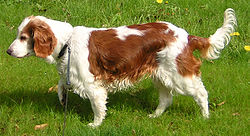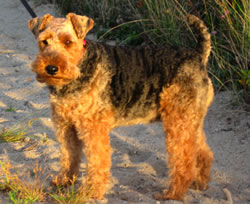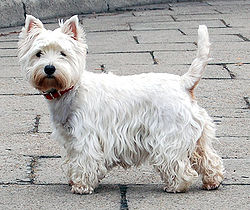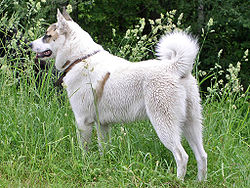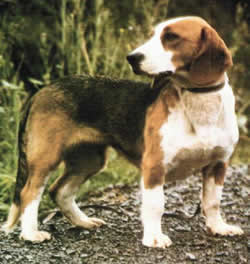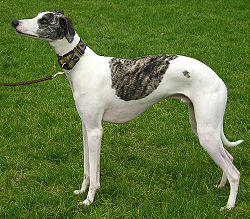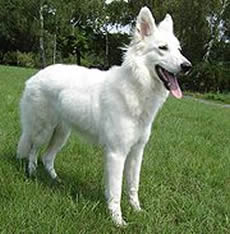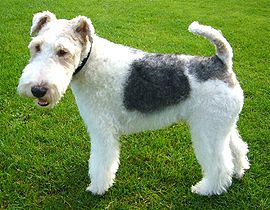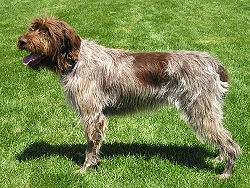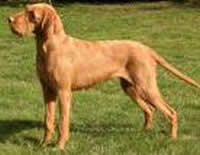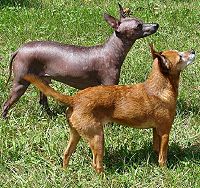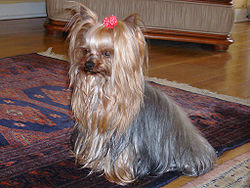Dog Hybrids
A hybrid dog - often called a crossbred dog, designer dog, or boutique dog - is a dog produced by the intentional breeding of two or more different recognized dog breeds. These intentional crossbred dogs differ from dogs referred to as "mixed breed", or dogs which are literal mixes of breeds, sometimes without known origin. Designer dogs are becoming quite popular, such as the Labradoodle and the Jack-A-Bee.
In the late 20th century, breeders began to cross purebred poodles with other purebred breeds in order to obtain a dog with the poodles' hypoallergenic coat, along with various desirable characteristics from other breeds. Breeders sometimes use hybridization in an attempt to reduce the incidence of certain hereditary problems found in the purebred breeds, while retaining their more appealing traits.
The best way to determine the traits of a crossbred dog is to look at the traits of each of the contributing breeds to the hybrid. With cross breeding, the temperaments of each individual hybrid mix can vary greatly, even within the same litter. In choosing a boutique dog, be sure you are willing to accept the traits of each of the contributing breeds.
To see a description and picture of each of the dog breeds comprising the hybrid, click on the name of the breed listing under the hybrid in the list on the left-hand side of the page.
Affenpinscher
Size: Small
Other Names: Monkey Dog
Country of Origin: Germany
Accreditation:
AKC: Toy
CKC: Toys
UKC: Companion Dog
The Affenpinscher is a terrier–like toy breed of dog, with a monkey–like expression. His coat is shaggier over the head and shoulders forming a mane, with a shorter coat over the back and hind quarters.
Color(s):
Black, silver, gray, black and tan, and red (brownish–red to orangey–tan)
Description:
The Affenpinscher was originally used to control rodents. He earned the nickname of "Monkey Dog" due to his bushy eyebrows and whiskers, short and pointed nose, and his keen, mischievous expression.
Temperament:
Affenpinschers are active, adventurous, curious, and stubborn. They are also fun–loving and playful. The breed is confident, lively, affectionate towards family members, and is also very protective of them. This loyal little dog enjoys being with its family. Affenpinschers are somewhat territorial when it comes to their toys and food, so they are not recommended for very small children. This dog is mostly quiet but can become very excited if attacked or threatened and shows no fear toward any aggressor. It is best suited for a family who likes a show and has a sense of humor. They often get along with other dogs and pets.
Training:
Affenpinschers need consistent, firm training. Some can be difficult to housebreak. The training should be varied, as the dog can easily become bored.
Care & Grooming:
Affenpinschers need to be groomed two to three times a week. Frequent grooming reduces the amount of loose fur in the environment.
Health:
The Affenpinscher is prone to hip dysplasia. As with many small breeds of dog they are prone to collapsed trachea, which is best avoided by walking the dog with a harness instead of a collar. Cataracts are occasionally reported.
Lifespan:
Median 11½ years
Afghan Hound
Size: Large
Other Names: Afghan, Baluchi Hound, Sage Baluchi, Tazi, Ogar Afghan, Balkh Hound, Barutzy Hound, Shalgar Hound, Kabul Hound, Galanday Hound
Country of Origin: Afghanistan
Accreditation:
AKC: Hound
CKC: Hounds
UKC: Sighthound & Pariah
The Afghan Hound is tall, and is distinguished by his thick, fine, silky coat and his tail with a ring curl at the end. Some Afghans, called "mandarins", have facial hair that looks like a Manchu moustache, The long topknot and the shorter–haired saddle on the back in the mature dog, are distinctive features of the Afghan Hound coat. The high hipbones and unique small ring on the end of the tail are also characteristics of the breed.
Height:
Male: 24–29 inches
Weight:
Male: 45–60 pounds
Coat:
Long, silky, thick, very fine–textured
Description:
The Afghan Hound is a very old sighthound dog breed, from the cold mountains of Afghanistan, where it was originally used to hunt hares and gazelles by coursing them. The Afghan Hound was also bred to fight lions.
Temperament:
The Afghan Hound is a sweet, affectionate, loyal dog, and can be quite sensitive. He is both elegant and courageous, and can be suspicious of strangers without aggression. He is happy and clownish when playing. He enjoys playing with children, but his large size may make him unsuitable to play with small children. Children should be taught to be kind, and not to play roughly with the Afghan Hound.
Training:
The breed has a reputation among dog trainers of having a relatively slow "obedience intelligence", as defined by author Stanley Coren. The Afghan Hound has many cat–like tendencies, and is not slavish in his obedience, as are some other breeds.
Care & Grooming:
The Afghan Hound requires bathing at least weekly, and coat brushing immediately after his bath. When you brush the coat when it is dry, the coat can be damaged, which can make it mat easier. His ears must be kept clean. The Afghan Hound requires regular, daily exercise, even though he appears to be a happy couch potato.
Africanis
Size:
Other Names:
Country of Origin:
Accreditation:
AKC:
CKC:
UKC:
Aidi
Size: Large
Other Names: Atlas Mountain Dog, Atlas Shepherd Dog, Chien de l'Atlas
Country of Origin: Morocco
Accreditation:
AKC:
CKC:
UKC: Guardian Dog
The Aidi's lean, muscular body is protected by a coarse, thick, weather–resistant coat with a heavy plumed tail. The head is bear–like and in proportion to the rest of the body. The breed has a tapered muzzle with a black or brown nose that usually matches the coat. Their jaws are strong with tight black or brown lips. The medium–sized ears are tipped forward and drop slightly. The eyes are medium, with a dark color and dark rims.
Color(s):
White, black, black and white, pale red, and tawny
Coat:
Coarse, thick, weather–resistant
Description:
The Aidi us used as a flock guard, protecting herds of sheep and goats. It also possesses hunting capabilities and good scenting ability. In its native Morocco, it is often paired in hunting with the Sloughi, which chases down prey that the Aidi has located by scent. A courageous dog, the Aidi lived and worked in the Atlas Mountains of Morocco, Libya, and Algeria protecting his owner and property from wildcats, other predators, and strangers. Although the Aidi has been used primarily as a working dog, he has become more common as a house dog in the country. This breed also makes a good urban pet if he is given tasks and exercise enough to keep him satisfied and happy.
Temperament:
The Aidi is energetic, highly protective, and is said to make an outstanding watchdog. It is a powerful dog that is also agile, alert, and ready for action.
Training:
As a sensitive breed, the dog should receive kind yet firm training.
Airedale Terrier
Size: Medium to Large
Other Names: Airedale, Waterside Terrier, Bingley Terrier, King of Terriers
Country of Origin: England
Accreditation:
AKC: Terrier
CKC: Terriers
UKC: Terrier
The Airedale's coat color is usually a black saddle, with a tan head, ears and legs; or a dark grizzle saddle (black with gray and white). He has a fluffy tail that is naturally long. His eyes are dark in color, small, and not prominent, and show terrier expression, keenness and intelligence.
Height:
Male: 23–24 inches: Female: slightly smaller
Weight:
Male: 45–70 pounds; Female: slightly lighter
Coat:
Medium length, with a harsh topcoat (hard, dense, and wiry) and a soft undercoat
Description:
The Airedale Terrier has been called the Waterside Terrier because it was bred originally to hunt otters in and around the valleys of the River Aire, which runs through Airedale, England. His nickname, "King of Terriers" was given when he was the largest of the terrier breeds, prior to the creation of the Black Russian Terrier by the KGB in Russia. The Airedale Terrier is the largest of the British terriers, and has been used a a police dog in England. The Airedale can be used as a working dog and also as a hunter.
Temperament:
The Airedale Terrier is very intelligent, independent, strong–minded, stoic, and can be stubborn. They are also very loving, always in the middle of the family activities, and are a reliable and protective family pet. The Airedale is a dog with a great sense of humor. Airedale Terriers are an alert and energetic breed. They are not aggressive, but they are fearless. Airedales exhibit some herding characteristics, and have a propensity to chase animals. Strong–willed, with the tenacity commonly seen in terriers, the Airedale is a formidable opponent.
Training:
Airedales can often be difficult to train. Airedales benefit from consistent reinforcement. Although, being intelligent, Airedales learn quickly, they get bored with repetition, and may attempt to terminate a training session when being presented with skills they have already attained. Varying the training, and taking play breaks, will help to alleviate this behavior. As with most dogs, Airedales require socialization with other dogs early. A working Airedale that is not well trained will agitate and annoy livestock.
Care & Grooming:
The Airedale Terrier is a very energetic breed, and needs plenty of exercise. Airedales are often groomed by stripping (a small serrated edged knife is used to pull out loose hair from the dog's coat). Hand stripping can assist with some forms of skin irritations, as it removes the dead hair follicles and stimulates new growth. Clipping the coat cuts the dead hair, leaving dead roots within the hair follicles, and it is these dead roots which can cause skin irritations.
Akbash Dog
Size: Large to Extra-Large
Other Names:
Country of Origin: Turkey
Accreditation:
AKC:
CKC:
UKC: Guardian Dog
The Akbash is a large dog, and leaner than other Turkish guard dog breeds. He has a distinct white coat, long legs, and a feathered curved tail. He possesses characteristics of both Mastiffs and sighthounds.
Height:
Male: 30–34 inches; Female: 28–32 inches
Weight:
Male: 120 pounds average; Female: 90 pounds average
Coat:
Double coat; longer, coarse, outer guard hairs and dense undercoat of soft, fine hair
Description:
The Akbash Dog is native to western Turkey in the region known as the Akbas, and it is primarily used as a livestock guardian dog. The name comes from the Turkish word meaning white head. While often referred to as a sheep dog, the Akbash does not herd. Instead, it is designed to live with the flock, and act as a guardian.
Temperament:
The Akbash is not shy, and can be a good companion dog. These dogs are known for their intelligence, bravery, independence and loyalty. Although the breed is not hostile by nature, when used as a guard dog, the Akbash is not personable with humans. Akbash are a relatively low–energy breed. Because it is in their nature to lie with the flocks they guard most of the day, they do not possess tremendous endurance or energy. However, they cannot be confined to small spaces.
Training:
The Akbash has been bred to be independent, and dogs of this breed might think they know better than their owners during training. If trained appropriately, the Akbash can be personable with any creature.
Care & Grooming:
Because the Akbash is very much a working breed, they are happiest when given a task to complete.
Akita
Size: Large to Extra-Large
Other Names: American Akita, Japanese Akita, Akita Inu, Japanese Akita Inu, Great Japanese Dog (obsolete)
Country of Origin: Japan
Accreditation:
AKC: Working
CKC: Working
UKC: Northern Breed
The Akita is a large dog with heavy bones, and a large, bear–like head, with erect, triangular ears set at a slight angle following the arch of the neck. The eyes of the Akita are small, dark, deeply set and triangular in shape. Akitas have thick double coats, and tight, well knuckled cat feet. Their tails are carried over the top of the back in a graceful sweep down the loin, into a gentle curl, or into a double curl. The American Akita is generally heavier boned and larger, with a more bear–like head, whereas the Japanese Akita tends to be lighter and more finely featured. The Akita's double, thick coat makes him waterproof, and well–equipped for the fierce winters in northern Japan.
Height:
Male: 24–28 inches; Female: 24–26 inches
Weight:
Male: 75–130 pounds; Female: 70–100 pounds
Color(s):
American Akitas come in all colors, including pinto, and may have black masks. Japanese Akitas come in red, fawn, sesame, white, or brindle.
Coat:
Coarse, straight, with soft undercoat
Description:
The Akita comes from the mountainous northern regions of Japan. In most countries, with the notable exceptions being the United States and Canada, the American Akita is considered to be a separate breed from the Japanese Akita. In the US and Canada, both the American Akita and the Japanese Akita (Akita Inu) are considered a single breed with differences in type rather than two separate breeds.
Temperament:
The Akita is extraordinarily affectionate and loyal with family and friends, territorial about his property, and can be reserved with strangers. Akitas are affectionate to their owners and are excellent watchdogs, although they do not bark unless something is amiss. The Akita is feline in his actions; it is not unusual for an Akita to clean his face after eating, to preen his kennel mate, and to be fastidious in the house. Akitas are very adaptable and can live happily in apartments provided they are given enough exercise. Akitas have been documented to be gentle with young children and babies. Like other dogs bred for hunting, Akitas can show aggressive tendencies toward small animals, and must be taught to respect other household pets. Akitas can also be dominant or aggressive towards other dogs, especially unfamiliar ones, and particularly those of the same sex. For this reason, Akitas are not generally well–suited for off–lead dog parks.
Training:
Because it is a large, powerful dog, the Akita is certainly not a breed for everyone. Their background gives them a strong independent streak that can make Akitas unreliable off–lead and more challenging in obedience activities. The Akita thrives on the love and respect of its master and, with constant reinforcement training and a little creativity, can be a very good worker.
Care & Grooming:
Due to the thickness of his coat, the Akita requires daily grooming. When an Akita requires general anesthesia, only the bare minimum dose sufficient to produce anesthesia should be used. This is due to the fact that Akitas have an unusually small heart for their size. A number of Akitas have died during surgery, due to the use of a normal dose of general anesthetic for a dog of that size, a dose which ultimately proved excessive and fatal to the Akita.
Alaskan Klee Kai
Size: Small to Medium
Other Names: Klee Kai, AKK
Country of Origin: United States
Accreditation:
AKC:
CKC:
UKC: Northern Breed
The Alaskan Klee Kai is a Medium that looks like a smaller version of the Alaskan Husky. He has a wedge–shaped head, with a striking masked face, prick ears, and a double coat. His body is just slightly longer than his height. The furry tail curls over his back or to either side when the dog is alert or moving.
Height:
Toy: < 13 inches; Miniature: 13–15 inches; Standard: > 15 inches
Weight:
Toy: < 10 pounds; Miniature: 10+–15 pounds; Standard: 15+–25 pounds
Color(s):
Black and white, contrasted or diluted; several variations of gray and white, red (which appears as a cinnamon or dark auburn, and is rare) and white, solid white, and tricolor
Coat:
Double coat; undercoat is soft and dense; outer coat guard hairs are straight and never harsh nor extremely soft
Description:
The Alaskan Klee Kai is a northern breed of dog. The breed was developed with Siberian and Alaskan Huskies using Schipperke and American Eskimo Dog to bring down the size without dwarfism.
Temperament:
The Alaskan Klee Kai is a highly intelligent, very curious, active, quick and agile little dog that quickly can become an integral part of any family. AKK are not likely to tolerate being mistreated (poked at, pinched, bullied) by children and may respond by nipping them. The Klee Kai is standoffish and suspicious of strangers, and consequently make extremely good watch dogs. They are moderately active. The Alaskan Klee Kai have a high prey drive, which means unless they are properly introduced and raised with smaller furry or feathered animals such as rabbits, hamsters, cats, birds, they will hunt and kill them.
Training:
Because of their intelligence, and their high drive to please their owners, the Klee Kai do well in obedience classes.
Care & Grooming:
The Alaskan Klee Kai is extremely clean, and relatively easy to care for. Most don't like wet feet, and will spend hours daily grooming themselves, and will seldom require a bath. They do not have a "doggy odor", nor do they have "dog breath". Other than the periods of when the Klee Kai lose their coat (twice a year), he is very self–sufficient. The normal preventative measures should be taken, such as trimming of nails, and brushing. During his shedding periods, it is good to groom the dog on a regular basis. AKK do well with many types of activities, such as agility training.
Alaskan Malamute
Size: Large
Other Names: Malamute, Mal
Country of Origin: United States (Alaska)
Accreditation:
AKC: Working
CKC: Working
UKC: Northern Breed
The Alaskan Malamute is a large breed, often mistaken for a Siberian Husky. The physical build of the Malamute is compact (slightly longer than tall) with heavy bone. The coat is a dense double northern dog coat, somewhat harsher than that of the Siberian Husky. Eyes are almond–shaped and are always various shades of brown, from dark to light, honey or hazel brown. Blue eyes are an indication of mixed breeding. The malamute has a plume like tail that is well furred and hangs just over the back like a "plume". Some have a corkscrew tail.
Color(s):
Various shades of grey and white, sable and white, black and white, red and white, or pure white
Coat:
Harsh and thick, with plush undercoat
Description:
The Alaskan Malamute was originally bred for use as an Alaskan sled dog. The Malamute's well–furred tail aids in keeping him warm when he curls up in the snow. He wraps the tail around his nose and face, which helps protect him against harsh weather, such as blowing snow. While a few Malamutes are still in use as sled dogs for personal travel, hauling freight, or helping move heavy objects, some are used for the recreational pursuit of sledding also known as mushing, also skijoring, bikejoring, and canicross. Many are kept as family pets or show dogs. While Malamutes have been successfully raised in places such as Arizona, their dense coats generally make them unsuited for hot climates.
Temperament:
Malamutes are quite fond of people, including children. However, like all large and powerful dogs, care should be used with the Malamute around children, until you are completely familiar with your dog's behavior. Due to the Malamute's affectionate nature toward people, he does not make a good watch or guard dog. They are nimble around furniture and smaller items, making them ideal house dogs. The majority of Malamutes are also fairly quiet dogs, seldom barking. When he does vocalize, they often "talk" by vocalizing a "woo woo" sound. The vocalizations of Chewbacca in the Star War films are based upon a Malamute. He may also howl, sounding just like a wolf. In some instances, the Malamute may be friendly with smaller dogs, but not always. Monitor your Malamute around other household pets until you have become acquainted with his behavior. And, keep in mind that just because your Malamute is comfortable with your other pets, this does not mean it will be comfortable around other animals it encounters.
Training:
As many an owner has found out, the pulling power of a Malamute is tremendous. The Malamute is powerful, with a deep chest and large head. Training should be achieved so your Malamute follows your commands.
Care & Grooming:
When the weather gets hot, like any other breed of dog, the malamute needs plenty of water and shade. A wading pool in the backyard will also help the Malamute keep cool in the summer.
Alentejo Mastiff
Size: Extra-Large
Other Names: Portuguese Mastiff, Mutt of Alentejo, Rafeiro do Alentejo
Country of Origin: Portugal
Accreditation:
AKC: FSS
CKC:
UKC: Guardian Dog
Color(s):
Black, yellow, and fawn (a light brown color) with white markings; or white with other colors; can be streaked or brindled or dappled
Coat:
Short to medium fur, the same length all over
Alpine Dachsbracke
Size: Medium
Other Names: Alpenländische Dachsbracke
Country of Origin: Austria
Accreditation:
AKC:
CKC:
UKC: Scenthound
This small dog has a slight resemblance to a Dachshund, with legs just a little longer than that of a dachshunds, and a long body. The coat is dense, short but smooth except for the tail and neck. The round eyes have a lively expression.
Color(s):
Red, with or without black; lack and tan; brown
Description:
The Alpine Dachsbracke is a small breed of dog, bred to track wounded deer as well as boar, hare, and fox. It is highly efficient at following a trail even after it has gone cold. Used effectively to hunt wounded deer, this breed could work even in harsh terrain and high altitude.
Temperament:
Although it is primarily a hunter, and therefore is kept mostly by hunters, the Alpine Dachsbracke makes a good companion. He has a fearless, friendly, and intelligent personality. Most Alpine Dachsbrackes are excellent with children and good with dogs and other pets, though they may exhibit a strong prey drive typical of many scent dogs.
Ambullneo Mastiff
Size: Extra-Large
Other Names:
Country of Origin: United States
Accreditation:
AKC:
CKC:
UKC:
The Ambullneo Mastiff is a very large, heavily muscled dog, with a deep chest. He has a large head, powerful jaws, and strong, sharp, deep-set teeth. He has sturdy legs, and can spring into action quickly to overtake and apprehend an adversary. The Ambullneo Mastiff has natural drop ears, which may or may not be cropped. His tail is straight, thick at the base, and tapers toward the tip. His nose is wide with large nostrils.
Height:
Male: 24-29 inches; Female: 21-25 inches
Weight:
Male: 130-175 pounds; Female: 115-135 pounds
Color(s):
Varies from reverse gold brindle to solid black, ranging from a light fawn through darker colors such as black, blue, brown, and gray. White markings may or may not be present.&nsbp; Eye color ranges from gold to dark brown, and is dependent on coat color.
Description:
The Ambullneo Mastiff is intelligent, loyal, and strong. While you can quickly see he is a dog of tremendous strength, he is also both agile and graceful for his size. He has extraordinary hearing and great night vision, and is very observant and acutely aware of changes in his surroundings. The breed was bred in California, USA. It was created from a combination of English Mastiff, Neapolitan Mastiff, Game Bred Pit Bull, Bull Mastiff, American Bulldog, American Pit Bull.&nsbp; The name "Ambullneo Mastiff" was created by the breeder, The "Am" in Am-Bull-Neo is for American Bulldog and the American Pit Bull Terrier, as well as to let its American-made origins be known. The "Bull" is for Bulldog in the breed, to include the bulldogs in the original Bull Mastiff. The "Neo" is for the Neapolitan Mastiff, and the second word "Mastiff" is for the English Mastiff and the Mastiff in the two Bull Mastiffs used, as well as to let its large size be known.
Temperament:
The Ambullneo Mastiff is gentle with childen and pets, yet is devoted to protecting his family, and their property. He is highly intelligent, and likes to please his family. When an Ambullneo Mastiffs, it is worth investigating, as they do not bark lightly.
Care & Grooming:
The Ambullneo Mastiff requires sufficient exercise to stay healthy and happy.
American Bulldog
Size: Large to Extra-Large
Other Names: Old Country Bulldog
Country of Origin: United States
Accreditation:
AKC:
CKC:
UKC: Guardian Dog
The American Bulldog is a stocky and well built, strong–looking dog. Its coat is short and either white, white with patches, black and white brindle, fawn and white, fawn and white brindle or a combination of all of these and some of them may even have what is called a blue patch. The American Bulldog is massive in comparison to the French Bulldog, and although similar in appearance to the English Bulldog, it has not been bred down for the purpose of being a lap dog.
Height:
Male: 20–28 inches
Weight:
Male: 75–125 pounds
Color(s):
Combinations of solid or degrees of white; all shades of brindle, brown, red, or tan
Description:
There are generally considered to be two types of American Bulldog, the Classic (Johnson, Bully) type and the Standard (Scott, Performance) type. American Bulldogs are enjoying a healthy increase in popularity, either as a working dog or as a family pet. All over the world, they are used variously as "hog dogs" (catching escaped pigs or hunting razorbacks), as cattle drovers and as working K–9s. American Bulldogs also successfully compete in several dog sports such as Schutzhund, French Ring street protection sport, Iron Dog competition and weight pulling.
Temperament:
American bulldogs can make great family dogs. An American Bulldog is typically a happy, friendly, and assertive dog that is at ease with its family and fine with outsiders with whom the dog is acquainted. They bond strongly with their master and family. If properly socialized, this breed loves children and does well with them. They are not always well behaved towards cats and smaller pets, but correct socialization at an early age can greatly increase the chances of them accepting these animals.
Training:
Because of strong guarding instincts and a somewhat dominant attitude, the American Bulldog should be socialized and obedience trained early to expose them to other dogs and people, and to ensure that they can be controlled around company as they mature.
Care & Grooming:
American Bulldogs are working dogs with high–energy drive, and so do best in a home with a large backyard and plenty of exercise.
American Eskimo Dog
Size: Small to Medium
Other Names: Eskimo Dog, Eskie, American Spitz, American Deutscher Spitz
Country of Origin: United States (Ancestry: Germany)
Accreditation:
AKC: Non-Sporting
CKC: Non-Sporting
UKC: Northern Breed
The American Eskimo Dog has an overall square appearance, with a wedge–shaped head with erect triangular ears, and black nose, lips, and eye rims. He has a thick, double coat, and his chest, neck, and forepart of his shoulders are typically covered with a lion–like mane. His tail is richly plumed and carried over his back.
Height:
Toy: 9–13 inches; Miniature: 12–16 inches; Standard: 16–21 inches
Weight:
Toy: 6–10 pounds; Miniature: 10–20 pounds; Standard: 18–35 pounds
Color(s):
Mostly pure white; sometimes white with biscuit or cream, or cream
Coat:
Thick, profuse white standoff double–coat
Description:
The American Eskimo Dog is derived almost completely from the various German Spitz breeds, mainly the German Spitz crossed with Japanese Spitz and Keeshonden in America. The Eskie is a breed of companion dog and semi–sled dog originating in the USA. In addition to serving as a companion, it has been used as a watchdog, sled dog, and also achieved a high degree of popularity in the 1930s and 1940s US as a circus performer even as early as 1917 at the Cooper Brother's Railroad Circus. One of many American Eskimo Dogs to walk a tightrope was an American Eskimo by the name of Stout's Pal Pierre in the Barnum " Bailey Circus. "PR" Stout's Pal Pierre was from a long line of American Eskimos used in Barnum and Bailey's Circus acts. Pierre's grandfather was the first known dog in the world to walk a tight rope. The breed became popular as circuses would sell the puppies during their travels across the nation. Although Eskies prefer cold weather, they can live in hotter climates as well.
Temperament:
American Eskimo Dogs were bred to be companion dogs, and thrive on being a part of a human family. They are generally highly intelligent, trainable, and moderately independent. At home, they make excellent watchdogs, barking to announce the presence of strangers. The Eskie can be protective of its home and family, but in general they will not threaten to attack or bite a person unless provoked. As with all dogs, temperament is partially inherited and partially trained. Some dogs are prone to excessive barking and separation anxiety. It is important to research the dog's pedigree as their temperament may vary due to inheritance. This breed is not a fast–maturing one, and Eskies can behave more like puppies than like adults for up to two years, when they finally start to mature and grow their adult coats.
Training:
American Eskimo Dogs are also a very intelligent dog and need to be stimulated. When their intelligence is not stimulated or they are ignored, they can develop behavior issues. Owners can avoid this problem by socializing their Eskie through obedience training or participating in dog sports, such as dog agility, flyball, and dancing.
Care & Grooming:
Eskies have a long, dense coat and need regular grooming, which consists of brushing them once a week, or more often, if necessary. Many Eskie owners use an undercoat rake, a tool available at most pet stores, for grooming. Eskies should not be shaved, as the long fur helps to maintain the temperature of their skin. Eskies typically need to be bathed only every two or three months, unless they soil their coat with large amounts of dirt or substances with strong odors. Eskies are a very clean breed and constantly groom themselves.
American Foxhound
Size: Large
Other Names: Foxhound, Fox Hound
Country of Origin: United States
Accreditation:
AKC: Hound
CKC: Hounds
UKC: Scenthound
The legs of a Foxhound are very long and straight–boned. The foxhound's chest is rather narrow. It has a long muzzle, and a large, domed skull. The ears are wide and low–set. The eyes are hazel or brown, and are large and wide–set. The coat is short and harsh. Overall, they are very similar to the Beagle, only standing higher and being larger. Their coats come in four colors: red, tri, black and tan, and blue.
Height:
Male: 26–29 inches; Female: 25–28 inches
Weight:
Male: 65–75 pounds; Female: 40–65 pounds
Color(s):
Red, tricolor, black and tan, blue
Description:
The American Foxhound is a breed of dog that is cousin to the English Foxhound. They are scent hounds, bred to hunt foxes by scent. Today, there are several different strains of American Foxhound, including Walker, Goodman, Trigg, July and Penn–Marydel. Though the different strains look quite different, they are all recognized as members of the same breed. Most show hounds are Walkers, many of the pack hounds (used with hunting foxes on horseback) are Penn–Marydel and hunters use a variety of strains to suit their hunting style and quarry.
Temperament:
The American Foxhound is sweet, kind, loyal, and very loving at a home. Foxhounds are easy to live with and thrive as members of a family (pack). They get along very well with children, especially small children. As with all dogs, always be watchful when children and animals are interacting, as it is not beyond any animal to bite or claw when they feel they are threatened. Foxhounds are not ideal apartment dogs, and should not be left alone indoors for extended periods of time. Foxhounds do not make good watchdogs, as they will often greet the newcomer affectionately hoping for treats or scratches behind the ears. Foxhounds are not nuisance barkers, but they do have loud, deep voices that carry a great distance. Although most people love the sound, many urban or suburban neighbors do not appreciate the deep barks or melodious howling of a foxhound.
Training:
As with all hounds, the American Foxhound needs careful training, and constant socialization. Training can be challenging, as the Foxhound can be stubborn. He responds well to positive reinforcement. While on the hunt, the Foxhound is a warrior. Once a scent is picked up, he will follow it, often neglecting any commands.
Care & Grooming:
American Foxhounds need ample exercise, such as a fairly long walk, followed by a game of fetch. Bored Foxhounds will find ways to keep themselves entertained, which can be very destructive. Intelligent creatures as they are, many Foxhounds quickly learn to open gates, or scale small fences to go wandering. Because their hunting instinct is strong, they should never be trusted off–lead. Foxhounds are rarely street savvy, and will follow a scent trail into the street where they could get hit by a car. Overfeeding these dogs can easily cause them to gain weight.
American Hairless Terrier
Size: Small
Other Names:
Country of Origin:
Accreditation:
AKC:
CKC:
UKC: Terrier
Additional information coming soon to Pup.com for the American Hairless Terrier!
American Leopard Hound
Size: Medium to Large
Other Names: Leopard Cur
Country of Origin:
Accreditation:
AKC:
CKC:
UKC: Scenthound
Additional information coming soon to Pup.com for the American Leopard Hound!
Weight:
Male: 50–70 pounds; 45–65 pounds
American Squirrel Dog
Size: Small
Other Names:
Country of Origin: United States
Accreditation:
AKC:
CKC:
UKC:
Description:
The American Squirrel Dog is a sturdy, compacy, structurally well-balanced, smooth-coated hunting dog. He is elegant, vigorous, and alert.
American Staffordshire Terrier
Size: Large
Other Names: AmStaff, Pit Bull Terrier, Pit Bull
Country of Origin: United States
Accreditation:
AKC: Terrier
CKC: Terriers
UKC:
The American Staffordshire Terrier is a Medium of square build, giving the impression of great strength, agility, and grace for his size. He is stocky, with a deep and broad chest, and a strong, well–arched neck.
Color(s):
Any solid, partial, or patched color; less–desirable colors are greater than 80% white, black and tan, and liver
Coat:
Thick, shiny hair, short
Description:
Early Bulldog–Terrier crosses were brought to the US with the British and Irish settlers, especially after the Civil War, where they were mainly used as fighting dogs, but also as hunting dogs and farm and guard dogs. The American Staffordshire Terrier is often trained for community service tasks such as pet therapy and Search and Rescue. In places that breed–specific legislation has been passed to ban or restrict the ownership of Pit Bulls and "Pit–Bull–Type" dogs, almost always bans the American Staffordshire Terrier as well. The American Staffordshire Terrier is an offspring and sister breed of the American Pit Bull Terrier.
Special Note: Much confusion still remains in regards to the Pit Bull Terrier, the American Staffordshire Terrier, and the Staffordshire Bull Terrier. The name "Staffordshire Terrier" was adopted by some Pit Bull Terrier owners and was recognized by the American Kennel Club in 1936. Later, the word "American" was added to reduce confusion with its smaller British cousin, the Staffordshire Bull Terrier. Not all breeders, however, agreed with the standard adopted by the AKC, and continued to use the name American Pit Bull Terrier for their lines. The American Staffordshire Terrier and the American Pit Bull Terrier are considered to be the same breed in England, although they are considered separate breeds in the United States.
Temperament:
The AmStaff is courageous, tenacious, friendly, extremely attentive, and extraordinarily devoted. They are natural family dogs, as they are bred to be extremely friendly towards people. If properly introduced in his puppy years, the American Staffordshire Terrier can be good with children, and can get along with other dogs, cats, and any other animal.
Training:
The American Staffordshire Terrier is highly responsive during training, and also learns quickly from his human's subtle behaviors. Positive reinforcement training should begin at 8 to 10 weeks of age. American Staffordshire Terriers can be aggressive if not socialized properly. It is a bad sign if an AmStaff displays overly protective and/or aggressive behavior, especially if accompanied by fearlessness.
Care & Grooming:
The American Staffordshire Terrier is a companion dog, and requires a very large amount of time for rough, or hard–working play, such as weight pulling and agility training. He likes to run with a proper harness, or pull a skateboard or roller blading kid.
American Water Spaniel
Size: Medium
Other Names:
Country of Origin:
Accreditation:
AKC: Sporting
CKC: Sporting
UKC: Gun Dog
Additional information coming soon to Pup.com for the American Water Spaniel!
Anatolian Shepherd Dog
Size: Extra-Large
Other Names:
Country of Origin:
Accreditation:
AKC: Working
CKC: Working
UKC: Guardian Dog
Additional information coming soon to Pup.com for the Anatolian Shepherd Dog!
Appenzell Cattle Dog
Size: Large
Other Names: Appenzeller Sennenhund, Appenzeller
Country of Origin: Switzerland
Accreditation:
AKC: FSS
CKC:
UKC: Guardian Dog
The Appenzell Cattle Dog is a Medium who is muscular, but not massive.
Color(s):
Always tri–colored, with a black ground coat and rich rust and clear white markings
Coat:
Double; short, smooth, considerably tight, thick and glossy
Description:
The Appenzell Cattle Dog is one of four Sennenhunds that were developed by the crossing of the Roman Mastiffs with the local Swiss working dogs during the time of the Roman invasion and conquest of Europe. The other three breeds are the Greater Swiss Mountain Dog, the Bernese Mountain Dog, and the Entlebucher. The original purpose for the Appenzell Cattle Dog was as a flock guardian, a draft dog, and general farm dog. He is still used for these purposes, but also excels in obedience competitions and Schutzhund.
Temperament:
The Appenzell Cattle Dog is lively and high–spirited, and intelligent. He has a friendly disposition, and makes a wonderful pet for the experienced large–breed family. He is a reliable worker and, due to his natural suspicion of strangers, he is an excellent watchdog.
Training:
The Appenzell Cattle Dog is easily trained.
Care & Grooming:
The Appenzell Cattle Dog is a herding dog and requires something to do. In a farm environment, he might nip at the sheep or cattle to herd them. Without sufficient exercise, he could become restless, so plenty of toys, space, exercise, and attention should be provided.
Ariege Hound
Size: Large
Other Names: Ariegeois
Country of Origin: France
Accreditation:
AKC:
CKC:
UKC: Scenthound
Additional information coming soon to Pup.com for the Ariege Hound!
Ariege Pointer
Size: Medium
Other Names: Ariege Pointing Dog, Braque de L'Ariege, Braque de Toulouse, Braque du Midi
Country of Origin: France
Accreditation:
AKC:
CKC:
UKC: Gun Dog
Additional information coming soon to Pup.com for the Ariege Pointer!
Artois Hound
Size: Medium
Other Names: Chien d'Artois, Picard, Briquet
Country of Origin: France
Accreditation:
AKC:
CKC:
UKC: Scenthound
Additional information coming soon to Pup.com for the Artois Hound!
Australian Cattle Dog
Size: Medium
Other Names: Queensland Heeler, Blue Heeler, Red Heeler
Country of Origin: Australia
Accreditation:
AKC: Herding
CKC: Herding
UKC: Herding Dog
The Australian Cattle Dog is a medium–sized, short–coated, well–muscled, compact dog, with a dense coat of coarse, rather oily hair with a slight ruff and fine, almost woolly, winter undercoat. He has a naturally long tail, generally carried low, with a slight white tip. The distinctive coloration of the Australian Cattle Dog is the result of white and gray hairs closely interspersed with red or black hairs, exhibiting as two primary coat colors of blue and red. Australian Cattle Dogs also display some patches of solid or near–solid color, most notably a mask over one or both eyes. The mask is one of the most distinctive features of the Australian Cattle Dog.
Height:
Male: 18–20 inches; Female: 17–19 inches
Color(s):
Blue, black, red, ginger
Coat:
Outer coarse dense coat, with woolly undercoat
Description:
The Australian Cattle Dog is a breed of herding dog developed in Australia for controlling cattle. He has a lot of energy, intelligence and an independent streak.
Temperament:
The Australian Cattle Dog is naturally cautious, and grow more so as he ages. His cautious nature towards strangers makes him a perfect guard dog, when trained for this task. The Australian Cattle Dog is gregarious to other dogs with whom it is familiar. Due to his plucky nature, a few scuffles and bites may occur during the establishing of a pecking order. He will usually resort to aggressiveness towards other, unknown dogs, when put in a situation where he feels threatened and/or uncomfortable.
Training:
Some Australian Cattle Dogs find repetitive training frustrating and dull, so owners should aim to make training sessions varied and more exciting in order to keep their dog interested. As with many breeds, frequent brief training sessions are more effective than infrequent long training sessions. When there is more than one dog in the house, it is important for an owner to quickly establish a hierarchy in which they are the Australian Cattle Dog's pack leader; otherwise, the young dog may bond to a senior dog, rather than to its owner. Cattle Dogs drive cattle by nipping at their heels or tails, and they have also been known to herd other animals. To relieve the urge to nip, the Australian Cattle Dog can be encouraged to pick up and chew a toy or stick that is thrown for them. If it is to last, a toy left with the Australian Cattle Dog needs to be extremely robust.
Care & Grooming:
Like many herding dogs, Cattle Dogs have high energy levels and active minds. They need plenty of exercise and a job to do; so non–working dogs need to participate in dog sports, learning tricks, or other activities that engage their body and mind. Cattle Dogs who do not receive the appropriate exercise and entertainment will invent their own, often destructive, activities. Australian Cattle Dogs are expert Frisbee catchers, and with just a little work, they can master this activity and enjoy it for a lifetime.
Australian Kelpie
Size: Medium
Other Names: Kelpie, Barb
Country of Origin: Australia
Accreditation:
AKC:
CKC: Herding
UKC: Herding Dog
Australian Kelpies are Mediums and come in a variety of colors. The variety of coloration and coat types puts the Kelpie in a select group, as it is not possible to look at an unidentified dog and classify it as a Kelpie. The breed has been separated into two distinct varieties: the Show Kelpie and the Working Kelpie. The Show Kelpie is seen at conformation dog shows and are selected for appearance rather than mustering instinct. Working Kelpies are bred for working ability over appearance. Show Kelpies are generally heavier and shorter than working Kelpies. The Kelpie's ears are pricked, but a few working Kelpies will have one or both ears flopped. His tail will often following the coat type, and will vary between smooth to bushy.
Height:
Working Kelpie: Male: 21½ inches; Female: 19½ inches
Weight:
Working Kelpie: Male: 31–46 pounds
Color(s):
Working Kelpie: almost every color from black through light tan or cream. Show Kelpie: Black, chocolate, red, smoky blue, fawn, black and tan, red and tan.
Coat:
Working Kelpie: smooth, short, or rough, single coat. Show Kelpie: short double coat.
Description:
The Australian Kelpie is a sheep dog, successful at mustering and droving with little or no command guidance. Kelpies have been exported throughout the world, and are used to muster livestock, primarily sheep, cattle and poultry.
Kelpies will work sheep, cattle, goats, pigs, poultry, and other domestic livestock. The Kelpie's signature move is to jump on the backs of sheep and walk across the tops of the sheep to reach the other side and break up the jam. Working Kelpies have done quite well in dog sports, and Search and Rescue work.
Temperament:
Kelpies are loyal, friendly, intelligent, energetic dogs. Australian Kelpies require a challenging job to be satisfactory companions. They need to be stimulated, as idle and bored dogs become frustrated, noisy, and destructive. A Kelpie is not aggressive towards people, so cannot be considered a guard dog. However, he will bark when alerted.
Training:
Working Kelpies may nip when working stock and should be taught early not to do so to humans.
Care & Grooming:
For the show–bred Kelpie, walks and socialization may be sufficient to keep him happy. A working–bred Kelpie must have a job to do, and plenty of exercise and mental stimulation, to remain healthy and companionable.
Australian Shepherd
Size: Medium to Large
Other Names: Aussie Shepherd
Country of Origin: United States
Accreditation:
AKC: Herding
CKC: Herding
UKC: Herding Dog
The Australian Shepherd is a Medium, with medium bone structure, and slightly longer than he is tall. His appearance demonstrates strength and stamina, combined with unusual agility, and with well–defined masculinity or femininity. His muzzle tapers slightly to a round tip, and his almond–shaped eyes are brown, blue, amber, or any variation of combination including flecks and marbling. He may have two different colored eyes, or have bicolored or "split eyes", such as half–brown and half–blue. His triangular–shaped ears are set high at the side of his head, and are slightly rounded at the tip. Some Aussies are born with naturally short bobbed tails, others with full long tails, and others with natural partial bobs, where the tail is mid–length and appears stubby.
Height:
Male: 20–23 inches; Female: 18–21 inches
Weight:
Male: 55–70 pounds; Female: 35–55 pounds
Color(s):
Black, red (sometimes called liver), blue merle (marbled black and gray), and red merle (marbled red and silver or buff); with or without copper points and/or white markings in various combinations on the face, chest, and legs; a black or red dog with copper and white trim is called tricolor or tri, a black or red dog with white trim but no copper is called bicolor or bi
Coat:
Double; moderate length and coarseness; medium texture, straight to slightly wavy; weather resistant; moderate mane and frill; quantity of undercoat varies with climate
Description:
The Australian Shepherd is a breed of herding dog that was developed on ranches in the Western United States. Despite its name, the breed did not in fact originate in Australia. It is believed he acquired his name because of his association with sheepherders who came to the United States from Australia. Australian Shepherds rose rapidly in popularity with the boom of western riding after World War II. They became known to the general public through rodeos, horse shows, and through Disney movies made for television. For decades, Stockmen have valued Aussies for their inherent versatility and trainability. While they continue to work as stock dogs and compete in herding trials, the breed has earned recognition in other roles due to their trainability and eagerness to please, and are highly regarded for their skills in obedience. They are highly successful Search and Rescue dogs, disaster dogs, detection dogs, guide, service, and therapy dogs. The breed's ability to adapt to a situation and think for himself, makes him an excellent all–around worker.
Temperament:
The Australian Shepherd is an exceptional companion who is intelligent, faithful to his owners, and great with children. An Aussie does best with plenty of human companionship, are is often called "velcro" dog for his strong desire to always be near his owners, and for his tendency to form intense, devoted bonds with select people. He is reserved with strangers, but does not have a tendency to be aggressive. An Aussie will try to herd anything that moves, including people and all other types of animals. He is protective of his property, and is inclined to bark warnings about neighborhood activity, but he is not an obsessive barker. The Aussie is intelligent, learns quickly, and loves to play. This means that a bored, neglected, unexercised Aussie will invent his own games, activities, and jobs, which may include unwanted behaviors.
Training:
The Australian Shepherd is easily trained, and will perform his assigned tasks with great style and enthusiasm. Due to his heritage, he has a tendency to chase or nip at running children, strangers, and small animals, if not properly trained, and these herding behaviors can be frightening to his "herdees".
Care & Grooming:
Like all working breeds, the Aussie has considerable energy and drive and usually needs a job to do. He requires reqular exercise, and enjoys working, whether it is learning and practicing tricks, competing in dog agility, or any other physically and mentally involving activity. He often excels at dog sports such as dog agility, flyball, and frisbee.
Australian Terrier
Size: Small
Other Names:
Country of Origin:
Accreditation:
AKC: Terrier
CKC: Terriers
UKC: Terrier
Additional information coming soon to Pup.com for the Australian Terrier!
Austrian Black and Tan Hound
Size: Medium
Other Names: Austrian Smooth–Haired Hound, Bracke, Osterreichische Glatthaarige, Österreichische Glatthaarige Bracke, Brandlbracke
Country of Origin: Austria
Accreditation:
AKC:
CKC:
UKC: Scenthound
Additional information coming soon to Pup.com for the Austrian Black and Tan Hound!
Austrian Pinscher
Size: Medium
Other Names: Austrian Shorthaired (Short Haired) Pinscher
Country of Origin: Austria
Accreditation:
AKC:
CKC:
UKC: Terrier
Additional information coming soon to Pup.com for the Austrian Pinscher!
Coat:
Short, hard topcoat with undercoat
Auvergne Pointer
Size: Medium
Other Names: Braque d'Auvergne, Bleu d'Auvergne
Country of Origin: France
Accreditation:
AKC:
CKC:
UKC: Gun Dog
Additional information coming soon to Pup.com for the Auvergne Pointer!
Description:
The Auvergne Pointer is a versatile gun dog.
Azawakh
Size: Medium to Large
Other Names: Idi, Hanshee, Oska, Wulo, Taureg Sloughi (formerly)
Country of Origin: "Officially" Mali, but also Burkina Faso, Niger, southern Algeria and throughout the weste
Accreditation:
AKC:
CKC:
UKC: Sighthound & Pariah
The Azawakh is almond–eyed sight hound, lean and graceful, with a short, flat back and long legs. His hips appear higher than the withers. His bone structure shows clearly through the skin and musculature. His muscles lie quite flat. The Azawakh's light, supple, elastic gait is a notable breed characteristic, as is a "bouncy gallop"or, more succinctly, as "boing".
Color(s):
Varies, such as red, blue fawn, grizzle, blue and black, clear sand to dark fawn/brown, brindle
Coat:
Short, almost absent on the belly
Description:
Azawakh were bred to protect livestock. They have high energy, and tremendous endurance. The Azawakh originates from the population of pariah dogs of sub–Saharan Africa, also called bush dogs or senji, and is also closely related to the Sloughi of the Maghreb.
Temperament:
Azawakh are gentle and extremely affectionate. They develop an intense bond with their owners, yet retain their independence. They are attentive, yet aloof; affectionate, yet fierce; refined, yet rugged. Many Azawakh are reserved with strangers, and may prefer not to be touched. They are not inherently toward other dogs, unless they are threatened.. Azawakh are excellent training companions for runners, and are nearly impervious to heat. Many Azawakh detest rain and cold weather. They love to dig holes in the garden. Azawakh are very social creatures, and thrive on companionship of other Azawakh. Azawakh are pack oriented and form complex social hierarchies. They have tremendous memories and are able to recognize each other after long periods of separation. They can often be found sleeping on top of each other for warmth and companionship.
Training:
Azawakh require firm and fair leadership. Lifelong socialization and firm but gentle handling are critical. Well socialized and trained, they can be good with other dogs, cats, children, and strangers.
Care & Grooming:
Azawakh need a high level of exercise, preferable runs in a large enclosed area.
Barbet
Size: Medium to Large
Other Names: French Water Dog
Country of Origin: France
Accreditation:
AKC: FSS
CKC: Sporting
UKC: Gun Dog
Barger Stock Feist
Size:
Other Names:
Country of Origin:
Accreditation:
AKC:
CKC:
UKC:
Basenji
Size: Medium
Other Names: African Bush Dog, African Barkless Dog, Congo Dog, Zande Dog, African Dingo, Egyptian Dingo, Voiceless Dog
Country of Origin: Democratic Republic of the Congo
Accreditation:
AKC: Hound
CKC: Hounds
UKC: Sighthound & Pariah
Basenji are small, elegant-looking, short-haired dogs with erect ears, a tightly curled tail, and a graceful neck. Some people consider their appearance similar to that of a miniature deer. A basenji's forehead is wrinkled, especially when the animal is young. Basenji eyes are typically almond shaped, which gives the dog the appearance of squinting seriously. Basenji are typically a square breed, which means that they are as long as they are tall. The basenji is an athletic dog and is deceptively powerful for its size. They have a graceful, confident gait like a trotting horse, and skim the ground in a "double-suspension gallop", with their characteristic curled tail straightened out for greater balance, when running flat-out at their top speed.
Color(s):
Red and white, black and white, tricolor (black, tan, and white), and brindle (black stripes on a background of red, with white); additional variations, include "trindle" (tricolor with brindle points), and several other colorations such as liver, shaded reds (sables), "capped" tricolors (creeping tan), and piebald marked
Description:
The Basenji is a breed of hunting dog that originated in central Africa. The Basenji produces an unusual yodel-like sound, due to its unusually shaped larynx. This trait also gives the Basenji the nickname "Voiceless Dog." The Basenji has the unique properties of not barking (it makes a low, liquid ululation instead), and cleaning itself like a cat. Basenjis often stand on their hind legs, somewhat like a meerkat, by themselves or leaning on something. This behavior is observed when the dog is curious about something.
Temperament:
The Basenji is alert, affectionate, energetic, and curious. It loves to play and makes a good pet, as long as it is handled regularly from an early age, and the owners are very patient. It is very intelligent. It can be reserved with strangers. The Basenji is somewhat aloof, but can also form strong bonds with people. It should not be trusted with non-dog pets. It is usually patient, but does best with older, considerate children. The Basenji dislikes wet weather.
Training:
While housebreaking a Basenji is easy, Basenjis have the reputation of being very difficult to obedience-train. The Basenji owner should locate obedience classes taught by an instructor who understands how to work with all breeds, including the Basenji. Basenjis respond well to consistency and kind but firm treatment. The trainer must be a stubborn as the dog to achieve results. Basenjis respond well to positive reinforcement, including the careful use of food treats, such as small pieces of cooked chicken gizzards. Some, but not all, Basenjis can be motivated by toys. Advice and help are available from your local dog clubs.
Care & Grooming:
The Basenji is an active dog, and requires exercise. Some Basenji like to climb, and can easily get over chain wire fences.
Basset Hound
Size: Medium to Large
Other Names: Basset
Country of Origin: France
Accreditation:
AKC: Hound
CKC: Hounds
UKC: Scenthound
Basset Hounds are large dogs with short, heavy, powerful legs. Their head is large and well-proportioned. They have long, downward ears and powerful necks, with much loose skin around their heads that forms wrinkles. This hanging skin structure causes the face to occasionally look said, which for many people, adds to the breed’s charm. Their tails are long and tapering and stand upright with a curve. Their feet are massive, very heavy, with tough heavy pads.
Color(s):
Varied; generally tricolor (black, tan, and white), open red and white (red spots on white fur), closed red and shite (a solid red color with white feet and tails), honey and white (honey colored back, light brown spotty nose and legs, light brown tails with white tip), and lemon and white.
Coat:
Smooth, short, hard and shiny. A rough-haired hound is possible.
Description:
The Basset Hound is a short-legged breed of dog of the hound family. They are a cross between the Bloodhound, the Regular Artisien Normand, and the Basset Artisien Normand. They are scent hounds, bred to hunt rabbits by scent. Their sense of smell for tracking is second only to that of the Bloodhound. The name Basset is derived from the French word "bas", meaning low; and "basset" literally meaning "rather low". Their short stature can be deceiving. Bassets are surprisingly long, and can reach things on table tops that dogs of similar heights cannot. Because Bassets are so heavy and have such short legs, they are not able to hold themselves above water for very long, and should never be made to swim. They make great pets.
Training:
Training is a touchy topic when dealing with the Basset Hound breed. Trainers must be persistent with this breed in order to achieve a well-mannered dog, as Bassets have a tendency to listen to their noses instead of verbal commands. While this can lead to stubbornness, it also means they are highly food-motivated (particularly fragrant foods) and tend to respond well to treat-based positive reinforcement methods. Owners need to make the training process lively and entertaining to allow the Basset to learn more efficiently.
Care & Grooming:
If Bassets ears are allowed to dangle on the ground or in food on a daily basis, they are capable of developing chronic and potentially fatal ear diseases. Because of their droopy eyes, the area under the eyeball will collect dirt and become clogged with mucus. It is best to wipe their eyes everyday with a damp cloth. This helps to lessen the build-up of mucus and associated irritation.
Bavarian Mountain Cur
Size:
Other Names:
Country of Origin:
Accreditation:
AKC:
CKC:
UKC:
Additional information coming soon to Pup.com for the Bavarian Mountain Cur!
Bavarian Mountain Hound
Size: Large
Other Names: Bavarian Mountain Scenthound, Bavarian Mountain Scent Hound, Bayrischer Gebirgsschweisshund
Country of Origin: Germany
Accreditation:
AKC:
CKC:
UKC: Scenthound
Additional information coming soon to Pup.com for the Bavarian Mountain Hound!
Beagle
Size: Medium
Other Names: English Beagle
Country of Origin: England
Accreditation:
AKC: Hound
CKC: Hounds
UKC: Scenthound
The Beagle is a small to medium-sized dog, with a muscular body, and a smooth, somewhat domed skull, with a medium-length, square-cut muzzle and a black (or occasionally liver), gumdrop nose. The eyes are large, hazel or brown, with a mild hound-like pleading look. The large ears are long, soft and low-set, and rounded at the tips. The Beagle has a strong, medium-length neck (which is long enough for him to easily bend to the ground to pick up a scent), a broad chest, narrowing to a tapered abdomen and waist, and a short, slightly curved tail tipped with white. The tail does not curl over the back, but is help upright when the dog is active. The front legs are straight and carried under the body, while the rear legs are muscular and well bent at the stifles.
Height:
13-16 inches; "13-Inch" is less than 13 inches; "15-Inch" is 13-15 inches
Color(s):
Although the tricolor (white with large black areas and light brown shading) is the most common, Beagles can occur in any hound color. Tricolored Beagles occur in a number of combinations of shades of black, brown, and white. Two-color varieties always have a white base with areas of tan, lemon, light tan, red, red-orange, brown, liver, dark brown, and black. Ticked or mottled varieties may be either white or black with different colored flecks (ticking). Some tricolor Beagles also have ticking of various colors in their white areas.
Coat:
Medium-length, smooth, hard coat
Description:
Beagles are scent hounds, developed primarily for tracking hare, rabbit, and other game. The Beagle’s white tipped tail, known as the "stern" or "flag", has been selectively bred, as it allows the dog to be easily seen when its head is down following a scent. They have a keen sense of smell and tracking instinct, and are employed as detection dogs for prohibited agricultural imports and foodstuffs in quarantine around the world. Beagles are popular as pets due to their size, even temper, and lack of inherited health problems. The breed was developed in Britain from several breeds, including the Talbot Hound, the North Country Beagle, the Southern Hound, and possibly the Harrier. The Beagle is similar in appearance to the Foxhound, but smaller, with shorter legs and longer, softer ears. Note: Pocket Beagles are sometimes advertised for sale but the bloodline for this variety is extinct. Although the UK Kennel Club originally specified a standard for the Pocket Beagle in 1901, the variety is now now recognized by any Kennel Club. Often, small Beagles are the result of poor breeding or dwarfism.
Temperament:
Often referred to as "merry", the Beagle has an even temper and gentle disposition. They are amiable and generally neither aggressive nor timid. Beagles enjoy company, and are excellent with children. They are pack animals, and can be prone to separation anxiety. Beagles generally get along well with other dogs. Although they may initially be standoffish with strangers, they are easily won over, making them poor guard dogs. However, their tendency to bark or howl when confronted with the unfamiliar, makes them good watch dogs.
Training:
Beagles are intelligent, but as a result of being bred for the long chase, are single-minded and determined, which can make them hard to train. They are generally obedient, but can be difficult to recall once they have picked up a scent and are easily distracted by smells around them. While they are alert, respond well to food-reward training, and are eager to please, they are easily bored or distracted.
Care & Grooming:
Beagles are not demanding with regard to exercise. Their inbred stamina means they do not easily tire when exercised, but they also do not need to be worked to exhaustion before they will rest. However, regular exercise helps ward off the weight gain to which the breed is prone. Obesity is a common problem, as Beagles will eat whenever food is available and rely on their owners to regulate their weight. As field dogs, Beagles are prone to minor injuries, such a cuts and sprains. When working or running free, Beagles are also likely to pick up parasites, such as fleas, ticks, harvest mites and tapeworms, and irritants such as grass seeds can become trapped in their eyes, soft wars, or paws.
Beagle Harrier
Size: Medium
Other Names:
Country of Origin: France
Accreditation:
AKC:
CKC:
UKC: Scenthound
A medium-size, muscular dog, the Beagle Harrier appears to be either a larger Beagle or a smaller Harrier.
Color(s):
Tricolor (featuring fawn, black, tan, or white), or gray-coated tricolor
Description:
The Beagle Harrier is a scenthound, bred in France in the 19th century by Baron Gerard. They were bred to hunt hare or deer in packs. The Beagle Harrier is now rarely found in France, and even more rarely in other countries.
Temperament:
The Beagle Harrier is generally good with children and other pets. They are loyal, have lots of determination and are calm and relaxed when at home, making them a good family pet.
Care & Grooming:
The Beagle Harrier is a hunting breed, and so requires a lot of exercise and space.
Bearded Collie
Size: Medium to Large
Other Names: Highland Collie, Mountain Collie, Hairy Mou'ed Collie, Beardie
Country of Origin: Scotland
Accreditation:
AKC: Herding
CKC: Herding
UKC: Herding Dog
The Bearded Collie is a medium-sized, strong dog, with a medium-length coat that follows the natural lines of his body, and does not fall to the ground. His bright, inquiring expression is a distinctive characteristic of the breed.
Height:
Male: 21-22 inches; Female: 20-21 inches
Color(s):
Black, brown, fawn and blue, with or without white markings in the Irish Pattern; tan trim may occur on all colors
Coat:
Outer coat is flat, harsh, strong and shaggy, free from woolliness and curl; with a soft, furry, and close undercoat
Description:
The Bearded Collie is traditionally a herding breed of dog, used primarily by Scottish shepherds. Beardies were used to herd both sheep and cattle, bred to be hardy and reliable, able to withstand the harshest conditions. The working Bearded Collie has become less common, and more common as a family pet.
Temperament:
The Bearded Collie is intelligent and independent. After being provided with sufficient exercise, Bearded Collies prefer to be kept indoors with their family (pack).
Training:
The Bearded Collie is an enthusiastic herding dog that requires structure and fostering.
Care & Grooming:
Sufficient exercise to meet the Bearded Collie’s high energy level is required. Beardies excel at dog agility trials. Weekly brushing is mandatory for keeping their long hair mat-free. Keeping your Beardie in a "puppy cut" haircut, will reduce the need for brushing, but not eliminate it altogether.
Beauceron
Size: Extra-Large
Other Names:
Country of Origin:
Accreditation:
AKC: Herding
CKC:
UKC: Herding Dog
Additional information coming soon to Pup.com for the Beauceron!
Bedlington Terrier
Size: Small
Other Names:
Country of Origin:
Accreditation:
AKC: Terrier
CKC: Terriers
UKC: Terrier
Additional information coming soon to Pup.com for the Bedlington Terrier!
Belgian Shepherd Groenendael
Size: Large
Other Names: Belgian Sheepdog, Belgian Groenendael, Groenendael
Country of Origin: Belgium
Accreditation:
AKC: Herding
CKC: Herding
UKC: Herding Dog
The Belgian Shepherd Groenendael is in the sheepdog family, and is one of four varieties of Belgian Shepherd. The other three varieties are Laekenois, Malinois, and Tervuren. All varieties are anatomically identical, large-sized, square-proportioned, with sharply triangular ears, and differ in their hair texture, hair length, and colors. The Groenendael is recognized by his distinctive black coat. All Belgian Shepherds give the appearance of being athletic, strong, imposing, and balanced. He is a hardy dog, accustomed to living in the open air and built to resist inclement weather and the atmospheric changes so frequent in the Belgian climate.
Height:
Male: 23-26½ inches; Female: 21-24½ inches
Weight:
Male 55-75 pounds; Female: 50-65 pounds
Color(s):
Black; with or without a small to moderate white patch on his chest and the tips of his toes, and white or gray frosting on his muzzle
Coat:
Long and straight; abundant, dense, of good texture; double; rich and dense outer coat, giving good protection against wet and cold; very dense undercoat
Description:
The Belgian Groenendael is the most popular variety of the Belgian Shepherds. They are hard-working, intelligent dogs, and make superb assistance dogs, thriving on this work.
Special Note: In some countries, the four varieties of Belgian Shepherd Dog are considered to be one breed. The American Kennel Club (AKC), in the United States, recognizes the Groenendael, under the name "Belgian Sheepdog". The United Kennel Club (UKC) and the Canadian Kennel Club (AKC) recognize all four varieties as the same breed.
Temperament:
All four varieties of the Belgian Shepherd Dog are hard-working, active, loyal, affectionate, and intelligent dogs, who have been bred to be alert and sensitive to everything going on around them, and to develop extremely strong relationship bonds. The Belgian Shepherd wants to be with his human all the time, preferably doing some activity, and can find it very difficult to be left alone. He tends to be a "one-person dog". He is loyal and fun, and well-suited to family life. He cannot live outdoors or in a kennel. He needs to spend time with his family every day, and may experience separation anxiety if left alone for long periods of time. He is wary of strangers, and protective, and makes a good watch dog, as he is very observant and attentive to the slightest change in his environment. He will get along well with children, when introduced to children at an early age. Play, work, and exercise are important to keep a well-balanced Belgian Shepherd, and he is best-suited for an owner with plenty of time, energy, confidence, and love. Due to his high level of maintenance, the Belgian Shepherd is not generally recommended for first-time dog owners.
Training:
The Belgian Shepherd is dominant by nature, and for training to be successful, his owner must established himself as the authority, the "pack leader". Once the Belgian's role in the pack is established, he is very loyal and obedient. He is a sensitive breed, and cannot be trained using harsh training methods. The Belgian Shepherd is an intelligent breed, that can quickly become bored with simple and undemanding repetition. He thrives on stimulation, work, and partnership with his owner. He does best with reward-based training, and does not do well with punishment or deterrence-based training. Because Belgian Shepherds require as much mental as physical stimulation, professional training is recommended by trainers for this type of dog, as well as continued development beyond the basics, such as obedience, agility, herding and other sports. The Belgian Shepherd requires significant socialization as a puppy, due to his size, strength, and because he is very people oriented.
Care & Grooming:
The Belgian Shepherd requires a lot of exercise, ongoing stimulation, and purposeful activity outlets, and prefers these to be with people. Like most herding breeds, he does best when he has a job to do, such as herding, learning tricks, or dog agility training. Expect to spend about two hours a day with your Belgian. Exercise should include not only a walk, but also a training session to keep the dog mentally stimulated. He requires thorough grooming once a week, however when shedding, they lose massive amounts of coat, and need grooming every day.
Belgian Shepherd Laekenois
Size: Large
Other Names: Laekenois, Belgian Shepherd, Belgian Laekenois, Belgian (Shepherd) Laeken
Country of Origin: Belgium
Accreditation:
AKC: FSS
CKC: Herding
UKC: Herding Dog
The Belgian Shepherd Laekenois is in the sheepdog family, and is one of four varieties of Belgian Shepherd. The other three varieties are Groenendael, Malinois, and Tervuren. All varieties are anatomically identical, large-sized, square-proportioned, with sharply triangular ears, and differ in their hair texture, hair length, and colors. The Laekenois is recognized by his woolly brown and white coat, intermixed so as to give a tweedy appearance. All Belgian Shepherds give the appearance of being athletic, strong, imposing, and balanced. He is a hardy dog, accustomed to living in the open air and built to resist inclement weather and the atmospheric changes so frequent in the Belgian climate.
Height:
Male: 23-26½ inches; Female: 21-24½ inches
Weight:
Male 55-75 pounds; Female: 50-65 pounds
Color(s):
Fawn and sable (beige to gray); the under parts of his body, tail, and culottes are cream, gray, or light beige; with or without a small to moderate white patch on his chest and the tips of his toes, and white or gray frosting on his muzzle
Coat:
Rough and harsh; single length on all body (about 2-1/2 inches); abundant, dense, of good texture; double; rich and dense outer coat, giving good protection against wet and cold; very dense undercoat
Description:
Belgian Shepherds are hard-working, intelligent dogs, and make superb assistance dogs, thriving on this work. The Groenendael is the most popular variety. The Laekenois is considered both the oldest and the most rare of the Belgian Shepherd Dogs, and originated as a sheep herding dog at the Royal Castle of Laeken. The Malinois, a favorite of the United States Secret Service, is bred primarily as a working dog for personal protection, detection, police work Search and Rescue and sport work.
Special Note: In some countries, the four varieties of Belgian Shepherd Dog are considered to be one breed. The American Kennel Club (AKC), in the United States, recognizes the Groenendael, under the name "Belgian Sheepdog", and also recognizes the Tervuren as the "Belgian Shepherd Dog (Tervuren)", and the Malinois as the "Belgian Shepherd Dog (Malinois)". The "Belgian Shepherd Dog (Laekenois)" is currently part of the AKC’s Foundation Stock Service, and should eventually be recognized as a full breed by the AKC. The United Kennel Club (UKC) and the Canadian Kennel Club (AKC) recognize all four varieties as the same breed.
Temperament:
All four varieties of the Belgian Shepherd Dog are hard-working, active, loyal, affectionate, and intelligent dogs, who have been bred to be alert and sensitive to everything going on around them, and to develop extremely strong relationship bonds. The Belgian Shepherd wants to be with his human all the time, preferably doing some activity, and can find it very difficult to be left alone. He tends to be a "one-person dog". He is loyal and fun, and well-suited to family life. He cannot live outdoors or in a kennel. He needs to spend time with his family every day, and may experience separation anxiety if left alone for long periods of time. He is wary of strangers, and protective, and makes a good watch dog, as he is very observant and attentive to the slightest change in his environment. He will get along well with children, when introduced to children at an early age. Play, work, and exercise are important to keep a well-balanced Belgian Shepherd, and he is best-suited for an owner with plenty of time, energy, confidence, and love. Due to his high level of maintenance, the Belgian Shepherd is not generally recommended for first-time dog owners.
Training:
The Belgian Shepherd is dominant by nature, and for training to be successful, his owner must established himself as the authority, the "pack leader". Once the Belgian's role in the pack is established, he is very loyal and obedient. He is a sensitive breed, and cannot be trained using harsh training methods. The Belgian Shepherd is an intelligent breed, that can quickly become bored with simple and undemanding repetition. He thrives on stimulation, work, and partnership with his owner. He does best with reward-based training, and does not do well with punishment or deterrence-based training. Because Belgian Shepherds require as much mental as physical stimulation, professional training is recommended by trainers for this type of dog, as well as continued development beyond the basics, such as obedience, agility, herding and other sports. The Belgian Shepherd requires significant socialization as a puppy, due to his size, strength, and because he is very people oriented.
Care & Grooming:
The Belgian Shepherd requires a lot of exercise, ongoing stimulation, and purposeful activity outlets, and prefers these to be with people. Like most herding breeds, he does best when he has a job to do, such as herding, learning tricks, or dog agility training. Expect to spend about two hours a day with your Belgian. Exercise should include not only a walk, but also a training session to keep the dog mentally stimulated. He requires thorough grooming once a week, however when shedding, they lose massive amounts of coat, and need grooming every day.
Belgian Shepherd Malinois
Size: Large
Other Names: Malinois, Belgian Shepherd, Belgian Malinois, Machelse Herder (Malinois)
Country of Origin: Belgium
Accreditation:
AKC: Herding
CKC: Herding
UKC: Herding Dog
The Belgian Shepherd Malinois is in the sheepdog family, and is one of four varieties of Belgian Shepherd. The other three varieites are Groenendael, Laekenois, and Tervuren. All varieties are anatomically identical, large-sized, square-proportioned, with sharply triangular ears, and differ in their hair texture, hair length, and colors. The Malinois is recognized by his short brownish-yellow coat and his black ears, cheeks, and muzzle. very much resembling a smaller German Shepherd. All Belgian Shepherds give the appearance of being athletic, strong, imposing, and balanced. He is a hardy dog, accustomed to living in the open air and built to resist inclement weather and the atmospheric changes so frequent in the Belgian climate.
Height:
Male: 23-26½ inches; Female: 21-24½ inches
Weight:
Male 55-75 pounds; Female: 50-65 pounds
Color(s):
Fawn and sable (beige to gray), with a black mask; dark ears; the under parts of his body, tail, and culottes are cream, gray or light beige; with or without a small to moderate white patch on his chest and the tips of his toes, and white or gray frosting on his muzzle
Coat:
Short, thick, close; hindquarters fringed with longer hair; woolly undercoat; abundant, dense, of good texture; double; rich and dense outer coat, giving good protection against wet and cold; very dense undercoat
Description:
Belgian Shepherds are hard-working, intelligent dogs, and make superb assistance dogs, thriving on this work. The Groenendael is the most popular variety. The Laekenois is considered both the oldest and the most rare of the Belgian Shepherd Dogs, and originated as a sheep herding dog at the Royal Castle of Laeken. The Malinois, a favorite of the United States Secret Service, is bred primarily as a working dog for personal protection, detection, police work Search and Rescue and sport work.
Special Note: In some countries, the four varieties of Belgian Shepherd Dog are considered to be one breed. The American Kennel Club (AKC), in the United States, recognizes the Groenendael, under the name "Belgian Sheepdog", and also recognizes the Tervuren as the "Belgian Shepherd Dog (Tervuren)", and the Malinois as the "Belgian Shepherd Dog (Malinois)". The "Belgian Shepherd Dog (Laekenois)" is currently part of the AKC’s Foundation Stock Service, and should eventually be recognized as a full breed by the AKC. The United Kennel Club (UKC) and the Canadian Kennel Club (AKC) recognize all four varieties as the same breed.
Temperament:
All four varieties of the Belgian Shepherd Dog are hard-working, active, loyal, affectionate, and intelligent dogs, who have been bred to be alert and sensitive to everything going on around them, and to develop extremely strong relationship bonds. The Belgian Shepherd wants to be with his human all the time, preferably doing some activity, and can find it very difficult to be left alone. He tends to be a "one-person dog". He is loyal and fun, and well-suited to family life. He cannot live outdoors or in a kennel. He needs to spend time with his family every day, and may experience separation anxiety if left alone for long periods of time. He is wary of strangers, and protective, and makes a good watch dog, as he is very observant and attentive to the slightest change in his environment. He will get along well with children, when introduced to children at an early age. Play, work, and exercise are important to keep a well-balanced Belgian Shepherd, and he is best-suited for an owner with plenty of time, energy, confidence, and love. Due to his high level of maintenance, the Belgian Shepherd is not generally recommended for first-time dog owners.
Training:
The Belgian Shepherd is dominant by nature, and for training to be successful, his owner must established himself as the authority, the "pack leader". Once the Belgian's role in the pack is established, he is very loyal and obedient. He is a sensitive breed, and cannot be trained using harsh training methods. The Belgian Shepherd is an intelligent breed, that can quickly become bored with simple and undemanding repetition. He thrives on stimulation, work, and partnership with his owner. He does best with reward-based training, and does not do well with punishment or deterrence-based training. Because Belgian Shepherds require as much mental as physical stimulation, professional training is recommended by trainers for this type of dog, as well as continued development beyond the basics, such as obedience, agility, herding and other sports. The Belgian Shepherd requires significant socialization as a puppy, due to his size, strength, and because he is very people oriented.
Care & Grooming:
The Belgian Shepherd requires a lot of exercise, ongoing stimulation, and purposeful activity outlets, and prefers these to be with people. Like most herding breeds, he does best when he has a job to do, such as herding,
learning tricks, or dog agility training. Expect to spend about two hours a day with your Belgian. Exercise should include not only a walk, but also a training session to keep the dog mentally stimulated. He requires thorough grooming once a week, however when shedding, they lose massive amounts of coat, and need grooming every day.
Belgian Shepherd Tervuren
Size: Large
Other Names: Tervuren, Belgian Shepherd, Belgian Tervuren
Country of Origin: Belgium
Accreditation:
AKC: Herding
CKC: Herding
UKC: Herding Dog
The Belgian Shepherd Tervuren is in the sheepdog family, and is one of four varieties of Belgian Shepherd. The other three varieties are Groenendael, Laekenois, and Malinois. All varieties are anatomically identical, large-sized, square-proportioned, with sharply triangular ears, and differ in their hair texture, hair length, and colors. The Tervuren is recognized by his mahogany, sable, or gray coat, with varying degrees of black overlay, including a black mask. All Belgian Shepherds give the appearance of being athletic, strong, imposing, and balanced. He is a hardy dog, accustomed to living in the open air and built to resist inclement weather and the atmospheric changes so frequent in the Belgian climate.
Height:
Male: 23-26½ inches; Female: 21-24½ inches
Weight:
Male 55-75 pounds; Female: 50-65 pounds
Color(s):
Fawn and sable (beige to gray) with charcoaling, with a dark mask; the under parts of his body, tail, and culottes are cream, gray, or light beige; with or without a small to moderate white patch on his chest and the tips of his toes, and white or gray frosting on his muzzle
Coat:
Long and straight; abundant, dense, of good texture; double; rich and dense outer coat, giving good protection against wet and cold; very dense undercoat
Description:
Belgian Shepherds are hard-working, intelligent dogs, and make superb assistance dogs, thriving on this work.
Special Note: In some countries, the four varieties of Belgian Shepherd Dog are considered to be one breed. The American Kennel Club (AKC), in the United States, recognizes the Tervuren as the "Belgian Shepherd Dog (Tervuren)". The United Kennel Club (UKC) and the Canadian Kennel Club (AKC) recognize all four varieties as the same breed.
Temperament:
All four varieties of the Belgian Shepherd Dog are hard-working, active, loyal, affectionate, and intelligent dogs, who have been bred to be alert and sensitive to everything going on around them, and to develop extremely strong relationship bonds. The Belgian Shepherd wants to be with his human all the time, preferably doing some activity, and can find it very difficult to be left alone. He tends to be a "one-person dog". He is loyal and fun, and well-suited to family life. He cannot live outdoors or in a kennel. He needs to spend time with his family every day, and may experience separation anxiety if left alone for long periods of time. He is wary of strangers, and protective, and makes a good watch dog, as he is very observant and attentive to the slightest change in his environment. He will get along well with children, when introduced to children at an early age. Play, work, and exercise are important to keep a well-balanced Belgian Shepherd, and he is best-suited for an owner with plenty of time, energy, confidence, and love. Due to his high level of maintenance, the Belgian Shepherd is not generally recommended for first-time dog owners.
Training:
The Belgian Shepherd is dominant by nature, and for training to be successful, his owner must established himself as the authority, the "pack leader". Once the Belgian's role in the pack is established, he is very loyal and obedient. He is a sensitive breed, and cannot be trained using harsh training methods. The Belgian Shepherd is an intelligent breed, that can quickly become bored with simple and undemanding repetition. He thrives on stimulation, work, and partnership with his owner. He does best with reward-based training, and does not do well with punishment or deterrence-based training. Because Belgian Shepherds require as much mental as physical stimulation, professional training is recommended by trainers for this type of dog, as well as continued development beyond the basics, such as obedience, agility, herding and other sports. The Belgian Shepherd requires significant socialization as a puppy, due to his size, strength, and because he is very people oriented.
Care & Grooming:
The Belgian Shepherd requires a lot of exercise, ongoing stimulation, and purposeful activity outlets, and prefers these to be with people. Like most herding breeds, he does best when he has a job to do, such as herding, learning tricks, or dog agility training. Expect to spend about two hours a day with your Belgian. Exercise should include not only a walk, but also a training session to keep the dog mentally stimulated. He requires thorough grooming once a week, however when shedding, they lose massive amounts of coat, and need grooming every day.
Bergamasco
Size: Large
Other Names: Bergamasco Shepherd Dog
Country of Origin:
Accreditation:
AKC: FSS
CKC:
UKC: Herding Dog
Additional information coming soon to Pup.com for the Bergamasco!
Bernese Mountain Dog
Size: Large to Extra-Large
Other Names: Berner Sennenhund,, Bouvier Bernois, Bovaro Bernese, Dürrbächler, Berner
Country of Origin: Switzerland
Accreditation:
AKC: Working
CKC: Working
UKC: Guardian Dog
The Bernese Mountain Dog is instantly recognized by its distinctive tri-color pattern: body, neck, legs, head and ears are solid black; the cheeks, stockings and thumbprints (or ghost eyes) are brown; the toes, chest, muzzle, tail tip and blaze between the eyes white. The pattern is rigid and varies only slightly in the amount of white. A perfectly-marked individual gives the impression of a white "Swiss cross" on the chest, when viewed from the front in sitting position. The eyes are an expressive dark brown and are almond shaped.
Weight:
Male: 85-165 pounds; Female: 65-120 pounds
Color(s):
Black with white chest and tan (or rust) colored markings above eyes, sides of mouth front of legs and a small amount around white chest
Coat:
Moderately long and either straight or slightly wavy; in rare cases, can be slightly curly; slightly rough in outline, but not at all harsh in texture
Description:
The Bernese Mountain Dog is a versatile breed of farm dog originating in the canton of Berne in Switzerland. Both male and female Bernese Mountain Dogs are extremely strong.
Temperament:
The Bernese are affectionate, loyal, faithful, stable and intelligent. Bernese Mountain Dogs are quirky, loving dogs, craving love and affection. They love to lean against people, sit on their feet, or lie down under their legs while people sit. The breed is very sweet and good with children, despite their great size. The majority of Bernese are very friendly to other dogs, and they often get along well with other pets, such as cats and horses.
Training:
Bernese are very trainable provided the owner is patient and consistent in training; Bernese need time to think things through. They do not respond well to harsh treatment, however Berners are very willing and eager to please their master. Bernese love to be encouraged with praise and treats. Bernese Mountain Dogs are slow to mature, and can display puppy-like tendencies up to 2½ years of age.
Care & Grooming:
The Bernese coat is quite dirt and weather resistant . A good brushing every week or two is sufficient to keep it in fine shape, except when the undercoat is being shed. Then, daily combing or brushing is in order for the duration of the moult. Bernese are outdoor dogs at heart, though well-behaved in the house; they need activity and exercise, but do not have a great deal of endurance. They can move with amazing bursts of speed for their size when motivated. If they are sound (no problems with their hips, elbows, or other joints) they enjoy hiking and generally stick close to their people. The Bernese calm temperament makes them a natural for pulling small carts or wagons, a task they originally performed in Switzerland. Regional Bernese clubs often offer carting workshops.
Bichon Frise
Size: Small
Other Names: Bichon Tenerife, Bichon à poil frisé
Country of Origin: Spain / Belgium (was then taken into France)
Accreditation:
AKC: Non-Sporting
CKC: Non-Sporting
UKC: Companion Dog
The Bichon Frise is a small, sturdy breed of dog, similar in appearance to, but larger than, the Maltese. He has a black nose and dark eyes, and its white fur consists of a curly outer coat and a silky undercoat. A small amount of buff or cream color may be seen around its ears or on its body. The head and legs are proportionate in size to the body, and ears and tail are natural (not docked or cropped). Often the coat is trimmed to make the fur seem even in length.
Coat:
Curly outer coat with a silky undercoat
Description:
The Bichon Frise, French for "curly lap dog", may have descended from the Barbet or Water Spaniel, and Poodle.
Temperament:
Merry. The Bichon Frise is feisty, playful, and can be affectionate.
Training:
Bichon Frises are obedient and easily trained.
Care & Grooming:
The Bichon Frise requires frequent brushing, trimming, and bathing. Daily grooming prevents tangles and creates a puffier coat. To prevent matting, the coat should be kept clean, brushed thoroughly before bathing, and brushed and completely dried after bathing. Excess hair should be removed regularly from ears and between foot pads. The Bichon Frise’s nails grow at a fast to moderate rate, so should be cut regularly. The hair on the face of a Bichon Frise should be kept clean and trimmed, as eye discharge and mucus tend to accumulate in the hair that grows in front of their eyes.
Biewer Terrier
Size:
Other Names:
Country of Origin:
Accreditation:
AKC:
CKC:
UKC:
Billy
Size: Large
Other Names:
Country of Origin: France
Accreditation:
AKC:
CKC:
UKC: Scenthound
The Billy is a large dog, who is often pure white or off-white, possibly with orange or with lemon spots on his head and body.
Height:
Male: 23.6-27.6 inches; Female: 22.8-24.4 inches
Color(s):
White or off-white, possibly with orange or lemon spots
Description:
A Billy is a large hunting dog originating from Central western France in the 19th century. Billys are a combination of Montemboeuf, Ceris and Larye breeds which are now extinct. Fox blood has been introduced to the Billy to keep bloodlines fresh. Billys were first bred by Monsieur Gaston Hublot du Rivault, who lived at the Chateau de Billy, in Poitou. They were mainly used as pack hunting dogs to track Roe deer and Wild Boar, which they still continue to do in their native France.
Temperament:
Billys are very intelligent and courageous. They can be same-sex aggressive with other dogs, and do not always get along with other dogs.
Training:
Billys have been known to complete in obedience trials.
Care & Grooming:
The Billy needs a lot of exercise. Like most large hounds, Billys are difficult off lead, and extremely fast.
Black and Tan Coonhound
Size: Large to Extra-Large
Other Names: American Black and Tan Coonhound
Country of Origin: United States
Accreditation:
AKC: Hound
CKC: Hounds
UKC: Scenthound
The Black and Tan Coonhound gives the appearance of power, agility, and alertness. He can cover ground swiftly with powerful, rhythmic strides. His black and tan markings are similar to the Doberman Pinscher and the Rottweiler, his eyes are hazel to brown, and his ears extend past the tip of his nose. His distinguishing characteristics are his long tail and ears, and his loud, baying bark.
Description:
The Black and Tan Coonhound is a breed of dog used principally for trailing and treeing raccoon. The breed is a cross between the Bloodhound, and the Black And Tan Virginia Foxhound. The Black and Tan Coonhound runs his game entirely by scent. Each hound has his own distinctive voice, which is often recognizable to his owners from great distance. Although the breed is best known as a raccoon hunter, it has also been used very successfully to hunt other types of game such as bear, stag, opossum, and mountain lion, even on difficult terrain.
Temperament:
The Black and Tan Coonhound is a gentle, adaptable, easy-going, and people-friendly dog. They enjoy the company of their human family (pack). They may appear cautious or nervous around strangers or unfamiliar dogs, but will socialize well with time, as they are bred to hunt and work in packs. He will drool and slobber, which can be troublesome to some owners. He is not a quiet dog. Like all coonhounds, the Black and Tan Coonhound is quite vocal, and will bark and howl often, making him an effective watch dog. His bark sounds threatening to strangers, but he is unlikely to actually bite, unless he senses danger or threat to his pack. The Black and Tan Coonhound does well in both cold and hot climates.
Training:
As with hounds in general, the Black and Tan Coonhound is easily distracted by his incredible sense of smell, so he needs patient handling and encouragement.
Care & Grooming:
Adequate exercise is required to keep the Black and Tan Coonhound happy and healthy. The Black and Tan Coonhound is happiest when performing the tracking work for which it has been bred. It is best to keep the dog on a leash when outdoors, as his nose will often lead him to trouble, as the untrained hound will often race off after a scent.
Black Forest Hound
Size: Medium
Other Names: Slovakian Hound
Country of Origin:
Accreditation:
AKC:
CKC:
UKC: Scenthound
Additional information coming soon to Pup.com for the Black Forest Hound!
Black Mouth Cur
Size: Large
Other Names: Southern Cur, Southern Blackmouth Cur, Yellow Black Mouth Cur, Blackmouth Cur, American Black Mouth Cur, Red Black Mouth Cur, Ladner Black Mouth Cur, Ladner Yellow Black Mouth Cur
Country of Origin: United States
Accreditation:
AKC:
CKC:
UKC: Scenthound
The Black Mouth Cur is well-muscled, with a coat that comes in a number of colors and shades. The muzzle is square-shaped and may be black or the same color as the coat. The ears are medium-sized and hanging, and may either be black or the same color as the coat. 'Black Mouth' refers to the dark pigmentation around the lips that also extends into the interior roof of the mouth, though not the tongue. The tail of a Black Mouth Cur is medium length, though a bobtail does naturally occur in the Wetherford Ben line. The feet are webbed.
Color(s):
Various colors and shades, generally red, yellow, brindle, fawn or buckskin; occasionally solid back or white
Coat:
Some heavy, some light; short; either coarse or fine, or a combination of both coarse and fine
Description:
The Black Mouth Cur is a rugged hunting dog that has its origins in the Southern United States of America. Black Mouth Curs are used for herding cattle, baying hogs, hunting squirrel, raccoon, bear and mountain lion. Certain lines are used more for one activity than others, such as Wetherford Ben for herding, Red Alabama for hog baying, and Ladner for treeing ability. However, they are a multipurpose breed, and one dog, if quite talented, may be used for hunting, herding, and baying. The Ladner Yellow Black Mouth Cur hails from Mississippi, the Red Black Mouth Cur from Alabama, the Wetherford Ben Black Mouth Cur from Texas, and the Florida Black Mouth Cur from Florida.
Temperament:
Black Mouth Curs are known for their loyal temperament. They are protective of their family and property when needed. They hunt well with other dogs when properly socialized.
Training:
Black Mouth Curs are quick learners and have a burning desire to please their master. Consistent training will generally yield positive results. Harsh tones are used more effectively than corporal punishment with Black Mouth Curs.
Care & Grooming:
This is an active breed that needs to be well-exercised. Black Mouth Cur have excellent jumping and climbing ability, making them great in the field. However, this can also mean a fence of six feet high or higher is required to enclose this athletic breed.
Black Russian Terrier
Size: Large to Extra-Large
Other Names: Black Terrier, Tchiorny Terrier, Chornyi, Russian Bear Schnauzer, Russian Black Terrier
Country of Origin:
Accreditation:
AKC: Working
CKC: Working
UKC: Guardian Dog
Additional information coming soon to Pup.com for the Black Russian Terrier!
Height:
Male: 26-28 inches; Female: 25-27 inches
Bloodhound
Size: Large to Extra-Large
Other Names: Chien de Saint-Hubert, St. Hubert Hound, Saint Hubert Hound
Country of Origin: Belgium and France
Accreditation:
AKC: Hound
CKC: Hounds
UKC: Scenthound
The Bloodhound is a large breed of dog, possessing an unusually large skeletal structure. Most of their weight is concentrated in their bones, which are very thick for their length.
Color(s):
Black and tan, liver and tan, or red
Coat:
Hard and composed of fur alone
Description:
The Bloodhound has been bred for the specific purpose of tracking human beings. Consequently, it is often used by authorities to track escaped prisoners or missing persons. It is a scenthound, famed for its ability to follow a scent hours or even days old, over long distances. Bloodhounds combine a keen sense of smell with a tenaciously strong tracking instinct.
Temperament:
Bloodhounds are affectionate, gentle, and even-tempered dogs, which make excellent family pets. However, like any large breed dog, Bloodhounds require supervision when around small children because they will know them over with their bulk. Bloodhounds are also characterized by a stubborn "what's-in-it-for-me?" temperament. Their stubborn temperament, in conjunction with their size and propensity for excessive drooling, is a likely cause for the high rate of bloodhounds given up for adoption once full-grown, in comparison with other breeds.
Training:
Because of its strong tracking instinct, a Bloodhound can be willful and somewhat difficult to obedience train. However, with the proper amount of time, effort, and good treatment, obedience training can be completed easily.
Care & Grooming:
Eyes, ears, and skin should be inspected frequently for signs of developing problems. Owners should be especially aware of the signs of gastric dilatation volvulus (GDV). Symptoms include restlessness, inability to get comfortable, pacing, or retching without being able to bring up anything. The dog’s abdomen may be visibly swollen, but not always. GDV is a dire emergency condition, requiring immediate veterinary care. If you suspect a dog is bloating, you should not wait to see if he improves. The dog’s survival usually depends on getting him to the vet in time. It is a good idea for a Bloodhound owner to know the route to the nearest 24-hour emergency clinic in advance, so time is not wasted getting directions.
Blue Gascony Basset
Size: Medium
Other Names: Basset Bleu de Gascogne, Blue Gascony Griffon
Country of Origin: France
Accreditation:
AKC:
CKC:
UKC: Scenthound
The Blue Gascony Basset is a long-backed, short-legged breed of dog of the hound type, and is rather large, but not too heavy. He is entirely black and white mottled, giving a bluish appearance, with tan markings above his eyes, on his cheeks, lips, inside his ears, and on his legs and under his tail. His skull is slightly domed and not too wide, with a muzzle that is as long as his skull and slightly aquiline. He has a black and well-developed nose; deep set oval-shaped, brown eyes, with a slightly sad expression; and long and fine ears that are set low.
Color(s):
Entirely black and white mottled, with or without black patches, with tan markings
Coat:
Short, dense, semi-thick
Description:
The Blue Gascony Basset was originally from Gascony, an area of the southwest part of France, and documented as a modern purebred from an older scenthound, the Grand Bleu de Gascogne. The Blue Gascony Basset is primarily used to hunt rabbits, alone or in packs.
Temperament:
The Blue Gascony Basset is affectionate and happy. He is active, agile, and lively, with a fine nose and strong hunting ability, excellent in a pack or on his own.
Blue Lacy
Size:
Other Names:
Country of Origin:
Accreditation:
AKC:
CKC:
UKC:
Blue Picardy Spaniel
Size: Medium
Other Names:
Country of Origin:
Accreditation:
AKC:
CKC: Sporting
UKC: Gun Dog
Additional information coming soon to Pup.com for the Blue Picardy Spaniel!
Bluetick Coonhound
Size: Large
Other Names: Bluetick, Blueticks
Country of Origin: United States
Accreditation:
AKC: Miscellaneous
CKC:
UKC: Scenthound
The Bluetick Coonhound gets its "blue" coloring from his black and white mottling, which gives the impression of a navy blue color. This mottling covers his body, and can be interspersed with variously shaped black spots on the back, ears, and sides. He generally has tan dots over his eyes and on his cheeks, with dark red ticking on his feet and lower legs below the body line, on the chest, and below the tail. His body is muscular and speedy, with a deep chest, and with his head carried up, and his tail carried over his back. His coat is moderately coarse and glossy. The Bluetick Coonhound has low-set ears, which reach at least to his nose, and his light brown to dark brown eyes are large and set wide apart. His paws are larger than nearly all other breeds of dogs.
Height:
Male: 22-27 inches; Female: 21-25 inches
Weight:
Male: 55-80 pounds; Female: 45-65 pounds
Color(s):
Black and white mottling
Coat:
Moderately coarse, and glossy
Description:
The Bluetick Coonhound is typically bred in the southern United States. The Bluetick Coonhound is the state dog of Tennessee. Since the Blueticks are driven by their strong sense of smell, they make excellent hunting and tracking dogs. The Bluetick Coonhound, which originated in Tennessee, was bred from the English Foxhound, the cur dog, the American Foxhound, the Black And Tan Virginia Foxhound, and the Bleu Gascogne French hound.
Temperament:
The Bluetick Coonhound is a friendly breed and, under normal conditions, the dog is excellent around families and children. He is intelligent, with an uncanny knack for problem solving. He requires plenty of space, and may become problematic if confined to a household or too small a yard. He will drool occasionally. He is a very loud, constant, and howling barker. Often mistaken for aggressiveness, the breed will "greet" strangers with its signature how, and will literally "sniff" the subject until satisfied.
Training:
Blueticks can be particularly challenging to train. They are bred to be working hunting dogs, and can be a challenge to pet owners. Like all hounds, their noses will keep them in trouble, so food and garbage should not ever be left out unattended.
Care & Grooming:
As all hounds, they are a very intelligent breed, with an uncanny knack for problem solving. Without adequate exercise, the Bluetick can be problematic if he is confined to a household or too small a yard.
Boerboel
Size: Extra-Large
Other Names: South African Mastiff, South African Boerboel
Country of Origin: South Africa
Accreditation:
AKC: FSS
CKC:
UKC:
Height:
Male: 25-28 inches; Female: 23-25½ inches
Color(s):
Brindle, brown, red-brown, red, fawn, yellow-cream, and black with a deep mask, and possibly amounts of white on his head, neck, chest, and legs
Bohemian Wire-Haired Pointing Griffon
Size: Large
Other Names: Cesky Fousek (male), Ceska Fouska (female), Rough-Coated Bohemian Pointer, Barbu Tcheque
Country of Origin: Czech Republic
Accreditation:
AKC:
CKC:
UKC: Gun Dog
Bohemian Wire-Haired Pointing Griffons are mid-sized dogs, wirehaired, and have the beard and moustache ("facial furnishings") common to the wirehaired breeds, and almond-shaped, amber-colored eyes. There is a dramatic difference in size between the males and females of this breed.
Height:
Male: 23½-26 inches; Female: 22½-24½ inches
Weight:
Male: 61½--75 pounds; Female: 48½--61½ pounds
Description:
The Bohemian Wire-Haired Pointing Griffon is a versatile gun dog, thought to be an ancient breed.
Temperament:
The Bohemian Wire’haired Pointing Griffon is a hunting dog, able to adapt to any sort of terrain. Even though blustering when confronted with game, he remains very easy to manage and affectionate towards his owner.
Bolognese
Size: Small
Other Names: Bichon Bolognese
Country of Origin: Italy
Accreditation:
AKC: FSS
CKC:
UKC: Companion Dog
The Bolognese is a small, white, compact dog with a distinctive white single coat. The eyes are large and dark, as is the nose. The coat falls in loose open ringlets all over the body, with shorter hair on the face.
Coat:
Single coat (no undercoat), wooly
Description:
The name, Bolognese, refers to the northern Italian city of Bologna. A member of the bichon group of dogs, the Bolognese is thought to have descended from bichon-type dogs in southern Italy.
Temperament:
A playful and friendly breed, the Bolognese are very intelligent, and love the companionship of people. They will form a close bond with their owners, and are often quite reserved with strangers. They make an ideal companion dog, and family pet, and are good with children. While not yappy, the Bolognese have acute hearing, and will generally bark at strange noises. They are generally somewhat less active than the Bichon Frise.
Training:
Easy to train, and eager to please.
Care & Grooming:
The hair is never trimmed or clipped, but requires regular combing to prevent matting. Frequent brushing and bathing keeps the Bolognese looking its best, and reduces the amount of loose fur in the environment.
Border Collie
Size: Medium
Other Names:
Country of Origin: United Kingdom (Scotland, England)
Accreditation:
AKC: Herding
CKC: Herding
UKC: Herding Dog
Border Collies are medium-sized dogs, with a double coat anywhere from slick to lush, that comes in many colors, with black and white being the most common. His ears are either fully erect, fully dropped, or semi-erect. His eyes vary from deep brown to amber or blue. Occasionally, and usually seen with the merles, the Border Collie may have one eye of each color.
Height:
Male: 19-22 inches; Female: 18-21 inches
Color(s):
Black and red; less predominant colors include gray, blue merle, red merle, lemon and sable; may have white trim, or be accompanied by tan points
Coat:
Varied lengths: long (with well-feathered forelegs, breeches and tail, and an abundant mane), medium or smooth; straight or wavy
Description:
The Border Collie originated in the border country of England and Scotland, and is a herding dog. They are still frequently used on farms all over the world for assisting with the handling of livestock, and they have also become popular as pet and sport dogs. The Border Collie has good body balance, which enables him to change directions and speed quickly. Border Collies have a highly developed sense of smell. Coupled with their high drive, this makes them good tracking dogs and, because of this skill, Border Collies make excellent Search and Rescue dogs.
Temperament:
Border Collies are highly energetic, and are widely regarded as the most intelligent dog breed. Though known to be reserved with strangers, Collies can be protective of a human family member, and affectionate to those they know. Generally very well behaved, they can be very excitable dogs. In an appropriate home, with a dedicated, active owner, a Border Collie can be an excellent companion. Border Collies can be motion-sensitive, and may attempt to control the movements of family members, cats, squirrels, bicycles, cars, or anything else that moves, if not given enough mental and physical stimulation. Consequently, Border Collies are not generally suited for households with small children.
Care & Grooming:
Exercise sufficient to meet the Border Collie’s high level of energy is required. Their intelligence, and instinctive desire to work closely and intensely with a human handler, makes them well suited for agility training and dog sports.
Border Terrier
Size: Small
Other Names: Border
Country of Origin: Scotland and England
Accreditation:
AKC: Terrier
CKC: Terriers
UKC: Terrier
The Border Terrier is a small dog identified by his otter-shaped head, and narrow and well-proportioned body. He has a broad skull, with a short, strong muzzle, V-shaped ears, a few, short whiskers, and a naturally moderately-short tail.
Height:
Male: 13-16 inches; Female: 11-14 inches
Weight:
Male: 13-15½ pounds; Female: 11½-14 pounds
Color(s):
Grizzle and tan, blue and tan, red grizzle, or wheaten; most with a dark muzzle
Coat:
Short, dense, soft undercoat; harsh, wiry, close-lying outer coat that is weather and dirt resistant, and has no curl or wave
Description:
The Border Terrier was originally bred as a fox and vermin hunter, and shares ancestry with the Dandie Dinmont Terrier and the Bedlington Terrier. The Border Terrier’s love of people and even temperament, makes then good therapy dogs, especially for children and the elderly. They have occasionally been used to aid the blind and deaf.
Temperament:
Border Terriers are affectionate, intelligent, even-tempered, obedient, alert, and fearless. Border Terriers love company, and do not like to be left alone. They usually get along with other dogs, especially those of the opposite sex. However, if they encounter another dog they dislike, they do not hesitate to start a fight, which, as with most terriers, may be difficult to stop. The Border Terrier will get along well with cats with whom they have been raised, but may chase other cats and small animals, such as mice, rabbits, squirrels, rats, and guinea pigs.
Training:
Intelligent and eager to please, Border Terriers have a mid to high training ability. From a young age, they should be trained on command. He responds better to training for tasks, than he does for being taught mere tricks. Regular training helps to maintain what he has learned.
Care & Grooming:
The Border Terrier’s coat usually requires hand stripping twice a year to remove dead hair. Afterwards, it takes about eight weeks for the top coat to come back in. For some dogs, weekly brushing will suffice. A Border Terrier will hike, bike, and run with his owner, and has sufficiently long legs to achieve a reasonable speed. He is excellent in agility training, quicker to learn jumps and see-saws than weaving poles. Make sure that toys given to your Border Terrier are sufficiently robust. Due to the Border Terrier’s instinct to kill and consume smaller animals, they will often destroy, and sometimes eat, toys that are insufficiently robust.
Borzoi
Size: Large
Other Names: Russian Wolfhound, Barzoï
Country of Origin: Russia
Accreditation:
AKC: Hound
CKC: Hounds
UKC: Sighthound & Pariah
A Borzoi looks like a long-haired Greyhound. Borzoi are very large dogs, and demonstrate grace, whether in motion or at rest. His head is lean, long, and narrow, with a muzzle that is at least as long as the skull. His eyes are large, almond-shaped, and dark. His black nose is large and prominent, and his ears are small and fine.
Height:
Male: at least 28 inches; Female: at least 26 inches
Weight:
Male: 75-105 pounds; Female: 55-90 pounds
Coat:
Long, silky outer coat of medium-length, slightly curly hair; undercoat is thick in winter and cold climates
Description:
Historically, the Borzoi was used by the Russian aristocracy to hunt the populous wolves, and was once known as the Russian Wolfhound.
Temperament:
The Borzoi is intelligent, calm, and quiet, and is a good companion. Most Borzoi bark rarely, making them poor watchdogs. Despite their size, Borzoi adapt well to suburban living, provided they have adequate exercise. Adult Borzoi make great couch potatoes, and have remarkably gracious house-manners. They are rather reserved and sensitive to invasion of their personal space, which can make them nervous around children unless they are brought up with them from an early age. Borzoi can be raised to live with cats and other small animals, provided they are introduced to them at a young age. However, some Borzoi possess such a degree of hunting instinct that they find it impossible not chase a cat that is moving quickly, and much may depend on how the cat behaves.
Training:
Borzoi are intelligent learners, who quickly become bored with repetitive, apparently pointless activity. They can be stubborn when not properly motivated. As with other sighthounds, Borzoi do not understand or tolerate harsh treatment, or training based on punishment. They become extremely unhappy at raised voices and threats.
Care & Grooming:
Borzoi require a fully-fenced yard for containment, as they are independent and can cover incredible distances in a very short time, with no regard for road traffic. They have an instinct to pursue game, and have a powerful instinct to chase things that run from them, so off-leash walks are not a good idea. It is now widely accepted that forcing faster growth by feeding a highly-concentrated, high-energy diet is dangerous for skeletal development, causing unsoundness and increased tendency to joint problems and injury. Laboratory-formulated diets designed for a generic large or giant breed are unlikely to take the needs of the big, lean body weight sighthounds into account.
Bosnian Coarse-Haired Hound
Size: Medium
Other Names: Bosnian Broken-Haired Hound, Bosnian Roughhaired Hound, Bosnian Hound, Illyrian Hound, Barak
Country of Origin: Bosnia and Herzegovina
Accreditation:
AKC:
CKC:
UKC: Scenthound
Additional information coming soon to Pup.com for the Bosnian Coarse-Haired Hound!
Boston Terrier
Size: Small
Other Names: Boston, Boston Bull, Boston Bull Terrier, Boxwood, American Gentleman
Country of Origin: United States
Accreditation:
AKC: Non-Sporting
CKC: Non-Sporting
UKC: Companion Dog
The Boston Terrier has an expression that is both alert and kind, indicating a high degree of intelligence. Boston Terriers are small, compactly-built, well-proportioned dogs, with a short, wrinkle-free muzzle, squareish face, erect ears, and a short tail.
Color(s):
Brindle, seal (black with a red cast), and/or black, with white markings
Coat:
Short, smooth, fine
Description:
ruly an American breed, Boston Terriers are thought to have ancestry in the American Pit Bull Terrier, Boxer, English Bull Terrier, French Bulldog, and English Bulldog. Boston "Terrier" is somewhat of a misnomer due to the Boxer and Bulldog in their ancestry. While originally bred for fighting, the Boston Terrier was later down-bred for companionship.
Temperament:
The Boston Terrier is a friendly and lively dog, with an excellent disposition and high degree of intelligence, making him an excellent companion dog. He has a strong, lovable, unforgettable personality, and can range from being eager to please to stubborn. He enjoys being around people and, if properly socialized, he will get along well with children, the elderly, other dogs and pets. Some Boston Terriers are very cuddly, while others are more independent.
Training:
Boston terriers can be easily trained, given a patient and assertive owner.
Care & Grooming:
Due to his shortened muzzle, the Boston Terrier cannot tolerate excessively hot or cold weather, and demanding exercise can bring harm to him during these times. The Boston Terrier has a sensitive digestive system, and in the absence of a proper diet, flatulence may be experienced. Bostons are also prone to sensitive stomachs. Because of his anatomy, a Boston Terrier may be prone to snoring and reverse sneezing, which is a rapid and repeated forced inhalation through his nose, accompanied by snorting or gagging sounds used to clear his palate of mucus. This does not harm the dog in any way.
Bourbonnais Pointer
Size: Large
Other Names: Bourbonnais Pointing Dog, Braque de Bourbonnais, Braque du Bourbonnais
Country of Origin: France
Accreditation:
AKC:
CKC:
UKC: Gun Dog
Additional information coming soon to Pup.com for the Bourbonnais Pointer!
Bouvier des Ardennes
Size: Large
Other Names:
Country of Origin: Belgium
Accreditation:
AKC:
CKC:
UKC: Herding Dog
Bouvier des Ardennes has a "beard" and "eyebrows". This dog is naturally tailless, has short, prick ears, and a keen eye.
Color(s):
Any color except white. Usually found in brindled or peppered variety.
Coat:
Medium length, coarse, wiry hair.
Description:
Bouvier des Ardennes is a rare dog breed. In the past, all dogs that worked with cattle were called Bouvier (bovine herder). Each region throughout the European area had it’s own type of Bouvier. From ancient rough-coated stock, these dogs were prized guardians and drovers. The Bouvier’s were almost eliminated after the bloody fighting of World War 1, and many of the types were lost altogether. The breeds that are now a memory include Bouvier de Roulers, Bouvier de Moerman, and Bouvier de Paret. Still remaining are the Bouvier de Ardennes and Bouvier des Flandres. Both France and Belgium have claimed the dog of Flandres, and the French Kennel Club has actually dubbed it "Franco-Belgian".
Bouvier des Flandres
Size: Large to Extra-Large
Other Names: Bouvier, Flanders Cattle Dog, Herder of Flanders, Cattle Driver, Dirty Beard
Country of Origin: Belgium
Accreditation:
AKC: Herding
CKC: Herding
UKC: Herding Dog
Powerfully-built, compact, rough-coated dog of rugged appearance, giving the impression of size and strength without clumsiness or heaviness. Perhaps its most notable feature is the impressive head, which is accentuated by a heavy beard and mustache. The ears and tail are traditionally cropped.
Weight:
Male: 100-120 pounds
Color(s):
Fawn, black, gray brindle, or "pepper and salt"
Coat:
Compact, rough, thick double coat
Description:
Originally used for farm work, including cattle droving, sheep herding, and cart pulling. Currently used as guard dogs, police dogs, security dogs, as well as being kept as pets. In the past, all dogs that worked with cattle were called Bouvier (bovine herder). Each region throughout the European area had it’s own type of Bouvier. From ancient rough-coated stock, these dogs were prized guardians and drovers. The Bouvier’s were almost eliminated after the bloody fighting of World War 1, and many of the types were lost altogether. The breeds that are now a memory include Bouvier de Roulers, Bouvier de Moerman, and Bouvier de Paret. Still remaining are the Bouvier de Ardennes and Bouvier des Flandres. Both France and Belgium have claimed the dog of Flandres, and the French Kennel Club has actually dubbed it "Franco-Belgian".
Temperament:
Rational, gentle, loyal, and protective in nature. The breed’s unique blend of characteristics makes them good family pets, as well as keen guard dogs. Unlike many animals bred for basic aggressive nature and power, they possess sophisticated traits, such as complex control, intelligence, and accountability.
Care & Grooming:
Sometimes considered non-shedding, they do lose hair, like all dogs. Most of the hair they lose, is caught within the double coat, which results in matting. They require weekly brushing and combing to maintain the coat. In addition to weekly brushing, the coat should be trimmed approximately every 3-5 weeks, if it is to be a show-dog. Trimming requires practice to achieve the proper look.
Boxer
Size: Large
Other Names: German Boxer, Deutscher Boxer
Country of Origin: Germany
Accreditation:
AKC: Working
CKC: Working
UKC: Guardian Dog
The Boxer is a stocky, medium-sized, short-haired dog. The head is the most distinctive feature of the Boxer. Boxers have a square muzzle, an underbite, and very strong jaws. Boxers were originally a docked (tail shorted) and cropped (ears) breed, and this tradition is still maintained in some countries. However, due to pressure from veterinary associations, animal rights groups and the general public, both cropping of the ears and docking of the tail have been prohibited in many countries around the world. There is a line of naturally short-tailed (bobtail) Boxers that was developed in the United Kingdom. Boxers with excessive white markings are conventionally called "white" Boxers. When white markings, called flash, extend onto the neck or face, the dogs that have these markings are known as "flashy".
Height:
Male: 22-25 inches; Female: 21-23 inches
Weight:
Male: 65-75 pounds; Female: 50-60 pounds
Color(s):
Fawn or brindle, black mask, with or without white markings
Coat:
Short, shiny, smooth, close-lying
Description:
The Boxer was bred from the English Bulldog and the now extinct Bullenbeisser, a dog of Mastiff descent, and is part of the Molosser group. He has a powerful bite ideal for hanging on to large prey. These strong and intelligent animals have also been used as service dogs, guide dogs for the blind, therapy dogs, police dogs in K9 units, and occasionally herding cattle or sheep. The versatility of Boxers was recognized early on by the military, which has used them as valuable messenger dogs, pack carriers, and attack and guard dogs in times of war.
Temperament:
Boxers are a bright, energetic, friendly, and playful breed and tend to be very good with children. As puppies, Boxers demonstrate a fascinating combination of worrisome expressions, energetic curiosity, flexible attention spans and charming characteristics. By nature, the Boxer is not an aggressive or vicious breed, however he does need socialization. The Boxer’s suspicion of strangers, alertness, agility, and strength makes him a formidable guard dog. Boxers are generally patient with smaller dogs and puppies, but issues with larger adult dogs, especially those of the same sex, may occur. Boxers are generally more comfortable with either human or dog companionship.
Training:
Due to the Boxer’s intelligence and working breed characteristics, Boxers respond best to positive reinforcement techniques, such as clicker training, which affords the dog an opportunity to think independently and to problem-solve. Training based on corrections often has limited usefulness.
Care & Grooming:
Boxers are active dogs, and require adequate exercise to prevent boredom-associated behaviors such as chewing or digging. Boxers are an athletic breed, and proper exercise and conditioning is important for their continued health and longevity. Care must be taken not to over-exercise young dogs, as this may damage growing bones; however once mature Boxers can be excellent jogging or running companions. Because of their brachycephalic head, they do not do well with high heat or humidity, and common sense should prevail when exercising a Boxer in these conditions.
Boykin Spaniel
Size: Medium
Other Names:
Country of Origin:
Accreditation:
AKC: Miscellaneous
CKC:
UKC: Gun Dog
Additional information coming soon to Pup.com for the Boykin Spaniel!
Height:
Male: 15½-18 inches; Female: 14-16½ inches
Weight:
Male: 30-40 pounds; Female: 25-35 pounds
Bracco Italiano
Size: Large
Other Names: Bracco, Italian Pointing Dog, Utakuab Oiubterm
Country of Origin: Italy
Accreditation:
AKC: FSS
CKC:
UKC: Gun Dog
Additional information coming soon to Pup.com for the Bracco Italiano!
Height:
Male: 22½-26½ inches; Female: 21½-24½ inches
Briard
Size: Large
Other Names: Berger Briard, Berger de Brie
Country of Origin: France
Accreditation:
AKC: Herding
CKC: Herding
UKC: Herding Dog
The Briard is a medium-sized, rugged, agile dog, having a harsh coat and double dew claws mounted low on each real leg, resembling additional toes. He has a long coat, that can be any of several different solid colors or lighter colors with darker or light ears and face. The Briard’s ears may or may not be cropped. Interestingly enough, Briards with lighter colors in their fur are often mistaken for haystacks.
Height:
Male: 23-27 inches; Female: 22-25½ inches
Weight:
Male: 80-90 pounds; Female: 70-80 pounds
Color(s):
Black, various shades of gray, and various shades of tawny
Coat:
Double; course, hard and dry, and flat outer coat, falling naturally in long, slightly wavy locks; fine and tight undercoat
Description:
The Briard has historically, and still serves, as a herder and flock guardian today, as well as an esteemed companion dog. Some of the Briards talents are search & rescue, police work, military work, herding, watch dogging and guarding.
Temperament:
The Briard is a very loyal and protective breed. The Briard has been called "a heart of gold wrapped in fur." Once the Briard has bonded to his family members, they will be very protective. They can be aloof with strangers, and new introductions should be on the dog's terms. They require being shown that the new intrusion is friendly and free of conflict. They must be taught that it is a good thing and not harmful. They have proven to be a very good breed to have around children of all ages.
Training:
Socialization needs to start at a very young age. Briards should be walked as often as possible, to many different places, to develop into well-rounded dogs. Pet stores, city parks and malls are good places for socialization. The Briard should be introduced to several different individuals of all ages and in all types of situations. The Briard has been bred for centuries to herd and to protect their flocks. To domesticated briards, their family is the flock and all strangers may appear to be predators. Letting them know that the public in general are friendly and not harmful will help them establish a lifelong socialization pattern which will result in an outgoing and happy dog. This socialization with the public in general will not diminish their capacity for protecting and guarding their family. Note that if the Briard is left alone over an hour or 2 it will become stressed and worried about the flock and it might bite or scratch itself.
Care & Grooming:
The Briard’s long coat requires an extensive amount of grooming.
Brittany
Size: Medium
Other Names: Brittany Spaniel, Brittany Pointer, American Brittany, Brittany Wiegref, Epagneul Breton
Country of Origin: France
Accreditation:
AKC: Sporting
CKC: Sporting
UKC: Gun Dog
A Brittany is a medium-sized dog, who is square and compact, and solidly built without being heavy. He is typically athletic, with long legs, and a gait that is elastic, long, and free. He is quick in movement, strong, vigorous, and energetic, and rugged without being clumsy. His expression demonstrates intelligence, vigor, and alertness. His skull is rounded, of medium length, and slightly wedge shaped, with a muzzle that gradually tapers both horizontally and vertically. His eyes are well set into his head, with heavy, expressive eyebrows. Some Brittanies are born with naturally short tails, while others are born with long tails. Many breeders differentiate between "American" Brittanies and "French" style Brittanies. Although generally recognized as sub-sets of the same breed, there are recognizable differences between the two. The American Brittany is taller and faster.
Color(s):
Orange and white (most common), or liver and white, or black and white, in clear or roan patterns, possibly with some ticking; tri-color
Coat:
Wavy or flat, and dense
Description:
The Brittany is a breed of gun dog primarily bred for bird hunting. Although the Brittany is often referred to as a spaniel, the breed's working characteristics are more akin to a pointer or setter. Brittanies were developed in the Brittany province of France in the 1800s.
Temperament:
The Brittany is intelligent, sweet-natured, sensitive, friendly, and eager to please. He is an excellent working dog in the field, and a well-exercized Brittany makes an excellent family pet. Brittanies require regular exercise, love, and socialization. The Brittany does well with other Brittanies. Male Brittanies contain a more happy-go-lucky personality and are easily persuaded, while females use their intelligence to gain something and can be quite tricky.
Training:
The Brittany is easy to train. He does not require a heavy hand in training; in fact, he may quit if the discipline is too stern. He should be well socialized from an early age.
Care & Grooming:
The Britanny is an active dog, who requires frequent exercise and room to run. A fenced yard is essential, as well as daily walks.
Broholmer
Size: Extra-Large
Other Names: Danish Broholmer, Denmark Mastiff
Country of Origin: Denmark
Accreditation:
AKC:
CKC:
UKC: Guardian Dog
Additional information coming soon to Pup.com for the Broholmer!
Brussels Griffon
Size: Small
Other Names: Griffon Bruxellois, Petit Brabancon, Belgium Griffon, Griffon Belge, Griffon, Griff, Bruss
Country of Origin: Belgium
Accreditation:
AKC: Toy
CKC: Toys
UKC: Companion Dog
Additional information coming soon to Pup.com for the Brussels Griffon!
Bull Terrier
Size: Large
Other Names: English Bull Terrier, Pig dog (obsolete), Gladiator
Country of Origin: England
Accreditation:
AKC: Terrier
CKC: Terriers
UKC: Guardian Dog
The Bull terrier has an "egg-shaped" head when viewed from the front, almost flat at the top, with his muzzle sloping evening down to the end of his nose with no stop. He is thick-set and muscular, full and round, with breed-unique triangle-shaped eyes that are small, dark, and closely set.
Color(s):
White, any other color, or any other color with white markings
Description:
The Bull Terrier was developed in England when a breeder crossed an English White Terrier with a New English Bulldog. Subsequently, Bull Terrier breeders crossed their dogs with Staffordshire Bull Terriers, which created the colored Bull Terriers seen today. There is also a Miniature Bull Terrier, which is a distinct breed. Spuds Mackenzie, a dog featured in an advertising campaign for Bud Light beer in the late 1980s, was a Bull Terrier.
Temperament:
The Bull Terrier is intelligent, and can be fun and playful. Bull Terriers are typically very affectionate dogs, and love human company. They make a great family pet, as they are calm and relaxed, but will also actively play. They are particularly good with children, and usually have a high pain threshold, which reduces the risk of injury to the child from a defensive bite. However, younger dogs may regard children as playmates, and because of their strength, could inadvertently cause injury. Bull Terriers, especially females, are protective of children in their charge. The Bull Terrier makes a formidable guard dog. Due to his great physical strength, the Bull Terrier is not a good choice for a first-time dog owner.
Training:
Bull Terriers may be difficult to train for some owners.
Care & Grooming:
The Bull Terrier's coat is easy to maintain, and grooming can keep it in near-perfect condition. The Bull Terrier requires a fair amount of exercise. Overworking the dog at a young age will cause strained muscles. The Bull Terrier can be extremely greedy, and can easily become overweight if overfed and under-exercised.
Bulldog
Size: Medium to Large
Other Names: British Bulldog, English Bulldog
Country of Origin: United Kingdom (England)
Accreditation:
AKC: Non-Sporting
CKC: Non-Sporting
UKC: Companion Dog
Bulldogs have a large head, with a characteristic underbite, technically called mandibular prognathism.
Weight:
Male: 50-79 pounds; Female: 40-50 pounds
Description:
The Bulldog, colloquially known as the British Bulldog, is a foaming type of dog that originated in England.
Temperament:
Bulldogs are general good-natured. Despite their famous "sour mug" expression, Bulldogs are generally docile, although they can prove to be very fast movers at times. They are friendly and gregarious, but occasionally willful. Bulldogs can be so attached to home and family that they will not venture out of the yard without a human companion. Due to their friendly nature, bulldogs are known for getting along well with children, other dogs and pets.
A bulldog is suitable for houses, as well as apartments, due to their size and susceptibility to the weather.
Training:
Bulldogs are easily trainable as compared with many other breeds.
Care & Grooming:
Bulldogs require daily cleaning of their face folds to avoid unwanted infections caused by moisture accumulation. Daily teeth brushing with a regular human soft toothbrush using a vet-approved toothpaste is also recommended. Like all dogs, bulldogs require daily exercise. If not properly exercised the bulldog could gain weight, which could cause health problems relating to the lungs and heart. Bulldogs are extremely sensitive to heat and cold and great care should be given to the dog during overly warm periods. During these times, the owner should ensure that the dog has plenty of shade and water, and should be ideally kept out of standing heat. The tail in some dogs can be tight to the body and can cause infection if not treated or cleaned underneath regularly.
Bullmastiff
Size: Extra-Large
Other Names:
Country of Origin: United Kingdom
Accreditation:
AKC: Working
CKC: Working
UKC: Guardian Dog
The Bullmastiff is a powerful dog, with a large skull, black muzzle with large nostrils, V-shaped ears that come close to the neck, and dark eyes.
Height:
Male: 25-27 inches; Female: 24-26 inches
Weight:
Male: 110-130 pounds; Female: 100-120 pounds
Color(s):
Any shade of brindle (dark brown, almost black, with light brown markings), fawn (light tan or blonde), or rich red-brown; possibly with a little white on his chest; black muzzle
Coat:
Short and dense, flat-lying
Description:
The Bullmastiff was originally bred to find and immobilize poachers at night, and has been known as the Gamekeeper’s Night Dog. He is a cross between 60 percent English Mastiff, for its size, strength, and loyalty, and 40 percent Old English Bulldog, for its agility and tenacity. A Bullmastiff will not stop growing until it is about two and a half years of age. Between the ages of 6-9 months, a Bullmastiff can gain up to one pound per day.
Temperament:
A Bullmastiff is fearless and confident, yet docile, courageous, and calm. He is extremely loyal and friendly to his family, and will become intensely attached. A Bullmastiff can be a great companions. He will bark much less often than other breeds, and when he does bark, you know something is up. The Bullmastiff gets along extremely well with children and is very loving towards them. Because of their large size, parental supervision must be maintained when Bullmastiffs are with children, as they may knock smaller children down accidentally. The Bullmastiff has a very strong protective instinct and will defend against any threat to his owners or territory, but does not attack to protect. Instead, a Bullmastiff will simply stand in front of an intruder and refuse to let them pass, or knocking them over with his massive size, pinning them to the ground or against a wall or fence. Generally Bullmastiffs do not get along well with other dogs, because of their instinct to be dominant, and a male Bullmastiff should not live with another male dog.
Training:
Dominance (pack leader) must be established over a Bullmastiff as soon as possible. A Bullmastiff does not care about pleasing his owner, but at the same time is sensitive. He is independent, and likes to make his own decisions. However, with determination and persistence by the owner, a Bullmastiff will look to his owner for permission to act on its instincts. The Bullmastiff’s strong protective instinct, combined with their great size and natural wariness of strangers, means that early socialization is a must.
Care & Grooming:
Female Bullmastiffs in heat should not be taken on walks, because other dogs will be attracted to them, and they will not like it.
Cairn Terrier
Size: Small
Other Names:
Country of Origin:
Accreditation:
AKC: Terrier
CKC: Terriers
UKC: Terrier
Additional information coming soon to Pup.com for the Cairn Terrier!
Canaan Dog
Size: Medium
Other Names: Dog of Canaan, Kelev K’naani
Country of Origin: Israel
Accreditation:
AKC: Herding
CKC: Working
UKC: Sighthound & Pariah
The Canaan Dog is a medium-sized dog, with a wedge-shaped head, medium-sized, erect and low set ears with a broad base and rounded tips. The Canaan Dog is square, the loin region short, the forequarters highly erect, the hindquarters less angulated, the tail curled over the back when excited, and the trot is short. Type varies somewhat between the American lines of Canaan Dogs and those found in Israel and the rest of the world, with many of the American dogs being rectangular in shape.
Height:
Male: 20-24 inches; Female: 18-20 inches
Weight:
Male: 40-55 pounds; Female: 35-42 pounds
Color(s):
From black to cream and all shades of brown and red between, usually with small white markings, or all white with color patches
Coat:
Outer coat is dense, harsh and straight of short to medium-length; undercoat should be close and profuse, according to season
Description:
The Canaan Dog may have existed in the Middle East for millennia. It belongs to one of the most ancient family of dogs, the spitz.
Temperament:
Canaan Dogs have a strong survival instinct. They are quick to react and wary of strangers, and will alert to any disturbances with prompt barking, thus making them excellent watchdogs. Though defensive, they are not aggressive and are very good with children.
Training:
Canaan Dogs are intelligent and learn quickly, but may get bored with repetitive exercises or ignore commands if they find something of more interest.
Canadian Eskimo Dog
Size: Medium to Large
Other Names: Qimmiq, Canadian Inuit Dog, Inuit Dog, Inuit (Sled) Dog, Canis Familiaris Borealis, Esqumaux Dog (obsolete), Exquimaux Husky (obsolete)
Country of Origin: Canada
Accreditation:
AKC:
CKC: Working
UKC: Northern Breed
The Canadian Eskimo Dog is powerfully built, athletic, and imposing in appearance, giving the impression that he is not built for speed but rather for hard work. He has erect, triangular ears, and a heavily feathered tail that is carried over its back. Males are distinctly more masculine than females, who are finer boned, smaller, and often have a slightly shorter coat. The Eskimo Dog has a mane of thicker fur around its neck, which is quite impressive in the males and adds an illusion of additional size. This mane is smaller in females.
Height:
Male: 23-28 inches; Females: 19½-23½ inches
Weight:
Male: 66-88 pounds; Female: 40-66 pounds
Color(s):
Multi-colored, with no one color or color pattern dominating; or solid white; white with patches of another color on the head, or on the body and head; solid liver, solid black; many of the solid-colored dogs have white mask-like markings on the face, sometimes with spots over the eyes; others may have white socks and nose stripes, with no eye spots or mask
Coat:
Very thick and dense, with a soft undercoat and stiff, coarse guard hairs
Description:
The Canadian Eskimo Dog is a larger breed of Arctic dogs, which are often considered to be North America’s oldest and rarest remaining purebred indigenous domestic canine. Although once used as a the preferred method of transportation by Inuit in the Canadian Arctic, traditional working dog teams became increasingly rare in the North after the 1960's, as snowmobiles became more popular, and tended to be faster and more efficient.
Temperament:
The Canadian Eskimo Dog is loyal, tough, brave, intelligent, alert, and can be very vocal. He is affectionate and gentle, develops a deep bond with his owner, and is intensely loyal. Owing to his original environment, he takes pure delight in cold weather, often preferring to sleep outside in cold climates. When used as sled dogs, Canadian Eskimo Dogs were often required to forage and hunt for their own food. Consequently, many Canadian Eskimo Dogs have stronger prey drive than some other breeds.
Training:
Canadian Eskimo Dogs are intelligent, and very trainable and submissive, unlike many spitz breeds.
Care & Grooming:
The Canadian Eskimo Dog’s coat is fairly easy to care for most times of the year, needing brushing only one or two times a week. However when he sheds (which happens once a year), he will need grooming every day. Canadian Eskimo Dogs need a very large amount of exercise. They cannot just be walked, they need higher intensity work, requiring more exercise than many dog owners can give. This need for work and stimulation also makes them well suited for dog sports, such as carting, mushing, and skijoring. The Canadian Eskimo Dog is best kept in a cold climate, and is prone to heatstroke.
Canarian Catch Dog
Size: Large to Extra-Large
Other Names: Canary Dog, Presa Canario, Dogo Canario, Perro de Presa Canario, Presa
Country of Origin: Canary Islands, Spain
Accreditation:
AKC: FSS
CKC:
UKC: Guardian Dog
The Canarian Catch Dog is a medium-sized dog with a thick and muscular body, and a black mask that does not extend above the eyes. His head is broad, massive, square, and powerful. If cropped, his ears stand erect. Un-cropped, his ears are close fitting to his head, they hang down and should be pendant or "rose" shaped. His lips are thick and hang in an inverted V where they join. His interior lips are dark. The breed is characterized by a sloping topline, with the rear being slightly higher than the shoulders. He is heavily built, while able to move with great athleticism.
Height:
Male: 23-26 inches; Female: 22-25 inches
Weight:
Male: 100 pounds minimum; Female: 85 pounds minimum
Color(s):
Silver fawn; red fawn; fawn; red, brown, fawn, or reverse brindle; verdino; black; white can be found on the chest and feet, and occasionally on a blaze on the muzzle
Coat:
Short, with no undercoat, slightly coarse
Description:
The Canarian Catch Dog is a large Molosser-type dog breed originally bred for working livestock. The breed is originally from the Canary Islands in the 1700s, notably Gran Canaria.
Temperament:
The Canarian Catch Dog has a strong, dominant character. Many Canarian Catch Dogs share their homes with children, other dogs, cats, horses, and other farm animals. In some situations, they can be aggressive toward other dogs and suspicious of strangers. However, once the dog has been properly socialized and trained, this becomes the exception rather than the rule. The Canarian Catch Dog is not recommended for the first time dog owner.
Training:
Due to his temperament, the Canarian Catch Dog can be a challenge to train. He requires a firm, dominant owner, and early socialization and obedience training.
Canarian Warren Hound
Size: Medium
Other Names: Canary Islands Warren Hound, Podenco Canario
Country of Origin: Spain
Accreditation:
AKC:
CKC:
UKC: Sighthound & Pariah
Additional information coming soon to Pup.com for the Canarian Warren Hound!
Cane Corso
Size: Large to Extra-Large
Other Names: Cane Corso Mastiff, Italian Mastiff, Cane da Macellaio, Italian Corso Dog, Corso Dog, Italian Molosso
Country of Origin: Italy
Accreditation:
AKC: Miscellaneous
CKC: Working
UKC: Guardian Dog
Additional information coming soon to Pup.com for the Cane Corso!
Carolina Dog
Size: Medium
Other Names: American Dingo, Dixie Dingo, North American Native Dog, Indian’s Dog, Ol’ Yaller, Yaller Dog, Yellow Dog
Country of Origin: United States
Accreditation:
AKC:
CKC:
UKC: Sighthound & Pariah
The Carolina Dog is a medium-sized dog, with a medium-length straight back, with a distinctive waist which sets off a deep brisket from a highly tucked-up loin. His tail has a fish-hook-like configuration, and is carried dependent upon his mood. He has large, upright ears, and a long, graceful neck. It is not unusual, or inappropriate, for the ribs to show slightly, like in a well-conditioned racing sighthound. His almond-shaped eyes are dark brown in color, and his nose is black. His ears are slightly rounded at the tip, fine in texture, and mobile. His tail appears to be a continuation of the spine, with moderate brush, and most heavily haired on the underside.
Color(s):
Deep red ginger, with pale buff markings over the shoulders and along the muzzle; variations in color include grading from straw-colored through wheaten to pale yellow buff; more rarely seen are black and tan, piebald spotting, and black blanket back
Coat:
Short and smooth on the head, ears, and front legs; coarse and longer on the neck, withers, and back; his winter coat heavier than summer coat, with a much undercoat in winter
Description:
The Carolina Dog is a type of wild dog discovered in the late 1970s. They were located living in isolated stretches of longleaf pines and cypress swamps in the Southeastern United States. Carolina Dogs can be registered with the American Rare Breed Association.
Temperament:
The Carolina Dog is generally shy and suspicious in nature. He is not generally friendly and outgoing, and may not enjoy physical contact with strangers.
Catahoula Leopard Dog
Size: Large
Other Names: Louisiana Catahoula Leopard Dog, Louisiana Catahoula, Catahoula Cur, Catahoula Hound, Catahoula, Catahoula Hog Dog, Alapaha Blue Blood Bulldog
Country of Origin: United States
Accreditation:
AKC: FSS
CKC:
UKC: Herding Dog
As a working dog, Catahoulas have been bred more for temperament and ability than for appearance. As a result, the physical characteristics of the Catahoula are somewhat varied. Their single, short, dense coat comes in a variety of colors. The term "leopard" refers to merles, but the Catahoula may also be of solid colors. No particular eye color is typical of Catahoulas; they can be brown, green, gray, or amber. They also may have "cracked glass" or "marbled glass" eyes (heterochromia), which occurs when both colored and glass portions are present in the same eye. Cracked or marbled eyes are blue or blue-white in color; or, in some cases, may be half of one color and half of another. The Catahoulas tail may be naturally long and whip-like reaching past the hocks of the back legs, or naturally bobtail. Catahoulas have prominent webbing between their toes, which extends almost to the end of the toes.
Height:
20-26 inches; Males: Average 24 inches
Color(s):
Merles of blue (mostly gray to mostly black color pattern, sometimes referred to as "gray leopard" or "black leopard"), gray, black, white (primarily white coat with some areas of leopard color), liver, red (varying shades of light reddish-brown with darker red or brown patches, sometimes referred to as "brown leopard" or "chocolate leopard", and patched (predominantly white with any color patches); solid colors of black, red, chocolate, yellow, and brindle, with trim colors of black, white, tan, red, or buff
Coat:
Single, short, dense
Description:
The Catahoula Leopard Dog is named after Catahoula Parish in the state of Louisiana in the United States. In 1979, Governor Edwin Edwards signed a bill making the Catahoula the official state dog of Louisiana, in recognition of his importance in the history of the region. The Catahoula is a common working dog of the region, and is seen on farms and ranches across North America. He is an outstanding tracking and hunting dog, commonly used for hunting feral pigs, squirrel, deer, raccoon, mountain lion, and black bear. He often tracks silently, and only begins to make his distinctive baying bark, when eye-to-eye with his prey, once it is stopped. For large game, it is not uncommon for a pack of three dogs to work together. His webbed foot gives him the ability to work marshy areas and give him great swimming ability. Catahoulas are extremely versatile, and have been used in search and rescue, hunting, herding, and agility. This breed is also renowned for their ability to tree raccoons. Many Catahoulas can actually climb trees, aided by their long, hard, sharp nails that help them grip the bark. Catahoulas are also used for herding cattle, sheep, and pigs, by a method of antagonizing and intimidation of herd animals.
Temperament:
The Catahoula Leopard Dog is highly intelligent, energetic, and is very quick; yet they are also very loving and gentle with children they know or have adopted, and their family (pack). They are inquisitive, and have a strong independent streak, and a high pain tolerance. However, the Catahoula is not well suited for everyone. Their protectiveness of their territory and family, their high energy levels and physical strength, is not for the inexperienced or meek owner, and can make having such a dog a problem in apartments and small spaces. This breed will do well in a rural area where they can plenty of space to expend their energy.
Training:
Catahoulas should have obedience training, and an outlet for his energy. A Catahoula must have a job to do or it may expend his energy in a destructive manner, such as digging incredibly large holes, uprooting landscaping, chewing up the garden hose, or redecorating the house.
Catalonian Sheepdog
Size: Medium
Other Names: Catalan Sheepdog
Country of Origin:
Accreditation:
AKC:
CKC:
UKC: Herding Dog
Additional information coming soon to Pup.com for the Catalonian Sheepdog!
Caucasian Mountain Dog
Size: Extra-Large
Other Names: Caucasian Shepherd Dog, Circassian sheep dog, Caucasian Ovcharka, Armenian Khobun, Georgia Nagazi, Sage Ghafghazi, Kavkasiuri nagazi, Caucasian Ovcharka, Kavkazty Uasahichala, Adyghe melekhuah
Country of Origin: Armenia, Azerbajan, Georgia
Accreditation:
AKC: FSS
CKC:
UKC: Guardian Dog
Additional information coming soon to Pup.com for the Caucasian Mountain Dog!
Cavalier King Charles Spaniel
Size: Small
Other Names: Cav, Cavalier, CKCS
Country of Origin: England
Accreditation:
AKC: Toy
CKC: Toys
UKC: Companion Dog
The Cavalier King Charles Spaniel is a small breed of dog with a substantial silky coat of moderate length, straight or with a mild wave, and long ears. The Cavalier’s head is nearly flat between the ears, he has a well-defined nose, and his large, round eyes give him his characteristic endearing look. His ears are long and drooping, with plenty of feathering. Unlike most other spaniels, the Cavalier has a full-length tail, well-feathered with long hair, which is typically carried aloft when walking. He moves with a somewhat elegant and royal gait.
Color(s):
Blenheim (most common; rich chestnut on pearly white background), Tricolor (black and white with tan markings on cheeks, inside ears, on eyebrows, inside legs, and on underside of tail), Black and Tan (black with tan markings), and Ruby (rich reddish-brown all over); parti-colors are the colors that include white: Blenheim and Tricolor. Whole-colors have no white: Black and Tan, and Ruby.
Coat:
Long, silky, free from curl but possibly with a slight wave
Description:
The Cavalier is one of the largest of toy breed. Though historically a lap dog, modern day fully-grown adults tend to fill a lap rather amply. He is nonetheless quite small for a spaniel, with fully-grown Cavaliers roughly comparable in size to adolescents of more conventional spaniel breeds.
Temperament:
The breed is highly affectionate, and some have called the Cavalier King Charles Spaniel "the ultimate lap dog" or the "love sponge" of dogs. Most dogs of the breed are playful, extremely patient, and eager to please. As such, dogs of the breed are usually good with children, seniors, and other dogs. Cavaliers connect with their owners almost immediately, but are a little delayed with strangers. When they greet somebody they tend to lick them on the hand. The extremely social nature of the Cavalier means that they require almost constant companionship from humans or other dogs, and are not suited to spending long periods of time on their own. Some Cavaliers have been known to exhibit traits in common with cats, such as perching in high places, such as on the tops of couches or the highest pillow, cleaning their own paws, or displaying some birding qualities.
Training:
The Cavalier is quite intelligent and easy to train. For example they seem to be able to learn (and remember) tricks (lay down, roll over, shake, etc.) within a day or two. They can be easily trained to do other things with a good treat. It is important for Cavaliers to have a hand-reared puppyhood to ensure security and friendliness.
Care & Grooming:
A well-socialized Cavalier will not be shy about socializing with much larger dogs. This tendency can be dangerous, as many Cavaliers will presume all other dogs to be equally friendly, and may attempt to greet and play with aggressive dogs. Care should be taken when walking a Cavalier off-leash, as they can single-mindedly chase a butterfly, chipmunk, squirrel, rabbit, or bird onto a busy road, or into other dangerous situation, without regard for their own safety.
It is very important to keep the Cavalier’s coat well groomed. Daily brushing is recommended to ensure that his coat does not get matted and that foreign objects, such as grass and sticks, do not become entangled in the feathering. Fur on his feet and hind legs should be trimmed regularly. In hot climates, his ears should be thinned. He should not be bathed more than twice a week, as frequent bathing may cause skin irritation.
Central Asian Shepherd Dog
Size: Medium
Other Names:
Country of Origin:
Accreditation:
AKC: FSS
CKC:
UKC: Guardian Dog
Additional information coming soon to Pup.com for the Central Asian Shepherd Dog!
Cesky Terrier
Size: Small
Other Names:
Country of Origin:
Accreditation:
AKC: Miscellaneous
CKC: Terriers
UKC: Terrier
Additional information coming soon to Pup.com for the Cesky Terrier!
Chesapeake Bay Retriever
Size: Large
Other Names:
Country of Origin:
Accreditation:
AKC: Sporting
CKC: Sporting
UKC: Gun Dog
Additional information coming soon to Pup.com for the Chesapeake Bay Retriever!
Chihuahua
Size: Small
Other Names: Chihuahueño
Country of Origin: Mexico
Accreditation:
AKC: Toy
CKC: Toys
UKC: Companion Dog
Chihuahuas is a very small breed of dog. There are two types of Chihuahuas: the Long-Haired and the Short-Haired Chihuahua. Words like "teacup", "pocket size", "tiny toy", "miniature", "Mandy" and "standard" are often used to describe different-sized Chihuahuas, but these terms refer to the size of the Chihuahua, and are not different types of Chihuahua.
Height:
6-10 inches average
Color(s):
While the classic Chihuahua color is fawn, Chihuahuas can be any color, solid, marked or splashed. Merle coloration is a sort of speckled or dappled effect, and often also affects the eye color of the dog. While the merle appearance is much admired by some, the gene that causes it can also cause blindness and deafness.
Coat:
Long-coat, smoother to the touch than short-haired, with soft, fine guard hairs and a downy undercoat, which give them a fluffy appearance, and it may take up to 2 years for a full long-haired coat to develop; or, smooth-coat (short-haired, short-coat), hair can range from having a velvet touch to a whiskery feeling
Description:
The Chihuahua is the smallest breed of dog in the world and is named after the state of Chihuahua in Mexico. Chihuahuas are popular amongst urban residents with smaller homes.
Temperament:
Chihuahuas are prized for their devotion, ferocity, and personality. Their curious personality and small size make them easily adaptable to a variety of environments, including the city and small apartments. Chihuahuas are often stereotyped as high-strung, though it has been shown that correct training and socialization can result in an outstanding companion animal. They can also be quite affectionate with their owners. Chihuahuas are not well-suited as small children's pets because of their size, temperament, and tendency to bite when frightened. It is recommended that children be school aged or older before adding a Chihuahua to one's home. Chihuahuas also tend to have a "clannish" nature, often preferring the companionship of other Chihuahuas over other dogs.
Training:
Very quick to learn commands, the clever Chihuahua is easily trained. Many Chihuahuas focus their devotion on one person, becoming overly jealous of that person's human relationships. This can be mitigated through socialization.
Care & Grooming:
Overfeeding a Chihuahua can be a grave danger to the small dog's health, shortening their life and leading to diabetes. One unique trait in most chihuahuas is the tendency to "burrow" into blankets or clothing in order to sleep. This can prove a danger if a person sits on a bed or sofa without checking for sleeping dogs. Short-haired Chihuahuas require no trimming and minimal grooming.
Chinese Crested
Size: Small
Other Names: Crested, Puff, Chinese Crested Dog
Country of Origin:
Accreditation:
AKC: Toy
CKC: Toys
UKC: Companion Dog
The Chinese Crested is a small, hairless breed of dog, with small patches of hair on his feet and ears. The Crested has more elongated toes, as opposed to the cat foot common to most other dogs.
Coat:
Powderpuff: double, straight, soft, silky coat, with a short and silky undercoat
Description:
here are two varieties of Chinese Crested: the Hairless and the Powderpuff. Both varieties can be born in the same litter. All Chinese Crested have the Powderpuff trait, which means all Hairless Chinese Crested have the ability to produce Powderpuff puppies, even when bread to another Hairless.
Care & Grooming:
Powderpuffs, or Puffs, require frequent brushing to avoid matting. The Hairless Chinese Crested’s skin can be susceptible to acne, dryness, and sunburn. Hypoallergenic or oil-free moisturizing cream applied every other day or after bathing, can keep his skin from becoming too dry. Many owners apply baby sunscreen to their pets before spending time in strong sun, to avoid sunburn. Some Cresteds have skin allergies to Lanolin, so be cautious when using any products that contain it. Unless the dog is a "true" Hairless, which is one with virtually no hair growth on his non-extremities, trimming and/or shaving is often performed to remove stubble growth. The quicks of Cresteds run deeper into their nails, so care must be taken not to trim the nails too short, to avoid pain and bleeding. Chinese Cresteds should have regular eye exams by a veterinary ophthalmologist.
Chinook
Size: Large
Other Names:
Country of Origin: United States
Accreditation:
AKC: FSS
CKC:
UKC: Northern Breed
The Chinook is balanced and muscular. He is tawny, and may have black markings on the inside corners of his eyes, dark tawny to black markings on his ears and muzzle, and black guard hairs on his tail. He may also have buff markings on his cheeks, muzzle, throat, chest, breeches, toes, and underside. His eyes are brown to amber, and his ear carriage can be varied, although dropped is most common. His tail is a well-furred saber, with no brush or plume. Although still used for recreational dog sledding by some owners, Chinooks today appear to be used largely as family pets. Individuals are also used for dog-packing, search and rescue, skijoring, and obedience and dog agility trials.
Color(s):
Light-honey to reddish-gold
Coat:
Double coat of medium length hair; thick, soft, and downy-textured undercoat; coarse ad close outer coat
Description:
The Chinook is a rare dog breed of sled dog type, developed in the New England region of the United States in the early 20th century. The Chinook owes its existence to one man, Arthur Treadwell Walden of Wonalancet, New Hampshire.
Temperament:
The Chinook is calm, non-aggressive, friendly, and inherently gentle with children. Sometimes, he can be reserved with strangers.
Chow Chow
Size: Large
Other Names: Chow
Country of Origin: China
Accreditation:
AKC: Non-Sporting
CKC: Non-Sporting
UKC: Northern Breed
The Chow Chow is a sturdily built dog that is square in profile with broad skull and small, triangular, erect ears that are rounded at the tip. His coat is very dense, and his fur is particularly thick around his neck, giving the distinctive ruff or mane appearance. His eyes are deep set and almond in shape, and his nose is black. Distinguishing features of the Chow are his blue-black-purple tongue and lips; his very straight hind legs, resulting in a rather stilted gait;, and his curly, furry tail.
Height:
Male: 19-22 inches; Female: 18-20 inches
Weight:
Male: 55-70 pounds; Female: 45-60 pounds
Color(s):
Red (light gold to deep red-brown), Cinnamon (light tan to brown), Blue (dark blue to gray), Black, Cream
Coat:
Double, thick and coarse, smooth or rough
Description:
The Chow Chow is a breed of dog that was first developed in Mongolia about 4,000 years ago, and was later introduced into China, where it is referred to as in Chinese as "puffy-lion dog."
Temperament:
The Chow will bond tightly to his master, and is extremely loyal to his own family. The Chow Chow may appear to be independent and aloof for much of the day, keeping a comfortable distance from others, while staying with earshot. He typically shows affection only with those people to whom he has bonded, and does not immediately accept strangers in the same manner as he does members of his own pack (family). It is important that new visitors to the home do not press their physical attention upon the resident. However, displays of timidity and aggression are uncharacteristic of well-bred and well-socialized Chows. Because of the manner in which dogs of this breed may encounter those they perceive as strangers, some homeowner’s insurance companies will not cover Chows. The Chow owner needs to be just as willful and stubborn as their Chow, and committed to controlling the dog who is happy to take over any household. Chows of the opposite sex typically cohabit with less tension than those of the same sex, but it is possible for multiple Chows of both sexes to live together peacefully. Chows can do well in an apartment, if given enough regularly-scheduled physical activity each day.
Training:
Early training and socialization is important to create a harmonious home.
Care & Grooming:
Chows require regularly-scheduled physical activity each day, such a a brisk walk, to meet the dog’s needs for mental and physical stimulation.
Cimarron Urguayo
Size: Large
Other Names: Cimarron, Cimarron Dog, Perro Cimarron, Uruguayan Cimarron, Cimarron Creole, Maroon Dog, Cerro Largo Dog, Uruguayan Gaucho Dog
Country of Origin: Uruguay
Accreditation:
AKC:
CKC:
UKC: Guardian Dog
The Cimarron Uruguayo is medium-sized, compact, strong and muscular, and agile. His skull is wider than it is long, and his muzzle is broad and powerful, and only slightly shorter than his skull. His nose is broad and black; his eyes are medium-sized, almond-shaped, and any color of brown; and his ears are medium-sized, triangular, and dropped.
Height:
Male: 22.8-24 inches; Female: slightly smaller
Weight:
Male: 83.8-99.2 pounds
Color(s):
Usually brindle, but may be a pale yellow ("bayo"), with a black face
Coat:
Short, smooth and close, with an undercoat
Description:
The Cimarron Uruguayo is a breed of molosser-type dog originating in Uruguay. In Latin America, cimarrón means feral, referring to the breed's history. The Cimarron is used for guarding, hunting, and all dog sports in its native Uruguay.
Temperament:
The Cimarron Uruguayo is an intelligent and courageous dog.
Training:
Like all large dogs, the Cimarron must be well-socialized when very young, if it is to be safely kept as a companion.
Care & Grooming:
The Cimarron Uruguayo has been known to have hip and elbow dysplasia.
Cirneco dell Etna
Size: Medium
Other Names: Cirnechi (plural), Cirneco
Country of Origin: Italy
Accreditation:
AKC: FSS
CKC:
UKC: Sighthound & Pariah
Additional information coming soon to Pup.com for the Cirneco dell'Etna!
Clumber Spaniel
Size: Large
Other Names:
Country of Origin:
Accreditation:
AKC: Sporting
CKC: Sporting
UKC: Gun Dog
Additional information coming soon to Pup.com for the Clumber Spaniel!
Cocker Spaniel
Size: Medium
Other Names: American Cocker Spaniel, Cocker
Country of Origin: United States
(Origins: UK, Canada, Spain)
Accreditation:
AKC: Sporting
CKC: Sporting
UKC: Gun Dog
The signature trait of the Cocker Spaniel is his dark, expressive eyes that reflect a happy, loving, and active nature. He has a full-feathered, silky coat, with dropped-ears
Height:
Male: 15 inches; Female 14 inches
Color(s):
Black (includes solid black, and black and tans); ASCOB (any solid color other than black); parti-color; sable
Coat:
Medium length, with enough undercoat to give protection; short and fine on the head; well-feathered on the chest, ears, abdomen, and legs
Description:
Cocker Spaniels are the smallest of the sporting spaniels. Their name cocker is commonly held to stem from their use to hunt woodcock in England. Today's Cocker Spaniel is, as always, a versatile small dog. It remains popular as a pet, but is also known for its workmanlike attributes that make it a stunning show dog, lively companion hunter, competitive gaming dog, or gentle therapy dog. In the United States the breed is known officially by the American Kennel Club (AKC), as the "Cocker Spaniel". Outside the US, it is often referred to as the American Cocker Spaniel.
Temperament:
The Cocker Spaniel is typically joyful and trusting, merry, outgoing, and eager to please everyone. When a Cocker Spaniel is excited, they tend to not only wag their tail, but their whole rear end as well. They can be good with children and usually sociable and gentle with other pets. They have a great love of toys and will go to lengths to obtain more, often hiding or destroying a toy to gain a new one.
Training:
Cockers tend to be soft dogs who do not do well with rough or harsh training.
Care & Grooming:
It is important to keep the hair clipped from both sides of his ear about one third down the ear flap. This helps to keep air flowing through his ear canal and reduce risk of ear infections from bacteria, injury or parasites.
Collie
Size: Large
Other Names:
Country of Origin: United Kingdom
Accreditation:
AKC: Herding
CKC: Herding
UKC: Herding Dog
The Collie is a medium-sized dog, with a fairly light build, pointed snout, and erect or partially erect ears, giving him a foxy impression. Cattle herding types tend to be stockier. His tail may be smooth, feathered, or bushy. Some Collie types are naturally bob-tailed or tail-less. Collies come in varying colors of black, tan, red, sable, and white.
Height:
Male: 24-26 inches; Female: 22-24 inches
Weight:
Male: 60-75 pounds; Female: 50-65 pounds
Color(s):
Black, black and tan, red, red and tan, or sable; many types have white, along with the main color, usually under the belly and chest, over the shoulders, and on parts of the face and legs
Coat:
Smooth variety: short, hard, dense, flat outer coat of good texture, with an abundant undercoat; Rough variety: dense, straight, harsh outer coat, with a soft and furry undercoat, with the mane and frill very abundant
Description:
Originating in Britain, the Collie is a distinctive type of herding dog. Spread throughout many parts of the world, especially Australia and North America, some Collies have remained working dogs, used for herding cattle, sheep, and other livestock, while others are kept as pets and show dogs. Working Collies are extremely energetic and agile dogs with great stamina, well able to run all day without tiring, even over very rough or steep ground. They are intelligent, and instinctively highly motivated to work. The Canadian Kennel Club (CKC) differentiates between the Rough Collie and the Smooth Collie, but elsewhere these are considered varieties of the same breed.
Temperament:
Collies are always alert and are active and agile. They are gentle, intensely loyal, and well suited as pets. Their gentleness and devotion make them good with children, but not generally good watchdogs.
Training:
Collies have proved to be easily trainable.
Care & Grooming:
As with all dogs, Collies need regular exercise. They thrive on active sports, such as sheepdog trials, flyball, disc dog, and dog agility.
Coton de Tulear
Size: Small
Other Names: Coton, Royal Dog of Madagascar
Country of Origin: Madagascar
Accreditation:
AKC: FSS
CKC: Toys
UKC: Companion Dog
The Coton de Tulear has very soft hair, like a cotton ball, a prominent black nose; large, round expressive eyes, which are usually covered by bangs; and somewhat short, puffy legs. His ears are triangular and set high. His expression is lively, intelligent, bright, and merry.
Height:
Male: 10-13 inches; Female: 8½-10½ inches
Weight:
Male: 9-15 pounds; Female: 8-11 pounds
Color(s):
White, possibly with lemon color on ears and body; black and white, which is pure white with prominent black patches on the head and body; and tri-color, which is mostly white with some brown markings and dustings of black on the body and head; a "honeybear" tri-color has light brown with black tips which gradually fade to off-white or lemon
Description:
The Coton de Tulear is a small breed of dog of the Bichon type. It is named for the city of Tulear in Madagascar, where it was developed, and for its cottony textured coat. Cotons have been very popular and compatible with people who have allergies. Contrary to myth, the Coton has very little prey drive, and is not a hunting dog.
Temperament:
The Coton is a playful, affectionate, and intelligent breed. He is enthusiastic and lively. The Coton loves people, and as a result, can have separation anxiety. He is a very vocal breed, grunting and making other noises while playing. Some Cotons have a habit of jumping up and walking on their hind legs to please people. Most Cotons love meeting new people, and are very curious in new situations. However, some Cotons may exhibit shyness or cautiousness in new situations, especially around strangers, but this can be overcome with training. Generally, Cotons are great with other dogs.
Training:
Cotons are easily trained with praise, not punishment. Early socialization may eliminate shyness being exhibited in new situations.
Care & Grooming:
Cotons need a short walk every day, and have the endurance to go on a long hike. Your Coton will also appreciate a play session as often as possible. The Coton requires daily grooming, and a bath about once a month.
Croatian Sheepdog
Size: Medium
Other Names:
Country of Origin:
Accreditation:
AKC:
CKC:
UKC: Herding Dog
Additional information coming soon to Pup.com for the Croatian Sheepdog!
Curly-Coated Retriever
Size: Large
Other Names:
Country of Origin:
Accreditation:
AKC: Sporting
CKC: Sporting
UKC: Gun Dog
Additional information coming soon to Pup.com for the Curly-Coated Retriever!
Czechoslovakian Vlack
Size: Large
Other Names: Ceskoslovensky Wolfdog, CSV
Country of Origin: Czechoslovakia
Accreditation:
AKC: FSS
CKC:
UKC: Herding Dog
The Czechoslovakian Vlack resembles a wolf. His body is rectangular shaped, with a large chest, flat chest; amber eyes; short, triangular, upright ears; and a high-set tail.
Height:
Male: at least 25½ inches; Female: at least 23½ inches
Weight:
Male: at least 57 pounds; Female: at least 44 pounds
Color(s):
Yellow-gray to silver-gray, with a light mask
Coat:
Straight, close, thick; winter produces a tremendous undercoat that predominates
Description:
The Czechoslovakian Vlack is a relatively new breed of dog that traces its original lineage to an experiment conducted in 1955 in the former Czechoslovak Republic. After initially breeding a German Shepherd Dog with a Carpathian wolf, a plan was worked out to create a dog breed that blended the desired qualities of both animals.
Temperament:
The Czechoslovakian Vlack is quick, lively, very active, fearless and courageous. He is playful and temperamental. He develops a strong social relationship with his family. He can easily learn to live with other domestic animals which belong to the family, but may have difficulties when encountering strange animals. While Female Czechoslovakian Vlack's tend to be more easily controlled, both genders often experience a stormy adolescence. Czechoslovakian Vlack do not bark to communicate, and will to attempt to communicate with their humans in other ways.
Training:
The Czechoslovakian Vlack learns easily, however he does not train spontaneously. As his behavior is strictly purposeful, it is necessary to find motivation for training. It is vital to subdue the Czechoslovakian Vlack’s passion for hunting when they are puppies, in order to avoid aggressive behavior towards smaller animals as an adult dog. The Czechoslovakian Vlack puppy should never be isolated in the kennel, but must be socialized and get used to different surroundings.
Dachshund
Size: Small
Other Names: Doxie, Hot Dog (Hotdog), Wiener Dog, Sausage Dog, Weenie Dog, Worshond
Country of Origin: Pan-Europe (Germany)
Accreditation:
AKC: Hound
CKC: Herding, Hounds, Non-Sporting
UKC: Scenthound
The Dachshund is best-known for his elongated body, and his short legs. His body is muscular, and comes in three sizes: Standard, Miniature, and Kaninchen (which means rabbit, and is recognized only by non-English speaking clubs). There are three types of Dachshunds: Wire-haired, Short-haired, and Long-haired.
Height:
Minimum: 12 inches; Maximum 18 inches
Weight:
Standard: 11-25 pounds; Miniature: Up to and including 11 pounds
Color(s):
One-colored: Red (ran), red-yellow, and yellow, with or without a shading of interspersed black hairs. Two-colored: Base color of deep black, chocolate, gray or white, with rust-brown or yellow marks over the eyes, on the sides of the jaw and the lips, on the inner edge of the ear, front, breast, inside and behind the leg, on the paws and around the anus, and from there to about one-third to one-half of the length of the tail on the underside; the most common called the "Black & Tan". Dappled (Tiger) and Striped (Brindle): Clear brownish or grayish color, or even a white ground with dark irregular patches of dark gray, brown, red-yellow or black, with neither the light or dark color being predominant.
Coat:
Long-Haired: long, silky, soft, sleek, glistening, often slightly wavy; Smooth-Haired (Short-Haired): short, dense, and shining; Wire-Haired: tight, short, thick, rough, hard, with finer, shorter undercoat
Description:
Often classified in the hound family, the Dachshund exhibits behavior and appearance that is more similar to the terrier group of dogs. The standard-sized Dachshund was developed to scent, chase, and flush badgers and other burrow-dwelling animals. The miniature Dachshund was developed to hunt rabbits. The Dachshund is a creation of European breeders, and includes elements of German, French, and English hounds and terriers. Though the breed is famous for its use in exterminating badgers and badger-baiting, Dachshunds were also commonly used for rabbit and fox hunting, for locating wounded deer, and in packs were known to hunt game as large as wild boar and as fierce as the wolverine. The Smooth-haired Dachshund is a cross between the German Shorthaired Pinscher, and the Bracke. The Long-haired Dachshund is a cross between all the small dog breeds in the spaniel group, the German Stoberhund, and the Smooth-haired Dachshund. The Wirehaired Dachshund is a cross between the Smooth-haired Dachshund, the Dandie Dinmont Terrier, and the German Wirehaired Pinscher. All the Dachshund’s senses are well-developed, and they persevere in above- and below-ground work. Their temperament and body language give the impression that they do not know or care about their relatively small size, and will challenge a large dog.
Temperament:
Dachshunds are playful, fun dogs, who are clever, lively, and courageous to the point of rashness. Doxies are known for their propensity to chase small animals, birds and tennis balls with great determination and ferocity. The individual’s temperament may vary greatly; Long-haired Dachshunds have an intelligent, calmer temperament, inherited from their spaniel ancestry; Wire-haired Dachshunds have a spunkier personality, inherited from the their terrier ancestry. Doxies are devoted and loyal to their owners, and standoffish towards strangers. Many Doxies do not like unfamiliar people, and may growl or bark in response. They have a particularly loud bark, making Dachshunds good watchdogs. Some Dachshunds are prone to separation anxiety, and may chew objects in the house to relieve stress. If left alone, many Dachshunds will whine until they have companionship. Some Dachshunds may not be good with children, while others are tolerant and loyal to children within their family. Until you know your Dachshund, care should be used when the Dachshund is around children, especial an unfamiliar child.
Training:
Many Dachshunds are strong-willed or stubborn, making them a challenge to train. If not raised properly, Dachshunds may become snappy, aggressive, or fearful, so early training and socialization is important.
Care & Grooming:
A bored Dachshund may become destructive. They need to have exercise and entertainment. Children should be mindful to not carry the Doxie around roughly, as it could injure his back.
Dalmatian
Size: Large
Other Names: Firehouse Dog, Carriage Dog, Spotted Coach Dog, Plum Pudding Dog, Dal, Dali, Dalmatiner, Dalmatinac
Country of Origin: Croatia and Bosnia and Herzegovina
Accreditation:
AKC: Non-Sporting
CKC: Non-Sporting
UKC: Companion Dog
The Dalmatian is famous for his white coat, with either black or liver spots. He is a well-muscled, mid-sized, elegant dog. His ears are thin, tapering toward the tip, set fairly high, and carried close to the head or body. Dalmatian puppies are born white, and their spots gradually appear over their first few weeks of life. His medium-sized and somewhat rounded eyes are set moderately well apart, and may be brown, amber, or blue, or a combination of these colors.
Color(s):
White with either black or liver spots; rarely, spots may be blue (blue-gray), orange or lemon (dark to pale yellow), brindle, mosaic, tricolored, and two-toned
Description:
The Dalmatian has excellent endurance. He is a fast runner, with a great deal of stamina, and self-reliance. Dalmatians were used as dogs of war, guarding the borders of Dalmatia. To this day, the breed retains a high guarding instinct; although friendly and loyal to those the dog knows and trusts, it is often aloof with strangers and unknown dogs. Dalmatians have a strong hunting instinct and are an excellent exterminator of rats and vermin. In sporting, they have been used as bird dogs, trail hounds, retrievers, or in packs for boar or stag hunting. Their dramatic markings and intelligence have made them successful circus dogs throughout the years. Dalmatians are perhaps best known for their role as a fire-house mascot. Back in the days of horse-drawn fire carts, Dalmatians provided a valuable service. Dalmatians and horses are very compatible, so the dogs were easily trained to run in front of the carriages to help clear a path and quickly guide the horses and firefighters to the fires. The dogs were sometimes also used as rescue dogs to locate victims in burning structures. Dalmatians are often considered to make good watchdogs, and it is believed that Dalmatians may have been useful to fire brigades as guard dogs to protect a firehouse and its equipment. Fire engines used to be drawn by fast and powerful horses, a tempting target for thieves. So, Dalmatians were kept in the firehouse as deterrence to theft. The horses have long since gone, but the Dalmatians, by tradition, have stayed. Dalmatians are still chosen by many firefighters as pets, in honor of their heroism in the past. The Dalmatian is also associated, particularly in the United States, with Budweiser beer and the Busch Gardens theme parks, since the Anheuser-Busch company's iconic beer wagon, drawn by a team of magnificent Clydesdale horses, is always accompanied by a Dalmatian carriage dog. The company maintains several teams at various locations, which tour extensively. According to Anheuser-Busch's website, Dalmatians were historically used by brewers to guard the wagon while the driver was making deliveries. Dalmatian is often misspelled as Dalmation.
Temperament:
The Dalmatian is energetic, active, and playful in nature. He has an instinctive fondness for humans and horses, and is a good companion for children. His rambunctious, playful personality, along with his size, necessitate constant supervision around very small children, whom he may accidentally knock over and hurt. Dalmatians are extremely people-oriented dogs, and may get very lonely if left by themselves. They have been dubbed "velcro dogs", because they follow their owners from room to room. Because of their strong-will, however, Dalmatians may not be the dog of choice for a first-time dog owner.
Training:
Dalmatians appear to have a mind of their own, which makes them more challenging to train, and requires more knowledge of dog training. It is imperative that the Dalmatian recognize his owner as his pack leader, especially during training. Dalmatians have a very sensitive nature, and respond favorably to calm, assertive leadership by their pack leader. The Dalmatian has a short attention span, and combinations of rewards (treats, play and praise, in that order) work best at getting his attention for training purposes. Gentle consistent corrections are often sufficient to correct unacceptable behavior. Early socialization with children and other animals is encouraged. As with all dogs, children should be taught the correct way to play with animals. Dalmatians should be trained to accept their owners’ absence, if they must be left alone, as otherwise, they will pine severely.
Care & Grooming:
Dalmatians are very active and need plenty of exercise. To reduce the risk of gout and stones, owners should be careful to limit the intake of purine by not feeding their Dalmatian organ meats, animal by-products, or other high-purine ingredients.
Dandie Dinmont Terrier
Size: Small
Other Names: Dandie, Hindlee Terrier
Country of Origin: Scotland
Accreditation:
AKC: Terrier
CKC: Terriers
UKC: Terrier
A small dog, with a very long body, short legs, and a distinctive "top-knot" of hair on his head. The neck is muscular. The skull is broad between the ears, gradually tapering to the eyes. The muzzle is deep, with a well-defined stop. The moderately large nose and the lips are dark in color. The tail looks like a curved sword, and is about 8 to 10 inches long. The eyes are large and round, wide-set, and come in dark hazel with dark eye rims.
Color(s):
Pepper or mustard. Pepper ranges from a dark blueish black to a very light silvery gray. Mustard can vary from reddish browns to a fawn where the head appears to be almost white.
Coat:
Rough, with a depth of up to 2 inches, with a mix of soft and hard hairs. Hair on the underside and head is softer in texture.
Description:
Dating back to the 1700s, the breed originated from dogs being used in the border country of Scotland and England. The Dandie Dinmont Terrier may have been developed from the Skye Terrier and the now extinct Scotch Terrier (different from today's Scottish Terrier). The Dandie was used by farmers to kill vermin, and was able to go to ground hunting badgers and otter, due to his short legs. Among some of the Dandie's expertise are vermin catching, and hunting rabbit, badger, martens, otter, weasels, and skunks. The Dandie was also a favorite among the gypsies. The Dandie Dinmont Terrier was described in Sir Walter Scott's novel "Guy Mannering", written in 1814.
Temperament:
The breed is friendly, yet tough and suitable for interaction with older children. The Dandie is both a good companion and a guard dog, yet is among the most docile of the terrier breeds. He is lively, bold, brave, independent, and intelligent. The Dandie is usually quite undemanding of his owner. They have been known to dig large holes in a short amount of time.
Training:
Dandies are not difficult to train, if you are firm and consistent. He needs rules and limitations to be set and consistently upheld. He is a good watchdog, yet must be trained when to stop barking after he has gotten your attention. The Dandie can be trained to be good with cats, but not with smaller animals such as hamsters or rats, due to his hunting instincts. They are prone to challenging other animals including foxes, and in some cases, other dogs.
Care & Grooming:
The Dandie Dinmont Terrier needs to be walked daily, and will enjoy additional sessions of play in the park or other open areas. Dandies need to be brushed regularly, and do best with professional grooming. Dead hair should be plucked out once or twice a year.
Danish-Swedish Farmdog
Size: Small to Medium
Other Names: Dansk/Svensk Gårdshund, DSG
Country of Origin: Denmark and Sweden
Accreditation:
AKC:
CKC:
UKC: Terrier
The Danish-Swedish Farmdog has a compact, rectangular body, with a small and triangular head with a well-emphasized stop. His muzzle is well-developed, and slightly shorter than his skull. The color of his nose matches his colored patches, his eyes are medium-sized and slightly rounded, and his ears are medium-sized and very mobile. His tail may be naturally long or naturally bobbed, carried straight, with a slight curve or in a sickle shape. His expression is attentive and kind.
Height:
Male: 13-14½ inches; Female: 12½-14 inches
Color(s):
White, with one or several patches of different colors such as black, tan, brown and shades of fawn; possibly with tan points, and ticking or flecking
Coat:
Hard, short, smooth, and harsh
Description:
The Danish-Swedish Farmdog is an old native breed, who historically lived on farms in the northern part of Denmark and southern Sweden, guarding his people, farm animals, and the farm from strangers and intruders, catching rats, and accompanying his hunter as a hunting dog.
Temperament:
The DSG has a soft and gentle temper, with the strength to guard his family. He is alert, intelligent, attentive, and lively.
Training:
The Danish-Swedish Farmdog is know to mature quite late.
Doberman Pinscher
Size: Large
Other Names: Doberman, Dobermann, Dobermann Pinscher, Dobe, Dobie
Country of Origin: Germany
Accreditation:
AKC: Working
CKC: Working
UKC: Guardian Dog
Doberman Pinschers are medium-sized with a powerful, compact, square and muscular body, and a deep, broad chest. More recently, some breeders have bred a slimmer, more sleek-looking Doberman, which has become popular. The Doberman’s tail is naturally fairly long. Markings are sharply defined, located above each eye and on the muzzle, through, fore chest, all legs and feet, and below the tail.
Height:
Male: 26-28 inches; Female: 24-26 inches
Weight:
Male: 75-100 pounds; Female: 60-90 pounds
Color(s):
Black, red, blue, and fawn (a dilute of brown and is a silvery beige colored, more like the color of a Weimaraner than the traditional fawn found in Boxers or Great Danes); markings are rust colored
Coat:
Short, hard, and thick; smooth and close-lying
Description:
The Doberman Pinscher is among the most common of pet breeds. Today, the Doberman is less commonly used as a guard dog, watch dog, or police dog. The breed is believed to have been created from several different breeds, including the Pinscher, the Beauceron, the Rottweiler, the Thuringian Shepherd Dog, the black Greyhound, the Great Dane, the Weimaraner, the German Shorthaired Pointer, the Manchester Terrier, and the old German Shepherd Dog, which is now extinct. The exact ratios of mixing, and even the exact breeds that were used, remains uncertain to this day, although many experts believe that the Doberman Pinscher is a combination of at least four of these breeds. The breed was used extensively by the United States Marine Corps in World War II, and 25 Marine War Dogs died in the Battle of Guam in 1944: there is a memorial in Guam in honor of these Doberman Pinschers.
Temperament:
Generally, Doberman Pinschers are gentle, loyal, loving, alert, and intelligent dogs. Careful breeding has improved the disposition of this breed, and the modern Doberman Pinscher is an energetic and lively breed ideally suited for companionship and family life. Historically, the Doberman Pinscher has been used as a protection and guard dog, due to its intelligence, loyalty, and ability to physically challenge human aggressors. Because guard dogs are trained to neutralize unwelcome intruders, many people mistakenly believe that Doberman Pinschers are vicious. Due to these misconceptions it is not uncommon to see this breed mentioned in forms of breed-specific legislation. Most of the factors contributing to dog bites are related to the level of responsibility exercised by dog owners.
Dogo Argentino
Size: Large
Other Names: Argentinean Mastiff, Argentine Dogo, Dogo
Country of Origin: Argentina
Accreditation:
AKC: FSS
CKC:
UKC: Guardian Dog
Additional information coming soon to Pup.com for the Dogo Argentino!
Dogue de Bordeaux
Size: Large to Extra-Large
Other Names: Bordeaux Mastiff, French Mastiff, Bordeaux Bulldog
Country of Origin: France
Accreditation:
AKC: Working
CKC:
UKC: Guardian Dog
Additional information coming soon to Pup.com for the Dogue de Bordeaux!
Height:
Male: 23½-26½ inches; Female: 22½-25½ inches
Weight:
Male: about 100 pounds; Female: about 99 pounds
Coat:
Short, fine and soft to the touch.
Drever
Size: Medium
Other Names: Swedish Dachsbracke
Country of Origin: Sweden
Accreditation:
AKC:
CKC: Hounds
UKC: Scenthound
Additional information coming soon to Pup.com for the Drever!
Dutch Partridge Dog
Size: Medium
Other Names: Drentse Patrijshond, Drent
Country of Origin: Netherlands
Accreditation:
AKC:
CKC:
UKC: Gun Dog
The Dutch Partridge Dog bears some resemblance to both spaniel and setter types of dog. The Drent is mostly white, with large brown plates (spots). There is usually one plate that covers his backside above the tail. He may have a mantle, which is a large marking across his back.
Color(s):
Mostly white, with brown or orange markings; possibly tri-colored with tan markings
Description:
Considered a rare breed in the United States, the Dutch Partridge Dog is a versatile spaniel-type hunting dog. An excellent pointer and retriever, the Drent is often used to hunt fowl, and adapts equally well to the field or marshes. The Dutch Partridge Dog points and retrieves, and will hunt both birds and small mammals, including rabbit, hare, and fox. The Dutch Partridge Dog was used by nobility, as well as commoners, and was expected to hunt all game, and also pull duty as a watch dog and child playmate, making him an all-around dog. Today, the Drent is a favorite gun dog throughout his native country of The Netherlands.
Temperament:
The Drent attaches strongly to family members, is loyal, and has a sweet disposition, particularly with children. The Dutch Partridge Dog tends to be more relaxed in the home than many of the hunting breeds, although he shows a strong hunting instinct in the field.
Dutch Schapendoes
Size: Medium
Other Names:
Country of Origin:
Accreditation:
AKC: FSS
CKC:
UKC: Herding Dog
Additional information coming soon to Pup.com for the Dutch Schapendoes!
Dutch Shepherd
Size: Large
Other Names: Hollandse Herdershond
Country of Origin:
Accreditation:
AKC:
CKC: Herding
UKC: Herding Dog
Additional information coming soon to Pup.com for the Dutch Shepherd!
Dutch Smoushond
Size: Medium
Other Names:
Country of Origin:
Accreditation:
AKC:
CKC:
UKC: Terrier
Additional information coming soon to Pup.com for the Dutch Smoushond!
East Siberian Laika
Size: Medium
Other Names: Vostotchno-Sibirskaia Laika
Country of Origin: Russia
Accreditation:
AKC:
CKC:
UKC: Northern Breed
Additional information coming soon to Pup.com for the East Siberian Laika!
Height:
Male: 21½-26 inches; Female: 20-23½ inches
Color(s):
Black and tan, with light patches (called karamis), grizzle, patched, ticked, white, gray, black, red and brown of all shades
English Cocker Spaniel
Size: Medium
Other Names: Cocker Spaniel, Cocker, Merry Cocker
Country of Origin: England
Accreditation:
AKC: Sporting
CKC: Sporting
UKC: Gun Dog
The English Cocker Spaniel is a medium-sized, adorable, sturdy, compact, well-balanced dog, with an expression that shows intelligence and alertness. His eyes are dark, and his ears are long. He is one of several varieties of spaniel, and somewhat resembles his American cousin, the American Cocker Spaniel, although he is closer to the working-dog form of the Field Spaniel and the Springer Spaniel.
Height:
Male: 15-17 inches; Female: 15-16 inches
Weight:
Male: 28-34 pounds; Female: 27-32 pounds
Color(s):
Various, including black, liver and shades of red
Coat:
Short and fine on the head; medium length, flat or slightly wavy, well-feathered, and silky on the body; with sufficient undercoat to provide protection
Description:
The English Cocker Spaniel is a breed of gun dog. Due to the breed's happy disposition and continuously wagging tail, it has been given the nickname "merry cocker". There are two varieties of English Cocker Spaniels, the "field" or "working" cocker and "show" cocker. A field-bred cocker spaniel is first and foremost an upland flushing dog. The terms "Cocker Spaniel" and "Cocker" are both used to refer to two different breeds of dogs, the "American Cocker Spaniel" and the "English Cocker Spaniel". Outside the United States, the English Cocker Spaniel is usually known simply as the Cocker Spaniel, as is the American Cocker Spaniel within the United States.
Temperament:
Cockers have a merry disposition and make a good family pet. Cockers are noted for their optimism, intelligence and adaptability. The breed is extremely loyal and affectionate; bonding very well with the family members, often bonding strongly an an individual person in a family..
Training:
Cockers are renowned for their stubborn temper, but can be easily trained.
English Coonhound
Size: Large
Other Names: American English Coonhound, Redtick Coonhound, Redtick, Redticks
Country of Origin: United States
Accreditation:
AKC: FSS
CKC:
UKC: Scenthound
The English Coonhound can be redtick, bluetick, tri-color with ticking, white and red, white and black, or white and lemon. He has a strong body, his chest is deep, his back is straight, and his loin is strongly muscled and slightly arched. His head is broad between the ears, and slightly domed, with a long, deep and square muzzle. His dark brown eyes are fairly large and set moderately well apart. His ears are long, set fairly low, and are fine in texture and soft to the touch.
Height:
Male: 22-27 inches; Female: 21-25 inches
Color(s):
Redtick, bluetick, tri-color, tri-color with ticking, white and red, white and black, or white and lemon
Coat:
Medium length, hard
Description:
The English Coonhound originated in the southeastern United States, where they were bred from American and English Foxhounds, other European hunting breeds, and native dogs, for the purpose of trailing and treeing a variety of animals. The lack of emphasis on specific coloration, may have allowed breeders to focus breeding programs on traits such as intelligence and hunting ability. English Coonhounds are often kept as hunting dogs, used to trail and tree animals, primarily raccoons.
Temperament:
English Coonhounds are generally good natured and very sociable dogs, who like human attention. When not active, they tend to nest on couches and beds. They have been trained to be part of a pack, which makes them excellent family pets. The English Coonhound possesses an extremely loud sound, characterized by melodious, drawn-out bawls, and short, explosive chops, making him an adequate watchdog.
Training:
English Coonhounds are strong-willed, and require more patience in training than other breeds.
Care & Grooming:
Young dogs are usually extremely active and playful, requiring plenty of exercise.
English Foxhound
Size: Large
Other Names: Foxhound
Country of Origin: Great Britain (England)
Accreditation:
AKC: Hound
CKC: Hounds
UKC: Scenthound
The English Foxhound skull is wide, the muzzle is long, and eyes carry a sweet expression. The legs are muscular, straight-boned, and the paws are rounded, almost cat-like.
Weight:
65-75 pounds average
Color(s):
Black, tan, or white, or any combination of black, tan, or white
Coat:
Short, dense, hard, glossy
Description:
The English Foxhound is one of the three foxhound breeds of dog. They are scent hounds, bred to hunt foxes by scent. By AKC registration, the English Foxhound is the rarest breed of dog in the US, with only seventeen currently registered. The English Foxhound was created in the late 1500s, Nobles and Royalty had hunted deer for both food and sport. During the reign of Henry VIII, it was perceived that a new prey was needed, and the fox was selected. The English Foxhound was then created by a careful mixing of the Greyhound, for speed, the Fox Terrier, for hunting instinct, and the Bulldog, for tenacity in the hunt. The dogs were meant to trail foxes and live around horses. They are still used for those purposes.
Temperament:
The English Foxhound was originally a pack hound, therefore, it gets along well with other dogs and enjoys human companionship. It gets along with horses, children, and other pets, as it is a gentle, social, and tolerant breed. It is a very active breed that enjoys the hunt. Though it is slower than the American Foxhound, it enjoys running and will run all day with very few breaks in between. The apartment life is not one for the English Foxhound, but the breed can thrive in a suburban setting, given the proper exercise and attention.
Care & Grooming:
The English Foxhound is a very energetic breed, and needs plenty of exercise. He needs area to run, and if confined to a small area, the Foxhound may become destructive.
English Setter
Size: Large
Other Names: Lawerack, Laverack, Llewellin (or Llewellyn) Setter
Country of Origin: England
Accreditation:
AKC: Sporting
CKC: Sporting
UKC: Gun Dog
There are two types of English Setters, bench or field. The appearance of the English Setter is very different, depending on the type, including size, weight, and length of coat. One of the biggest differences of the two types is the shape of the head. The field type head has a more snipey muzzle. His ears and tail are natural, his lips are square and fairly pendant. His dark brown eyes are bright, mild, and intelligent.
Height:
Bench type: Male: about 25 inches; Female 24 inches. Field type: about 25% smaller.
Weight:
Bench type: Male: 55-70 pounds; Female: 50-60 pounds. Field type: about 25% smaller.
Color(s):
Black, white and tan; black and white; blue belton; lemon and white; lemon belton; orange and white; orange belton; liver and white; liver belton; and solid white
Coat:
Flat, of good length, without curl, not soft or woolly
Description:
The English Setter is a gun dog, bred for a mix of endurance and athleticism. He was originally bred to set or point upland game birds. There is evidence that the English Setter originated in crosses of the Spanish Pointer, large Water Spaniel, and Springer Spaniel, which combined to produce an excellent bird dog with a high degree of proficiency in finding and pointing game in open country.
Temperament:
English Setters are intelligent, energetic, people-oriented dogs, that are well-suited to families who can give them attention and activity, or to working with a hunter, where they have a job to do. Many English Setters are good around children.
Training:
Positive reinforcement training methods work best for English Setters.
Care & Grooming:
English Setters require plenty of exercise, and a good-sized fenced-in yard.
English Shepherd
Size: Large
Other Names:
Country of Origin:
Accreditation:
AKC:
CKC:
UKC: Herding Dog
Additional information coming soon to Pup.com for the English Shepherd!
English Springer Spaniel
Size: Medium to Large
Other Names: Springer
Country of Origin: England
Accreditation:
AKC: Sporting
CKC: Sporting
UKC: Gun Dog
The English Springer Spaniel represents perhaps the greatest divergence between working and show lines of any breed of dog. A field-bred dog and a show-bred dog appear to be different breeds, but are registered together. In fact, the gene pools are almost completely segregated and have been for at least 70 years. A field bred dog would not be even remotely competitive in a modern dog show while a show dog would be unlikely to have the speed or stamina to succeed in a field trial. Field-bred dogs tend to have shorter, coarser coats than the show-bred dogs. Their ears are less pendulous. Field-bred dogs are wiry and have more of a feral look than those bred for showing. Field-bred dogs are generally selected for nose, hunting ability, and response to training rather than appearance. Show dogs have longer fur and more pendant ears, dewlaps and dangling flews. The tail is docked to a short stub in those countries that permit docking. They are generally more thickly boned and heavier than field-bred Springers.
Height:
Male: 18-20 inches; Female: 17-19 inches
Weight:
Male: 50-55 pounds; Female: 35-45 pounds
Color(s):
Black or liver with white markings; predominantly white with black or liver markings; blue or liver roan; tricolor (black and white or liver and white with tan markings)
Coat:
Course; field dogs have short coats; show dogs have longer fur
Description:
The English Springer Spaniel is a breed of gun dog traditionally used for flushing and retrieving game. Before guns were used to shoot game, the land spaniel would "spring", or flush, the game bird into the air, where a trained falcon or hawk would bring it to the handler. As the shotgun replaced the bird of prey for the hunter, the English Springer Spaniel continued to serve as a hunting companion.
Temperament:
English Springer Spaniels are energetic, cheerful, happy playful animals, and are affectionate family dogs. With proper socialization, the Springer is good with children. A well-exercised Spring is easy-going. His alertness and attentiveness make him the ideal hunting companion. Generally, the Springer is good with other pets, such as cats and other small animals. However, due to his natural hunting instinct, without additional training, the Springer may not be suitable for homes with pet birds.
Training:
Most Springer Spaniels are eager to please, quick to learn, and willing to obey. Socialization with children and other animals should occur as soon as possible.
Care & Grooming:
Like all dogs the Springer Spaniel needs regular exercise, which can be accomplished through daily walks. Springers that are prone to ear infections individuals have their ear canals cleaned weekly. Keeping the hair trimmed around the ear can also help.
English Toy Spaniel
Size: Small
Other Names: King Charles Spaniel
Country of Origin:
Accreditation:
AKC: Toy
CKC: Toys
UKC: Companion Dog
Additional information coming soon to Pup.com for the English Toy Spaniel!
Entlebucher Mountain Dog
Size: Large
Other Names: Swiss Mountain Dog, Entlebucher, Entelbuch Mountain Dog, Entlebucher Cattle Dog, Entlebucher Sennenhund
Country of Origin: Switzerland
Accreditation:
AKC: FSS
CKC: Working
UKC: Guardian Dog
The Entlebucher is a square, sturdy dog with small, triangular ears and rather small, lively brown eyes. The head is well proportioned to the body, with a strong flat skull. The long jaw is well formed and powerful. The feet are compact supporting its muscular body. The smooth coat is close and harsh with symmetrical markings of black, tan and white. This tricolor coat has white on its toes, tail-tip, chest and blaze; the tan always lies between the black and the white. It has muscular broad hips. The hocks are naturally well angled. The tail is long.
Color(s):
Black, tan, and white
Coat:
Smooth, close and harsh
Description:
The Entlebucher Mountain Dog is the smallest of the four Swiss mountain dogs, which include the Appenzeller, the Bernese Mountain Dog, and the Greater Swiss Mountain Dog. These dogs are descended from Molossus-type dogs, and the Entlebucher was used originally for driving and herding cattle, and for bringing dairy cows in from mountain pastures. The Entlebucher Mountain Dog is named for the Swiss town of Entlebuch in Lucerne.
Temperament:
The Entlebucher Mountain Dog is intelligent, has personality, is agile, and loyal, ad is happiest if he is by your side every waking hour. While independent and self-confident, he is very attached to his people, and must be made a part of the family (pack). The Entlebucher Mountain Dog has unwavering devotion to his master, and is territorial and slightly suspicious of strangers, making him a competent watchdog. They have an impressive bark, and naturally announce the arrival of newcomers. Entlebuchers are generally regarded as great dogs with children, although as with all dogs, there may be an exception. This is an active, physical breed, who loves to play and rough house. Once trained to be gentle with children, an Entlebucher is an excellent playmate, and may even round up children like a small herd of cattle.
Training:
As with all dogs, socialization and training is required. The additional time required to train a smart, willful dog is a major consideration for a busy parent. Due to the Entlebucher’s keen sense of social hierarchy, the head of the household will need to be actively involved in the training.
Estrela Mountain Dog
Size: Medium
Other Names:
Country of Origin:
Accreditation:
AKC: FSS
CKC:
UKC: Guardian Dog
Additional information coming soon to Pup.com for the Estrela Mountain Dog!
Eurasier
Size: Large
Other Names: Eurasian, Eurasian Dog
Country of Origin: Germany
Accreditation:
AKC: FSS
CKC: Working
UKC: Northern Breed
The Eurasier is a medium-sized Spitz type dog with prick ears. He has a thick coat, with a short coat on the muzzle, face, ears, and front legs. His tail and the back of his front legs and hind legs are covered with long hair. The coat on his neck is slightly longer than on his body, but does not form a mane. He may have a pink, blue-black, or spotted tongue.
Height:
Male: 20-24 inches; Female: 16-18 inches
Weight:
Male: 50-70 pounds; Female: 40-60 pounds
Color(s):
Fawn, red, wolf-gray, black, black and tan
Coat:
Thick undercoat, with a medium-long, loose-lying guard hair
Description:
Eurasiers originated in Germany in 1960, when a small group of enthusiasts created a breed with the best qualities of the Chow Chow and the Wolfspitz. The initial combination of the breeds resulted in what was first called "Wolf-Chow" and then, twelve years later, after crossing with a Samoyed, was renamed Eurasier (Eurasian). Today, unethical breeders sometimes try to pass off a Keeshond/Chow Chow mix as a Eurasier. While they are genetically similar, these mixes cannot be classified as Eurasiers.
Temperament:
The Eurasier is widely known as a wonderful companion that maintains its own personality, has a dignified reserve to strangers, and a strong bond to his family. Eurasiers are calm, even-tempered dogs. They are watchful and alert without being timid or aggressive. They rarely bark, unless alerted. Eurasiers are calm and quiet indoors, and lively and enjoy action when outdoors.
Training:
The Eurasier is relatively easy to train. Training should always be done through family members, not through strangers or handlers. To fully develop his strong qualities, the Eurasier needs constant close contact with his family, combined with consistent, understanding training. He responds best to a soft reprimand, and is extremely sensitive to harsh words or discipline.
Care & Grooming:
The Eurasier enjoys all kinds of activities, especially if the activities involve their family. They do not do well being restricted only to a yard, kennel, crate, or chained.
Fawn Brittany Basset
Size: Medium
Other Names: Basset Fauve de Bretagne
Country of Origin: France
Accreditation:
AKC:
CKC:
UKC: Scenthound
The Fawn Brittany Basset is short-legged, with coarse, dense fur.The hair on the ears is shorter, finer and darker than that on the coat. The ears just reach the end of the nose3, rather than trailing on the ground and. They have dark eyes and nose.
Weight:
Male/Female: 20-40 pounds
Color(s):
Anything from fawn to red, solid, with darker shaded ears. Some are born with black in the coat, which may disappear with maturity. It is less common to see them with white patches, but when they do occur, it is generally confined to the chest and the top of the head.
Description:
The Fawn Brittany Basset is a short-legged hunting breed of dog of the scent hound type, originally from Brittany, a historical kingdom of France. The breed was developed in France as a hunting dog, from the larger, now extinct, Grand Fauve de Bretagne breed.
Temperament:
They are loving, happy, outgoing dogs and are good with children. However, it must be remembered that they are scent hounds, and do retain their love of the hunt, so may not suit every family.
Training:
Fawn Brittany Bassets can be trained very well in a controlled environment, but training is rapidly forgotten once a fresh rabbit trail is found.
Care & Grooming:
A common cause of death for Fawn Brittany Bassets are road traffic accidents, which may perhaps be blamed on this dog’s love of the scent. Many Fawn Brittany Bassets go AWOL when they find a scent, and this character trait is something an owner must never forget.
Fawn Brittany Griffon
Size: Medium
Other Names: Griffon Fauve de Bretegne
Country of Origin:
Accreditation:
AKC:
CKC:
UKC: Scenthound
Additional information coming soon to Pup.com for the Fawn Brittany Griffon!
Field Spaniel
Size: Medium
Other Names:
Country of Origin:
Accreditation:
AKC: Sporting
CKC: Sporting
UKC: Gun Dog
Additional information coming soon to Pup.com for the Field Spaniel!
Fila Brasileiro
Size:
Other Names:
Country of Origin:
Accreditation:
AKC:
CKC:
UKC:
Finnish Hound
Size: Large
Other Names: Suomenajokoira, Finnish Bracke
Country of Origin: Finland
Accreditation:
AKC:
CKC:
UKC: Scenthound
Additional information coming soon to Pup.com for the Finnish Hound!
Finnish Lapphund
Size: Medium
Other Names: Lappy, Lappies, Lapinkoira, Suomenlapinkoira
Country of Origin: Finland
Accreditation:
AKC: FSS
CKC: Herding
UKC: Northern Breed
The Finnish Lapphund is a medium-sized, strongly built dog, who is slightly longer than he is high. He has a profuse coat, with profuse hair around his head and neck giving the distinct impression of a mane. His ears are pricked and highly mobile. His tail is covered with profuse and long hair, and is carried curving over his back. Many Finnish Lapphunds have very distinctive facial markings. One of the unusual facial markings is "spectacles", where a ring of lighter colored hair around the eyes gives the impression that the dog is wearing spectacles.
Height:
Male: 18-20½ inches; Female: 16-18½ inches
Color(s):
Almost any color can be found: white, black, red, brown, sable and wolf-sable are frequently seen; one of the most common color combinations is black and tan, a predominantly black dog with tan legs and face
Coat:
Double; profuse; short, fluffy undercoat; longer, coarse topcoat
Description:
Traditionally, the Finnish Lapphund has been used for herding reindeer, but has also gained wide popularity as a companion animal. Although he is one of the most popular dog breeds in his native country, Finland, he is not often seen outside Scandinavia. Although small in number worldwide, a noticeable number of Finnish Lapphunds have excelled in activities such as obedience trials, agility, herding trials, and pet therapy.
Temperament:
The Finnish Lapphund is extremely intelligent, friendly, and alert. He adapts well to family life, including being responsive to children. He has a gentle nature with children, people with disabilities, and the elderly. He makes a good watchdog, due to his tendency to bark at unfamiliar things. He tends to bark with a purpose, and training can normally control more rare cases of problem barking. He makes the ideal outdoor companion. He is active, cold-proof, and waterproof, and will gladly accompany people on walking or running trips.
Training:
Finnish Lapphunds take well to training due to their extreme intelligence. Some owners and fanciers claim that "Lappies" even have the ability to think through actions first.
Care & Grooming:
Although his coat is profuse, it requires only a modest amount of maintenance. The Finnish Lapphund is an active dog, and requires a lot of exercise.
Finnish Spitz
Size: Medium
Other Names: Suomenpystykorva
Country of Origin: Finland
Accreditation:
AKC: Non-Sporting
CKC: Hounds
UKC: Northern Breed
The Finnish Spitz is a medium-sized dog with a square build, pointed muzzle, small, erect ears, dense coat, and curled tail. His carriage is bold. His movement is brisk. His nose, lips, and rims of his eyes are black.
Height:
Male: 16-19 inches; Female: 14 ½-17 inches
Weight:
Male: 27-33 pounds; Female: 20-27 pounds
Color(s):
Golden-red, ranging from pale honey to a deep auburn; with or without white markings on the tips of his toes, and a quarter-sized spot or narrow white strip on his forechest
Coat:
Double; long, harsh, straight guard hairs measure 1-2 inches on his body, and are stiffer and longer on his neck and back, and much more profuse in males, giving them a more ruffed appearance; short, soft and dense undercoat
Description:
Originating in Finland, the Finnish Spitz is thought to be an old breed, bred as a hunting dog. He will indicate the position of game by barking to attract the hunter's attention, which is called a "bark pointer". He has generally been used for treeing game, such as squirrels or grouse, but he has also been used to hunt moose and elk. Despite his small size, he has even been known to go after a bear. Finnish Spitz can excel in obedience, agility and rally as a companion dog.
Temperament:
The Finnish Spitz is friendly, loyal, interacts well with people, including children, and makes an excellent house pet. Although he plays gently with children, he may play more roughly with other dogs. He makes a good watchdog, due to his tendency to bark at unfamiliar things. He tends to bark with a purpose, and training can normally control more rare cases of problem barking.
Training:
The Finnish Spitz can be trained to be very obedient with a light touch and positive reinforcement. Because of his intelligence, he is an independent and strong-willed dog, and is best trained with a soft voice and touch. He will easily become bored with repetitive training.
Care & Grooming:
The Finnish Spitz should be brushed once or twice a week, and more when shedding. He only requires bathing when dirty, as he does not have a doggy odor. He enjoys short daily walks, as well as outdoor time with his human where he can run free.
Flat-Coated Retriever
Size: Large
Other Names:
Country of Origin:
Accreditation:
AKC: Sporting
CKC: Sporting
UKC: Gun Dog
Additional information coming soon to Pup.com for the Flat-Coated Retriever!
French Bulldog
Size: Medium
Other Names: Bouledogue Français, Frenchie
Country of Origin: France
Accreditation:
AKC: Non-Sporting
CKC: Non-Sporting
UKC: Companion Dog
French bulldogs are a compact, muscular dog with a smooth coat, snub nose and solid bone structure. Their physical appearance is characterized by naturally occurring 'bat ears' that are wide at the base and rounded at the top. Their tails are naturally short, not cropped, straight or screwed but not curly.
Color(s):
Fawn (deep red to cafe au lait to pale golden cream), with a variety of possible marking patterns and dilutions possible
Description:
The French Bulldog is a small companion breed of dog. The name indicates that France is the country of origin, but the Americans and British may have played a larger part in development of the breed.
Temperament:
The French Bulldog is a gentle breed that typically has a happy-go-lucky attitude. Like many other companion dog breeds, they require close contact with humans. Their calm nature makes them excellent choices for apartment dwellers, as does their usually sensible attitude towards barking. French Bulldogs can play too roughly for some smaller children, and should be monitored at all times during play. As well, children should be cautioned not to pick French Bulldogs up, as the dogs' small size can mask how heavy they are. French Bulldogs are essentially a bull and terrier breed, and as such, it is not surprising to learn that canine aggression can sometimes occur. Generally, this takes the form of same sex aggression, with females being the most culpable in this respect. Owners considering adding a second dog to their household are usually cautioned to choose one of the opposite sex. Spaying or neutering can do much to curb aggressive tendencies before they begin. The French Bulldog energy level can range from hyperactive and energetic to relaxed and laid back.
Care & Grooming:
French Bulldogs have fairly minimal exercise needs, but do require at least daily walks. Be cautious when exercising your Frenchie during hot or humid weather. Due to the compacted airway of the French Bulldog, they are unable to effectively regulate temperature. While a regular canine may suffer to some degree from the heat, to a Frenchie it may be lethal. It is imperative that they be protected from temperature extremes at all times, and that they always have access to fresh water and shade. As a flat-faced breed, it is essential that owners understand that French Bulldogs cannot live outdoors. Their bulk and their compromised breathing system makes it impossible for them to regulate their temperature efficiently. In addition, Frenchies are top heavy and therefore have difficult time swimming. The skin folds under the eyes of the French Bulldog must be cleaned regularly and kept dry, in order to avoid fold infections.
French Pointer
Size: Medium
Other Names: French Pyrenean Pointer, Small-Sized French Setter, Braque Francais
Country of Origin: France
Accreditation:
AKC:
CKC: Sporting
UKC:
The French Pointer is a medium-sized dog, that is well-muscled, powerful, but not too heavy. The length of his muzzle is slightly shorter than that of his skull. His skull is almost flat or slightly rounded. His nose is brown in color, and his eyes are chestnut brown or dark yellow. His tail is either docked or naturally short.
Color(s):
White with chestnut patches or mottling
Description:
The French Pointer was developed in the Pyrenean region of France by the Spanish border, and is rare outside of his country of origin. He is descended from the Old Spanish Pointer or Pachon Navarro and the now extinct Southern Hound. French Pointers are air hunters, using their nose to sniff high in the air to pick up even small scents.
Temperament:
The French Pointer makes a fine companion. He is usually good with both other dogs and children. In France, they are kept as companions, and also as a gundog.
Training:
The French Pointer learns obedience well.
French Spaniel
Size: Large
Other Names:
Country of Origin:
Accreditation:
AKC:
CKC: Sporting
UKC: Gun Dog
Additional information coming soon to Pup.com for the French Spaniel!
French Tricolor Hound
Size: Medium
Other Names: Chien Francais Tricolore, Chien Français Tricolore
Country of Origin: France
Accreditation:
AKC:
CKC:
UKC: Scenthound
Additional information coming soon to Pup.com for the French Tricolor Hound!
French White and Black Hound
Size: Medium
Other Names: French Black and White Hound, Chien Francais Blanc et Noir, Chien Français Blanc et Noir
Country of Origin: France
Accreditation:
AKC:
CKC:
UKC: Scenthound
Additional information coming soon to Pup.com for the French White and Black Hound!
French White and Orange
Size: Medium
Other Names: Francais Blanc et Orange
Country of Origin: France
Accreditation:
AKC:
CKC:
UKC: Scenthound
Additional information coming soon to Pup.com for the French White and Orange!
Fresian Water Dog
Size: Medium
Other Names:
Country of Origin:
Accreditation:
AKC:
CKC:
UKC: Gun Dog
Additional information coming soon to Pup.com for the Fresian Water Dog!
German Hound
Size: Medium
Other Names: Deutsche Bracke
Country of Origin: Germany
Accreditation:
AKC:
CKC:
UKC: Scenthound
Additional information coming soon to Pup.com for the German Hound!
German Hunting Terrier
Size: Medium
Other Names:
Country of Origin:
Accreditation:
AKC:
CKC:
UKC: Terrier
Additional information coming soon to Pup.com for the German Hunting Terrier!
German Long-Haired Pointing Dog
Size: Large
Other Names: German Longhaired Pointer (German Long-Haired Pointer), Deutscher Langhaariger, Deutscher Langhaariger Vorstehhund, Langhaar, GLP
Country of Origin: Germany
Accreditation:
AKC:
CKC: Sporting
UKC: Gun Dog
Additional information coming soon to Pup.com for the German Long-Haired Pointing Dog!
German Pinscher
Size: Medium
Other Names: Deutscher Pinscher
Country of Origin: Germany
Accreditation:
AKC: Working
CKC: Non-Sporting
UKC: Terrier
The German Pinscher is a medium-sized, squarely-build dog, who is well balanced, well muscled, and powerful, with elegant and flowing lines. His head resembles a blunt wedge, with a deep muzzle. His ears are high on his head, and his medium-sized eyes are dark and oval in shape.
Color(s):
Black and tan; red; fawn; and blue and tan
Coat:
Short and dense; smooth, glossy
Description:
The German Pinscher originated in Germany and is included in the origins of the Dobermann, the Affenpinscher, Miniature Schnauzer, Giant Schnauzer and the Standard Schnauzer. Pinschers were used as guard dogs for coaches. They also lived in homesteads where they were used to kill rats, a job they did instinctually. Though the breed was near extinction in the 1950s, by the end of the 20th century, numbers were near 1,000 in North America.
Temperament:
The German Pinscher is alert, intelligent, good-natured, playful, high-spirited, loyal, watchful, and fearless. He can be a loving companion with an even temperament. German Pinschers want to be part of the family, happiest on the couch or bed, curled up with their people. They are not happy kept outside, or in a kennel situation.
Training:
The German Pinscher is highly intelligent, and a quick learner. He does not enjoy repetition in training. Due to his strong prey drive, early training and socialization should be employed to prepare the German Pinscher to live with other pets.
Care & Grooming:
The German Pinscher requires only minimal coat brushing to get rid of dead hairs, and little to no trimming. He needs to be bathed only when dirty. He requires weekly nail clipping and periodical teeth cleaning. He can withstand the heat, but not the cold, so needs to be an inside dog and not left outside. He requires good, regular exercise.
German Rough-Haired Pointer
Size: Large
Other Names:
Country of Origin: Germany
Accreditation:
AKC:
CKC:
UKC: Gun Dog
Additional information coming soon to Pup.com for the German Rough-Haired Pointer!
German Shepherd Dog
Size: Large
Other Names: German Shepherd, Shepherd, Alsatian Wolf Dog (obsolete), Alsatian (obsolete)
Country of Origin: Germany
Accreditation:
AKC: Herding
CKC: Herding
UKC: Herding Dog
The German Shepherd Dog is a large dog with a domed forehead, a long square-cut muzzle, and a black nose. His brown eyes are medium-sized, with a lively, intelligent, and self-assured expression. His ears are large and stand erect, but they often are pulled back during movement. His tail is bushy, and reaches his hock. The German Shepherd can have medium or long hair. The long-hair gene is recessive, making the long-hair variety rarer.
Height:
Male: 24-26 inches; Female: 22-24 inches
Weight:
Male: 66-88 pounds; Female: 49-71 pounds
Color(s):
Most common are tan and black, and red and black varieties, with black masks and saddles; less common is all black
Coat:
Double coat; close and dense outer coat; thick undercoat
Description:
Part of the herding group, shepherds are working dogs developed originally for herding and protecting sheep. Their strength, intelligence, and obedience often sees them employed in police and military roles in forces around the world, and makes them excellent Search and Rescue Dogs. One of the most popular breeds in the United States, Shepherds were bred specifically for their intelligence, a trait for which they are now renowned.
The Intelligence of Dogs
, author Stanley Coren ranked the breed third for intelligence, behind Border Collies and Poodles. German Shepherds are a very popular selection for use as working dogs, due to their keep sense of smell and their ability to work regardless of distractions.. They are especially well known for their police work, being used for tracking criminals, patrolling troubled areas, detection and holding of suspects, narcotics detection, explosives detection, accelerant detection, Search and Rescue, and cadaver searching. Additionally thousands of German Shepherds have been used by the military. Usually trained for scout duty, they are used to warn soldiers to the presence of enemies or of booby traps or other hazards. German Shepherds also have been trained by military groups to parachute from aircraft. German Shepherds have featured in a range of media. Strongheart the German Shepherd was one of the earliest canine film stars and was followed by Rin Tin Tin, who is now acclaimed as being the most famous German Shepherd. Both are credited with stars on the Hollywood Walk of Fame.
Temperament:
The German Shepherd Dog has a self-assured, loyal and protective nature, and bonds with people he knows, including children. However, they can become over-protective of their family and territory, especially if not socialized correctly. An aloof personality makes them approachable, but not inclined to become immediate friends with strangers. German Shepherds have a reputation for aggression and have been banned in some jurisdictions as a result. In the United States, German Shepherds are responsible for more random bitings than any other breed, and have a known tendency to attack smaller breeds of dogs. Reports have found that statistically German Shepherds are the breed third most likely to attack a person. Another report found that German Shepherds accounted for almost half of the dog bites that required medical attention. These claims have been refuted on the basis that German Shepherds represent a higher proportion of the population than other breeds. However, reports indicate that Shepherds are over-represented even when controlled for differences in population.
Training:
German Shepherds require training and socialization as early as possible. They are marked by a willingness to learn, and easily trained. Shepherds are highly obedient, and not easily distracted, but due to their strong self-will, must be trained by a firm hand. They have the ability to learn simple tasks quickly, and obey the first command given most of the time. They are able to interpret instructions better than other large breeds.
Care & Grooming:
German Shepherds are a highly active dog, requiring both physical and mental stimulation. They have an eagerness to have "a purpose".
German Shorthaired Pointer
Size: Medium to Large
Other Names: GSP, DK, Deutscher Kurzhaariger Vorstehhund, Deutsch Kurzhaar, Kurzhaar
Country of Origin: Germany
Accreditation:
AKC: Sporting
CKC: Sporting
UKC: Gun Dog
The German Shorthaired Pointer is a medium-sized dog with his head either a solid or a nearly solid color, and his body speckled or "ticked" with liver and white, sometimes with large patches of solid color, called "saddles". His muzzle is long, broad, and strong; his eyes are generally brown; and his feet are webbed. He is streamlined, yet powerful, with strong hindquarters that make him able to move rapidly and turn quickly.
Height:
Male: 21-25 inches; Female: slightly shorter
Weight:
Male: 45-70 pounds; Female: slightly lighter
Color(s):
Dark brown (liver) or black, with our without white; roan, with or without patching
Coat:
Double; short and flat; water-resistant; dense undercoat
Description:
The German Shorthaired Pointer is descended from the old Spanish Pointer, which was taken to Germany in the 1600s. From that time until the first studbook was created in 1870, however, it is impossible to identify all of the dogs that went into creating this breed. He was developed in Germany for hunting. In addition to hunting, the German Shorthaired Pointer has been used in Scandinavia as a sled dog for the popular sport of Dogsled racing. The GSP can perform virtually all gundog roles. He is pointer and retriever, an upland bird dog and water dog. The German Shorthaired Pointer can be used for hunting larger and more dangerous game, and in addition has a scent hound's talented nose. He is an excellent swimmer, and also works well in rough terrain. He is tenacious, tireless, hardy, and reliable. In short, he is a superb all-around field dog.
Temperament:
The German Shorthaired Pointer is an intelligent and characteristically affectionate dog, who is cooperative and easily trained. He is extremely loyal, friendly, and fun. The GSP is usually very good with children, tending to be careful and protective of young children. Care should be taken, however, because the breed can be boisterous, especially when young. He loves interaction with humans, and appreciates active families who will give him an outlet for his energy. Most GSPs make excellent watchdogs. Generally, he gets along well with other dogs and, with socialization, can live quite amicably with other family pets.
Training:
The German Shorthaired Pointer is easily trained. He has a strong hunting instinct, and requires early socialization to discern what is prey and what is not, such as cats or pet rabbits.
Care & Grooming:
The German Shorthaired Pointer needs plenty of vigorous activity. This need for exercise (preferably off lead) coupled with the breed's natural instinct to hunt, means that training is an absolute necessity. As with all high-energy dogs, any unused energy can result in the dog amusing itself, most probably in a human-undesirable manner. He can escape from four-foot and sometimes six-foot enclosures with little difficulty. Regular hunting, running, carting, bikejoring, skijoring, mushing, dog scootering or other vigorous activity can alleviate this desire to escape. The short GSP coat needs very little grooming, just occasional brushing. The dog should be bathed only when needed. Like all dogs with flop ears, GSP can be prone to ear infections and their ears require regular checking and cleaning. The German Shorthaired Pointer can require considerable food, especially if active, however, he can also become obese if fed too much for his individual activity level. A healthy weight should permit the last two ribs to be felt under the coat and the dog should have a distinct waist. Due to his high activity level, he needs to drink considerable amounts of water to prevent dehydration. Early symptoms of dehydration are demonstrated by thick saliva and urine with an excessively strong and distinct smell.
German Spaniel
Size: Medium
Other Names:
Country of Origin:
Accreditation:
AKC:
CKC:
UKC: Gun Dog
Additional information coming soon to Pup.com for the German Spaniel!
German Spitz
Size: Klein: Small
Mittel: Medium
Other Names: Deutscher Spitz
Country of Origin: Germany
Accreditation:
AKC: FSS
CKC:
UKC: Northern Breed
The German Spitz is a short, compact, nearly square, medium-sized dog with a profuse coat that comes in a variety of colors and markings. His coat is very abundant around his neck and forequarters, and he has a frill of profuse, off-standing straight hair that extends over his shoulders. His legs are well featured. His high-set tail lies curled over his back, and is profusely furnished with long, spreading hair. His head is wedge-shaped, with a broad and nearly flat skull, and a muzzle that tapers in width to the nose. His dark, medium-sized, oval-shaped eyes are set obliquely and not too far apart, with fully pigmented eye rims that are compatible with his coat color. His small, triangular-shaped ears are set rather high, and are perfectly erect. Males are distinctly masculine, while females are distinctly feminine.
Height:
Klein: 9-11½ inches; Mittel: 12-15 inches
Weight:
Klein: 2-7 pounds; Mittel: 23-41 pounds
Color(s):
Any color and markings, including pure white
Coat:
Double; soft, woolly undercoat; long, harsh, perfectly straight outer coat
Description:
In Germany, the German Spitz is recognized in five varieties, differentiated by size and color: the Kleinspitz, or miniature spitz, is white, brown, black, orange, grey shaded, and other colors, and is known as the German Spitz (Klein) in the US; the Mittlespitz, or medium/standard spitz, is white, brown, or black, and is known as the German Spitz (Mittel) in the US; the Wolfsspitz is wolf gray with black points, known as the Keeshond in the US; the Zwergspitz is toy size and any color, known as the Pomeranian in the US; and, the Grossespitz, or giant spitz, is white, brown, or black. The Mittelspitz or medium/standard spitz is the ancestor of, and is sometimes taken to include, the American Eskimo Dog. Some registries allow the American Eskimo Dog to be registered as Mittelspitz. Only the Canadian Kennel Club and the two major American kennel clubs recognize the American Eskimo Dog as a separate breed. The Japanese Spitz, also bred from the German Spitz, is very similar to the Kleinspitz but is limited to the white color.
Temperament:
The German Spitz is intelligent, active, and alert, with a happy and confident disposition that shows no sign of nervousness or aggression. He is well suited for apartment life, as long as he receives regular exercise.
Training:
Some German Spitz do not like to be groomed and positive association with grooming should begin at an early age.
Care & Grooming:
The German Spitz requires regular brushing to prevent his coat from matting. He needs to be walked daily, and will enjoy a brisk walk or jog.
German Wirehaired Pointer
Size: Large
Other Names: Deutsch Drahthaar, Deutscher Drahthaariger Vorstehhund, Drahthaar
Country of Origin: Germany
Accreditation:
AKC: Sporting
CKC: Sporting
UKC: Gun Dog
Additional information coming soon to Pup.com for the German Wirehaired Pointer!
Giant Schnauzer
Size: Large
Other Names: Riesenschnauzer, Russian Bear Schnauzer (early 1900s)
Country of Origin: Germany
Accreditation:
AKC: Working
CKC: Working
UKC: Guardian Dog
The Giant Schnauzer is a large, powerful, compact dog. He is square in proportion, and ruggedly built. His head is long and rectangular, with a long, deep muzzle, ending in a blunt wedge. His dark eyes are medium-sized and oval in shape. His drop ears are V-shaped, and of medium length and thickness. His tail is set moderately high, with a sickle or saber carriage.
Color(s):
Pure black, with a black undercoat; or salt and pepper, which displays as dark iron gray to silver gray
Coat:
Harsh, wiry outer coat; dense, soft undercoat
Description:
The Giant Schnauzer is one of the three Schnauzer breeds, along with the Standard Schnauzer and the Miniature Schnauzer. Both the Giant Schnauzer and Miniature Schnauzer were bred from the Standard Schnauzer. Cattlemen wanted a larger version of the Standard Schnauzer for herding and driving, so the Giant Schnauzer was created by selectively breeding the Standard Schnauzer with the Great Dane, the Bouvier des Flandres, and rough haired sheepdogs. He was a popular herding dog, however he needed more food than other herding dogs, which mad him less popular with some farmers. The Giant Schnauzer was also used as a guard dog in breweries and stockyards, a police dog, and during World War I, as a military dog. The breed became scarce during World War II, but their popularity grew again after the war, when they was used as drovers and as guard dogs.
Temperament:
Giant Schnauzers are good-natured and even-tempered. They are fiercely loyal, often becoming so attached to their owner that they follow them around the house. They are good with children. Their intelligence, trainability, strength, endurance, and natural resistance to disease make him ideally suited to be a companion, utility, and working dog.
Training:
The Giant Schnauzer is a large, powerful, dominant dog who needs a firm, consistent, but friendly handler, who is able to become his pack leader. Early and consistent training is necessary, as Giant Schnauzers can be very willful. Their ability to understand a command does not always translate into obedience. If property trained, the Giant Schnauzer can excel in obedience.
Care & Grooming:
Like all dogs, the Giant Schnauzer needs at least daily exercise.
Glen of Imaal Terrier
Size: Medium
Other Names:
Country of Origin:
Accreditation:
AKC: Terrier
CKC: Terriers
UKC: Terrier
Additional information coming soon to Pup.com for the Glen of Imaal Terrier!
Golden Retriever
Size: Large
Other Names: Golden, Retriever
Country of Origin: Great Britain
Accreditation:
AKC: Sporting
CKC: Sporting
UKC: Gun Dog
The Golden Retriever is a medium-sized, well-balanced dog who comes in a variety of shades of lustrous gold, with a moderate amount of feathering. His skull is broad and slightly arched, with a muzzle which is slight shorter than his skull, a black nose, brown, somewhat triangular-shaped, medium-sized eyes, and small, drop ears. His gait is free, smooth, powerful, and well-coordinated. Some variation exists between the British-type Golden Retrievers prevalent throughout Europe and Australia, and those of American lines. The British type is bigger-boned, shorter, with a more square head and muzzle, and are slightly heavier. The American-type Golden is less stocky and lankier than the British-type. The eyes of American-line dogs tend to be set further apart than those of British lines, and can appear to be slanted and triangular in shape by comparison.
Height:
Male: 22-24 inches; Female: 20-22½ inches
Weight:
Male: 60-80 pounds; Female: 55-70 pounds
Color(s):
A variety of colors, including any shade of gold or cream
Coat:
Dense, water repellent, with moderate feathering
Description:
The Golden Retriever originates from a mix of the Tween Water Spaniel, which is now extinct, the Red Setter, and the Wavy-Coated Retriever. Goldens were developed as gundogs to retrieve shot waterfowl and upland game during hunting, and as such, they were bred to have a soft mouth to retrieve game undamaged, and to have an instinctive love of water. Their intelligence and versatility sees them employed in a variety of roles including illegal drug detection, Search and Rescue, as hunting dogs, and as guide dogs.
Temperament:
The Golden Retriever’s friendly, eager-to-please, and patient demeanor has made him one of the most popular family dogs, by registration, in the world today. The typical Golden Retriever is calm, naturally intelligent, with an exceptional eagerness to please. He is renowned for his patience with children, and he is good with other dogs, cats, and most livestock. He is active and fun-loving animal, who also enjoys sitting quietly for hours. Some dogs may be too active to be easily exercised by elderly owners. Golden Retrievers become very attached to their owners, and leaving them alone for extended periods can cause the dog to become very sad and distressed. Goldens have a trusting, gentle disposition with both strangers and their family, which makes them poor guard dogs. As the name suggests, the Golden Retriever loves to retrieve. Whether the object is a thrown stick, tennis ball, or flying disc, retrieving can keep the Golden occupied and entertained for hours, particularly if water is involved. They often like to have something in their mouth, and will carry things around. The Golden Retriever loves to work, and has a keen ability to focus on a given task. Goldens have also been known to become excellent surrogate mothers to different species. Kittens, and even tiger cubs from zoos, have been well-cared for by Golden Retrievers. In some cases, a Golden may even produce milk for its adopted orphan, even though it may not have been pregnant or nursing recently.
Training:
Due to their intelligence, athleticism, and desire to please their handlers, Golden Retrievers are exceptionally trainable. Golden Retrievers respond well to positive and upbeat training styles, and harsh training methods are unnecessary. Goldens can learn up to roughly 240 commands, words and phrases.
Care & Grooming:
Most Goldens need plenty of exercise, such as daily walks and dog agility. They are a breed that is prone to obesity, and care must be taken to balance diet and exercise. When given a task to do, a Golden Retriever will seemingly work until collapse, so care should be taken to avoid overworking them. Goldens should be groomed at least once a week, and every day during heavy shedding. They also need to have their ears cleaned regularly to avoid an ear infection.
Gordon Setter
Size: Large
Other Names:
Country of Origin:
Accreditation:
AKC: Sporting
CKC: Sporting
UKC: Gun Dog
Additional information coming soon to Pup.com for the Gordon Setter!
Great Dane
Size: Extra-Large
Other Names: German Mastiff, Danish Hound, Grand Danois, Dogue Allemand, Deutsche Dogge, Dänischer Hund, Dane, Gentle Giant, Apollo of all breeds
Country of Origin: Germany
Accreditation:
AKC: Working
CKC: Working
UKC: Guardian Dog
The Great Dane is known for its giant size, and gentle personality, and is considered one of the tallest dog breeds. He is a very large, short-coated dog, with smooth, well-defined musculature. His head is long, rectangular, and finely chiseled, with high-set, medium-sized drop ears, black nose, and dark brown, medium-sized, almond-shaped eyes.
Height:
Male: at least 30 inches; Female: at least 28 inches
Color(s):
Brindle (strong black stripes in a chevron pattern on a yellow-gold background); fawn (yellow gold with a black mask); blue (pure steel blue); black (glossy black); harlequin (black torn patches irregularly and well distributed over a white background); or boston (solid black blanket extending over the body and skull with white markings on the muzzle, collar, chest, part or whole of the fore and hind legs, tip of the tail)
Coat:
Short, close, thick; smooth, glossy appearance
Description:
Great Danes ancestry includes the English Mastiff and, possibly, wolfhounds. Despite his name, the Great Dane is a German breed. There were developed as hunting dogs, and were carefully bred to improve size, power, and endurance. They were a favorite with German aristocrats.
Temperament:
The Great Dane's large and imposing appearance belies its friendly nature; the breed is often referred to as a gentle giant. He is spirited, courageous, friendly, and dependable. He is easy-going, affectionate with family members, and self-confident with strangers. He is good with children, but due to his great size, is better suited for older children and teenagers. Great Danes are generally well-disposed toward other dogs, other non-canine pets, and wild animals.
Training:
Great Danes are easily trained, but need consistency.
Care & Grooming:
Although Great Danes have a fairly slow metabolism, they need a moderate amount of daily exercise. Great Danes, like most giant dogs, have a fairly slow metabolism, resulting in less energy, and less food consumption per pound of dog than in small breeds. As in other larger breeds of dogs, drinking large amounts of fluid in a short period of time can provoke bloating in Great Danes. Elevated food dishes are often believed to help prevent bloat by regulating the amount of air that is inhaled while eating, although one study suggests that elevated food dishes may increase the risk. Refraining from exercise or activity immediately before and after meals may also reduce the risk of bloat, although this has not been validated with research.
Great Gascony Hound
Size: Medium
Other Names: Great Gascony Blue, Grand Bleu de Gascogne
Country of Origin: France
Accreditation:
AKC:
CKC:
UKC: Scenthound
Additional information coming soon to Pup.com for the Great Gascony Hound!
Great Pyrenees
Size: Large to Extra-Large
Other Names: Pyrenean Mountain Dog, Chien des Pyrénées, Chien de Montagne des Pyrénées, Montañés del Pirineo
Country of Origin: France and Spain
Accreditation:
AKC: Working
CKC: Working
UKC: Guardian Dog
The Great Pyrenees is of immense size, great majesty, keen intelligence, kindly expression, beauty, and elegance. He is strong, yet agile. His head is fairly flat on the sides, with a muzzle that is slightly shorter in length than his skull, a black nose, and amber-brown eyes that are rather small and almond-shaped.
Height:
Male: 27-32 inches; Female: 25-29 inches
Weight:
Male: 110-120 pounds; Female: 80-90 pounds
Color(s):
White, and may have varying shades of gray, red (rust), or tan around the face
Coat:
Double; dense; fairly long and flat topcoat; very thick, fine and wooly trouser hair
Description:
The Great Pyrenees is a very old breed, descended from the ancient Tibetan Mastiff, and, more recently, from their descendants, the Mollossian Hounds brought to Spain by the Romans. The Great Pyrenees has been used for millennia by shepherds, which includes Basque people, who inhabit parts of the region in and around the Pyrenees Mountains of southern France and northern Spain. More recently, the breed served as the official dog of the royal French court, whose prominence began circa the Middle Ages, and lasted until the middle of the nineteenth century. During World War II, the dogs were used to haul artillery over the Pyrenean Mountain range to and from Spain and France. They are related to several other large white European livestock guardian dogs, including the Italian Maremma Sheepdog, Kuvasz, Akbash Dog, and Tatra Shepherd Dog.
Temperament:
The Great Pyrenees has an innate gentleness, and becomes very attached to his "flock". He has a propensity for independence, and a sense of authority, having been left on his own to protect his flock.
Greater Swiss Mountain Dog
Size: Extra-Large
Other Names: Large Swiss Mountain Dog, Großer Schweizer Sennenhund, Swissy, Swissies, GSMD
Country of Origin: Switzerland
Accreditation:
AKC: Working
CKC: Working
UKC: Guardian Dog
Additional information coming soon to Pup.com for the Greater Swiss Mountain Dog!
Greenland Dog
Size: Large
Other Names: Grønlandshund, Grünlandshund, Esquimaux Dog
Country of Origin: Greenland
Accreditation:
AKC:
CKC: Working
UKC: Northern Breed
Additional information coming soon to Pup.com for the Greenland Dog!
Greyhound
Size: Large
Other Names: English Greyhound, Dish Lickers
Country of Origin: England
Accreditation:
AKC: Hound
CKC: Hounds
UKC: Sighthound & Pariah
The Greyhound has long, powerful legs, a deep chest, a flexible spine, and slim build.
Height:
Male: 27-29 inches; Female: 25-27 inches
Weight:
Male: 65-70 pounds; Female: 60-65 pounds
Coat:
Very short, fine, smooth
Description:
The Greyhound is a breed of hunting dog that has been primarily bred for coursing game and racing, who is now also kept as a pedigree show dog and family pet. Greyhounds are the fastest breed of dog on the planet, reaching speeds of around 41 miles per hour.
Temperament:
Generally considered to be wonderful pets, the Greyhound is a soft and intelligent breed that often becomes attached to its owners. Most are quiet, gentle animals, who get along well with children, dogs and other family pets. Greyhounds bark very little, and are usually as friendly to strangers as they are with their own family. It is often believed that Greyhounds need a large living space, however, they can thrive in small spaces. Due to their temperament, Greyhounds can make better "apartment dogs" than some of the smaller hyperactive breeds.
Training:
Greyhounds are pack-oriented dogs, which means that they will quickly adopt humans into their pack as alpha.
Care & Grooming:
The Greyhound’s coat is easy to maintain. Although Greyhounds are extremely fast and athletic, and despite their reputation as racing dogs, they are not high-energy dogs. They are printers, and love running, but they do not require extensive exercise. An adult Greyhound will stay healthy and happy with a daily walk of 30 minutes. The lack of an undercoat, coupled with a general lack of body fat, makes Greyhounds more susceptible to extreme temperatures. Greyhounds are very sensitive to insecticides. Many vets do not recommend the use of flea collars or flea spray on Greyhounds, unless it is a pyrethrin-based product. Because the Greyhound’s lean physique makes him ill-suited to sleeping on hard surfaces, provide soft bedding, without which, Greyhounds are prone to develop painful skin sores.
Griffon Nivernais
Size: Medium
Other Names:
Country of Origin:
Accreditation:
AKC:
CKC:
UKC: Scenthound
Additional information coming soon to Pup.com for the Griffon Nivernais!
Halden Hound
Size: Medium
Other Names: Haldenstover, Haldenstovare
Country of Origin: Norway
Accreditation:
AKC:
CKC:
UKC: Scenthound
Additional information coming soon to Pup.com for the Halden Hound!
Hamilton Hound
Size: Medium
Other Names: Swedish Foxhound, Hamilton, Hamiltonstövare
Country of Origin: Sweden
Accreditation:
AKC:
CKC:
UKC: Scenthound
Additional information coming soon to Pup.com for the Hamilton Hound!
Hanover Hound
Size: Medium
Other Names: Hanoverian Hound, Hanoverian Scenthound, Hannover’scher Schweisshund
Country of Origin: Germany
Accreditation:
AKC:
CKC:
UKC: Scenthound
Additional information coming soon to Pup.com for the Hanover Hound!
Harrier
Size: Medium to Large
Other Names:
Country of Origin: England
Accreditation:
AKC: Hound
CKC: Hounds
UKC: Scenthound
The Harrier is a solidly built, muscular dog, slightly longer than he is tall. His skull is broad with a strong square muzzle, brown or hazel eyes, and a black nose. He has short hair, hanging ears, and comes in a variety of color patterns. His expression is mellow when he is relaxed and alert when he is excited. His medium-length tail is carried high, but is not curled over the back. His feet are tight and cat-like, and his front toes may turn inward. He appears to be a smaller version of the English Foxhound, but is not as small as a Beagle.
Color(s):
Usually black, tan and white, but can be of any hound colors
Coat:
Short, hard, dense, glossy; weatherproof
Description:
The Harrier was developed in England to hunt hare in packs, and has been used in America for hunting since Colonial times. Although the origin of the Harrier is not known for sure, one theory is that the breed is simply a smaller version of the English Foxhound, bred down from the larger breed through selective breeding. Another theory is that the earliest Harrier types were crossed with Bloodhounds, the Talbot Hound, and even the Basset Hound. And, yet another theory is that the breed developed from crosses of the English Foxhound with Fox Terrier and Greyhound. The Harrier is still fairly rare in the United States, but has a long history of popularity as a working pack dog in England.
Temperament:
The Harrier is outgoing, cheerful, sweet-tempered, tolerant, and excellent with children. As a pack dog, he is good with other dogs. He prefers life in a pack with people, dogs, or both. Due to his strong prey drive, he should be supervised with non-canine pets unless he is raised with them from puppyhood. He is an active dog that likes to go exploring, sniffing, and trailing. Some Harriers like to bay.
Training:
As all hound dogs, the Harrier tends to be ruled by his nose, with a strong tracking instinct, which can make him appear to be independent, willful, vocal and somewhat stubborn. Early training will help the Harrier to follow the leadership of his human pack leader.
Care & Grooming:
The Harrier requires very little grooming. An occasional brushing or combing to remove dead hairs is sufficient. He only requires a bath when dirty or smelly. His ears should be cleaned periodically and checked for ear mites. He enjoys food, and has a tendency to overeat, which can make him fat. The Harrier requires daily exercise, such as long vigorous walks or runs. He also enjoys playing in open space, which should be enclosed and safe, as he tends to follow his nose and it could lead him into trouble. Without appropriate exercise, the Harrier can become hyperactive, overweight and/or destructive.
Havanese
Size: Small
Other Names: Havanese Cuban Bichon, Bichon Havanais, Bichon Havanês, Havaneser, Havanezer, Bichon Habanero, Havana Silk Dog
Country of Origin: Cuba
Accreditation:
AKC: Toy
CKC: Toys
UKC: Companion Dog
Additional information coming soon to Pup.com for the Havanese!
Hellenic Hound
Size: Medium
Other Names:
Country of Origin:
Accreditation:
AKC:
CKC:
UKC:
Additional information coming soon to Pup.com for the Hellenic Hound!
Hokkaido Inu
Size: Medium
Other Names: Hokkaido, Ainu Dog, Ainu-Ken, Seta, Shita
Country of Origin: Japan
Accreditation:
AKC:
CKC:
UKC: Northern Breed
Additional information coming soon to Pup.com for the Hokkaido Inu!
Hovawart
Size: Large
Other Names: Hovie
Country of Origin: Germany
Accreditation:
AKC:
CKC: Working
UKC: Guardian Dog
The Hovawart is a medium-sized dog.
Height:
Male: 25-27½ inches; Female: 23-25½ inches
Color(s):
Black, Black and Gold, and Blond
Description:
The Hovawart is a German dog breed. The name of the breed means "an estate guard dog," which is the original use for the breed. The breed originated in the Black Forest region, and was first described in text and paintings in medieval times. The Hovawart does exceptionally well in search and rescue, tracking and working dog activities. The females are generally lighter in build and often love agility.
Temperament:
The Hovawart is an outstanding watch dog, and somewhat reserved towards strangers. They make excellent family dogs, as they are totally devoted to their family. The Hovawart is a working dog breed, and requires a consistent and loving, yet strict, training, and meaningful activity throughout their lives. The owner of a Hovawart should ideally have previous experience in owning and training a dog. The Hovawart is not usually suitable as a first dog.
Training:
The trainer must keep positive reinforcement in mind at all times, as the Hovawart is not as eager to please as many other working dog breeds. It is important to realize that the Hovawart works with you and not for you. They do have the ability to think and act independently. Their guarding instinct, for example, does not require any real training. It is inherent. It is what they were bred for. The Hovawart may easily become reluctant if training is built only on punishments.
Hungarian Greyhound
Size: Large
Other Names: Magyar Agar, Hungarian Gazehound, Hungarian Sighthound, MA
Country of Origin: Hungary, Transylvania (now part of Romania)
Accreditation:
AKC:
CKC:
UKC: Sighthound & Pariah
While the Hungarian Greyhound bears some resemblance to Greyhounds, there are a number of significant differences between the two breeds. Hungarian Greyhounds are longer in body than they are tall, and have a heavier bone structure than Greyhounds. Their heads are more wedge-shaped, with substantial jaw muscles and shorter snouts, giving them a less-refined appearance than most Greyhounds. They also have much thicker skin with a short, dense and smooth coat that is slightly longer during winter months. They have rose-shaped ears that are raised about half way and oval-shaped eyes with a bright and gentle looking expression.
Height:
25½-27½ inches; Female: 24½-26½ inches
Color(s):
Any, except for black and tan, blue and tricolor
Description:
The Hungarian Greyhound is not descended from the Greyhound, and is not known as a "greyhound" in its country of origin. A more appropriate name would be "Hungarian Gazehound" or "Hungarian Sighthound". The Hungarian Greyhound is used for hunting and coursing, and is also kept as a companion. The Hungarian Greyhound are not as fast as Greyhounds on short sprints, but possess greater endurance and stamina, making them much more suited to running longer distances for longer periods of time. In the old days, these dogs would have been expected to trail alongside their masters on horseback.
Temperament:
The breed is affectionate and docile, and make wonderful pets. They are unlikely to bite or be snippy with people, although they have a much stronger guarding instinct than some other sighthound breeds. They are usually well-behaved around children and also with other dogs. They are somewhat reserved but should not be overly shy.
Training:
Hungarian Greyhounds are intelligent, and easy to train. As with all dogs, early socialization is a must. They are very easy to housebreak. Although they can live peacefully with cats and other small animals inside the home, it is important to remember their coursing heritage. As such, they will tend to want to chase down anything that resembles prey. However, with proper introduction and supervision, they can coexist very well with cats and small dogs.
Care & Grooming:
Long walks, free running and trotting next to a bicycle are the best ways to exercise Hungarian Greyhounds.
Hungarian Hound
Size: Large
Other Names: Tall Hungarian Hound, Short Hungarian Hound, Transylvanian Hound, Transylvanian Bloodhound, Erdelyi Kopo, Erdélyi Kopó
Country of Origin: Hungary
Accreditation:
AKC:
CKC:
UKC: Scenthound
Additional information coming soon to Pup.com for the Hungarian Hound!
Hygen Hound
Size: Medium
Other Names: Hygenhund
Country of Origin: Norway
Accreditation:
AKC:
CKC:
UKC: Scenthound
Additional information coming soon to Pup.com for the Hygen Hound!
Ibizan Hound
Size: Medium
Other Names: Ibizan Podenco, Ibizan Warren Hound, Podenco Ibicenco, Ca Eivissenc
Country of Origin: Spain
Accreditation:
AKC: Hound
CKC: Hounds
UKC: Sighthound & Pariah
Additional information coming soon to Pup.com for the Ibizan Hound!
Icelandic Sheepdog
Size: Medium
Other Names:
Country of Origin: Iceland
Accreditation:
AKC: Miscellaneous
CKC: Herding
UKC: Herding Dog
The Icelandic Sheepdog is slightly smaller than a medium-sized Spitz-type dog, rectangular in shape, with a thick double coat, and with his tail carried in a loose curl over his back. His head is triangular-shaped, with prick ears, and dark to medium brown, medium-sized, almond-shaped eyes.
Height:
Male: about 18 inches; Female: about 16½ inches
Color(s):
Predominated by all shades of tan, ranging from cream to reddish-brown; chocolate brown; gray; or black; and accompanied by white
Coat:
Double; fairly coarse and straight outer coat; thick soft, and dense undercoat
Description:
Icelandic Sheepdog originated from dogs brought to Iceland by the Vikings, and are still commonly used to herd sheep in the Icelandic countryside. As his name implies, he is a sheep dog, but he is also used as a guard dog and general working dog. Icelandic Sheepdogs were used mainly to prevent animals from straying, driving livestock by barking. In the Icelandic landscape, sheep often get lost, and it is the dog's job to find them and return them to the herd. Consequently, they are used to working independently and to figuring things out for themselves.
Temperament:
Icelandic Sheepdogs are friendly and cheerful, inquisitive, playful, and unafraid. They want to be around their family constantly, and may follow their owner everywhere. Most get along well with children, as well as other dogs and pets. The Icelandic Sheepdog is very adaptable, equally at home as a family pet, or outdoors with livestock. Unlike other working dogs, he calms down when indoors, and will happily lie down at his owner’s feet. The Icelandic Sheepdog thrives on human companionship. He is not aggressive, and has very limited hunting instincts. He drives livestock by barking, and uses that talent to advantage as a watchdog. He is very alert, and will always give visitors an enthusiastic welcome, without being aggressive.
Training:
The Icelandic sheepdog tends to bark when he wants something, but this behavior can be controlled by training.
Irish Red and White Setter
Size: Large
Other Names:
Country of Origin:
Accreditation:
AKC: Miscellaneous
CKC: Sporting
UKC: Gun Dog
Additional information coming soon to Pup.com for the Irish Red and White Setter!
Irish Setter
Size: Large
Other Names: Red Setter, Irish Red Setter, Setter
Country of Origin: Ireland
Accreditation:
AKC: Sporting
CKC: Sporting
UKC: Gun Dog
The Irish Setter is most recognized for his beautiful, moderately long, rich chestnut red or mahogany coat. He is substantial, yet elegant, friendly, and intelligent. His head is long and lean, with a very slightly domes skull, long and fairly deep muzzle, dark to medium brown almond-shaped eyes of medium size, and a black or chocolate nose. His ears are nearly long enough to reach his nose, lying close to his head, set well back and low.
Height:
Male: 23-26½ inches; Female: 21½-24½ inches
Weight:
Male: 60-70 pounds; Female: 53-64 pounds
Color(s):
Rich chestnut red or mahogany
Coat:
Moderate length and flat on the body; short and fine on the head, front of legs, and tips of ears; the undercoat is abundant in cold weather
Description:
The Irish Setter's name in Gaelic is Madra rua or "red dog". The Irish Setter was bred for hunting, specifically for setting or locating and pointing upland game birds. They are a tireless, wide-ranging hunter, and well-suited to fields and wet or dry moorland terrain. Using their excellent sense of smell to locate the mark (or bird), the Irish will then hold a pointing position, indicating the direction in which the bird lies hidden.
Temperament:
Irish Setters are well-known for their fun-loving and affection temperament, particularly with children, and will enthusiastically greet visitors. They get along with other dogs and pets, and make a superb companion. Irish Setters thrive on constant human companionship, and do not respond well to being left alone for extended periods of time. Irish Setters enjoy having a job to do. They are not a naturally aggressive breed, although they make excellent watch-dogs and will bark to alert their owner to the presence of strangers.
Training:
The Irish Setter is highly intelligent, and easily trained using positive reinforcement training methods. Consistency in training is important, as they are a breed with a tendency to "play deaf".
Care & Grooming:
Irish Setters are an active breed, and require long, daily walks, and, when properly trained, off-lead running in wide, open spaces. Lack of activity will lead to a bored, destructive, or even hyperactive dog. The Setter’s coat requires frequent brushing to maintain its condition and keep it mat-free.
Irish Terrier
Size: Medium
Other Names:
Country of Origin:
Accreditation:
AKC: Terrier
CKC: Terriers
UKC: Terrier
Additional information coming soon to Pup.com for the Irish Terrier!
Irish Water Spaniel
Size: Large
Other Names:
Country of Origin:
Accreditation:
AKC: Sporting
CKC: Sporting
UKC: Gun Dog
Additional information coming soon to Pup.com for the Irish Water Spaniel!
Irish Wolfhound
Size: Extra-Large
Other Names: Cú Faoil (Irish), Gentle Giant
Country of Origin: Ireland
Accreditation:
AKC: Hound
CKC: Hounds
UKC: Sighthound & Pariah
Irish Wolfhounds are a Greyhound-like dog, and are among the tallest dog breeds. They are of great size, very muscular and strong, yet graceful in build, with easy and active movement. He has a long, level head that is carried high, with a longer, moderately-pointed muzzle. His eyes and nose are dark, and his small, rose ears are held like the Greyhound. His hair is especially wiry and long over his eyes and on his under jaw.
Height:
Male: 33-36 inches; Female: 31-34 inches
Color(s):
Gray, brindle, red, black, pure white, fawn, and any other color found in the Deerhound
Description:
The Irish Wolfhound’s name originates from his purpose of wolf hunting, rather than from his appearance. Their astonishing size, speed, and intelligence made them ideal animals for both boar and wolf hunting. Interestingly, both boar and wolf are now extinct in Ireland. The breed nearly vanished in the middle of the 19th century, and to save the breed, the Irish Wolfhound was re-bred with the Deerhound, Great Dane, Borzoi, and other breeds, having the inevitable effect of altering his appearance. Ancient Wolfhounds were primarily gray in color, and available in both a smooth and rough coat.
Temperament:
Irish Wolfhounds are dignified, sweet-tempered, and patient, and can be trusted with children. They are unconditionally loyal to their owner and family. The Irish Wolfhound has a tendency to greet everyone as a friend, so he does not make a good watchdog or guard dog, however his size may be a deterrent to intruders. Irish wolfhounds are better suited living in a rural area with plenty of space.
Care & Grooming:
As the Irish Wolfhound has the appearance of an adult by the age of 8 months, it is important to remember he is not yet an adult, and to not start stressing him too much, to avoid creating outstretched limbs and irreparable damage. Wolfhounds should be at least 18 months prior to staring them on lure coursing, running as a sport, and other strenuous activities. Most breeders recommend that the Irish Wolfhound not be fed additional supplements, in order to slow their rapid growth. They will eventually reach their same, adult height, but at a slower, and safer, rate.
Istrian Coarse-Haired Hound
Size: Medium
Other Names: Istrian Rough-Coated Hound
Country of Origin: Croatia
Accreditation:
AKC:
CKC:
UKC: Scenthound
Additional information coming soon to Pup.com for the Istrian Coarse-Haired Hound!
Italian Greyhound
Size: Small
Other Names: Piccolo Levriero Italiano, Iggy, LG
Country of Origin: Italy
Accreditation:
AKC: Toy
CKC: Toys
UKC: Companion Dog
The Italian Greyhound’s chest is deep, with a ticked up abdomen, long slender legs, and a long neck that tapers down to a small head. The face is long and pointed, like a full-sized greyhound. Overall, they look like "miniature" Greyhounds. Their gait is distinctive; high-stepping and free.
Color(s):
All except for brindle markings and tan markings, such as those usually found on black and tan dogs of other breeds
Coat:
Extremely short and almost odorless
Description:
A small breed of dog of the sight hound type, who is able to run with a double suspension gallop, and can achieve a top speed of up to 25 miles per hour. The breed is equally at home in the city or the country and does not require as much exercise as larger breeds, although they are fast, agile and athletic. The young dog is often particularly active, and this high level of activity may lead them to attempt ill-advised feats of athleticism that can result in injury.
Temperament:
The Italian Greyhound is affectionate and makes a good companion dog. The breed is excellent for families, and enjoys the company of people. While they are excellent with children, the breed’s slim build and short coat make them somewhat fragile, and injury can result from rough play. Italian Greyhounds make reasonably good watchdogs, as they bark at unfamiliar sounds. They may also bark at passers-by and other animals. However, they often get along well with other dogs and cats they are raised with. They are not good guard dogs as they are often aloof with strangers and easily spooked to run. This breed tends to gravitate to warm places, curl up with other dogs or humans, or burrow into blankets and under cushions for warmth. Owners of Italian Greyhounds should be extremely mindful of any unknown dogs, no matter what size, because Italian Greyhounds can be extremely territorial, and may even "have a go" at any larger unknown dogs on their property.
Training:
In general the Italian Greyhound is intelligent, but they often have a "what's in it for me" attitude and do not exactly throw themselves into training with great excitement, so patience, firmness, gentleness and reward in training seem to work best. They are also known for their mischievous ingenuity; despite a high center of gravity, they can easily walk upright on their hind legs to reach items up on tables. They may also use their 'hidden talent' of jumping to unusual heights to reach high-up items of interest or desire to them. Like most small breeds, Italian Greyhounds have small bladders. Housebreaking progresses with training and patience, but still at a slower pace than with larger breeds.
Care & Grooming:
The Italian Greyhound enjoys running as fast as he possibly can, typically faster than other larger dogs. Due to their slim build and extremely short coat, Italian Greyhounds are at times reluctant to go outside in cold or wet weather, so some owners lay old newspaper on the floor near an exit so their pets can relieve themselves. Some respond well to dog-litter training as well. Italian Greyhounds have an extremely high predator drive, and even a well-behaved pet can break away at high speed after a small animal. A short leash is highly suggested to owners due to reports of animals breaking their own necks when running a full lead mounted to the ground or a wall. Sometimes a dog harness is a good option; since the Italian Greyhound has a tapering neck and small head, they can often "slip" their collar and leash. The Italian Greyhound requires little more than an occasional bath, but a wipe-down with a damp cloth is recommended after walks, as seeds, burrs, and floating dust in the air can get into the coat and irritate the skin. The Italian Greyhound’s teeth should be brushed daily. Their scissor-bite and thin jaw bones make them susceptible to periodontal disease, which can be avoided with good dental care.
Italian Hound
Size: Medium
Other Names: Segugio Italiano, Segugio
Country of Origin: Italy
Accreditation:
AKC:
CKC:
UKC: Scenthound
Additional information coming soon to Pup.com for the Italian Hound!
Jack Russell Terrier
Size: Small
Other Names: Russell Terrier, JRT, Jack, Jack Russell, "Puddin" Dog or "Pud", "Shortie"
Country of Origin: England
Accreditation:
AKC: FSS
CKC:
UKC: Terrier
The Jack Russell Terriers is a small, principally white-bodied, sturdy and tough, compact and balanced dog, with either a smooth, broken, or rough coat. He is agile and active, built to go to ground. His head is moderately broad, with a flat skull, and a well-defined stop, with a muzzle that is slightly shorter than his skull, dark, almond-shaped eyes that are full of life and intelligence, and a black nose. His ears are button or drop, and very mobile. His tail is straight and set high.
Color(s):
Predominantly white with black and/or tan markings
Coat:
Double; smooth, broken, or rough
Description:
In the 19th century, Reverend John Russell developed a terrier with high stamina for the hunt, and the courage and formation to chase out foxes that had gone to ground, with a tempered aggressiveness that would provide him with the necessary drive to pursue and bolt the fox without causing physical harm to his quarry. Both the Parson Russell Terrier and the Jack Russell Terrier were developed from this strain. The Jack Russell Terrier is a smaller, longer-bodied, shorter-legged dog, used almost exclusively to hunt vermin and bolt rabbits.
Temperament:
The Jack Russell Terrier is bold and friendly, active and alert, athletic, confident, and notoriously fearless. Jack Russells are extremely loyal towards their owners, and can be highly territorial. He tends to be a vocal dog. He is a high-energy dog, and enjoys a lot of regular activity so, despite his small size, he is not recommended for apartment living. A well-socialized Jack Russell Terrier can be good with children who have been property educated on how to behave with the dog.
Training:
Jack Russells can be stubborn at times, and proper training is recommended. If not properly and continuously socialized, JRTs can become aggressive towards other animals and, possibly, humans. Jack Russell Terriers should be taught how to behave with children.
Care & Grooming:
Jack Russells are high-energy dogs, with a great deal of drive, and require regular exercise. They are ideally suited to a number of different dog sports, such as flyball or agility training. The Jack Russell Terrier is a big dog in a little package. He does not always acknowledge his small size, which can potentially lead to trouble involving larger animals, and care must be taken to avoid these situations.
Japanese Chin
Size: Small
Other Names:
Country of Origin:
Accreditation:
AKC: Toy
CKC: Toys
UKC: Companion Dog
Additional information coming soon to Pup.com for the Japanese Chin!
Japanese Spitz
Size: Small
Other Names: Nihon Supittsu
Country of Origin: Japan
Accreditation:
AKC:
CKC: Non-Sporting
UKC: Northern Breed
The Japanese Spitz has a fluffy white coat, and a long-haired, high-set tail, that is carried curled over his back. His coat is short on the bottom half of his legs, and has feathering on his forelegs. His face is wedge-shaped, with dark, large, oval eyes, that are slightly slanted with white eyelashes, and a black nose and lips. His ears are small and pointed upright, and his muzzle tapers slightly.
Coat:
Double coat; long, straight hair outer coat; short, soft, dense fur undercoat
Description:
The Japanese Spitz is thought to have been bred from the White German Spitz in the late 19th century in Japan. The Japanese Spitz is similar to the American Eskimo Dog, Samoyed, and German Spitz in size, overall appearance, and temperament.
Temperament:
The Japanese Spitz is elegant, spirited, dignified, intelligent, cheerful, playful, alert, obedient, and quiet. He thrives on human companionship and attention, quickly becoming a member of the family. He is affectionate, loyal, and protective of his owners. He is excellent with children, and has patience with toddlers. He gets along well with other dogs and animals. Most Japanese Spitz make good watchdogs, as they are always alert, and will announce the presence of intruders with loud and forceful barking. They may also bark at new people until they get to know them. While Japanese Spitz enjoy being outdoors, and require human companionship while in the outdoors.
Training:
Due to his intelligence, the Japanese Spitz will learn quickly when provided with consistent training. Positive reinforcement, using treats and praise, will bring out his eagerness to learn and his willingness to please. Harsh handling and strong verbal discipline are unnecessary, and may be counterproductive, as they will most likely be met with resistance. Training should commence at a young age to provide mental stimulation. An adequately socialized Japanese Spitz puppy will mature into a friendly, confident, well-mannered adult. Socialization at a very early age can introduce the puppy to various people, places, noises, situations, and other animals.
Care & Grooming:
Daily long walks are essential for the general physical and mental health of the Japanese Spitz. He will also enjoy playing games that interact with his owner, such as ball games and throwing frisbees. The Japanese Spitz’ is a fairly low-maintenance breed. His coat should be groomed twice a week, using a pin brush that reaches to the undercoat which prevents the formation of knots. The dryness of his coat makes it virtually odor-free, and he requires a bath only every couple of months. Due to the texture of his coat, mud and dirt fall off, or can be brushed out, very easily.
Japanese Terrier
Size: Small
Other Names:
Country of Origin:
Accreditation:
AKC:
CKC:
UKC: Terrier
Additional information coming soon to Pup.com for the Japanese Terrier!
Jindo
Size: Medium
Other Names: Korean Jindo, Korean Jindo Dog, Chindo, Jindo Gae, JindoGae
Country of Origin: Korea
Accreditation:
AKC: FSS
CKC:
UKC: Northern Breed
Additional information coming soon to Pup.com for the Jindo!
Kai Ken
Size: Medium
Other Names: Kai, Tora Dog, Tora Inu
Country of Origin: Japan
Accreditation:
AKC: FSS
CKC:
UKC: Northern Breed
Additional information coming soon to Pup.com for the Kai Ken!
Kangal Dog
Size:
Other Names:
Country of Origin:
Accreditation:
AKC:
CKC:
UKC:
Karelian Bear Dog
Size: Medium
Other Names: Karjalankarhukoira, Karelsk Björnhund
Country of Origin: Finland
Accreditation:
AKC: FSS
CKC: Working
UKC: Northern Breed
Additional information coming soon to Pup.com for the Karelian Bear Dog!
Karst Shepherd Dog
Size: Large
Other Names:
Country of Origin:
Accreditation:
AKC:
CKC:
UKC: Guardian Dog
Additional information coming soon to Pup.com for the Karst Shepherd Dog!
Keeshond
Size: Medium
Other Names: Dutch Barge Dog, Smiling Dutchman, Chien Loup, German Spitz, Deutscher Wolfsspitz, Wolfsspitz, Kees
Country of Origin: Netherlands and Germany
Accreditation:
AKC: Non-Sporting
CKC: Non-Sporting
UKC: Northern Breed
The Keeshond is a medium-sized dog with a plush, two-layer coat of silver and black fur, with a ruff and a curled tail. He is sturdily built, with a compact body, a wedge-shaped head, a medium-length muzzle with a definite stop, small pointed ears, and an expressive face. His tail is tightly curled and, in profile, is carried such that it is indistinguishable from his body.
Color(s):
Silver-gray or cream (wolf-colored)
Coat:
Double; profuse, with a thick ruff around the neck
Description:
Originally called the German Spitz, or more specifically the Wolfsspitz, the Keeshond (pronounced KAYZ-hond or plural, Keeshonden) originated in Germany. In 1926, his name was officially changed to Keeshond in England, where he had been known as the Dutch Barge Dog. His closest relatives are the other German spitzes, such as the Pomeranian. Bright and sturdy, Keeshonden have been trained successfully to serve as guide dogs for the blind, yet their small size has limited them from being more widely used in this role.
Temperament:
Keeshonden are very playful, quick learners, and eager to please. They love children and are excellent family dogs, preferring to be close to their humans whenever possible. The breed has a tendency to become especially clingy towards their owners, even in comparison to other dogs. They need daily contact with their owners, and lots of activity to remain happy. They like to be brushed a lot, carried if they are a puppy, and played with. Being very intuitive and empathatic, the Keeshond is often used as a comfort dog. At least one Keeshond, Tikva, was at Ground Zero on 9/11 to help comfort the rescue workers. Generally, they get along with other dogs, and will enjoy a good chase around the yard. The Keeshond is an alert dog that will warn his owner of any new visitor with his loud, distinctive bark, but is not aggressive towards visitors. He has quick reflexes and strong jumping ability, making him an excellent agility dog.
Training:
Consistency and fairness are needed when training a Keeshond, as well as a structured training environment. He will respond poorly to heavy-handed or forceful training methods. As the Keeshond can be a timid dog, it is important to train him to respect his owners and family, but not to fear them.
Care & Grooming:
Due to their double coat, a thick undercoat and a long haired coat above that, Keeshonden need regular brushing once every two weeks to maintain the coat and ward off doggy odor.
Kerry Blue Terrier
Size: Medium
Other Names: Irish Blue Terrier, Kerry
Country of Origin: Ireland
Accreditation:
AKC: Terrier
CKC: Terriers
UKC: Terrier
The Kerry Blue Terrier is a medium-sized dog, compact and muscular, with a deep chest, moderately long legs, and a wavy, blue coat. His head is long, with a flat skill, and small, dark, round eyes that are full of fire and intelligence. His nose is black, with large, wide nostrils, and both his button ears and tail are high-set.
Height:
Male: 18-19½ inches; Female: 17½-19 inches
Weight:
Male: 33-40 pounds; Female; slightly less
Color(s):
Any shade of blue (puppies are born black or nearly black)
Coat:
Single; soft, dense, and wavy
Description:
The Kerry Blue Terrier has been used for a variety of jobs including herding cattle and sheep, and as a guard dog, however it was primarily developed for controlling vermin, including rats, rabbits, badgers, foxes, otters, and hares. Today, the Kerry Blue Terrier is both a companion dog and a working dog. Kerries have been used as police dogs in Ireland.
Temperament:
Kerry Blue Terriers are high-spirited, and can be strong-headed. They tend to be loyal and affectionate towards their owners, and very gentle towards children. They do not always do well with other animals, including other dogs. Modern breeders have attempted to retain high spirits, while breeding out their aggression.
Training:
The Kerry Blue Terrier requires an active, skilled owner, who can provide him with early socialization and obedience training.
Care & Grooming:
Kerries have a moderate to high energy level, and require daily exercise. They do well in dog agility, sheep herding, and tracking exercises.
Kishu
Size: Medium
Other Names: Kishu Ken, Kishu-Inu
Country of Origin: Japan
Accreditation:
AKC: FSS
CKC:
UKC: Northern Breed
Additional information coming soon to Pup.com for the Kishu!
Komondor
Size: Extra-Large
Other Names:
Country of Origin:
Accreditation:
AKC: Working
CKC: Working
UKC: Guardian Dog
Additional information coming soon to Pup.com for the Komondor!
Kooikerhondje
Size: Medium
Other Names: Kooiker Hound, Small Dutch Waterfowl Dog, Dutch Decoy Dog, Kooiker Dog, Kooiker
Country of Origin: Netherlands
Accreditation:
AKC: FSS
CKC:
UKC: Gun Dog
Additional information coming soon to Pup.com for the Kooikerhondje!
Kromfohrlander
Size: Medium
Other Names: Länder, Krom
Country of Origin: Germany
Accreditation:
AKC:
CKC:
UKC: Terrier
The Kromfohrlander is sometimes said to look like a cross between a retriever and a beagle.
Color(s):
White with brown markings ranging from dark to light
Coat:
Short-Haired, Long-Haired, and Wire-Haired
Description:
The Kromfohrlander is a medium-sized companion dog, as well as a reliable hunter. The Krom originates from Germany in the 1940s. The first Kromfohrlanders were possibly the result of cross breeding a Fox Terrier and a Grand Basset Griffon Vendeen.
Temperament:
The Kromfohrlander is a very good-natured dog. The Krom will play with kids, but is not especially friendly to young children (ages 1-3).
Training:
The Kromfohrlander is rather easy to obedience train.
Kuvasz
Size: Extra-Large
Other Names: Hungarian Kuvasz, Kuvaszok (plural)
Country of Origin: Hungary
Accreditation:
AKC: Working
CKC: Working
UKC: Guardian Dog
Additional information coming soon to Pup.com for the Kuvasz!
Kvass
Size:
Other Names:
Country of Origin:
Accreditation:
AKC:
CKC:
UKC:
Labrador Retriever
Size: Large
Other Names: Lab, Labrador, Labby
Country of Origin: Newfoundland and Canada
Accreditation:
AKC: Sporting
CKC: Sporting
UKC: Gun Dog
The Labrador Retriever is a medium-sized, powerfully-build dog, with a short, dense, water-resistant coat. His skull and powerful muzzle are approximately equal in length, with brown or hazel triangular-shaped, medium-sized eyes, a black or liver-colored nose, and triangular-shaped, short, drop ears. His straight, powerful tail is a distinctive feature of his breed; a natural extension of the topline, very thick and muscular at the base, and tapering to the tip.
Height:
Male: 22-25 inches; Female: 21-24 inches
Weight:
Male: 65-80 pounds; Female: 55-70 pounds
Color(s):
Black, chocolate, or yellow
Coat:
Short and dense, but not wiry; oily (waterproof)
Description:
The Labrador Retriever is a type of gun dog, that became prized as a sporting and waterfowl hunting dog. The early Labrador originated on the island of Newfoundland, now part of the province of Newfoundland and Labrador, Canada. The breed emerged over time from the St. John's Water Dog. Their interwoven coat is relatively waterproof, and they are excellent swimmers. With training, the Labrador is one of the most dependable, obedient, and multi-talented breeds in the world. He is the most popular breed of assistance dog in the United States, Australia, and many other countries. The steady temperament of Labradors, as well as their ability to learn, make them an ideal breed for hunting, tracking and detection, Search and Rescue, disabled-assistance, carting, and therapy work. Approximately 60-70% of all guide dogs in the United States are Labradors. Based on their genetic makeup, puppies of all colors can potentially occur in the same litter.
Temperament:
The Labrador Retriever is exceptionally affable, gentle, intelligent, energetic, well-balanced, and good natured. Labradors are a great family dog, and are considered good companions for people of all ages. They have a high level of patience and tolerance for children. They thrive on human attention, affection, and interaction. They are not prone to being territorial, pining, insecure, aggressive, destructive, or hypersensitive. As a rule, they get along well with other animals. They are excellent retrievers, and they instinctively enjoy holding objects, including hands and arms, in their mouths, which they can do with great gentleness. Almost every Lab loves playing in water or swimming. Females may be slightly more independent than males. Labradors mature at around three years of age; before this time they can have a significant degree of puppyish energy, often mislabeled as being hyperactive. Generally, Labs are not noisy, but will sometimes bark when there is noise from an unseen source. Because they are often very easygoing and trusting with strangers, Labradors do not make good guard dogs.
Training:
With training, the Labrador is obedient and dependable. He responds well to praise and positive attention. He can be somewhat boisterous if untrained, and this fun-loving boisterousness and lack of fear can be quite problematic as an uncontrolled adult. Because of his enthusiasm, early leash-training is suggested to prevent him from pulling when full-grown. Labradors are prone to chewing objects, but can be trained out of this behavior.
Care & Grooming:
Labrador pups should not be brought home before they are 7–10 weeks old. Labradors have a lot of energy, and require regular, daily exercise. They often enjoy retrieving a ball endlessly, and other forms of activity, such as agility, frisbee, or flyball. Labradors have a well-known reputation for appetite, and some dogs may be highly indiscriminate, eating digestible and non-food objects alike. They are persuasive and persistent in requesting food. For this reason, the Labrador owner must carefully control the dog's food intake to avoid obesity and its associated health problems.
Lagotto Romagnolo
Size: Medium
Other Names: Romagna Water Dog, Water Dog of Romagna, Lagotto
Country of Origin: Italy
Accreditation:
AKC: FSS
CKC:
UKC: Gun Dog
Additional information coming soon to Pup.com for the Lagotto Romagnolo!
Height:
Male: 17-19 inches; Female: 16-18 inches
Weight:
Male: 29-35 pounds; Female: 24-32 pounds
Lakeland Terrier
Size: Small
Other Names:
Country of Origin:
Accreditation:
AKC: Terrier
CKC: Terriers
UKC: Terrier
Additional information coming soon to Pup.com for the Lakeland Terrier!
Lancashire Heeler
Size: Small
Other Names:
Country of Origin:
Accreditation:
AKC: FSS
CKC:
UKC:
Additional information coming soon to Pup.com for the Lancashire Heeler!
Landseer (ECT)
Size:
Other Names:
Country of Origin:
Accreditation:
AKC:
CKC:
UKC:
Lapponian Herder
Size: Medium
Other Names: Lapland Reindeer Dog, Reindeer Herder, Lapinporokoira
Country of Origin: Finland
Accreditation:
AKC:
CKC:
UKC: Herding Dog
Additional information coming soon to Pup.com for the Lapponian Herder!
Large Munsterlander
Size: Medium
Other Names: Munsterlander (Large), Großer Münsterländer, Großer Münsterländer Vorstehhund
Country of Origin: Germany
Accreditation:
AKC: Gun Dog
CKC:
UKC:
Additional information coming soon to Pup.com for the Large Munsterlander!
Large Vendeen Griffon
Size: Medium
Other Names: Grand Griffon Vendéen
Country of Origin: France
Accreditation:
AKC:
CKC:
UKC: Scenthound
Additional information coming soon to Pup.com for the Large Vendeen Griffon!
Description:
A Grand Griffon Vendéen is a breed of hunting dog originating in France. It existed as early as the 16th Century, and was the first of the Vendéen griffons to be bred. It is a descendant of the Canis Segusius used by the Gauls, through the so-called King's whites and the Griffon Fauve de Bretagne, which is also an ancestor of the Basset Fauve de Bretagne. There are also several other breeds of Griffons from Vendéen, all of them smaller: the Briquet Griffon Vendéen, and the Grand and Petit Basset Griffon Vendéen. Related Griffon breeds include the Basset Fauve de Bretagne, the Griffon Bleu de Gascogne and the Griffon Nivernais.
Large Vendeen Griffon Basset
Size: Medium
Other Names: Grand Basset Griffon Vendéen, Basset Griffon Vendéen
Country of Origin: France
Accreditation:
AKC: FSS
CKC:
UKC: Scenthound
Additional information coming soon to Pup.com for the Large Vendeen Griffon Basset!
Leonberger
Size: Extra-Large
Other Names: Leo
Country of Origin: Germany
Accreditation:
AKC: Miscellaneous
CKC: Working
UKC: Guardian Dog
Additional information coming soon to Pup.com for the Leonberger!
Lhasa Apso
Size: Small
Other Names: Lhasa Terrier, Lhasa
Country of Origin: Tibet
Accreditation:
AKC: Non-Sporting
CKC: Non-Sporting
UKC: Companion Dog
The Lhasa Apso is small, well-balanced, rectangular-shaped, sturdy, and heavily coated. He has dark brown eyes and a black or brown nose, with or without dark tips to his ears and beard, and his well-feathered tail is high-set and carried well over his back.
Height:
Male: about 10 inches; Female: slightly shorter
Weight:
Male: 14-18 pounds; Female: 12-14 pounds
Coat:
Double, heavy, straight, hard, very dense, neither woolly nor silky
Description:
The Lhasa Apso originated in Tibet, and was bred as an interior sentinel in the Buddhist monasteries. He has incredibly good hearing, and alerted the monks to any intruders who entered. "Lhasa" is the capital city of Tibet, and "apso" is a word in the Tibetan language meaning "bearded" Lhasas can change color as they get older. Some start off with a dark brown coat with tan and white splotches, but when their hair is cut or it grows naturally, their color can turn much lighter.
Temperament:
The Lhasa Apso is valued as a companion and watchdog. He is gay and assertive, and loyal to his family. He is wary of strangers, and, if he deems a visitor untrustworthy, he may be quite assertive about not allowing the visitor to enter the home. Lhasa Apsos are alert and have a keen sense of hearing, with a rich, sonorous bark that belies their size. Lhasas are not recommended for children under the age of 12. The Lhasa does not tolerate rough play, and are not averse to issuing a "correction" for behavior they deem inappropriate. Many Lhasas are highly tolerant of solitude, and do not long for the companionship of other dogs. The Lhasa Apso can exhibit brief periods of explosive energy, but in general he is not very active. He will often sit for hours on a bed or sofa, listening for intruders. He is quite comfortable in the snow, is surprisingly sure-footed, and may become more playful than in warmer weather.
Training:
Lhasa Apsos can be headstrong and difficult to train. The Apso must be trained to appreciate bathing, hair combing, and clipping. While an Apso can be integrated into a family with small children, it requires a great deal of time, effort, training, and supervision of dog and children, which is something many families cannot or will not provide.
Care & Grooming:
Most Apsos are not fond of long walks, however, like all dogs, daily exercise is required. Regular hair combing, clipping, and bathing are recommended. When there are other male dogs in his territory, the Lhasa may be obstinate about marking territory with urine, so neutering at an early age is strongly recommended.
Lowchen
Size: Small
Other Names: Löwchen, Little Lion Dog, Petit Chien Lion
Country of Origin: Germany, France, Netherlands, and Spain
Accreditation:
AKC: Non-Sporting
CKC: Non-Sporting
UKC: Companion Dog
Additional information coming soon to Pup.com for the Lowchen!
Majestic Tree Hound
Size:
Other Names:
Country of Origin:
Accreditation:
AKC:
CKC:
UKC:
Majorca Mastiff
Size: Medium
Other Names: Majorcan Bulldog, Mallorquin Mastiff, Mallorquin Bulldog, Ca de Bou, Perro Dogo Mallorquin, Perro de Presa Mallorquin
Country of Origin: Spain (Majorca)
Accreditation:
AKC:
CKC:
UKC: Guardian Dog
Additional information coming soon to Pup.com for the Majorca Mastiff!
Majorca Shepherd Dog
Size: Medium
Other Names:
Country of Origin:
Accreditation:
AKC:
CKC:
UKC: Herding Dog
Additional information coming soon to Pup.com for the Majorca Shepherd Dog!
Maltese
Size: Small
Other Names: Bichon Maltaise, Isle of Malta Dog
Country of Origin: Island of Malta
Accreditation:
AKC: Toy
CKC: Toys
UKC: Companion Dog
The Maltese is a small rectangular-shaped, compact dog, covered from head to feet with long, silky, white hair falling in a mantal. He has a proud, elegant carriage. His head is fairly broad, with a well-chiseled muzzle, dark brown, round eyes, a small, round, black nose, and triangular-shaped drop ears. Without exposure to sunlight, his nose can fade to light brown or pink, but can become black again with increased exposure to the sun.
Height:
Male: 8¼-10 inches; Female: 7½-9 inches
Color(s):
Pure white, infrequently with an ivory tinge, or traces of orange
Coat:
Single; long, silky, straight, flat
Description:
The Maltese is thought to have been descended from a Spitz type dog found among the Swiss Lake dwellers, and bred down to obtain its small size, however the exact origin is unknown.
Temperament:
The Maltese is a docile companion who is intelligent, lively, and very affectionate. He loves time with his owner, and thrives on love and attention. He is extremely lively and playful, and his energy and playful demeanor remain fairly constant throughout his lifetime. Maltese are very good with children and infants, however can occasionally be a little snappy with smaller children and should be supervised when playing. They enjoy running, and are more inclined to play games of chase, rather than play with toys. The Maltese is very active with a house. He prefers enclosed spaces, and does very well with small yards, apartments, and townhouses. Maltese are friendly dogs to people they know. Maltese seem to be without fear, and seem indifferent to creatures and objects larger than themselves. This makes them very easy to socialize with other dogs, and even cats. They make very good friends with different breeds, especially the Lhasa Apso. While Maltese are not given to excessive barking, they will generally sound the alarm at noises in the night.
Training:
Socializing Maltese at a young age with children can reduce any snappiness they may have around smaller children.
Care & Grooming:
Maltese do not require much physical exercise, however should be walked daily. Daily cleaning is required to prevent the risk of tear-staining. Tear stain can be readily removed if a fine-toothed metal comb, moistened with lukewarm water, is carefully drawn through the snout hair just below the eyes. Many veterinarians recommend avoiding foods treated with food coloring and serving distilled water to reduce tear staining. Also, giving the dog bottled water may help. Regular grooming is also required, to prevent his coat from matting. Many owners will keep their Maltese clipped in a "puppy cut", a 1-2 inch all over trim that makes the dog resemble a puppy.
Manchester Terrier
Size: Small
Other Names: Manchester, Standard Manchester Terrier, Toy Manchester Terrier, English Toy Terrier, ETT, English Toy Terrier (Black & Tan), Groom’s Pocket Piece, Gentleman’s Terrier
Country of Origin: England
Accreditation:
AKC: Terrier and Toy
CKC: Terriers and Toys
UKC: Terrier
The Manchester Terrier is smooth-haired, black and tan dog, with a chest that is deeper than wide. He has a narrow, flat skull, with a long, tapering nose, and small and bright eyes. His ears are naturally erect. The American Kennel Club (AKC) and the Canadian Kennel Club (CKC) divide the Manchester Terrier into two varieties. The Toy Manchester Terrier is a diminutive version of the standard Manchester Terrier.
Height:
Toy: 10-12 inches
Weight:
Toy: 6-12 pounds; Standard: Over 12 to 22 pounds
Color(s):
Jet black, with rich mahogany tan markings
Coat:
Thick, dense; smooth, short, glossy
Description:
The Manchester Terrier is a direct descendent of the early English Black and Tan Terrier, which was highly prized for its working ability as a "ratting" dog in the industrial areas of the North of England. The Manchester proved his worth to innkeepers whose establishments were overrun with rats. It was soon discovered that the Manchester could tackle, with silent determination, an opponent twice his size.
Maremma Sheepdog
Size: Large
Other Names:
Country of Origin:
Accreditation:
AKC:
CKC:
UKC: Guardian Dog
Additional information coming soon to Pup.com for the Maremma Sheepdog!
Mastiff
Size: Extra-Large
Other Names: English Mastiff
Country of Origin: England
Accreditation:
AKC: Working
CKC: Working
UKC: Guardian Dog
One of the largest dog breeds in terms of mass, the Mastiff is a powerfully-built dog, with a massive body, and a broad skull and square head. He has a distinctive head, with a large dewlap and flews, and gives the impression of power and strength.
Height:
Male: about 30 inches; Female: about 27½ inches
Weight:
Male: 100-200+ pounds; Female: 100-160+ pounds
Color(s):
Apricot-fawn, silver-fawn, fawn, or dark fawn-brindle; always with black on the muzzle, ears, and nose and around the eyes
Description:
The English Mastiff is descended from the ancient Alaunt and Molosser, and is recognized as the oldest British breed. It was used in the blood sports of bear-baiting, bull-baiting, dog fighting, and lion-baiting. Throughout its long history, the Mastiff has contributed to the development of a number of dog breeds.
Temperament:
The Mastiff is innately good natured, calm, easygoing, and surprisingly gentle. It is a well-mannered house pet, but needs sufficient room for exercise and activity. The Mastiff is an extremely loyal breed, exceptionally devoted to its family, and good with children. A combination of dignity and courage, he is an extremely capable guard dog. If an unfamiliar person approaches near his perceived territory or his master, the Mastiff will immediately position himself between his master or territory, and the stranger. If the approaching person does not back down, the Mastiff will take immediate defensive action.
Care & Grooming:
The Mastiff is a particularly large dog, demanding correct diet and exercise. Mastiff puppies require a carefully watched diet due to their very rapid growth. Excessive running is not recommended for the first two years of his life, however regular exercise must be maintained throughout his life in order to discourage slothful behavior, and to prevent a number of health problems. It is recommended the Mastiff be given a soft surface on which to sleep, in order to prevent the development of calluses, arthritis, and hygroma, which is an acute inflammatory swelling. Due to the breed's large size, puppies may potentially be smothered or crushed by the mother during nursing. A whelping box, along with careful monitoring can prevent such accidents.
Medium Vendeen Griffon
Size: Medium
Other Names: Briquet Griffon Vendéen
Country of Origin: France
Accreditation:
AKC:
CKC:
UKC: Scenthound
Additional information coming soon to Pup.com for the Medium Vendeen Griffon!
Medium-Sized Anglo-French Hound
Size: Medium
Other Names: Anglo-Francais de Petite Venerie
Country of Origin: France
Accreditation:
AKC:
CKC:
UKC: Scenthound
Additional information coming soon to Pup.com for the Medium-Sized Anglo-French Hound!
Miniature Australian Shepherd
Size:
Other Names:
Country of Origin:
Accreditation:
AKC:
CKC:
UKC:
Miniature Bull Terrier
Size: Medium
Other Names: Bull Terrier (Miniature), Mini
Country of Origin: England
Accreditation:
AKC: Terrier
CKC: Terriers
UKC: Terrier
The Miniature Bull Terrier is rather "egg-shaped", with a full body, muscular shoulders, and a very strong build. His head is flat on top, with a Roman muzzle, triangular eyes, and erect ears. His tall is carried horizontally.
Color(s):
White, white with another color, fully-colored
Coat:
Short, fine, close, glossy
Description:
The Miniature Bull Terrier was developed using selective breeding to miniaturize the Bull Terrier.
Temperament:
Miniature Bull Terriers are loving, energetic, and playful, and can be stubborn at times. They love people, and make great dogs for people with limited space. They often do not get along with other pets, and young children must be warned to treat them carefully. They are courageous, and do not seem to realize their small size. They will not back down, even when confronting an enormous dog.
Training:
Miniatures do require a lot of training, particularly when young. They must be heavily socialized and trained to obey early in their lives.
Care & Grooming:
They also are very energetic and seem to be able to play endlessly as puppies. However, as they grow older they become less energetic. They must be carefully exercised and dieted to avoid obesity. A Miniature Bull Terrier requires very little grooming. A quick brushing once a day or a few times a week is sufficient to keep his fur in order.
Miniature Pinscher
Size: Small
Other Names: Min Pin, Zwergpinscher, King of the Toys
Country of Origin: Germany
Accreditation:
AKC: Toy
CKC: Toys
UKC: Companion Dog
The Miniature Pinscher is a small dog, compact, sturdy, and structurally well-balanced. His head is narrow and tapering, with a strong muzzle, very dark and slightly-oval eyes, and a dark-colored nose. His tail is set-high and held erect.
Color(s):
Solid and clear red; stag red (intermingling of black hairs); black, brown, or blue, with rust-red markings on designated part of his body
Coat:
Close, short, smooth, hard, straight, lustrous
Description:
Although the two breeds are similar in appearance, the Miniature Pinscher is not a "Miniature Doberman Pinscher"; the two share no common ancestry. The Miniature Pinscher was first bred to hunt vermin, especially rats, and was derived from crossing a smooth-coated Dachshund with an Italian Greyhound.. The original Miniature Pinscher was not a true house pet, but a working breed left to the barn with minimal human contact, much like feral cats on farms today. This created a unique independent trait in the breed that is still found today. The original true Miniature Pinscher was more stout in appearance than today's refined dog. Its coat was more coarse, and the dog in general was less refined.
Temperament:
The Miniature Pinscher is energetic, playful, outgoing, responsive, clever, and friendly, and thrives on owner interaction. He has been categorized as a "one-person" or "two-person" dog, but with socialization, they can be integrated into families, and get along with other children, and other dogs and pets. Children, especially younger ones, must be encouraged to act gently and responsibly around this small dog to avoid injury for both parties. The Miniature Pinscher is aloof around people to which he has not been introduced. The Min Pin are very protective of their owners, and this protective instinct will manifest as barking and challenging postures, making them excellent watch dogs. The Miniature Pinscher is not suited for apartments, as their high energy level can result in considerable damage to floors, walls, and furniture, and their natural guarding instinct may result in considerable barking. He does best when he has an outdoor area in which he can run around. This outdoor area needs to be securely fenced, as he is adept at escaping. Min Pins like toys that move or make an interesting noise, and may spend much time in moving their collection of toys from one place to another. Unless you are amenable to sharing your bed, keep your bedroom door closed at night, as the Miniature Pinscher will jump onto the bed and crawl under the covers.
Training:
Socialization as a puppy will help ensure the Min Pin can co-exist and interact with other dogs as adults. Although the Miniature Pinscher is not necessarily bad with children, children must be educated about proper handling and play. The dog is relatively sturdy for his size, but can be easily injured by rough play with a child. Additionally, his high-strung temperament leaves little patience for such rough play, and the child may be injured.
Care & Grooming:
The Miniature Pinscher needs a lot of exercise each day. Daily walks are not sufficient to expend his excess energy. While walking, or at a dog part, he needs to be kept on-leash. Being a terrier, he can go on the hunt at any moment. And, because he does not see himself as small, he will challenge anything, including larger dogs, which can get him into trouble. Grooming is easy, as his smooth, short-haired coat requires little attention. Care must be taken in colder weather, as the coat provides virtually no insulation from the cold. Due to their instinct to hunt vermin, special care must be taken in preventing a Miniature Pinscher from "attacking" small objects, such as a bottle cap, as it could pose a choking hazard. Miniature Pinschers are also prone to overeating, and need their diets monitored to prevent obesity. Min Pins will chew and inevitably try to eat their toys, so avoid toys made of rubber or plastic. Since Miniature Pinschers are territorial, they should be provided with their own place to rest and sleep, and a soft blanket for them to crawl under. Care should be taken to not accidentally injure a Miniature Pincher while they are sleeping under blankets and other soft objects.
Miniature Schnauzer
Size: Small
Other Names: Dwarf Schnauzer, Zwergschnauzer (Dwarf Schnauzer)
Country of Origin: Germany
Accreditation:
AKC: Terrier
CKC: Terriers
UKC: Terrier
Miniature Schnauzers have a small, square, and proportioned build. They are characterized by a long head with bushy beard, mustache and eyebrows. They have dark colored eyes; v-shaped, natural forward-folding ears; and a naturally thin and short tail.
Height:
Male: 12-14 inches; Female: 12-14 inches
Weight:
Male: 12-15 pounds: Female: 11-13 pounds
Color(s):
Black, salt-and-pepper, black-and-silver and white
Coat:
Soft and curly when unclipped, harsh and wiry when groomed
Description:
The Miniature Schnauzer is one of the three Schnauzer breeds, along with the Giant Schnauzer and the Standard Schnauzer. Both the Giant Schnauzer and Miniature Schnauzer were bred from the Standard Schnauzer. Miniature Schnauzers were bred from crosses between the Standard Schnauzer and one or more smaller breeds such as the Poodle, Affenpinscher, and Miniature Pinscher. They were originally bred to be farm dogs, and with their bold courage, the Miniature Schnauzer was used for guarding herds, small farms, and families. As time passed, they were also used to hunt rats, because they appeared to have a knack for it, and its small size was perfect to get into tight places to catch them.
Temperament:
The Miniature Schnauzer is alert and spirited, yet obedient to command, friendly, fearless, intelligent, and willing to please. They are generally good with children who are taught gentle play. They are often guarded with strangers, until their owners welcome the guest, thus tend to be excellent watchdogs. Once introduced to the guest, they are typically very friendly to them. Mature Miniature Schnauzers have a strong territorial instinct, which makes them ideal guard dogs, as they defend vocally, rather than physically. They assume this duty naturally, and are discriminating and intelligent. They are not random, incessant barkers. Instead, they will bark at anyone who may appear to be a threat to their home and family. Due to his nature, the Miniature Schnauzer may attack other small pets, such as birds and rodents. Many will also attack cats, but this may be curbed if the dog is raised with cats from a young age.
Training:
Miniature Schnauzers are generally highly intelligent and easy to train. Since Schnauzers are highly prey-driven, early socialization with other pets is essential.
Care & Grooming:
The Miniature Schnauzer is a highly playful dog, and if not given sufficient outlet for their energy, they can become bored and invent their own "fun". The Miniature Schnauzer’s coat is often trimmed short on the body, with longer hair left on his ears, legs, and edge of the body.
Montenegrin Mountain Hound
Size: Medium
Other Names:
Country of Origin:
Accreditation:
AKC:
CKC:
UKC: Scenthound
Additional information coming soon to Pup.com for the Montenegrin Mountain Hound!
Mountain Cur
Size: Medium
Other Names:
Country of Origin: United States
Accreditation:
AKC:
CKC:
UKC: Scenthound
The Mountain Cur is stocky, muscular, square, slightly longer than it is tall, with a broad square head, with the top being a flat plane between the high set ears. His eyes are green or dark brown, and expressive. His ears are short to medium with a high set and tightly controlled. His legs are straight, medium long, muscular, and capable of speed.
Color(s):
Brindle, black, dark brown, black and brindle, yellow, and can have white points
Coat:
Heavy, medium short
Description:
The Mountain Cur is a type of working dog used for treeing and trailing game; mainly squirrel and raccoon, but also large game. They can also be used as water dogs. The Mountain Cur was brought to America from Europe by the settlers of the Virginia, Kentucky, and Tennessee mountains to guard the family and property, and chase and tree game. These dogs enabled the settlers to provide meat for food, and pelts which could be sold or traded for other goods. It has been said that without Mountain Cur dogs, the pioneers could have never been able to settle in these mountains. The Mountain Cur is mainly bred in Kentucky, Virginia, and Tennessee.
Temperament:
The Mountain Cur is intelligent, easily trained, and neither vicious nor shy. They tend to be very energetic and generally do not make good indoor pets. They are known to always try to please their masters.
Training:
The Mountain Cur is easily trained.
Mudi
Size: Medium
Other Names: Hungarian Mudi, Canis Ovilis Fenyesi, Mudik (plural)
Country of Origin: Hungary
Accreditation:
AKC: FSS
CKC: Herding
UKC: Herding Dog
The Mudi has a coat which is medium wavy or curly, with short hair on the face and legs. Mudik have short tails which may be born long and docked short, or born naturally short.
Color(s):
Black, Ash, Brown, White, Fawn, and Black Merle
Coat:
Medium wavy or curly
Description:
The Mudi is a rare herding breed of dog. He is a versatile farm dog that can hunt, exterminate rodents, and act as a capable herding dog and flock guardian. Although the breed is much less popular than the better-known Puli and Komondor in its native country, owners of the Mudi claim that is is incomparable for its versatile talents and pleasant disposition.
Temperament:
Pleasant disposition
Native American Indian Dog
Size:
Other Names:
Country of Origin:
Accreditation:
AKC:
CKC:
UKC:
Neapolitan Mastiff
Size: Extra-Large
Other Names: Italian Mastiff, Italian Bulldog, Neo Mastiff, Mastino Napoletano, Mastino, Neo
Country of Origin: Italy
Accreditation:
AKC: Working
CKC: Working
UKC: Guardian Dog
Additional information coming soon to Pup.com for the Neapolitan Mastiff!
New Guinea Singing Dog
Size: Medium
Other Names: New Guinea Highland Dog, Singer, NGSD
Country of Origin:
Accreditation:
AKC:
CKC:
UKC: Sighthound & Pariah
Additional information coming soon to Pup.com for the New Guinea Singing Dog!
Newfoundland
Size: Extra-Large
Other Names: Newfie, Newf
Country of Origin: Newfoundland (pre-confederation with Canada)
Accreditation:
AKC: Working
CKC: Working
UKC: Guardian Dog
The Newfoundland is a large, heavy dog, well-balanced and deep-bodied, heavy boned and muscular, with a body that is slightly longer than it is tall. His head is massive, with a broad skull, and a broad, deep square muzzle, covered with short, fine hair. He has relatively small, deep-set, black or brown eyes, that are spaced wide apart.
Height:
Male: 28 inches; Female: 26 inches
Weight:
Male: 130-150 pounds; Female: 120-140 pounds
Color(s):
Black, brown, gray, or landseer (black head and white and black body)
Description:
The Newfoundland originated in Newfoundland from a breed indigenous to the island. It is likely that his size resulted from the introduction of large mastiffs, brought to the island by many generations of Portuguese fishermen. He was originally used as a working dog, to pull fishnets and heavy equipment. The Newfoundland excels at water rescue, due partly to his webbed feet and amazing swimming abilities. The largest Newfoundland on record weighed 260 pounds, and measured over 6 feet from nose to tail.
Temperament:
The Newfoundland is known for his sweet disposition and loyalty, often being referred to as the "gentle giant". He is extremely laid-back and good with children. He has a deep bark, and is a fine guardian and watchdog.
Training:
The Newfoundland is easy to train, and are considered easy to housebreak.
Care & Grooming:
Newfoundland dogs require grooming at least once every two weeks.
Nordic Spitz
Size: Medium
Other Names:
Country of Origin:
Accreditation:
AKC: FSS
CKC: Hounds
UKC: Northern Breed
Additional information coming soon to Pup.com for the Nordic Spitz!
Norfolk Terrier
Size: Small
Other Names: Norfolk
Country of Origin: Great Britain
Accreditation:
AKC: Terrier
CKC: Terriers
UKC: Terrier
The Norfolk Terrier is the smallest of the working terriers. He is compact, free-moving, self confident, and carries himself with presence and importance, holding his head and tail erect. He is low to the ground, and has good bone and substance. His head is wide between the ears and slightly rounded, with a wedge-shaped muzzle that is not as long as the skull. He has small, dark, and oval-shaped eyes, with black rims, with a sparkling, keen, intelligent expression. His ears are small, V-shaped, and slightly rounded at the tip, very smooth and velvety to the touch. His tail is straight and high-set.
Color(s):
All shades of red, wheaten, black and tan, or grizzle
Coat:
Double; harsh, wiry topcoat; soft, warm undercoat
Description:
In the 1880s, British sportsmen developed a working terrier of East Anglia in Eastern England. Believed to have been developed by crossing the Cairn Terrier, small, short-legged Irish terrier breeds, and the small red terriers used by the Gypsy ratters of Norfolk, the drop-ear variety became known as the Norfolk Terrier, and the prick-eared variety became known as the Norwich Terrier. Norfolks were originally bred as barn dogs to rid the barn of vermin. As a pack dog, they take turns working their prey. They are fearless and courageous. Today, the Norfolk Terrier is also a companion dog, and must have an agreeable disposition for living with people.
Temperament:
A Norfolk Terrier typically is happy, spirited, self-confident, alert, gregarious, and loyal. A well-trained Norfolk is fearless, yet not aggressive. He has one of the softest temperaments of the terrier group, and loves people and children, and makes a good pet. He thrives on human contact, and does not make a good backyard-only dog. Norfolks get along with other dogs and household pets, when introduced as a puppy; however, in the outdoors, they are natural hunters with a strong prey drive for small vermin. They can be barkers and are very vocal.
Training:
Early socialization will help the Norfolk get along with other dogs and household pets.
Care & Grooming:
The Norfolk requires a good combing once a week to remove the loose, dead hairs and prevent matting. As a minimum, the coat should be hand stripped once in the fall and once in the spring. His hair should not be clipped or cut, ad it ruins the coat's colors and harsh texture. He can be bathed with a dog shampoo anytime he is dirty.
Norman Artesien Basset
Size: Medium
Other Names: Basset Artesien Normand, Basset Artésien Normand
Country of Origin: France
Accreditation:
AKC:
CKC:
UKC: Scenthound
Additional information coming soon to Pup.com for the Norman Artesien Basset!
Color(s):
Tricolored (fawn and white with black blanket, a patch across the back), or bicolored (fawn and white).
Description:
The Norman Artesien Basset is a short-legged hound type dog developed in France. The word Basset refers to short-legged hounds. From a common ancestral type, two strains of French Basset were developed. One had straight front legs (Artois Hound or Chien d’Artois), and the other had crooked front legs (Norman).
Temperament:
Calm and good natured.
Norwegian Buhund
Size: Medium
Other Names:
Country of Origin:
Accreditation:
AKC: Miscellaneous
CKC: Herding
UKC: Northern Breed
Additional information coming soon to Pup.com for the Norwegian Buhund!
Norwegian Elkhound
Size: Large
Other Names: Elkhound, Gray Norwegian Elkhound, Small Gray Elk Dog, Norwegian Moose Dog, Norsk Elghund, Norsk Elghund Grå
Country of Origin: Norway
Accreditation:
AKC: Hound
CKC: Hounds
UKC: Northern Breed
The Elkhound is a medium-sized, extremely hardy, sturdy, squarely-built dog, with straight and parallel limbs. His head is broad and wedge-shaped, with a defined stop. His eyes are dark brown, with a keen, friendly expression. His ears are pointed and erect. His gray, white, and black coat is made up of two layers: an underlying dense smooth coat ranging from black at the muzzle, ears, and tip of its tail; to silvery gray on its legs, tail, and underbody; and an overlying black-tipped protective guard coat along its back. An ideal Elkhound has a tightly curled tail.
Color(s):
Black and white coloring, often noted as gray or silver
Coat:
Coarse, straight, with soft undercoat
Description:
The Norwegian Elkhound is one of the ancient Northern Spitz-type breed of dog and is the National Dog of Norway. The Elkhound has served as a hunter, guardian, herder, and defender. Despite its name in America, it is not a hound dog; the Elkhound does not hunt like a hound dog nor is it directly related to hounds. The Norwegian Elkhound can be wonderful in agility, and are particularly good tracking dogs. Because their coat is so thick, they molt twice a year, producing large amounts of fur. Some owners save the hair from the brushes and combs, spin it into yarn, and crochet or knot with it. The resulting fabric is soft and warm.
Temperament:
Norwegian Elkhounds are loyal to their "pack" and make excellent family dogs if given proper attention. They typically have an inseparable bond with their masters and are quite loyal. It is an exceptionally friendly breed. All Elkhounds have a sharp loud bark which makes them suitable as watch dogs. They are bold, playful, independent, alert, extremely intelligent, and, at times, a bit boisterous. This is a dog ready for adventure, and is happiest if that adventure takes place outdoors in cold weather.
Training:
Norwegian Elkhounds can be challenging to train because of their high intelligence and their deep independent streak. However, they are good obedience dogs, and will understand commands. Elkhounds require an owner with confidence, who has the ability to establish clear dominance in the owner-pet relationship (pack leader).
Care & Grooming:
Elkhounds are very powerful animals, bred to hunt all day in cold climates. They require plenty of exercise to feel satisfied and to stay healthy. A 20-30 minute walk, twice a day, is recommended by many breeders. Elkhounds are prone to rapid weight gain, and must not be overfed. Although Elkhounds tend to remain clean because their coat sheds most dirt and because they seem to keep themselves clean instinctively, they require regular brushing, especially when they molt, to avoid their oil glands becoming plugged and to help them stay cool in summer.
Norwegian Hound
Size: Medium
Other Names: Dunker
Country of Origin: Norway
Accreditation:
AKC:
CKC:
UKC: Scenthound
Additional information coming soon to Pup.com for the Norwegian Hound!
Norwegian Lundehund
Size: Medium
Other Names: Norsk Lundehund, Norwegian Puffin Dog, Lundehund
Country of Origin: Norway
Accreditation:
AKC: Miscellaneous
CKC: Hounds
UKC: Northern Breed
Additional information coming soon to Pup.com for the Norwegian Lundehund!
Norwich Terrier
Size: Small
Other Names:
Country of Origin:
Accreditation:
AKC: Terrier
CKC: Terriers
UKC: Terrier
Additional information coming soon to Pup.com for the Norwich Terrier!
Nova Scotia Duck Tolling Retriever
Size: Medium to Large
Other Names:
Country of Origin:
Accreditation:
AKC: Sporting
CKC: Sporting
UKC: Gun Dog
Additional information coming soon to Pup.com for the Nova Scotia Duck Tolling Retriever!
Old Danish Pointing Dog
Size: Large
Other Names: Old Danish Bird Dog, Gammel Dansk Honsehund
Country of Origin: Denmark
Accreditation:
AKC:
CKC:
UKC: Gun Dog
Additional information coming soon to Pup.com for the Old Danish Pointing Dog!
Height:
Male: 21-23 inches; Female: 19½-22 inches
Weight:
Male: 66-77 pounds; Female: 57-68 pounds
Old English Bulldogge
Size:
Other Names:
Country of Origin:
Accreditation:
AKC:
CKC:
UKC:
Old English Sheepdog
Size: Large
Other Names: Sheepdog, OES, Dulux Dog
Country of Origin: England
Accreditation:
AKC: Herding
CKC: Herding
UKC: Herding Dog
The Old English Sheepdog is best known for his shaggy gray and white fur, which also covers his face, including his eyes. He is strong, muscular, compact, thick-set, square, balanced, and able-bodied. He has a broad, rather square skull, with a fairly lone and strong, square and truncated muzzle. His dark eyes are set well apart, he has a large black nose, and medium-sized ears that are carried flat to the side of his head. His undercoat is water resistant. Puppies are born with jet black and white fur, making them look a little like a Panda. Once the puppy coat has been shed, the gray or silver shaggy hair appears.
Weight:
Male: 70-100 pounds; Female: 60-80 pounds
Color(s):
Any shade of gray, grizzle, blue, or blue merle, with optional white markings
Description:
The Old English Sheepdog is a breed of dog used for herding livestock and as a pet. The OES's abundant coat is an effective insulator in both hot and cold weather. In both Australia and the UK, they are sometimes referred to as "Dulux Dog", as a result of their long-running use in advertising Dulux paint.
Temperament:
The Old English Sheepdog is intelligent, funny, and social. He is bubbly and always willing to play with you. Sometimes, he may be stubborn, depending on his mood. Sheepdogs are excellent, intuitive, and loving companions, and have even earned the title "babysitter" or "Nanny" around young children. They have been known to not only herd livestock but also their family members. Without biting or nipping, they will push any family member away from dangerous objects and people. He gets along well with children, visitors, other dogs, and other pets. He can live both outside and inside.
Training:
Brushing his coat should be started at a very young age to get the Old English Sheepdog used to it.
Care & Grooming:
Like all herding breeds, the Old English Sheepdog requires plenty of physical exercise, and mental stimulation. Extensive grooming is required, as the long coat protects him from the cold, and from mild heat and sun. To keep it mat-free and tangle-free, the long coat requires thorough brushing at least once weekly, which can take an hour or longer to perform. Some people have saved their Sheepdog's hair from grooming and have spun it into yarn. Matting of the dog's coat is uncomfortable and can even be painful for the animal. It is not necessary to keep the hair long over his eyes; if you cannot see the dog’s eyes, then the dog cannot see well either. If you cannot devote so much time to grooming, you can trim the dog’s coat in the springtime with a professional electric shear. The dog will become very excited and frisky after shedding his heavy winter coat. The hair between the toes and the ball of the foot should be trimmed regularly. Matting of hair inside the ear canal is normal, and can easily be removed by a veterinarian, or you can use a to do the job. The inside of the ears and underside of the ear flaps should be cleaned regularly.
Otterhound
Size: Large
Other Names:
Country of Origin: Great Britain (England)
Accreditation:
AKC: Hound
CKC: Hounds
UKC: Scenthound
Additional information coming soon to Pup.com for the Otterhound!
Papillon
Size: Small
Other Names: Phal ène (drop ear type), Continental Toy Spaniel, Epagneul Nain Continental, Butterfly Dog, Squirrel Dog (due to tail carriage)
Country of Origin: Spain and Belgium
Accreditation:
AKC: Toy
CKC: Toys
UKC: Companion Dog
The Papillon is a small, friendly, elegant breed of dog of the Spaniel type. The Papillon is known for its large, butterfly-like ears (Papillon is French for "butterfly"), which are well fringed with colored (not white) silky fur. The color covers both eyes and the front and back of the ears, to give the ideal butterfly look. Paw pads vary in color from black or pink, depending on the coloring of the dog. As puppies, Papillons have short length fur, and as adults, the coat is long and silky. There are two ear variations of this breed; the completely upright ears of the more common Papillon, and the dropped, Spaniel-like ears of the Plalene. The Papillon’s tail is long, well-fringed, set on high, arched over back with fringes falling to side to form plume. The head is slightly rounded between the ears, and the muzzle is fine, tapering, and narrower than the skull with an abrupt stop.
Height:
8-11 inches average
Color(s):
Parti-colored, which is white with markings of any color (black, lemon, red, sable, tan, brown, fawn, liver, silver)
Coat:
Fine fur, single length; abundant, long, silky; plush and soft to touch
Description:
The Papillon is one of the oldest of the toy Spaniels. Papillons were bred for companionship, and make excellent watch dogs. The Papillon has the appearance of a dainty toy breed, but many owners will claim that their dogs are "big dogs in little dogs suits". Some people find that their Papillon is very capable of handling a good five-mile walk. One aspect of the Papillon that has led many to believe the "big dog" assertion, is this breed’s surprising athletic ability. The breed is considered naturally agile.
Temperament:
The Papillon is highly energetic and intelligent. Papillons excel in companionship and lap dog sweepstakes, and take it very seriously.
Training:
Papillons require continued training, which also serves to stimulate their active minds. Papillons are easily litter-box trained.
Care & Grooming:
The Papillon is considered to be a "wash and wear" breed, and does not require excessive grooming. Papillons require consistent and monitored exercise, and daily proactive human-to-canine interaction.
Parson Russell Terrier
Size: Small
Other Names: Parson, Parsons
Country of Origin: United Kingdom
Accreditation:
AKC: Terrier
CKC: Terriers
UKC: Terrier
The Parson Russell Terrier is a small, predominately white dog, with black, tan, or black and tan markings. His body is slightly longer than it is tall, and he moves quickly and with agility, even in rough terrain. His moderately broad head has a flat skull, with a powerful muzzle that is slightly shorter than the skull. His V-shaped ears are set at the outside edges of his skull, drop forward, and are carried close. His tail is straight and set high.
Color(s):
Predominantly white with black, tan, black and tan, or no markings; with or without ticking in the white areas
Coat:
All coat types are dense, hard, and weather-resistant, and cover the entire dog, including the belly and underside of the thighs; rough coat consists of a double coat, with a short, dense undercoat and very dense, wiry outer coat, and hair over the eyes and on the muzzle that form eyebrows and a beard; broken coat consists of any intermediate coat between a rough and smooth coat, with the broken coat lying closer to the body than a rough coat and with longer guard hairs than a smooth coat, and with or without face furnishings; smooth coat consists of a short, flat coat
Description:
The Parson Russell Terrier is a working dog, a hunting terrier, built to go to ground after fox. He was named for the Reverend John Russell (1795-1883), a parson with a passion for hunting who developed a well-known strain of fox terriers. The Parson Russell Terrier today is virtually unchanged from its origins, and breeders are striving to keep it that way. Both the Parson Russell Terrier and the Jack Russell Terrier were named after Reverend John (Jack) Russell, and there is controversy whether the two dogs are the same breed or two different breeds. In some circles, the taller type of Russell is a Parson Russell (over 12") and the shorter version is a Jack Russell (10-12").
Temperament:
The Parson Russell Terrier is bold, friendly, active, and alert. He is very intelligent and eager to please, as well as fearless, requiring little encouragement to go to ground. He is a high-energy breed, happiest in an environment where there is a lot of regular activity. Many Parsons excel in activities such as obedience, agility, conformation, and earthdog. He does best with people who are friendly, active, and energetic, and who have patience and a sense of humor. Although generally good with children, many Parsons do not tolerate being handled roughly, so they should not be left alone with very young children. Parsons are very social creatures, and do well with other dogs and people, and do not do well when left alone for long periods of time. Because they need space to exercise, Parsons generally do not do well in apartments. The Parson Russell terrier has a strong prey drive, and it can be difficult for him to live with some pets such as small rodents.
Training:
Since the Parson Russell Terrier is a hunting dog, he has a strong prey drive. Early training and socialization is required for the Parson to live safely with other small animals. Aggression towards anything other than legitimate quarry should be discouraged.
Care & Grooming:
All coat types are easy to groom by combing and brushing regularly with a firm bristle brush. The Parson should be bathed only when necessary. The Parson Russell Terrier is a high-energy breed, and requires much and consistent exercise.
Patterdale Terrier
Size: Small
Other Names:
Country of Origin:
Accreditation:
AKC:
CKC:
UKC: Terrier
Additional information coming soon to Pup.com for the Patterdale Terrier!
Pekingese
Size: Small
Other Names: Lion Dog, Foo Dog, Fu Dog, Peking Palasthund, Peke, Sleeve
Country of Origin: China
Accreditation:
AKC: Toy
CKC: Toys
UKC: Companion Dog
The Pekingese is a small, stocky, muscular dog, with his head large in proportion to his body. He may be best known for his adorable, flattened face, and his large, prominent, round, lustrous, dark eyes, and a broad, very short, flat black nose. He is slightly longer than tall when measured from the forechest to the buttocks, and is profusely coated. He is lion-like in appearance, with an alert, intelligent expression. His short legs are bowed, which makes his walk, run, or trot quite striking.
Coat:
Double; outer coat is long, straight, rather coarse; undercoat is soft and dense
Description:
The Pekingese is an ancient breed of toy dog, originating in China. They were the favored pet of the Chinese Imperial Court; the Chinese bred them to be companions to the Emperor of China, and his ladies and eunuchs. Smaller Pekingese were commonly referred to as "Sleeve" Pekingese or just "Sleeves". The name is taken from ancient times, when emperors would carry the smallest of the breed in their sleeves.
Temperament:
The Pekingese is generally a one-person dog. They are loyal and tend to be very protective of their owner. A combination of regal dignity, intelligence, courageousness, and self-importance make for a good natured, opinionated and affectionate companion to those who have earned its respect. At times, he can stubborn and jealous. He is not recommended for households with young or boisterous children, as he just does not enjoy being handled roughly, or to tear around the house in play.
Training:
Pekes can be properly socialized with dogs, and other types of pets, to become fast friends.
Care & Grooming:
Despite his appearance, the Pekingese is a very athletic breed of dog, and requires consistent, daily exercise for his health and well-being. The Pekingese's long back, relative to his legs, makes him vulnerable to back injuries. Care should be taken when picking him up, to give him adequate back support. This is provided by placing one hand under the chest, and the other under the abdomen. Pekes should never be kept outside, as their flattened faces and noses can develop breathing problems, making it difficult for them to regulate their body temperature in overly hot or cold weather. The Peke requires brushing once a day, and to be groomed once every three months. However, he can be kept in a puppy cut, which is much more low maintenance. It is important to remove dirt from his eye pores daily, and from the creases on his face, to prevent sores, called "hot spots". Due to his abundance of hair, it is important to keep the Peke cool in warmer weather. Pekes are indoor dogs, and they are prone to having heatstroke when exposed to high temperature.
Peruvian Inca Orchid
Size: Medium
Other Names: Peruvian Hairless Dog, Inca Hairless Dog, Viringo, Perro Sin Pelo del Perú
Country of Origin: Peru
Accreditation:
AKC: FSS
CKC:
UKC: Sighthound & Pariah
Additional information coming soon to Pup.com for the Peruvian Inca Orchid!
Petit Basset Griffon Vendeen
Size: Medium
Other Names: Petit Basset Griffon Vendéen, PBGV, Basset Griffon Vendeen (Petit)
Country of Origin: France
Accreditation:
AKC: Hound
CKC: Hounds
UKC: Scenthound
Additional information coming soon to Pup.com for the Petit Basset Griffon Vendeen!
Petit Gascon Saintongeois
Size: Medium
Other Names:
Country of Origin:
Accreditation:
AKC:
CKC:
UKC: Scenthound
Additional information coming soon to Pup.com for the Petit Gascon Saintongeois!
Pharaoh Hound
Size: Medium
Other Names: Kelb Tal-Fenek, Pharaoh
Country of Origin: Malta
Accreditation:
AKC: Hound
CKC: Hounds
UKC: Sighthound & Pariah
Additional information coming soon to Pup.com for the Pharaoh Hound!
Picardy Shepherd
Size: Medium
Other Names: Berger Picard, Berger de Picardie
Country of Origin:
Accreditation:
AKC: FSS
CKC: Herding
UKC: Herding Dog
Additional information coming soon to Pup.com for the Picardy Shepherd!
Picardy Spaniel
Size: Medium
Other Names:
Country of Origin:
Accreditation:
AKC:
CKC:
UKC: Gun Dog
Additional information coming soon to Pup.com for the Picardy Spaniel!
Pit Bull Terrier
Size: Medium to Large
Other Names: American Pit Bull Terrier, APBT, American Staffordshire Terrier
Country of Origin: United States
Accreditation:
AKC:
CKC:
UKC: Terrier
The American Pit Bull Terrier is a medium-sized dog, solidly built, with a short coat and smooth, well-defined muscle structure. He appears powerful and athletic, but not bulky or muscle-bound. His head is triangular shaped, with a broad, flat skull, a wide, deep muzzle, round to almond-shaped eyes, and small- to medium-sized ears. His tail is thick and tapers to a point.
Color(s):
All colors and color patterns, except merle
Coat:
Short, smooth, glossy hair
Description:
The Pit Bull was developed from the strength and athleticism of the Bulldog and the gameness of the Terriers. Immigrants brought these early Pit Bulls to America, and farmers and ranchers used them for protection, as catch dogs for semi-wild cattle and hogs, for hunting and driving livestock, and as family companions. He is a working dog, and is suitable for a wide range of jobs due to his intelligence, high energy, and endurance. He is used for Search and Rescue, narcotics and explosives detection, border patrol, assistance to the deaf, and as a general service dog. Pit Bulls have historically been, and are still commonly, used for dog fighting. Although dog fighting is illegal in the United States, and many other countries, it is still practiced. Due to the nature of dog fighting, the Pit Bull has the image of a "tough" dog, and can be subjected to severe abuse, and often ends up in the custody of animal control services, where Pits Bulls are routinely killed. Some jurisdictions in the United States have laws that prohibit the sale or breeding of any dog of the type know as Pit Bull Terrier, or laws requiring muzzling in public. Advocates of the breed argue that irresponsible or neglectful owners, as well as media sensationalism, are largely to blame for this reputation.
Special Note:
The name "Staffordshire Terrier" was adopted by some owners and was recognized by the American Kennel Club in 1936. Later, the word "American" was added to reduce confusion with its smaller British cousin, the Staffordshire Bull Terrier. Not all breeders, however, agreed with the standard adopted by the AKC, and continued to use the name American Pit Bull Terrier for their lines. Much confusion still remains in regards to the Pit Bull Terrier, the American Staffordshire Terrier, and the Staffordshire Bull Terrier. The American Staffordshire Terrier and the American Pit Bull Terrier are considered to be the same breed in England, although they are considered separate breeds in the United States.
Temperament:
The Pit Bull is loyal to friends and family, and friendly to strangers. He is strong-willed, but with guidance from his handlers, he is obedient and shows a high desire to please. He has a lot of energy, a high prey drive, and, without early and proper socialization and training, he will often display dog aggression, especially towards unfamiliar dogs of the same sex or level of assertiveness.
Special Note: According to a study by the CDC, among all breeds, Pit Bulls account for the majority of fatalities in the United States. From 1979 to 1996, sixty people were killed by Pit Bulls. A well-bred Pit Bull should have a stable and dependable temperament. However, due to his history of being bred and used as a fighting dog, there are breeders who inappropriately breed their Pit Bulls for human aggression, and are often not pure Pit Bulls. These unscrupulous breeders will often market their dog’s "guard dog" skills, or his "protective" behavior. It is a good idea for prospective Pit Bull owners to find a breeder who has selectively bred for sound temperament and good health. A Quality breeder will know the breed standard as set by a reputable breed registry, such as the UKC (the AKC does not recognize the Pit Bull). Research the breeder; ask for references, to see the facility, and to see the parents of the prospective puppy. Frequently, Pit Bulls are available from animal shelters. Reputable shelters will temperament-test the dog before adoption, so only a dog with a stable temperament is available for adoption. An advantage of obtaining an adult dog from a shelter is the dog’s temperament is already known, and one with a low prey drive or with low aggression can be chosen.
Training:
Without proper training the Pit Bull can become stubborn, and may become aggressive. A firm, even hand, and early obedience training are strongly recommended for the Pit Bull. Early socialization and good training can mean that many Pit Bulls will not display dog aggression, and strong prey drive.
Care & Grooming:
The Pit Bull requires consistent, daily exercise and stimulation to channel his energy properly, so he will not become frustrated, bored, and possibly destructive.
Plott Hound
Size: Large
Other Names: Plott, Plotthund
Country of Origin: Brought from Germany, started officially in the United States
Accreditation:
AKC: Hound
CKC:
UKC: Scenthound
Additional information coming soon to Pup.com for the Plott Hound!
Pointer
Size: Medium to Large
Other Names: English Pointer, Bird Dog
Country of Origin: United Kingdom (England)
Accreditation:
AKC: Sporting
CKC: Sporting
UKC: Gun Dog
The Pointer is a medium-sized, compact, hard-driving hunting dog, alert and ready to go. He is both an athletic and graceful, hard-driving hunting dog, alert and ready to go. He has a long, chiseled head, a distinctive dish-like face, small drop ears, and a short, tapered tail.
Height:
Male: 22-28 inches; Female: 21-26 inches
Weight:
Male: 40-75 pounds; Female: 35-65 pounds
Color(s):
Liver, lemon, orange, or black; either solid or in combination with white
Coat:
Short, dense, close fitting, with a sheen
Description:
As his name describes, the Pointer is one of the pointing breeds, and was developed as a gun dog. He is employed to find upland game, by finding and pointing out the location of birds. In the past, Pointers were sometimes used in combination with a retriever. In the late 1800s, Pointers were brought to the United States, where the breed flourished in the abundant open hunting land.
Temperament:
Pointers are even-tempered, congenial dogs, who are affectionate and loyal. They are very good with children, although young children and a clumsy young Pointer are often not the best combination. They have a very low aggression level, and can happily live with other dogs, and often with cats. Although not territorial, the Pointer’s size and bark will intimidate most people that come to your door. The Pointer is happiest living indoors as part of a family, and typically do best indoors when they are left for the day. A well-exercised Pointer is a wonderful family member, who enjoys lounging on chairs and sofas, fulfilling his desire to feel part of the pack.
Care & Grooming:
Since the Pointer is a galloping breed, regular exercise is important for them, as it is for all sporting breeds. A securely fenced yard is a must to keep a Pointer safe, since he is bred to hunt a good distance from his person. Grooming the Pointer is not time-consuming; his coat is very short and needs only a quick rub with a soft brush to minimize shedding.
Poitevin
Size: Medium
Other Names:
Country of Origin:
Accreditation:
AKC:
CKC:
UKC: Scenthound
Additional information coming soon to Pup.com for the Poitevin!
Polish Greyhound
Size: Large
Other Names: Polish Sighthound, Chart Polski (pronounced Hart-Pole-Ski)
Country of Origin: Poland
Accreditation:
AKC:
CKC:
UKC: Sighthound & Pariah
Polish Greyhounds have short, smooth fur that comes in many colors. Their coat is somewhat heavier than a Greyhound’s, and they have an undercoat that gets thicker in the winter. Polish Greyhounds have a longer brush on the tail and have culottes at the rear of the thighs.
Coat:
Short, smooth fur, with an undercoat
Description:
The Polish Greyhound originated in Poland, most likely from the Asian sighthound, a Saluki type dog. They were not bred from the English Greyhound.
Temperament:
Polish Greyhounds are not overly active dogs when they are not running or chasing prey.
Training:
Polish Greyhounds are obedient and easy to train although, at times, they can be stubborn and willful. They require early socialization, and firm, fair guidance from their owners.
Care & Grooming:
Between running activities, Polish Greyhounds like nothing better than lounging on the couch or bed.
Polish Hound
Size: Large
Other Names: Ogar Polski
Country of Origin: Poland
Accreditation:
AKC:
CKC:
UKC: Scenthound
The Polish Hound is a hound-like hunting breed of dog that is indigenous to Poland. He is black and tan with a short dense coat.
Polish Lowland Sheepdog
Size: Medium
Other Names:
Country of Origin:
Accreditation:
AKC: Herding
CKC: Herding
UKC: Herding Dog
Additional information coming soon to Pup.com for the Polish Lowland Sheepdog!
Pomeranian
Size: Small
Other Names: Pom, Dwarf Spitz, Toy German Spitz, Zwergspitz, Spitz Nain, Spitz Enano, Zwers
Country of Origin: Germany and Poland
Accreditation:
AKC: Toy
CKC: Toys
UKC: Companion Dog
The Pomeranian is a small-sized, balanced, square dog, with a wedge-shaped head, making him somewhat foxy in appearance, and small, high-set, pointed ears. His breed-characteristic tail is profusely covered with hair, set high, and turned over the back and carried flat. The tail is not spread out at birth, and may take months for it to grow over his back and flatten. It usually takes three to seven months for a Pomeranian’s fur to fully bloom.
Coat:
Double; soft, dense undercoat; long, straight, harsh, glistening outer coat
Description:
The Pomeranian is named for the Pomerania region in Central Europe, which today is part of modern eastern Germany and northern Poland. The Pomeranian originated from the sled dogs of Greenland and Lapland, which were eventually brought into Europe in Pomerania. The Pomeranian of today is small due to selective breeding, but the breed still retains the hardy disposition and thick coat typical of dogs in cold climates.
Temperament:
The Pomeranian is alert, intelligent, lively, devoted to his owner, and makes an excellent companion. He is intelligent, and is typically very friendly, playful, extroverted, and active. Despite his small size and cute appearance, the Pomeranian cannot be considered a lap dog, as he typically does not like to be held or sit on a person's lap for long periods of time. However, he is extremely loyal, and will sit or lay contentedly at his owner's feet. Usually, he tends to be good with kinds from the age of three and up, if raised with them from puppyhood, but does not like to be over handled. The Pom socializes well with other dogs and animals. He is able to adapt to most any environment, and because of his small size, does well in apartments and condominiums. He will tend to seek out cooler environments, and it is not uncommon to find him laying down on a cold floor or hard surface.
Training:
Pomeranians are easily housebroken and trained. Pomeranians can develop the habit of barking excessively, if not properly trained. As with most dogs, Pomeranians can benefit from early socialization with children, dogs, and other household pets. It is important that the Pom is trained not to mingle around people’s feet. Because of his loyal tendencies, he will follow a person closely, with the great potential of being stepped on, which can easily injure his delicate body.
Care & Grooming:
Pomeranians should not be allowed to run free and should always be kept on a leash or enclosed in some kind of yard or inside. Daily, or twice weekly, damp brushing against the hair is essential.to keep the thick, plush coat free of mats, and also helps prevent dry skin and dandruff. He coat requires very little trimming. However, some people prefer to keep the Pom in a puppy cut, which requires less grooming. It is not advisable to bath the Pomeranian frequently, as excessive bathing can damage his skin and coat by removing essential oils, especially if using anti-flea products. Regular ear and nail care is recommended, as is daily teeth brushing, along with dental and vitamin treats.
Pont Audemer Spaniel
Size: Medium
Other Names:
Country of Origin:
Accreditation:
AKC:
CKC:
UKC: Gun Dog
Additional information coming soon to Pup.com for the Pont Audemer Spaniel!
Poodle
Size: Toy/Miniature: Small
Standard: Large
Other Names: Pudle (Old English), Caniche
Country of Origin: France and Germany
Accreditation:
AKC: Non-Sporting
CKC: Non-Sporting
UKC: Companion Dog
Unlike many breeds, poodles come in a variety of sizes, usually Standard (large), Miniature (medium), and Toy (small), which are distinguished by height. The Poodle is an elegant dog. The Standard Poodle is a squarely-built dog, with a distinctive harsh curly coat; long, drop, densely-feathered ears; and a high-set tail that is carried erect.
Height:
Standard: 15 to 26 inches; Miniature: 11 to under 15 inches; Toy: under 11 inches
Weight:
Standard: 48-65 pounds; Miniature: 12-18 pounds; Toy: 4-8 pounds
Coat:
Single; harsh, dense, curly
Description:
The Poodle is regarded as one of the most intelligent breeds of dog. Originally bred as a type of water dog, the Poodle is skillful in many dog sports, including agility, obedience, tracking, and even herding. Poodles are retrievers or gun dogs, and can still be seen in this role. The well-known "Poodle clip" was designed by hunters to help the dog move through the water more efficiently. The Poodle’s appearance, as well as his aptitude, made him popular as a circus dog, and pet for the wealthy.
Temperament:
Poodles are intelligent, alert, and active people-oriented dogs who are generally eager to please, and have a sense of humor. The Poodle is highly social, and requires human companionship, and regular, close interaction with his family members. Poodles are extremely affectionate with children. The Poodle also has a keen sense for instinctual behavior; his marking and hunting drives are more readily observable than in most other breeds, with even Toys pointing birds.
Training:
Poodles are adaptable and easy to train. He is one of the easiest dogs to housebreak.
Care & Grooming:
A Poodle is highly energetic, and fairly athletic, and requires adequate physical and mental stimulation daily to remain healthy and well-balanced. Play time is vital, making sure he gets plenty of rest following long play periods, and making sure fresh water is available at all times. His coat requires regular, professional grooming. There are several different types of coat cuts for Poodles. Most owners keep the feet and face clipped short to prevent dirt from matting between toes and food from matting around the dog's muzzle. Beyond these sanitary requirements, desired clips depend on the owners' preference. Some owners maintain a longer clip in winter than summer, which they groom often with a wire slicker brush to remove tangles and prevent matting.
Porcelain
Size: Large
Other Names: Chien de Franche-Comté
Country of Origin: France
Accreditation:
AKC:
CKC:
UKC: Scenthound
Additional information coming soon to Pup.com for the Porcelain!
Portuguese Cattle Dog
Size: Medium
Other Names: Dog From Castro Laboreiro, Cão de Castro Laboreiro
Country of Origin:
Accreditation:
AKC:
CKC:
UKC: Guardian Dog
Additional information coming soon to Pup.com for the Portuguese Cattle Dog!
Portuguese Podengo
Size: Medium
Other Names: Podengo Portugueso, Portuguese Warren Hound
Country of Origin: Portugal
Accreditation:
AKC: FSS
CKC:
UKC: Sighthound & Pariah
Additional information coming soon to Pup.com for the Portuguese Podengo!
Portuguese Pointer
Size: Medium to Large
Other Names: Perdiguero Português
Country of Origin: Portugal
Accreditation:
AKC: FSS
CKC:
UKC: Gun Dog
The Portuguese Pointer is a dog of medium proportions, and well-balanced, almost square in build.
Weight:
Male: 44-59 pounds; Female: 35-48 pounds
Color(s):
Yellow or light brown, both unicolored or with white markings
Coat:
Short and coarse; velvety texture on the ears and face
Description:
A Portuguese Pointer was developed as a gun dog. It is one of several pointing breeds and is mainly used in gray partridge hunting. This breed is accepted by the American Rare Breed Association.
Portuguese Sheepdog
Size: Medium
Other Names:
Country of Origin:
Accreditation:
AKC:
CKC: Herding
UKC: Herding Dog
Additional information coming soon to Pup.com for the Portuguese Sheepdog!
Portuguese Water Dog
Size: Medium
Other Names: Cão de Água Português,Portie, PWD, Water Dog
Country of Origin: Portugal
Accreditation:
AKC: Working
CKC: Working
UKC: Gun Dog
Additional information coming soon to Pup.com for the Portuguese Water Dog!
Posavaz Hound
Size: Medium
Other Names:
Country of Origin:
Accreditation:
AKC:
CKC:
UKC: Scenthound
Additional information coming soon to Pup.com for the Posavaz Hound!
Prazsky Krysarik
Size:
Other Names:
Country of Origin: Czechoslovakia
Accreditation:
AKC:
CKC:
UKC:
Additional information coming soon to Pup.com for the Prazsky Krysarik!
Pudelpointer
Size: Medium
Other Names:
Country of Origin: Germany
Accreditation:
AKC:
CKC: Sporting
UKC: Gun Dog
Additional information coming soon to Pup.com for the Pudelpointer!
Pug
Size: Small
Other Names: Chinese Pug, Mops, Puggu, Carli, Dutch Bulldog, Mini Mastiff
Country of Origin: China
Accreditation:
AKC: Toy
CKC: Toys
UKC: Companion Dog
The Pug is a small breed of dog with large, expressive eyes, and a wrinkled face with a long tongue. The Pug has a wrinkly, short muzzled face; a square body equal to or lesser in length to height; a compact form; a deep chest; and, well-developed muscle. His legs are very strong, straight, of moderate length, and are set well under. His shoulders are moderately laid back. His lower teeth normally protrude further than his upper, meeting in an under-bite. His tail normally curls tightly over the hip.
Height:
Male and Female: 10-11 inches
Weight:
Male and Female: 14-18 pounds
Color(s):
Fawn, apricot, silver or black
Description:
Bred to adorn the laps of the Chinese sovereigns during the Shang dynasty (1600-1046 BC), in East China, they were known as "Lo-Chiang-Sze" or "Foo". The Pug's popularity spread to Tibet, where they were mainly kept by monks, and then went onto Japan, and finally Europe. In 1572, a Pug saved the Prince of Orange's life by barking at an assassin. A Pug also traveled with William III and Mary II when they left the Netherlands to ascend to the throne of England in 1688. This century also saw Pugs' popularity on the rise in other European countries. In Spain, they were painted by Goya, in Italy Pugs dressed in matching jackets and pantaloons sat by the coachmen of the rich, and in Germany and France.
Temperament:
Pugs are sociable dogs, and usually stubborn about certain things, but they are playful, charming, and clever. They have a "fun" personality. While Pugs usually get along well with other dogs and pets, they generally prefer the company of humans and require a great deal of human attention. They may become slightly anxious or agitated if their owner ignores them or does not play with them. They are very attentive dogs, always at their owner’s feet, in their lap, or following them from room to room.
Training:
Pugs are known to succeed in dog obedience skills. Pugs are sensitive to the tone of a human voice, so harsh punishment is generally unnecessary.
Care & Grooming:
Pugs have difficulty regulating their body temperature, and should be never left in hot locations. Regular Pug coat grooming can help keep shedding down. His face wrinkles should be cleaned daily to prevent irritation and possible infection. It is very important that the drainage from their eyes is cleaned from their wrinkles. Pugs require regular exercise and a healthy diet, to prevent obesity, and the resulting associated health problems.
Puli
Size: Medium
Other Names: Hungarian Puli, Pulik (plural), Hungarian Water Dog
Country of Origin: Hungary
Accreditation:
AKC: Herding
CKC: Herding
UKC: Herding Dog
Additional information coming soon to Pup.com for the Puli!
Pumi
Size: Medium
Other Names:
Country of Origin:
Accreditation:
AKC: FSS
CKC:
UKC: Herding Dog
Additional information coming soon to Pup.com for the Pumi!
Pyrenean Mastiff
Size: Extra-Large
Other Names: Mastín del Pirineo
Country of Origin: Spain
Accreditation:
AKC:
CKC:
UKC: Guardian Dog
Additional information coming soon to Pup.com for the Pyrenean Mastiff!
Height:
Male: about 30 inches; Female: about 28 inches
Pyrenean Shepherd
Size: Medium
Other Names: Berger des Pyrenees, Berger De PyreneesPetit Berger, Pyrenees Sheepdog, Pyrenean Sheepdog, Pry Shep
Country of Origin:
Accreditation:
AKC: Miscellaneous
CKC: Herding
UKC: Herding Dog
Additional information coming soon to Pup.com for the Pyrenean Shepherd!
Rat Terrier
Size: Small
Other Names:
Country of Origin:
Accreditation:
AKC: FSS
CKC:
UKC: Terrier
Additional information coming soon to Pup.com for the Rat Terrier!
Redbone Coonhound
Size: Large
Other Names: Reds
Country of Origin: United States
Accreditation:
AKC: Miscellaneous
CKC:
UKC: Scenthound
The Redbone Coonhound is the only solid-colored coonhound. He has a lean, muscular, well-proportioned build, typical of coonhounds in general, with long, straight legs, and a deep chest. His head and tail are both held high when hunting or showing. His face has a pleading expression, with sorrowful, dark brown eyes, and long, drooping ears. His nose is black, and his coat is always a rich red. He may have a small amount of white on his chest between his legs or on his feet. Males are typically larger and heavier-boned than females, and carry a deeper bay.
Height:
Male: 22-27 inches; Female: 21-26 inches
Coat:
Short and smooth, protectively coarse
Description:
The Redbone Coonhound is an American breed, developed in Georgia in the 1800s, from Irish Setters and Bloodhounds. Bred to hunt raccoon, the Redbone Coonhound is also widely used for hunting bear, bobcat, and cougar. His agility allows him to be used in hunting from swamplands to mountains, and some Redbone Coonhounds can be used as water dogs.
Temperament:
The Redbone Coonhound is an excellent companion and family pet, who is easy-going, and loves to be with their family. They are happy doing things with their humans, or just sitting by watching them. They are very affectionate. If not property trained, they can be overwhelming to small children, and even adults. They have an independent intelligence, especially well suited for problem solving. If the problem they want to solve is their backyard fence, or the dog-proof garbage, this could be an issue. These dogs are great at getting what they want, due to their sorrowful, pleading expression.
Training:
Redbone Coonhounds may take a longer time to train than some other breeds, because they mature more slowly, both physically and mentally.
Care & Grooming:
Young coonhounds are energetic, and need lots of activity, or they will become destructive. This can lead to acting out in the form of chewing and baying.
Rhodesian Ridgeback
Size: Large
Other Names: Ridgeback, African Lion Dog, African Lion Hound
Country of Origin: Southern Africa
Accreditation:
AKC: Hound
CKC: Hounds
UKC: Sighthound & Pariah
The Rhodesian Ridgeback is a large dog, typically muscular, with a strong, smooth tail, which is usually carried in a gentle curve backwards. The Ridgeback's distinguishing feature is the ridge of hair along its back running in the opposite direction to the rest of its coat. It consists of a fan-like area formed by two whorls of hair (called "crowns") and tapers from immediately behind the shoulders, down to the level of the hips. His dark, round eyes reflect his skin pigment; dark eyes with a black nose or amber eyes with a liver nose.
Height:
Male: 25-27 inches; Female: 24-26 inches
Weight:
Male: 80 Pounds; Female: 70 pounds
Color(s):
Light wheaten to red wheaten; with or without white on the chest and toes
Coat:
Short, dense, sleek, and glossy; neither woolly nor silky
Description:
The Rhodesian Ridgeback is indigenous to Southern Africa, and his European forebears can be traced to the early pioneers of the Cape Colony of southern Africa, who crossed their dogs with the semi-domesticated, ridged hunting dogs of the Khoisan people. He was known as the African Lion Hound or African Lion Dog, because of his ability to harass a lion and keep it at bay while awaiting his master to make the kill. Ridgebacks worked in packs of two or more, wearing down a lion by taunting and goading it into confusion. The Ridgeback is tough, resistant to disease, intelligent enough to avoid crocodiles and snakes, with a tick repellent smooth coat, tight paw pads to protect against thorns and rough terrain, brave and muscular enough to face a lion or any other big game, but fast enough to stay out of harm's way of horns, claws and teeth. When not used for hunting, these dogs were family companions, guardians of the family and property, and cattle drovers. Rhodesian Ridgebacks are currently used by hunters throughout the world to hunt all manner of game. Because of their tracking abilities, many Ridgebacks are used in Scandinavia and Germany to track and drive wild boar, deer, stag, and moose. Because of their predisposition to bay larger game on the ground, Rhodesian Ridgebacks are used extensively in Texas, Southern Africa, and Northeastern Australia to hunt wild boar.
Temperament:
Ridgebacks are loyal, intelligent, and sensitive. They can appear to be strong-willed, and may not be the best choice for inexperienced dog owners. Known for their bravery, they are cautious around strangers and make great watch dogs. They can withstand wide temperature variations due to their African heritage.
Training:
The Rhodesian Ridgeback requires positive, reward-based training, good socialization and consistency. Excessively harsh training methods that might be tolerated by a sporting or working dog will not work on a Ridgeback. It is important that the Ridgeback knows and trusts the person who is providing the correction.
Care & Grooming:
The Rhodesian Ridgeback requires occasional brushing. During times of shedding, use a rubber brush to remove dead hairs. Ridgebacks need a lot of exercise, such as regular long walks accompanied by some other outdoor activities.
Romanian Carpathian Shepherd Dog
Size: Medium
Other Names:
Country of Origin:
Accreditation:
AKC:
CKC:
UKC: Herding Dog
Additional information coming soon to Pup.com for the Romanian Carpathian Shepherd Dog!
Romanian Mioritic Shepherd Dog
Size: Medium
Other Names:
Country of Origin:
Accreditation:
AKC:
CKC:
UKC: Herding Dog
Additional information coming soon to Pup.com for the Romanian Mioritic Shepherd Dog!
Rottweiler
Size: Large to Extra-Large
Other Names: Rottwell Metzgerhund, Rott, Weily
Country of Origin: Germany
Accreditation:
AKC: Working
CKC: Working
UKC: Guardian Dog
A Rottweiler is a large, black, powerfully-built dog, with clearly-defined tan markings, and with a characteristic massive head, without excessive jowls. He gives the impression of strength, endurance, and agility.
Height:
Male: 24-27 inches; Female: 22-25 inches
Weight:
Male: 110 pounds; Female: 93 pounds
Color(s):
Black, with clearly defined tan or mahogany markings on his cheeks, muzzle, chest, and legs
Coat:
Double; medium-length, coarse, hard, topcoat; waterproof undercoat
Description:
The Rottweiler is a hardy and very intelligent breed, originating as a war and herding dog. Early Rottweilers worked as beasts of burden, carrying wood and other products to market. During the first and second World Wars, Rottweilers were put into service as war time guard dogs. Currently they are frequently used as guard and police dogs.
Temperament:
The Rottweiler is brave, powerful, faithful, and a good guard dog. He is devoted and obedient, and fond of children. Training, along with proper care, is paramount for the Rottweiler. Aggression in Rottweilers is associated with poor breeding, poor handling, lack of socialization, natural guarding tendencies, and especially abuse. In the hands of a responsible owner, a well-trained and socialized Rottweiler can be a reliable, alert dog, and a loving companion. Rottweilers that are well trained and cared for can be as well behaved as any other dog and, in general, quick to learn. However, Rottweilers are not recommended for people who have little experience with dogs or understand little about dog psychology and responsible canine ownership.
Special Note: Rottweilers are a powerful breed with well-developed genetic guarding and herding instincts, and prey drive. Dangerous behavior in Rottweilers potentially results from irresponsible ownership, abuse, neglect, or lack of socialization. Because of their size, power, and weight, an aggressive Rottweiler can cause a higher level of damage than a smaller, weaker dog. In the US, the Rottweiler is the number two breed of dog named in fatal human attacks from 1979 to 1998 in a report by the CDC (the Pit Bull is number one). Often injuries and maulings occur when an owner or passerby tries to separate fighting dogs, or unintentionally triggers a guarding behavior in a dog. An attentive owner is usually able to recognize when a Rottweiler perceives a threat. Male dogs are silent watchers that notice everything before they attack. When the male attacks, he tends to go very still, makes no warning growl or movement, and if often quite stoic. Rottweilers are banned in certain areas, and many owners of Rottweilers are forced to obey state leash and muzzle laws.
Training:
The Rottweiler must be property trained in order for him not to assert dominance. The owner must be perceived by the Rottweiler as the pack leader. If the owner fails to achieve this status, the Rottweiler will readily take on the role. An untrained, poorly trained, or abused Rottweiler can become extremely aggressive and destructive. If not properly trained, with his large size and strength, and if allowed to run at large, the Rottweiler can pose a significant physical threat to humans or other animals. They can be strong willed, and should be trained in a firm and consistent manner. Early socialization and exposure to as many new people, animals, and situations as possible is very important in developing a rottweiler that is a steady dog with a self-assured nature.
Care & Grooming:
Rottweiler coats tend to be low maintenance.
Russian Toy
Size: Small
Other Names: Russkiy Toy, Russian Toy Terrier, Russian Terrier, Moscow Toy Terrier, Moscovian Miniature Terrier
Country of Origin:
Accreditation:
AKC: FSS
CKC:
UKC: Companion Dog
Additional information coming soon to Pup.com for the Russian Toy!
Russo-European Laika
Size: Medium
Other Names: Russko-Evropeïskaïa Laïka, Laïka
Country of Origin: Russia (European part)
Accreditation:
AKC:
CKC:
UKC: Northern Breed
Additional information coming soon to Pup.com for the Russo-European Laika!
Saarloosewolfdog
Size: Large
Other Names: Saarloos Wolf Dog, Saarloos Wolfhound, Saarloos, Saarlooswolfhond
Country of Origin: Netherlands, Germany
Accreditation:
AKC:
CKC:
UKC: Herding Dog
The Saarloosewolfdog is a fairly large, athletically-built dog, medium-boned, with a strong and muscular body, and a distinct ruff around his neck. He has a wide muzzle; pointed, erect ears; and yellow, almond-shaped eyes.
Height:
Male: 25½-29½ inches; Female: 23½-27½ inches
Color(s):
Light to dark gray or brown, light creamy white or pure white
Coat:
Double coat; profuse in winter; coarse outer coat predominates in summer
Description:
The Saarloosewolfdog is a rare breed of dog, a wolf-dog hybrid, originally created by mating of a male German Shepherd Dog to a female Eurasian Wolf. Some Saarloosewolfdogs have been trained as guide dogs for the blind, and as rescue dogs.
Temperament:
The Saarloosewolfdog is lively, energetic, and independent. He has a tendency to become especially attached to one person, is extremely loyal to his master, and is suspicious of strangers. A natural, wolf-like reserve and desire to flee from unknown situations is typical of this breed. Isolation intensifies anti-social behavior, and he may panic if locked in an enclosed space. Apartment life is not appropriate for the Saarloos; he does best in country or suburban settings. Isolation intensifies anti-social behavior, and he may panic if locked in an enclosed space. Apartment life is not appropriate for the Saarloos; he does best in country or suburban settings. He rarely barks, and will alert his owner in various other ways. Due to his size and strength, the Saarloos is a breed for experienced dog owners. It is not recommended to have a Saarloos around children or other animals, because of his strong drive to kill prey.
Training:
The Saarloosewolfdog does not train easily, and owners must train him with a great deal of patience. He does not take well to obedience, and is extremely strong-willed. Owners must establish themselves as the "pack leader", as the Saarloos requires a strong alpha leader and a social atmosphere.
Care & Grooming:
The Saarloosewolfdog requires a lot of exercise, and he does not tire easily.
Saint Bernard
Size: Extra-Large
Other Names: Alpine Mastiff, Bernie, SB, St Bernard, St. Bernard, Saint, Saint Dog
Country of Origin: Italy and Switzerland
Accreditation:
AKC: Working
CKC: Working
UKC: Guardian Dog
The Saint Bernard is a very large, massive, squarely-built, athletic dog, similar to the English Mastiff. He has a broad head, with medium-sized drop ears, and a tail carried level or with a slight upward curve.
Weight:
Male: 160-240 pounds
Color(s):
All shades of red and white; brindle and white; or any shade of brown and white; with white markings on his chest, feet, tip of his tail, nose band, and collar or a spot on the nape of his neck
Coat:
Two varieties: short-haired or smooth-coat; long-haired or rough-coat
Description:
The Saint Bernard is one of the heaviest and largest breeds, originally bred for rescue, and as a working dog. His ancestors are the herding dogs of Swiss and Italian farmers, like the Great Swiss Mountain Dog, as well as hunting dogs, rescue dogs and watchdogs. The name "Saint Bernard" originates from a traveler's hospice on the often treacherous Saint Bernard Pass in the Western Alps between Switzerland and Italy, where the name was passed to the local dogs. The pass, the lodge, and the dogs are named for Bernard of Menthon, the 11th century monk who established the station.
Temperament:
The Saint Bernard is gentle, friendly, and generally fond of children. He is extremely loyal, and eager to please his owners. While generally not as aggressive as dogs bred for protection, a Saint Bernard will bark at strangers, and their size makes them good deterrents against possible intruders.
Training:
Due to his large adult size, it is essential that the Saint Bernard receive proper training and socialization, starting while he is still a puppy. An unruly Saint Bernard may present problems for even a strong adult, so control needs to be asserted from the beginning of the dog’s training.
Care & Grooming:
Proper diet and exercise is required to keep the Saint Bernard healthy.
Saint Germain Pointer
Size: Medium
Other Names: Braque Saint Germain
Country of Origin:
Accreditation:
AKC:
CKC:
UKC: Gun Dog
Additional information coming soon to Pup.com for the Saint Germain Pointer!
Saluki
Size: Medium
Other Names: Persian Greyhound, Gazelle Hound, Royal Dog of Egypt, Tazi
Country of Origin: Middle East
Accreditation:
AKC: Hound
CKC: Hounds
UKC: Sighthound & Pariah
The overall appearance of the Saluki is one of grace and symmetry.
Height:
Male: 23-28 inches; Female: slightly smaller
Color(s):
Any color or combination of colors, except brindle
Coat:
Smooth (short coat over the entire body) or feathered (long hair on the ears, backs of the legs and tail); hair can be of varying lengths and sparseness
Description:
Widely admired for its beauty, speed and endurance, the Saluki is a sighthound and historically traveled throughout the Middle East with nomadic desert tribes over an area stretching from the Sahara to the Caspian Sea. The Saluki is perhaps the oldest known breed of domesticated dog; its history can be traced back thousands of years. Salukis are "sight" hounds which means they sight the quarry, run it down, catch and retrieve/dispatch it.
Temperament:
Salukis can get along well with children, and can become protective, but the family must respect the dog’s need for quiet and peaceful time alone to rest. They are usually quiet, and do not bark unless there is a reason. A Saluki will "sing" (a high-pitched howl, with oscillating volume) when they feel something is wrong, or when a member of the family is away for a long period of time. There are Salukis that have been taught to "sing" on cue. Even though Salukis have a strong prey drive, this does not mean they cannot get along with smaller dogs, cats, or other small pets. Training and understanding of the individual Saluki come into play when integrating a household of mixed species.
Training:
The Saluki learns quickly but can get bored with repetition, so training sessions should be short and varied. Sensitive and intelligent, the Saluki should never be trained using force or hard-handed methods.
Care & Grooming:
Salukis need regular exercise, like all dogs. Salukis should not be allowed off leash, as they can have a strong prey drive. A fence meant to keep the Saluki enclosed should be at least five feet tall, as a Saluki can very easily jump anything lower than that.
Samoyed
Size: Medium to Large
Other Names: Smiley, Smiling Sammy, Sammy, Sam
Country of Origin: Russia (Northwest and Western Siberia)
Accreditation:
AKC: Working
CKC: Working
UKC: Northern Breed
The Samoyed is a medium-sized dog, with a wedge’shaped head, furry prick ears, and a profuse white or biscuit-colored coat. The corners of his mouth are turned up slightly, giving the impression that he is smiling. He is slightly longer than he is tall, with long and moderately well-boned legs. His tail is one of his more distinguishing features, and is covered with long hair, and normally carried over his back, draped to one side. Typically makes carry a heavier ruff on their neck, while females may be slightly longer in the body. Samoyeds share a common resemblance with an American Eskimo dog, and may also be mistaken for Husky dogs.
Height:
Male: 21-23½ inches; Female: 19-12 inches
Weight:
Male: 44-65 pounds; Female: 37-55 pounds
Color(s):
White, or biscuit
Coat:
Double; long, coarse, and straight outer coat; dense, soft, short undercoat
Description:
The Samoyed dog takes its name from the Samoyedic peoples of Siberia. These nomadic reindeer herders bred the fluffy, white, smiling dogs to help with the herding, to pull sleds when they moved, and to keep their owners warm at night by sleeping on top of them. Today, Samoyeds are very rarely used for everyday herding work on farms, as breeds with higher herding drives such as Border Collies or Australian Shepherds are more practical to use for this job. Many Samoyeds however, do retain the herding instinct, and occasionally have been used to herd sheep, goats, ducks, and small children competitively and recreationally. Shed Samoyed fur is sometimes used as an alternative to wool in knitting, with hypoallergenic properties and a texture similar to angora. The fur is sometimes also used for the creation of flys for fly fishing. An interesting characteristic of the breed is that these dogs have virtually no smell or "doggy odor" about them, making them especially well-suited to living indoors.
Temperament:
Samoyeds are excellent companions, especially for small children or even other dogs. They instinctively act as herd dogs, and when playing with children, especially, they will often attempt to move them in a different direction. Samoyeds have a lot of vitality, and well cared for Samoyeds are known to retain their youthful, energetic spirit well into their senior years. The Samoyed’s friendly disposition makes him a poor guard dog; however, with his tendency to bark, he can be a diligent watch dog, barking whenever something approaches his territory. In cold weather, it is not unusual to see a Samoyeds sleeping with his tail over his nose for added warmth.
Training:
A Samoyed is not averse to pulling things, and an untrained Samoyed has no problem pulling his owner on a leash, rather than walking alongside.
Care & Grooming:
The Samoyed has excellent stamina, and without daily exercise, he will become bored and/or depressed, which can lead to excessive barking, destruction, weight gain, irritability, and escape-artist behavior. His dense coat can make summer temperatures uncomfortable for him in very warm climates, and he prefers to be indoors where the air is cooled. The Samoyed requires weekly brushing to avoid matting. He may occasionally need the fur between his paw pads trimmed, but otherwise his coat does not need to be clipped. Unless medically necessary, it is not recommended to shave a Samoyed’s fur, as the coat acts as an insulator against both cold and moderate heat, and protects his light-colored skin from sunburn. His coat also acts as a natural repellent to fleas and ticks. The Samoyed is typically very good about grooming himself, and his bathing needs are minimal. Dirt typically falls from his outer layer of fur with little work, making him deceptively easy to keep very clean looking. Giving a Samoyed a bath is a somewhat time consuming process, as his coat is semi-weatherproof, and will take some time to get completely wet, then completely rinsed. It is important to rinse well, as any shampoo or soap left in the coat can cause irritation or a fungal infection, which is difficult to cure without shaving the affected location. The Samoyed’s coat should be dried with cool, forced air, as water can be trapped in the very thick undercoat, has difficulty evaporating, and may remain in the fur for some time, possibly creating irritation. Drying the coat will also reduce matting caused by dampness in the undercoat. Cool, forced-air drying can be done with a canister dryer, shop vacuum, or blow or kennel dryer.
Sarplaninac
Size: Large
Other Names:
Country of Origin:
Accreditation:
AKC:
CKC:
UKC: Guardian Dog
Additional information coming soon to Pup.com for the Sarplaninac!
Schapendoes
Size: Medium
Other Names:
Country of Origin:
Accreditation:
AKC:
CKC:
UKC: Herding Dog
Additional information coming soon to Pup.com for the Schapendoes!
Schiller Hound
Size: Medium
Other Names:
Country of Origin:
Accreditation:
AKC:
CKC:
UKC: Scenthound
Additional information coming soon to Pup.com for the Schiller Hound!
Schipperke
Size: Small
Other Names: Spitzke (until 1888), Spits (until 1888), Spitske (until 1888)
Country of Origin: Belgium
Accreditation:
AKC: Non-Sporting
CKC: Non-Sporting
UKC: Companion Dog
Additional information coming soon to Pup.com for the Schipperke!
Scottish Deerhound
Size: Large to Extra-Large
Other Names: Deerhound
Country of Origin: Scotland
Accreditation:
AKC: Hound
CKC: Hounds
UKC: Sighthound & Pariah
The Scottish Deerhound is one of the tallest sighthounds. He resembles a rough-coated Greyhound, however is larger in size and bone. He has a harsh, long coat and mane, with a somewhat softer beard and mustache, and softer hair on his breast and belly. His head is long, with a flat skull, and tapering muzzle. His eyes are dark, his dark "rose" ears are soft and folded back against his head, unless held semi-erect in excitement, and his tail is long, well covered with hair, and either straight or curved.
Height:
Male: 30 inches minimum; Female: 28 inches minimum
Weight:
Male: 100 pounds; Female: 80 pounds
Color(s):
Various shades of gray; possibly with white on his chest, toes, tip of his tail, collar, blaze on his head
Description:
The Scottish Deerhound is a breed of hound bred to hunt red deer by coursing. The Deerhound was highly regarded for his courage and tenacity as a stag hunter, and his loyalty to the clan chieftain and his kin. At one time, only those people holding the rank of Earl or above could own a Deerhound, which gave him the nickname "Royal Dog of Scotland". The Deerhound is closely related to the Irish Wolfhound and was the main contributor to the recovery of that breed at the end of the 19th century.
Temperament:
The Scottish Deerhound is gentle, extremely friendly, and famed for being docile and eager to please, with a bearing of gentle dignity. He is gentle and calm indoors, and is generally good around company and children. However, due to his size, he requires supervision with young children. Due to their heritage, most Deerhounds will be eager to chase. When sufficiently exercised, the average adult Deerhound may want to spend most of the day stretched out on the floor or a couch sleeping, and does not need a large house. They do well with a stimulus, preferably another Deerhound.
Training:
Due to his large size, the Scottish Deerhound requires early training and socialization.
Care & Grooming:
The Deerhound needs considerable exercise to develop properly when young, and afterwards to maintain his health and condition. He needs regular access to free exercise in a fenced or otherwise safe area. Deerhounds should not be raised with access only to leash walking, or a small yard.
Scottish Terrier
Size: Small to Medium
Other Names: Scottie, Aberdeen Terrier, Abbey, Aggie, Little Diehard
Country of Origin: Scotland
Accreditation:
AKC: Terrier
CKC: Terriers
UKC: Terrier
The Scottish Terrier is a small dog, with a muscular body and neck, often appearing to be barrel-chested, and known best for his distinctive profile, black color, and typical terrier personality. He is sturdily built, with short legs. His dark brown or nearly black eyes are small, bright, and almond-shaped; his ears and tail are erect, and are characteristic of the breed. He has large paws, adapted for digging.
Height:
Male: 10 inches; Female: 10 inches
Weight:
Male: 18.7-22 pounds; Female: 17.6-21 pounds
Color(s):
Black (dark gray to jet black), brindle (mix of black and brown), wheaten (straw to nearly white)
Coat:
Double; hard, wiry, weather-resistant outer coat; soft, dense undercoat
Description:
The Scottish Terrier is one of five breeds of terrier that originated in Scotland, along with the Skye, Cairn, Dandie Dinmont, and West Highland White Terriers. Scotties were originally bred to hunt and kill vermin on farms, and to hunt badgers and foxes in the Highlands of Scotland. Like other terriers, Scotties are natural diggers. They were bred with strong tails, so their owners could pull them out of holes when they would dig after vermin. The Scottish Terrier was given the nickname "Little Diehard", by George, the fourth Earl of Dumbarton, in the 19th century. The Earl had a famous pack of Scottish Terriers, so brave that they were named "Diehards". They were supposed to have inspired the name of his Regiment, The Royal Scots, "Dumbarton’s Diehards".
Temperament:
The Scottish Terrier is alert, quick and feisty, independent and self-assured, playful, intelligent, and has a rugged nature and endless determination. Scotties can be very affectionate, and can be particularly stubborn. He is sometimes seen as aloof, but is very loyal to his family, and is known to attach himself to one or two people in his pack. The Scottish Terrier is reserved with strangers, and makes a good watchdog. Most Scotties bark only when necessary. Unless introduced at an early age, the Scottie may be aggressive around other dogs.
Training:
Because the Scottie is inclined to be stubborn, he needs firm, gentle handling from an early age to keep him from attempting to dominate the household. Since he is a fearless breed that may be aggressive around other dogs, early socialization is recommended.
Care & Grooming:
Originally bred to hunt and fight badgers, the Scottie is prone to dig as well as chase small vermin, such as squirrels, rats, and mice. For this reason it is recommended that they are walked on a leash. The coat is typically trimmed and blended, with a longer coat on the beard, eyebrows, legs and lower body - traditionally shaggy-to-the-ground. The head, ears, tail and back are traditionally trimmed short.
Sealyham Terrier
Size: Small
Other Names:
Country of Origin:
Accreditation:
AKC: Terrier
CKC: Terriers
UKC: Terrier
Additional information coming soon to Pup.com for the Sealyham Terrier!
Serbian Hound
Size: Medium
Other Names: Balkan Hound
Country of Origin: Serbia
Accreditation:
AKC:
CKC:
UKC: Scenthound
Additional information coming soon to Pup.com for the Serbian Hound!
Serbian Tricolor Hound
Size: Medium
Other Names: Yugoslavian Tricolor Hound, Jugoslavenski Trobojni Gonic
Country of Origin: Serbia
Accreditation:
AKC:
CKC:
UKC: Scenthound
Additional information coming soon to Pup.com for the Serbian Tricolor Hound!
Shar-Pei
Size: Medium to Large
Other Names: Chinese Shar-Pei
Country of Origin: China
Accreditation:
AKC: Non-Sporting
CKC: Non-Sporting
UKC: Northern Breed
The Shar-Pei is known for his distinctive features of deep wrinkles, and a blue-black tongue. His muzzle, shaped like a hippopotamus, along with his small, triangular ears, and a high-set tail, also give the Shar-Pei his unique look. Shar-Pei usually come in two varieties. One variety, called the Western type, is covered in large folds of wrinkles, even into adulthood. The other variation, the original type, has skin that appears tighter on its body, with wrinkles just on the face and at the withers. As a puppy, the Shar-Pei has numerous wrinkles, but as he matures, these wrinkles disappear as he "grows into his skin". One of the most intriguing features of the Shar-Pei, is that if you grab him by any loose wrinkle, he can actually twist in his skin, and face in your direction.
Weight:
Male: 55-65 pounds; Female: 40-55 pounds
Color(s):
Black, cream, fawn, red-fawn, red, sable, apricot, chocolate, Isabella, or blue
Coat:
Brush-coat, with long hair and a smooth feel; or horse-coat, rough to the touch, extremely prickly and off-standing, in one direction soft, in the other harsh
Description:
The origin of the Chinese Shar-Pei can be traced to the province of Kwun Tung, and has for centuries existed in the southern provinces of China. These dogs helped their peasant masters in various tasks such as herding cattle, guarding the home and family, and have proven themselves to be qualified hunters of wild game, usually wild pigs. The Shar-Pei was bred for intelligence, strength and scowling face. During the Communist Revolution, when the Shar-Pei population dwindled dramatically, dogs were rescued by a Hong Kong business man named Matgo Law, who appealed to Americans in 1973 through a dog magazine to save the breed. Around 200 Shar-Peis were smuggled into America. The current American Shar-Pei population stems mainly from these original 200. Some people may experience a sensitivity to the harshness of the coat of either length. This is a mild, short lived rash, that can develop on the skin that has been in contact with the coat, most commonly on the forearms.
Temperament:
In general, the Shar-Pei has proved himself to be a loving, devoted family dog, that is very protective and independent. The Chinese Shar-Pei is a unique and intelligent dog, who can be stubborn, strong-willed and very territorial. He is often suspicious of strangers, and is a good guard dog. He is amenable to accepting strangers, given time and proper introduction at a young age. He is mostly a silent dog, barking only when playing or when worried.
Training:
The Shar-Pei is amenable to training, but can get bored from repetition. Early training can help control the Shar-Pei’s stubborn traits, before they become problem behaviors, such a being excessively territorial and aggressive. The Shar-Pei requires early socialization with children, strangers, and other animals, in order to have a dog that is a good family member as well as a welcome member of society.
Care & Grooming:
Often, the Shar-Pei can be allergic to food products that contain soy, corn, wheat, gluten, and sugars. Using a completely grain-free food to offset and try to prevent these allergies is recommended. Often the consumption of these types of poor quality foods result in allergic skin reactions. Shar-Pei whose food intake is restricted to better quality foods free of corn/soy/wheat and gluten, will enjoy much healthier lives, with little or no skin irritation, itching, or sores.
Shetland Sheepdog
Size: Small
Other Names: Sheltie, Miniature Collie, Mini Lassie (slang), Shetland Collie (obsolete), Dwarf Scotch Shepherd (obsolete), Toonie Dog (obsolete)
Country of Origin: Scotland
Accreditation:
AKC: Herding
CKC: Herding
UKC: Herding Dog
The Shetland Sheepdog is a small dog, who looks like a Rough Collie in miniature (although he is not a miniature Rough Collie). A male Sheltie appears distinctly masculine, while a female appears distinctly feminine. His head if refined, with the skull and muzzle of equal length. His eyes are medium-sized, almond-shaped, and are generally dark brown, or more rarely, blue. His expression is alert, intelligent, and gentle.
Color(s):
Black, blue merle, sable (from golden through mahogany), sable merle, marked with varying amounts of white, tan, or white and tan trim; or predominantly white, with a sable, black, blue merle or sable merle head, with or without tan trim
Coat:
Double; thick, weather-resistant; long, harsh, straight outer coat; soft, short, dense undercoat
Description:
The Shetland Sheepdog was intentionally bred small, and is ideally suited for the terrain of the Shetland Islands in Scotland. It was thought that the Sheltie herded the small sheep of the Shetland Islands, but many now feel that with their diminutive size they were used primarily to chase off scavengers, birds, pests, and wayward livestock which may have wandered into the crofter's gardens. Unlike many miniature breeds that resemble their larger counterparts, this breed was not developed simply by selectively breeding the Rough Collie for smaller and smaller sizes. Rather, he is a descendant of the Collie and while the Sheltie's exact origins are not known it is believed that other types such as the extinct Greenland Yakki dog, the Kings Charles Spaniel (not the Cavalier), the Pomeranian, and possibly the Border Collie were utilized in their development. Ironically, the Shetland Sheepdog is only rarely found in Shetland, having been replaced by the Border Collie.
Temperament:
Shelties are intelligent, lively, loving, playful, loyal, affectionate with their family, and willing to please and obey. They are naturally aloof with strangers, and some can be quite reserved. When raised with children, Shelties are very good with them, however their small size makes it easy for a child to accidentally injure them, so supervision is necessary. Caution should be exercised when considering an adult Sheltie for a family with young children, as they may not be compatible. The herding instinct is strong in many Shelties. They love to chase and herd things, including squirrels, ducks, and children. The average Sheltie is an excellent watch dog, giving alarm barks when a person is at the door, or a car is in the driveway. With sufficient exercise, Shelties can be as happy in an apartment in a city, as in a house in the country.
Training:
Shelties are intelligent, and highly trainable. They do best with a sensitive, yet firm, owner. Early socialization with children helps the Sheltie to be very good with children. It is easiest to teach the Sheltie to tolerate, or even enjoy, grooming, if he is shown that it is a pleasurable experience from a young age. Most Shelties learn to love the attention that grooming provides, if the routine is started when he is still young.
Care & Grooming:
Care should be taken when using gasoline powered yard care equipment in the presence of a Sheltie, giving particular attention during the starting process of weed-eaters (lawn trimmers) and chainsaws. The strong herding instinct quickly comes into play, but may subside once the Sheltie determines that his job has been done. Neglecting a Sheltie's need for exercise and intellectual stimulation can result in undesirable behaviors, including excessive barking, phobias, and nervousness. Shelties prefer exercise that engages him with his owner. The Sheltie is an intelligent herder, and likes to be kept busy. He loves to run in wide, open spaces. The space should be safe, and they should not get too far away. Shelties also excel at flyball, tracking, and herding, and participating in such sport will satisfy a Sheltie's need for mental and physical exercise. The Sheltie is usually a clean dog, and should only need to be brushed once or twice a week using an undercoat rake, which removes the dead and loose hair. . It is helpful to spray-mist him with water when brushing. Mats can be commonly found behind his ears, under his elbow on each front let, and in the fluffy fur on his hind legs. Regular brushing encourages undercoat growth, distributes healthful oils produced by the skin, and prevents sores known as "hotspots" which can occur when dead undercoat is allowed to accumulate close to the skin. Toenails and the hair between the pads need to be trimmed every couple of weeks to ensure traction, and to prevent mud and snow from balling up on his feet.
Shiba Inu
Size: Small to Medium
Other Names: Shiba Ken, Japanese Shiba Inu, Japanese Small Size Dog, Little Brushwood Dog, Shiba
Country of Origin: Japan
Accreditation:
AKC: Non-Sporting
CKC: Non-Sporting
UKC: Northern Breed
The Shiba Inu is similar in appearance to the Akita, though much smaller in stature.
Height:
Male: 14-17 inches; Female: 13-16 inches
Weight:
Male: 23 pounds; Female: 17 pounds
Color(s):
Red, black and tan, or sesame (red with black-tipped hairs), with a cream, buff, or gray undercoat; also creamy white or pinto (not recognized by major kennel clubs)
Coat:
Double coat, with a straight outer coat and a soft, dense undercoat that is blown generally two times a year
Description:
The Shiba Inu is the smallest of the six original and distinct breeds of dog from Japan. A small, agile dog that copes very well with mountainous terrain, the Shiba Inu was originally bred for hunting. The Shiba is a fastidious breed and feels the need to maintain themselves in a clean state. They can often be seen licking their paws and legs much like a cat. They generally go out of their way to keep their coats clean, and while walking, will avoid stepping in puddles, mud and dirt. A distinguishing characteristic of the breed is the so-called "shiba scream". When sufficiently provoked or unhappy, the dog will produce a loud, high pitched scream. This can occur when attempting to handle the dog in a way that it deems unacceptable. The animal may also emit a very similar sound during periods of great joy, such as the return of the owner after an extended absence, or the arrival of a favored human guest.
Temperament:
Shibas are generally independent and intelligent dogs. Some owners struggle with obedience training, but as with many dogs, socialization at a young age can greatly affect temperament. With the proper upbringing and training, some Shibas are able to be off leash, however most Shibas must always be on a leash. Shibas have a strong prey and hunting drive, and are very likely to give chase, often ignoring their owner’s voice.
Training:
Because of their fastidious nature, the Shiba puppy is easy to housebreak and, in many cases, will housebreak themselves. Simply placing them outside after meal times, and naps is generally enough to teach the Shiba the appropriate method of toileting.
Care & Grooming:
Shibas require regular brushing.
Shih Tzu
Size: Small
Other Names: Chinese Lion Dog, Tibetan Lion Dog, Chrysanthemum Dog, Xi Shi Quan, Tibetan Temple Dog
Country of Origin: China
Accreditation:
AKC: Toy
CKC: Non-Sporting
UKC: Companion Dog
Additional information coming soon to Pup.com for the Shih Tzu!
Description:
The name Shih Tzu is both singular and plural.
Care & Grooming:
Shih Tzu require daily brushing to avoid tangles, if the hair long (show length or medium-length winter coat); or monthly, if the hair is kept short (pet trim or puppy cut). Shih Tzu need regular haircuts. Because Shih Tzu noses are small and flat, eating contributes to an unclean face. Once the dog has finished eating, owners often wipe the dog’s face with a damp paper towel to remove food remnants. When they are drinking, it is sometimes necessary to supervise Shih Tzu. Water can enter their face-level noses more easily and inhibit breathing. This is why many Shih Tzu are trained to drink from the sort of licker bottles used by hamsters and gerbils. Providing the Shih Tzu with bottled water (or water that does not contain chlorine) helps to keep eye mucus to a minimum. The area around the eyes should be checked each day for mucus buildup and cleaned when needed. Shih Tzu nails need to be clipped approximately every month, ad they can easily injure the ear. Shih Tzu are very sensitive to high temperatures. Consequently, many airlines that ship dogs will not accept Shih Tzu when temperatures exceed 75 degrees Fahrenheit at any point on the journey.
Shikoku
Size: Medium
Other Names: Kochi-Ken, Mikawa Inu
Country of Origin: Japan
Accreditation:
AKC:
CKC: Hounds
UKC: Northern Breed
Additional information coming soon to Pup.com for the Shikoku!
Shiloh Shepherd
Size:
Other Names:
Country of Origin:
Accreditation:
AKC:
CKC:
UKC:
Siberian Husky
Size: Medium to Large
Other Names: Siberian, Sibe, Husky, Huskies, Chukcha, Chuksha, Keshia, Sibirsky Haski
Country of Origin: Russia (Siberia)
Accreditation:
AKC: Working
CKC: Working
UKC: Northern Breed
The Siberian Husky is a medium-sized dog, recognizable by its thickly-furred double coat, sickle tail, erect triangular ears and distinctive markings. Siberians tend to have a wolf-like appearance. Siberian Huskies share many outward similarities with the Alaskan Malamute, as well as many other Spitz breeds, such as the Samoyed. Siberians have a thicker coat than most other breeds of dog. They come in a variety of colors and patterns, usually with white paws and legs, facial markings, and tail tip. Striking masks, spectacles, and other facial markings occur in wide variety. The eyes of a Siberian Husky are almond shaped, and are bright blue, amber or brown. Additionally, one eye may be brown and the other blue (complete heterochromia), or one or both eyes may be "parti-colored" or half-brown and half-blue (partial heterochromia). The Husky’s nose is black in gray, tan and black dogs; liver in copper-colored dogs; and may be flesh-colored in white dogs. In some instances, Siberian Huskies can exhibit what is called "snow nose" or "winter nose". This condition is called hypopigmentation in animals.
Height:
Male: 21-23½ inches; Female: 20-22 inches
Weight:
Male: 45-60 pounds; Female: 35-50 pounds
Color(s):
All colors from black to white; the most common colors are black and white, gray and white, copper-red and white, and pure white, though many individuals have blondish, or piebald spotting
Coat:
Thick double coat, woolly dense undercoat and longer soft outer coat
Description:
The Siberian Husky, a working dog breed, is an active, energetic and resilient breed whose ancestors came from the extremely cold and harsh environment of the Siberian Arctic and were bred by the Chukchi of Northeastern Asia. The Siberian Husky was imported into Alaska during the Nome Gold Rush, and spread from there into the United States and Canada, initially as a sled dog. It rapidly acquired the status of a family pet and a show-dog. The Siberian Husky’s coat protects the dogs effectively against harsh Arctic winters, and also reflects the heat in the summer. Huskies are able to withstand temperatures as low as -58 degrees Fahrenheit.
Temperament:
Siberian Huskies are well-suited as companions and sled dogs, but they are unsuitable as guard dogs. Huskies demonstrate a strong sense of gentleness and devotion. However, Siberian Huskies are a very stubborn and dominant breed of dog. Huskies are known to howl, sing and talk, rather than bark.
Training:
A fifteen-minute daily obedience training class will serve well for Siberian Huskies. Siberians need consistent training, and do well with a "nothing in life is free" training program. Huskies are extremely intelligent, and after learning a new skill, will often decide when to show off this skill when asked to perform it.
Care & Grooming:
As a working breed, Siberian Huskies are a high-energy dog requiring lots of exercise.
Silky Terrier
Size: Small
Other Names: Australian Silky Terrier
Country of Origin: Australia
Accreditation:
AKC: Toy
CKC: Toys
UKC: Terrier
Additional information coming soon to Pup.com for the Silky Terrier!
Skye Terrier
Size: Medium
Other Names:
Country of Origin:
Accreditation:
AKC: Terrier
CKC: Terriers
UKC: Terrier
Additional information coming soon to Pup.com for the Skye Terrier!
Sloughi
Size: Medium
Other Names: Arabian Greyhound, Sloughi oghrebi
Country of Origin: Morocco
Accreditation:
AKC: FSS
CKC:
UKC: Sighthound & Pariah
The Sloughi is a short-haired, middle-sized, strong sighthound with drooping ears. His expression is often described as melancholy. He is not as brawny as Greyhounds or Whippets, even when in excellent physical condition. His eyes are dark brown or amber. He can have a black mantle, black mask, and black ears. The Sloughi’s gait is feather-light, with a moderate and energy-efficient stride.
Height:
Male: 26-29 inches; Female: 24-27 inches
Color(s):
All shades of light sand (cream) to mahogany red fawn, with or without black markings such as brindling, black mask, black ears, dark overlay and blank mantle, with no invasive white markings
Coat:
Light sand; red sand; red or mahogany with or without brindling
Description:
oday, the Sloughi is found mainly in Morocco, Algeria, Tunisia, Libya, and Morocco. The Sloughi was and is still used for hunting in its native countries, and is also a reliable guarding dog.
Temperament:
A Sloughi is faithful to his owner and he needs him close by. He is of a sensitive nature, yet is an alert and intelligent hound. It is said that Sloughis have a mighty longing for moving and that is not easy to keep them in apartments with families.
Training:
Sloughi’s are easily trained. Because the Sloughi is somewhat sensitive, his training should not be oppressive, and any punishment should be omitted. Friendly confirmation of his behavior works best.
Care & Grooming:
A Sloughi does not need more exercise than other dogs of similar size, however it loves variety: walking on leash, romping in the countryside, and racing.
Slovakian Chuvach
Size: Extra-Large
Other Names: Slovac Cuvac, Slovak Cuvak, Slovakia Chuvach, Tatransky Cuvac, Slovakian Tschuvatsch
Country of Origin:
Accreditation:
AKC:
CKC:
UKC: Guardian Dog
Additional information coming soon to Pup.com for the Slovakian Chuvach!
Slovakian Wire-Haired Pointing Dog
Size: Medium
Other Names: Slovakian Wirehaired Pointer, Slovakian Pointing Griffon, Slovakian Wire-haired Pointing Griffon (not the same as the Wirehaired Pointing Griffon), Slovakian Wirehaired Pointing Dog, Slovensky Hrubosrsky Stavac, Slovakian Rough-haired Pointer, Ohar
Country of Origin: Slovakia
Accreditation:
AKC:
CKC:
UKC: Gun Dog
Additional information coming soon to Pup.com for the Slovakian Wire-Haired Pointing Dog!
Smalands Hound
Size: Medium
Other Names: Smalandsstovare, Smålandsstõvare
Country of Origin: Sweden
Accreditation:
AKC:
CKC:
UKC: Scenthound
Additional information coming soon to Pup.com for the Smalands Hound!
Small Blue Gascony Hound
Size: Medium
Other Names: Petit Bleu de Gascogne
Country of Origin:
Accreditation:
AKC:
CKC:
UKC: Scenthound
Additional information coming soon to Pup.com for the Small Blue Gascony Hound!
Small Munsterlander
Size: Medium
Other Names: Kleiner Münsterländer, Munsterlander (Small), Kleiner Münsterländer Vorstehhund, Small Munsterlander Pointer, Moonster, SM
Country of Origin: Germany
Accreditation:
AKC: FSS
CKC: Sporting
UKC: Gun Dog
Additional information coming soon to Pup.com for the Small Munsterlander!
Small Swiss Hound
Size: Medium
Other Names:
Country of Origin:
Accreditation:
AKC:
CKC:
UKC: Scenthound
Additional information coming soon to Pup.com for the Small Swiss Hound!
Smooth Fox Terrier
Size: Small
Other Names: Fox Terrier, Foxie, SFT
Country of Origin: England
Accreditation:
AKC: Terrier
CKC: Terriers
UKC: Terrier
The Smooth Fox Terrier is a balanced, well-proportioned terrier with a distinctive head that has a tapering muzzle, fiery dark eyes, and folded V-shaped ears set well up on the head, but not prick. He is a sturdy, well-muscled, and exhibits endurance.
Height:
Male: 15½ inches; Female: slightly shorter
Weight:
Male: 18 pounds; Female: slightly lighter
Color(s):
White; or predominantly white with black and tan markings; red, liver, or brindle markings are less common
Coat:
Short, fine, and glossy
Description:
Historically, the Smooth Fox Terrier was used for fox bolting, accompanying a pack of Foxhounds and "bolting" after foxes, driving them out from their hiding spots and into the line of sight of the larger dogs and hunters. Smooth Fox Terriers with white coats were less likely to be mistaken for the fox in hunting, and therefore were more highly valued. Long-held belief stated that the Smooth Fox Terrier and Wire Fox Terrier were variations of the same breed. However, in recent years, an increasing number of experts have stated the opinion that the two breeds are not related at all; the Wire Fox Terrier is probably directly descended from the Rough Black and Tan Terrier of Wales, and the Smooth Fox Terrier is probably descended primarily from the Smooth Black and Tan, with traces of Beagle and Bull Terrier.
Temperament:
Smooth Fox Terriers are an intelligent and active breed, affectionate, playful, with a strong desire to be part of the family (pack). The Smooth Fox Terrier makes an excellent family pet. If ignored and deprived of human companionship, undesirable behavior may be exhibited, such as chasing small animals or escaping.
Training:
It is recommended to begin grooming the Smooth Fox Terrier at an early age, so that he will learn to enjoy the activity, making it much easier for him and his groomer.
Care & Grooming:
The Smooth Fox Terrier requires daily physical and mental stimulation for his health and well-being. The Smooth Fox Terrier requires regular brushing, nail trimming, and cleaning the hair out of the pads of his feet. Grooming is basically low-maintenance. As hair grows all over his entire body equally, areas must be scissored or clippered for him to have a smooth clean look. As a dog’s bite is very important to his health, brushing his teeth is also recommended.
Soft-Coated Wheaten Terrier
Size: Medium
Other Names: Wheaten, Softcoated Wheaten Terrier
Country of Origin: Ireland
Accreditation:
AKC: Terrier
CKC: Terriers
UKC: Terrier
The Soft Coated Wheaten Terrier is a medium-sized dog, well-balanced, with a square structure. He has a distinctive single, flowing, wheaten-colored coat. Occasional red, white or black guard hairs may be found on close examination. Puppies have a dark coat of either red, brown, mahogany, or white, which gradually grows out into a wheaten-colored coat as they get older.
Height:
Male: 18-19½ inches
Weight:
Male: 35-45 pounds
Coat:
Soft and silky, loosely waved or curly
Description:
The Soft-Coated Wheaten Terrier is believed to be related to the Kerry Blue Terrier. The Wheaten was originally bred to be an all-purpose farm dog, whose duties included herding, watching and guarding livestock, and vermin hunting. Today, Wheaten terriers compete in obedience, agility, and tracking, and many are used in animal-assisted therapy.
Temperament:
The Soft-Coated Wheaten Terrier is an even-tempered, intelligent, energetic, friendly, and playful dog. He is softer in temperament than some of the other terrier breeds. He is spirited, and willing to defend, but not aggressive. Some Wheatens are "enthusiastic greeters", and will often jump up in order to lick a person’s face, commonly referred to as the "Wheaten Greetin".
Training:
The Wheaten requires patient and consistent positive training. Harsh training methods will often result in fear aggression. As with all dogs, early socialization is recommended, with exposure to a variety of unfamiliar sights, sounds, and people.
Care & Grooming:
Wheaten Terriers do best when they are exercised daily. The Wheaten’s hair does not shed like most dogs; like human hair, it keeps growing, needs regular trimming, and drops just a few hairs daily.
South Russian Shepherd Dog
Size: Extra-Large
Other Names:
Country of Origin:
Accreditation:
AKC:
CKC:
UKC: Guardian Dog and Herding Dog
Additional information coming soon to Pup.com for the South Russian Shepherd Dog!
Spanish Greyhound
Size: Medium to Large
Other Names: Spanish Galgo, Galgo, Galgo Español
Country of Origin: Spain
Accreditation:
AKC:
CKC:
UKC: Sighthound & Pariah
The Spanish Greyhound is a short-coated sighthound, with compact bone structure, and a long, narrow head. His muzzle is long and narrow, with a slight arch to the nasal bone close to the nose, which is small, moist, and black. His hazel eyes are small, almond shaped. His ears are high set, broad at the base, and finer and thinner towards their rounded tips. His tail is long and low-set, and tapers to a fine point at the tip.
Height:
Male: 24½-27½ inches; Female: 23½-26½ inches
Weight:
Male: 55-66 pounds; Female: 44-55 pounds
Color(s):
All; most common are fawn and well-pigmented brindle, black, flecked with black (dark and light), burned chestnut, cinnamon, yellow, red, white, with white markings and pied
Coat:
Dense, very fine, short and smooth; or semi-long, hard hair
Description:
Despite being called a "greyhound", the Spanish Greyhound is not truly a greyhound. The lineages of the two breeds are different. The Spanish Greyhound is an ancient breed of dog, specifically a member of the sighthound family. Spanish Greyhounds are routinely used in Spain to hunt rabbits and hares.
Temperament:
Spanish Greyhounds are calm, gentle and laid back; happy to sleep their day away on their backs on a sofa. More than 90% of Spanish Greyhounds can be considered cat-friendly and are therefore an ideal choice for the hound lover who also owns cats. Almost all Spanish Greyhounds are also friendly towards other dogs and small dogs. Spanish Greyhounds are also very good with children; because they are calm in the house, there is less risk of a child being knocked over or jumped on, as there is with a more excitable breed. They are very gentle and tolerate the often over-enthusiastic attentions of children with no risk of retaliation from the dog.
Spanish Hound
Size: Medium
Other Names:
Country of Origin:
Accreditation:
AKC:
CKC:
UKC:
Additional information coming soon to Pup.com for the Spanish Hound!
Spanish Mastiff
Size: Extra-Large
Other Names: Sabueso Español
Country of Origin: Spain
Accreditation:
AKC:
CKC:
UKC: Scenthound
Additional information coming soon to Pup.com for the Spanish Mastiff!
Spanish Pointer
Size: Medium
Other Names: Mastín Español
Country of Origin: Spain
Accreditation:
AKC: FSS
CKC:
UKC: Guardian Dog
Additional information coming soon to Pup.com for the Spanish Pointer!
Spanish Water Dog
Size: Medium
Other Names: Perdiguero de Burgos
Country of Origin:
Accreditation:
AKC:
CKC:
UKC: Gun Dog
Additional information coming soon to Pup.com for the Spanish Water Dog!
Spinone Italiano
Size: Large
Other Names: Spinoni Italiani (plural), Spinone, Italian Spinone, Italian Griffon, Italian Wirehaired (Coarsehaired) Pointer
Country of Origin: Spain
Accreditation:
AKC: FSS
CKC: Sporting
UKC: Gun Dog
Additional information coming soon to Pup.com for the Spinone Italiano!
Height:
Male: 23½-27½ inches; Female: 23-25½ inches
Weight:
Male: 70-81 pounds; Female: 62-66 pounds
Color(s):
Pure white; white with orange markings; white speckled with orange; white with brown (chestnut) markings; roan or roan-brown (chestnut)
Coat:
Stiff, dense, rather flat
Sporting Lucas Terrier
Size: Medium
Other Names:
Country of Origin:
Accreditation:
AKC:
CKC:
UKC: Terrier
Additional information coming soon to Pup.com for the Sporting Lucas Terrier!
Stabyhoun
Size: Medium
Other Names: Fresian Pointing Dog, Stabij, Beike, Staby
Country of Origin: Netherlands
Accreditation:
AKC: FSS
CKC:
UKC: Gun Dog
Additional information coming soon to Pup.com for the Stabyhoun!
Staffordshire Bull Terrier
Size: Medium
Other Names: Staffy, Staff, SBT, Stafford, Staffy Bull, Nanny Dog
Country of Origin: England
Accreditation:
AKC: Terrier
CKC: Terriers
UKC: Terrier
The Staffordshire Bull Terrier is a medium-sized, short-coated dog, stocky, muscular, with athletic ability. His head is broad, with a short foreface; dark, round, medium-sized eyes, with dark rims; a black nose; and rose or half prick ears. His tail is short and tapering, and carried like an old-fashioned pump handle.
Weight:
Males: 28-38 pounds; Females: 26-34 pounds
Color(s):
Red, fawn, white, black, any shade of brindle or blue, or any of these colors mixed with white; also liver and black and tan
Coat:
Smooth, short and close to the skin
Description:
Originally bred for bull baiting, the Staffordshire Bull Terrier is related to the Bull Terrier. His larger cousins include the American Staffordshire Terrier and the Pit Bull Terrier, and he is often placed in the category of "Pit Bull Terriers".
Temperament:
A Staffordshire Bull Terrier is bold, fearless, tenacious, and reliable. He is one of two dogs known for his excellent nature with children, both of whom are labeled "Nanny Dog". Staffords can be unpredictable with other dogs, since they were bred to fight originally, but with the right training they can happily live with other dogs.
Special Note: The Staffordshire Bull Terrier will often be included in "breed-ban" legislation, as many people brand Staffordshires under the same name a Pit Bull type dogs. Much confusion still remains in regards to the Pit Bull Terrier, the American Staffordshire Terrier, and the Staffordshire Bull Terrier. The name "Staffordshire Terrier" was adopted by some Pit Bull Terrier owners and was recognized by the American Kennel Club in 1936. Later, the word "American" was added to reduce confusion with its smaller British cousin, the Staffordshire Bull Terrier. Not all breeders, however, agreed with the standard adopted by the AKC, and continued to use the name American Pit Bull Terrier for their lines.
Training:
Early training and socialization are recommended for the Staffordshire Bull Terrier.
Standard Schnauzer
Size: Medium
Other Names: Schnauzer, Mittelschnauzer, Schnauzer-Pinscher (obsolete)
Country of Origin: Germany
Accreditation:
AKC: Working
CKC: Working
UKC: Guardian Dog
The Standard Schnauzer is a medium-sized, heavy-set, squarely built, robust, energetic dog, most noted for his arched eyebrows, profuse whiskers, and bristly mustache, giving him a regal and wise appearance. His head is elongated, strong, and rectangular, with a blunt-wedged shaped muzzle. His dark brown eyes are medium in size and oval in shape. He has a large, black nose, drop ears that are V-shaped, and a moderately-high set tail.
Height:
Male: 18-20 inches; Female: 17-19 inches
Weight:
Male: 35-50 pounds; Female: 30-45 pounds
Color(s):
Pepper and salt, and black
Coat:
Wiry, harsh, and dense; dense undercoat; close-lying topcoat
Description:
The Schnauzer is the original breed of the three Schnauzer breeds, along with the Giant Schnauzer and the Miniature Schnauzer. Both the Giant Schnauzer and Miniature Schnauzer were bred from the Standard Schnauzer. The Schnauzer’s origins are in old herding, ratting, and guardian breeds of Europe. The Standard Schnauzer has been used throughout modern history in various roles. The Red Cross used the dogs for guard duty during World War I. Both German and American police departments put the dogs to work as well. Several Standards have been used in the USA for drug and bomb detection, and also as Search and Rescue dogs.
Temperament:
A Standard Schnauzers is a highly intelligent, agile, alert, reliable, strong, high endurance, high-energy, and loving companion. He is a very loyal family dog who will protect his home from visitors with a deep and robust bark. He adapts well to any weather, including snow, and is great with kids and adults alike. The Standard Schnauzer puppy is constantly exploring, learning and testing his limits. As an adult, he knows how to be on the alert, even when relaxing by the feet of his owner. He is always ready for a walk in the woods, a ride in the car, a training session, or any other activity that allows him to be with his owner.
Training:
The Standard Schnauzer is easy to train. Firm-consistent training is required due to his intelligent and curious personality. Ideally, socialization will begin as soon as possible.
Care & Grooming:
The Standard Schnauzer is considered to be a high-energy dog, who needs ample exercise for both his physical and emotional well-being. The minimum exercise an adult dog should get is the equivalent of a one-mile walk at least three times a day. In order to keep the dog in prime physical condition, these walks should be brisk enough to keep the dog at a steady trotting pace. Standard Schnauzers are extremely versatile, excelling at dog sports such as agility, obedience, tracking, disc dog, flyball, and herding. The Standard Schnauzer’s hair will grow in length, much like human hair, and must be cut and groomed regularly.
Stephens Cur
Size: Medium
Other Names:
Country of Origin:
Accreditation:
AKC:
CKC:
UKC: Scenthound
Additional information coming soon to Pup.com for the Stephens' Cur!
Stumpy Tail Cattle Dog
Size: Medium
Other Names: Australian Stumpy Tail Cattle Dog, Stumpy, Stumpy Tail, "Heeler"
Country of Origin: Australia
Accreditation:
AKC:
CKC: Herding
UKC: Herding Dog
Additional information coming soon to Pup.com for the Stumpy Tail Cattle Dog!
Styrian Coarse-Haired Hound
Size: Medium
Other Names: Steirische Rauhhaarbracke, Peintingen Bracke, Coarse-Haired Styrian Hound
Country of Origin: Austria
Accreditation:
AKC:
CKC:
UKC: Scenthound
Additional information coming soon to Pup.com for the Styrian Coarse-Haired Hound!
Sussex Spaniel
Size: Medium
Other Names:
Country of Origin:
Accreditation:
AKC: Sporting
CKC: Sporting
UKC: Gun Dog
Additional information coming soon to Pup.com for the Sussex Spaniel!
Swedish Elkhound
Size: Medium
Other Names: Jamthund, Jämthund
Country of Origin: Sweden
Accreditation:
AKC:
CKC:
UKC: Northern Breed
The Swedish Elkhound is described as having a wolf-like appearance. He has a tightly-curled or a scimitar-like curve in his tail. He has erect ears, a medium to long muzzle. His eyes are brown.
Height:
Male: 22½-25½ inches; Female: 20½-23½ inches
Weight:
Male/Female: 65 pounds
Color(s):
Light or dark gray, with characteristic light gray or cream markings on the sides of the muzzle, cheeks, throat, chest, belly, legs, and under the tail
Coat:
Double coat; outer coat is rather close-lying, but not flat; the undercoat is short, soft and light in color
Description:
The Swedish Elkhound is the National Dog of Sweden, the National Dog of the Swedish Marines, and the Swedish Air Force's official service canine. He is strong, with a great deal of endurance. Since the end of the last ice age, Swedish Elkhounds have been raised by the locals in Jämtland. They are used for moose hunting and sled pulling, and were mobilized during wartime for sled pulling. In the local dialect, it used to be referred to as bear dog.
Temperament:
Courageous and energetic, but also stoically calm.
Swedish Lapphund
Size: Medium
Other Names: Svensk Lapphund
Country of Origin: Sweden
Accreditation:
AKC: FSS
CKC:
UKC: Northern Breed
Additional information coming soon to Pup.com for the Swedish Lapphund!
Swedish Vallhund
Size: Medium
Other Names: Swedish Cattle Dog, Swedish Shepherd, Vallhund, Västgötaspets
Country of Origin: Sweden
Accreditation:
AKC: Herding
CKC: Herding
UKC: Herding Dog
Additional information coming soon to Pup.com for the Swedish Vallhund!
Swiss Hound
Size: Medium
Other Names: Schweizer Laufhund, Chien Courant Suisse, Bernese Hound, Jura Hound, Lucerne Hound, Schwyz Hound
Country of Origin: Switzerland
Accreditation:
AKC:
CKC:
UKC: Scenthound
Additional information coming soon to Pup.com for the Swiss Hound!
Tatra Shepherd Dog
Size: Medium
Other Names:
Country of Origin:
Accreditation:
AKC:
CKC: Herding
UKC: Guardian Dog
Additional information coming soon to Pup.com for the Tatra Shepherd Dog!
Teddy Roosevelt Terrier
Size: Medium
Other Names:
Country of Origin:
Accreditation:
AKC:
CKC:
UKC: Terrier
Additional information coming soon to Pup.com for the Teddy Roosevelt Terrier!
Tenterfield Terrier
Size:
Other Names:
Country of Origin:
Accreditation:
AKC:
CKC:
UKC:
Thai Ridgeback
Size: Large
Other Names:
Country of Origin:
Accreditation:
AKC: FSS
CKC:
UKC: Sighthound & Pariah
Additional information coming soon to Pup.com for the Thai Ridgeback!
Tibetan Mastiff
Size: Extra-Large
Other Names: Do-Khyi, Tsang-khyi, Zang Ao
Country of Origin: China (Tibet)
Accreditation:
AKC: Working
CKC: Working
UKC: Guardian Dog
Additional information coming soon to Pup.com for the Tibetan Mastiff!
Tibetan Spaniel
Size: Small
Other Names:
Country of Origin:
Accreditation:
AKC: Non-Sporting
CKC: Non-Sporting
UKC: Companion Dog
Additional information coming soon to Pup.com for the Tibetan Spaniel!
Tibetan Terrier
Size: Medium
Other Names:
Country of Origin:
Accreditation:
AKC: Non-Sporting
CKC: Non-Sporting
UKC: Companion Dog
Additional information coming soon to Pup.com for the Tibetan Terrier!
Tosa
Size: Extra-Large
Other Names: Tosa Inu, Tosa Ken, Tosa Token, Japanese Tosa, Japanese Mastiff, Japanese Fighting Dog, Tosa Fighting Dog
Country of Origin: Japan
Accreditation:
AKC: FSS
CKC:
UKC: Guardian Dog
Additional information coming soon to Pup.com for the Tosa!
Toy Fox Terrier
Size: Small
Other Names: American Toy Terrier, Amertoy
Country of Origin: United States
Accreditation:
AKC:
CKC: Toys
UKC:
The Toy Fox Terrier is a small, predominantly white-bodied, square, compact, muscular dog, athletic in appearance, with a short tail that is carried upright. His appearance is elegant, balanced, and aristocratic.
Color(s):
Predominantly white body; white and black with tan trim, black predominates on the head; white and black, black predominates on the head; white and tan, tan predominates on the head
Temperament:
The Toy Fox Terrier is highly intelligent, alert, energetic, lively, loyal, strong, fearless, and has great endurance. He is self-possessed, spirited, and determined. He can be comical and entertaining, and playful for all of his life. He is friendly and loyal to his owner, and protective. He is not intimidated by other pets. The Toy Fox Terrier is well-suited for older owners. With proper training, the Toy Fox Terrier is not an excessive barker, and will adapt well to apartment life, and can do well with or without a yard.
Training:
As a rule, the Toy Fox Terrier is easy to train. Like many active and intelligent breeds, he can learn to respond to a number of words, and are cited as making a wonderful companion for people with disabilities.
Care & Grooming:
As with all dogs, the Toy Fox Terrier requires daily exercise. He often has trouble tolerating cold weather without careful acclimation. He is easy to groom, although grooming is generally seen as unnecessary due to the short length of the hair. Infrequently, it is necessary to comb and brush the coat.
Treeing Cur
Size: Medium
Other Names:
Country of Origin:
Accreditation:
AKC:
CKC:
UKC: Scenthound
Additional information coming soon to Pup.com for the Treeing Cur!
Description:
The treeing cur is one of the Cur dog breeds that originated in the Southern U.S.A. It is used to tree raccoons and opossums.
Treeing Feist
Size: Medium
Other Names: Mountain Feist, Feist
Country of Origin:
Accreditation:
AKC:
CKC:
UKC: Terrier
Additional information coming soon to Pup.com for the Treeing Feist!
Treeing Tennessee Brindle
Size: Medium
Other Names:
Country of Origin:
Accreditation:
AKC: FSS
CKC:
UKC:
The Treeing Tennessee Brindle has a deep broad chest, straight and strong back, medium length tail, and a smooth coat. The Treeing Tennessee Brindle’s head is dome flat, wide between the eyes, with a heavy muzzle, short or medium ears set high, and eyes that are dark, prominent, and expressive. His legs are straight, muscular, and well set for speed.
Height:
Male: 18-24 inches; Female: 16-22 inches
Color(s):
Brindle or black and brindle trim
Description:
Treeing Tennessee Brindles have a strong treeing instinct, desire to hunt, and good scenting power.
Temperament:
Treeing Tennessee Brindles are intelligent, alert, and provide excellent companionship.
Treeing Walker Coonhound
Size: Large
Other Names: Walker Hound
Country of Origin: United States
Accreditation:
AKC: FSS
CKC:
UKC: Scenthound
The Treeing Walker Coonhound is extremely powerful, especially throughout the shoulder region, with straight and lean legs, not well muscled, and large ears. Some folks have mistaken the Treeing Walker Coonhound for a very large Beagle. He is either bi-colored or tri-colored.
Height:
Male: 22-27 inches; Female: 20-25 inches
Color(s):
Bi-color (white with tan spots or white with black spots) or tri-color (white, black, and tan)
Coat:
Smooth, short hair, glossy and fine
Description:
The Treeing Walker Coonhound is descended from the English Foxhound. Treeing Walker Coonhounds are extremely fast, agile, and tireless in the pursuit of game. They are extremely vocal with a distinctive bay that allows their owners to easily identify their dogs from great distances. Treeing Walker Coonhounds have great tracking instincts, which is why they are popular as hunting dogs. They can also be adept at catching small varmints, such as squirrels, roof rats, opossums, and skunks. When working in packs, they can track and tree larger animals, such as bobcats, cougars, and bears.
Temperament:
Treeing Walker Coonhounds are great with children, and get along well with other dogs. They love to nest and cuddle. While very affectionate, the Treeing Walker Coonhound is best suited to a life of action outdoors, and will suffer from being cooped up. This breed is absolutely not recommended for apartment living. Because they are eager to please, loving, intelligent, and confident, the Treeing Walker Coonhound makes a splendid companion dog for the owner willing to give them proper exercise.
Training:
Because of their intelligence and excellent problem-solving abilities, Walker Hounds must have consistent training. Walker Hounds have been known to use objects as tools or levers, and can manipulate their environment to accomplish their task at hand. For example, they have been known to move furniture to climb over gates, and use household objects to open kennel locks. Like other hounds, the Treeing Walker Coonhound can become oblivious to commands when trailing a scent, so it is imperative to have serious training, and a safe running area, free of cars or other potential dangers.
Care & Grooming:
Treeing Walker Coonhounds need to have intense, regular exercise to match their energy level, and will not settle for mere walks in the neighborhood. To keep a Walker Hound within a confined area, a proper yard system is required, as most hounds are capable of scaling fences in excess of 6 feet.
Tyrolean Hound
Size: Medium
Other Names: Tinolen Bracke, Tyroler Bracke
Country of Origin: Austria
Accreditation:
AKC:
CKC:
UKC: Scenthound
Additional information coming soon to Pup.com for the Tyrolean Hound!
Virelade Hound
Size: Medium
Other Names:
Country of Origin: France
Accreditation:
AKC:
CKC:
UKC: Scenthound
Additional information coming soon to Pup.com for the Virelade Hound!
Vizsla
Size: Medium to Large
Other Names: Hungarian Vizsla, Hungarian Pointer, Magyar Vizsla
Country of Origin: Hungary
Accreditation:
AKC: Sporting
CKC: Sporting
UKC: Gun Dog
Additional information coming soon to Pup.com for the Vizsla!
Height:
Male: 22-25 inches; Female: 21-24 inches
Weight:
Male: 45-65 pounds; Female: 40-55 pounds
Volpino Italiano
Size: Medium
Other Names:
Country of Origin:
Accreditation:
AKC:
CKC:
UKC: Northern Breed
Additional information coming soon to Pup.com for the Volpino Italiano!
Weimaraner
Size: Large
Other Names: Weimaraner Vorstehhune, Weim, Gray Ghost, Silver Ghost
Country of Origin: Germany
Accreditation:
AKC: Sporting
CKC: Sporting
UKC: Gun Dog
The Weimaraner is a medium-sized dog, elegant, noble, muscular, athletic, and aristocratic in appearance. He is best-known for his very short, gray coat, sometimes referred to as "moonlight on chocolate", and for his unusual light-amber, gray, or blue-gray eyes.
Height:
Male: 25-27 inches; Female: 23-25 inches
Weight:
Male: 70-85 pounds; Female: 55-70 pounds
Color(s):
Mouse-gray to silver-gray
Description:
The Weimaraner was originally bred for hunting large game, such as boar, bears, deer, and foxes. As the popularity of large game hunting began to decline, Weimaraners were used for hunting smaller animals, like fowl, rabbits, and foxes. Rather than having a specific purpose, such as pointing or flushing, the Weimaraner is an all-purpose gun dog. It is believed that Continental pointing breeds, particularly the Vizsla, and Mastiffs were his ancestors. The breed was created exclusively for the nobility and alike. The aim was to create a noble-looking, reliable gundog. As ownership was restricted, the breed was highly prized and lived with the family. This was unusual, as during this period, hunting dogs were kept in kennels in packs. His name comes from the Grand Duke of Weimar, Karl August, whose court enjoyed hunting. Although slower than many other gundogs, such as Pointers, the Weimaraner is thorough, and this made it a welcome addition to the sportsman's household.
Temperament:
The Weimaraner has a happy, lively temperament, is highly intelligent and sensitive, and has good "problem-solving" abilities, which has earned him the epithet "dog with a human brain". The Weimaraner is an "all-purpose" family dog, capable of guarding the home, hunting with the family, and being loving and loyal towards children. Due to their size, and their high level of energy, Weimaraners may not be appropriate for smaller children due to their tendency to knock a child down in the course of play. Weimaraners are very protective of family members. The Weimaraner has a strong, instinctive prey drive. Although they will sometimes tolerate cats through early socialization, many will chase and kill almost any small animal that enters their garden or backyard. In rural areas, most Weimaraners will not hesitate to chase deer or sheep. With good training, these instincts can be curtailed to some degree. People familiar with Weimaraners acknowledge two common behavioral disorders; the proclivity of many Weimaraners to suffer from severe separation anxiety, and unacceptable aggression in some Weimaraners, mostly due to inadequate socialization while young.
Training:
Professional training is beneficial, particularly for less-experienced owners. Because the Weimaraner is a fast and powerful dog, it is important to provide early and proper training for the dog to be an integrated member of a family, especially one with other pets. The Weimaraner is so full of energy, early training to sit, through positive reinforcement, is critical to prevent jumping, as this strong dog may knock over elderly people or children by accident. The Weimaraner requires patient, consistent, firm, and kind training, especially during the first year and a half of his life, as during this time, he can be particularly rambunctious. This breed is known for their tendency for stealing food from table and counter tops whenever given the chance, so early training around food is necessary. Extensive socialization is critical for this breed. The Weimaraner is not as social towards strangers as other hunting dogs, such as Labradors and Golden Retrievers, and can be very protective and territorial, so he should be thoroughly socialized when young to prevent aggression.
Care & Grooming:
From adolescence, a Weimaraner requires extensive exercise, in keeping with his heritage as an energetic hunting dog prized for his physical endurance and stamina. No walk is too far, and an active owner is more likely to provide the vigorous exercise he needs. Besides walking and running, Weimaraners appreciate games and play. Under-exercised Weimaraners may exhibit problem behaviors, such as chewing house quarters and furniture. It may be helpful to spread out the Weimaraner's feedings to at least twice a day, and to avoid any vigorous exercise right after feedings, to help prevent bloat. The Weimaraner's coat is extremely low maintenance.
Welsh Corgi (Cardigan)
Size: Medium
Other Names: Cardigan, Cardi, CWC, Yard-Long Dogs (obsolete)
Country of Origin: Wales
Accreditation:
AKC: Herding
CKC: Herding
UKC: Herding Dog
The Cardigan Welsh Corgi is a long, low dog, with upright ears, a fox-like appearance, and a long tail. He is best known for his very short legs, and long body.
Weight:
Male: 30-38 pounds, Female: 25-34 pounds
Color(s):
Any shade of red, sable, or brindle; black with or without tan brindle; or blue merle with or without tan or brindle points; rarely red merle; usually with white on the neck, chest, legs, muzzle, underneath, tip of the tail, and as a blaze on the head
Coat:
Short or medium; hard-textured outer coat, with a good undercoat
Description:
One of the oldest herding breeds, the Cardigan Welsh Corgi is one of two separate dog breeds, known as Welsh Corgis, that originated in Wales. The name comes from his area of origin, Cardiganshire, Wales. Cardigans are said to originate from the Teckel family of dogs, which also produced Dachshunds. They were bred long and low to make sure that any kicks by cattle would travel safely over the dog without touching him. His short legs may seen to be a disadvantage, but he can run and jump just as well as any other dog of comparable size. Originally used only as a farm guardian, Cardigans eventually took on the roles of a cattle drover, and herder, among others. They are still highly valued for their herding, working, and guarding skills, as well as their companionship.
Temperament:
The Cardigan Welsh Corgi is a highly intelligent, active, athletic dog, who has proven himself to be an excellent, devoted companion. He is typically a "one-person" dog, who reserves his affection for a select few with whom he is familiar. He tends to be wary of strangers, and can be an alert and responsible guardian. He can happily live in an apartment, as long as he has access to open space.
Training:
If socialized at a young age, the Cardigan Welsh Corgi can get along with other dogs and house pets.
Care & Grooming:
Welsh Corgis need daily physical and mental stimulation. For their size, they need a surprising amount of exercise, which, due to their working heritage, is best met in open space. Care should be taken to keep the Corgi from becoming overweight, as this could lead to related health problems. They need to be brushed regularly, to reduce shedding. Many believe the volume of shed fur can be significantly reduced by the addition of fish oil supplements containing omega 3 and omega 6 fatty acids.
Welsh Corgi (Pembroke)
Size: Medium
Other Names: Pembroke, PWC, Pem, Corgi
Country of Origin: Wales
Accreditation:
AKC: Herding
CKC: Herding
UKC: Herding Dog
The Cardigan Welsh Corgi is a long, low dog, with upright ears, and a short tail. He is best known for his very short legs, and long, stocky body.
Weight:
Male: 27-30 pounds; Female: 25-28 pounds
Color(s):
Red, sable, fawn, or tri-color (black and tan); with or without white markings on the legs, chest, neck, muzzle, underneath, and as a narrow blaze on the head.
Coat:
Double; short undercoat; longer thicker overcoat
Description:
The Pembroke Welsh Corgi is one of two separate dog breeds, known as Welsh Corgis, that originated in Wales. The name comes from his area of origin, Pembrokeshire, Wales. He was originally bred for herding sheep, horses, and cattle, bred long and low to make sure that any kicks by cattle would travel safely over the dog without touching him. His short legs may seen to be a disadvantage, but he can run and jump just as well as any other dog of comparable size. He is still highly valued for his herding, working, and guarding skills, as well as companionship.
Temperament:
The Pembroke Welsh Corgi is a highly intelligent, active, athletic dog, who has proven himself to be an excellent, devoted companion. He is typically a "one-person" dog, who reserves his affection for a select few with whom he is familiar. He tends to be wary of strangers, and can be an alert and responsible guardian. He can happily live in an apartment, as long as he has access to open space.
Training:
If socialized at a young age, the Pembroke Welsh Corgi can get along with other dogs and house pets.
Care & Grooming:
Welsh Corgis need daily physical and mental stimulation. For their size, they need a surprising amount of exercise, which, due to their working heritage, is best met in open space. Care should be taken to keep the Corgi from becoming overweight, as this could lead to related health problems. They need to be brushed regularly, to reduce shedding. Many believe the volume of shed fur can be significantly reduced by the addition of fish oil supplements containing omega 3 and omega 6 fatty acids.
Welsh Springer Spaniel
Size: Medium
Other Names: Welsh Springer, Welshie
Country of Origin: Wales
Accreditation:
AKC: Sporting
CKC: Sporting
UKC: Gun Dog
The Welsh Springer Spaniel is slightly more rectangular in shape than he is square. His head is unique among spaniels; his skull is slightly domed and of medium length, with a straight, fairly square muzzle. He has dark to medium brown eyes, that are oval shaped, and have a soft expression, and a black or brown nose. His ears are pendulous, and lightly feathered.
Height:
Male: 18-19 inches; Female: 17-18 inches
Color(s):
Rich red and white
Coat:
Straight, flat, soft to the touch; not wiry or wavy; weatherproof
Description:
The history of the Welsh Springer Spaniel is not as well known as that of other breeds, and opinions differ on how long the Welsh Springer Spaniel has been designated as a pure breed. One theory traces the breed back to the Celts, when they settled Wales and other parts of the British Isles. Another theory is that the breed is a mixture of the British Spaniel breeds, and did not become standardized as its own breed until the late 1800s. The Welsh Springer Spaniel’s name is derived from his hunting style.
Temperament:
The Welsh Springer is loyal, active and inquisitive. He is well known for being affectionate to all members of the family, especially children, and for accepting other pets of the household with a friendly, playful attitude. He can be clingy toward his owners, which is why he has been given the nickname "velcro dog". He may be reserved with strangers, but is not timid, shy, unfriendly, or aggressive.
Training:
The breed is a quick learner but is sometimes "deaf to commands", especially if there is something more interesting in the environment. With correct training, they can become very obedient dogs.
Care & Grooming:
The Welsh Springer was bred for work and endurance, and as such needs exercise to keep healthy and content. Without adequate exercise, he may become bored, and design his own, usually destructive, means of keeping busy, often to his owner's displeasure.
Welsh Terrier
Size: Small
Other Names:
Country of Origin:
Accreditation:
AKC: Terrier
CKC: Terriers
UKC: Terrier
Additional information coming soon to Pup.com for the Welsh Terrier!
West Highland White Terrier
Size: Small
Other Names: Westie (or Westy), Poltalloch Terrier, Roseneath Terrier, White Roseneath Terrier
Country of Origin: Scotland
Accreditation:
AKC: Terrier
CKC: Terriers
UKC: Terrier
The West Highland White Terrier is a small, white dog with a deep chest, muscular limbs, a huge skull, and a closely fitted jaw with a scissors bite. His teeth appear quite large for his size. He has bright, dark, deep-set, piercing eyes; small, pointed, and erect ears; and a 5-6 inch carrot-shaped tail. His paws are slightly webbed and thickly padded.
Height:
Male: 9-11 inches
Weight:
Male: 15-21 pounds; Female: 13-16 pounds
Coat:
Soft, dense undercoat; rough outer coat, about 2 inches long
Description:
The West Highland White Terrier, known for his distinctive white coat, is descended from white Cairn Terriers and white Scottish Terriers. Up until the 1850s, white offspring from other terriers, such as the Bedlington Terrier and the Dandie Dinmont Terrier were occasionally introduced to the bloodline for desired characteristics. It may have taken as long as a hundred years of selective breeding to produce all the desired qualities. The Westy has a sturdy frame, and was bred for hunting. His white coat made him highly visible when hunting on the Scottish moors and easily distinguished him from the game (prey). His prey is a usually small animal such as rabbits, squirrels and mice, but he was also used to hunt foxes and badgers. Young females are known as the keenest hunters. The West Highland White Terrier can be seen on packaging and advertisements for Black & White, a brand of Scotch whisky, and on the packaging of Cesar brand dog food.
Temperament:
The West Highland White Terrier is alert, happy, courageous, and self-reliant, while remaining friendly.
Training:
A firm and consistent approach is best, as the West Highland White Terrier can be stubborn and difficult to train.
Care & Grooming:
The West Highland White Terrier’s coat requires regular grooming. Frequent brushings are needed to keep his coat clean and oils evenly distributed throughout the coat. Washing with a detergent-free, baby-oriented, or another soft skin shampoo will help keep a Westie's skin hydrated. However, Westies are prone to allergies and dry skin issues, and bathing too frequently may aggravate these problems. Washing once a month or on a longer interval will generally not cause issues. Weekly washing of the inside of his ears with cotton balls will prevent oil and wax build-up and ear infections. Like most other dogs, Westies generally require 13 hours of sleep out of every 24, and will usually conform to the sleep patterns of their human companions, and take several naps during the day as well, to accrue their needed sleep.
West Siberian Laika
Size: Medium
Other Names: WSL
Country of Origin: Russia
Accreditation:
AKC:
CKC:
UKC: Northern Breed
Additional information coming soon to Pup.com for the West Siberian Laika!
Westphalian Dachsbracke
Size: Medium
Other Names: Westfälische Dachsbracke, Bracke
Country of Origin: Germany
Accreditation:
AKC:
CKC:
UKC: Scenthound
The Westphalian Dachsbracke is moderately long and sturdily built, with short legs, and a long, narrow head.
Color(s):
Red to yellow, with a black saddle or mantle, and white markings on the head, neck, chest, legs and tip of tail
Coat:
Dense, coarse; short on the head, ears, and lower legs, longer on the back, neck and underside of the tail
Whippet
Size: Medium
Other Names:
Country of Origin: England
Accreditation:
AKC: Hound
CKC: Hounds
UKC: Sighthound & Pariah
The Whippet is a medium-sized dog, who is both elegant and muscular, with a keen, intelligent expression. He has a long, lean skull, with a long, powerful muzzle, large dark eyes, and a black nose. His rose ears are characteristic of the breed, and are small and fine in texture.
Height:
Male: 18½-22½ inches; Female: 17½-21½ inches
Description:
Whippets have been called the "poor man’s racehorse", as Whippets are outstanding running dogs and are top competitors in lure coursing, straight racing, and oval track racing. The Whippet’s heritage is believed to include such breeds as the early working Terriers, the Greyhound, and the Italian Greyhound, possibly with the influence of the Pharaoh Hound. The Whippet was used by the British working class for spring racing. This sport was subsequently imported to the United States. A 2007 study identified a myostatin mutation particular to Whippets that is significantly associated with their athletic performance. Whippets with a single copy of this mutation are generally very fast; those with two copies have disproportionately large musculature and are known as "Bully Whippets".
Temperament:
The Whippet is amiable, friendly, gentle, and known for his big "smile". He will become attached to his owner, and is not well-adapted for living in a kennel, or as an outside dog. He is most at home in the company of his owners, either in their lap or lying next to them on the couch. He is good with young children. He is a quiet dog, and may be content to spend much of the day resting. He may bark when strangers arrive, but is not suited to being a guard dog, as he is friendly to visitors. He has a tendency to attack cats that stray into his territory, unless he has been brought up living with a cat. With plenty of regular exercise, he is well suited for apartment life. For all his gentleness, he is capable of great intensity during sporting events. Male Whippets are as nonaggressive as female Whippets. Males are sometimes considered to be slightly more loyal, and enjoy repetitive play. Females can be a little more complex and strong-willed.
Training:
Early socialization is required for the Whippet to get along well with cats and other household pets. Unlike some other breeds, male Whippets are as easy to housebreak as females.
Care & Grooming:
Whippets, like most sighthounds, are extremely sensitive to anesthetics. Whippets require regular, healthy exercise. The chance to run free in open spaces, with no traffic, should be made available to the Whippet. Many Whippets enjoy flyball and agility training. The Whippet’s coat does not provide insulation sufficient to withstand prolonged periods in cold temperatures. The Whippet’s coat is easy to groom and maintain.
White Shepherd
Size: Large
Other Names: White German Shepherd Dog, Berger Blanc Suisse, American White Shepherd, White Swiss Shepherd, White Swiss Shepherd Dog
Country of Origin:
Accreditation:
AKC:
CKC:
UKC: Herding Dog
Additional information coming soon to Pup.com for the White Shepherd!
Wire Fox Terrier
Size: Small
Other Names: Wire Hair Fox Terrier, Wirehaired Terrier, Fox Terrier, Foxie
Country of Origin: England
Accreditation:
AKC: Terrier
CKC: Terriers
UKC: Terrier
The wire fox terrier is a small to medium-sized, sturdy, balanced dog, with a distinctive rough, broken coat. He is predominantly white, with brown markings on his face and ears, and usually a black saddle or large splotch of color, and there may be other black or brown markings on his body.
Color(s):
Predominantly white, with brown and black markings
Coat:
Double; hard, wiry outer coat, which may be slightly waved; soft, dense undercoat
Description:
The Wire Fox Terrier was developed in England by fox hunting enthusiasts, and is believed to be descended from a now-extinct rough-coated black and tan working terrier of Wales, Derbyshire, and Durham. It is also believed that he was bred to chase foxes into their burrows underground, and their strong tails were used as handles by the hunter to pull them back out.
Temperament:
The Wire Fox Terrier is known for his enormous amount of energy and intelligence. He is alert, quick, friendly, loyal, playful, and an Independent thinker. He is bold but not aggressive with people. He is affectionate with children, but may be too active for some. He retains a strong prey drive, and will exhibit stalking and chasing behaviors, and will dig tirelessly after any underground vermin.
Training:
Without proper training, the Wire Fox Terrier tends to have a yelping bark.
Care & Grooming:
The Wire Fox Terrier has a low threshold of boredom, and requires adequate stimulation, exercise and attention.
Wirehaired Pointing Griffon
Size: Large
Other Names: Griffon d'arrêt à poil dur Korthals, Korthais Pointing Griffon, Korthais Griffon
Country of Origin: Netherlands and France
Accreditation:
AKC: Sporting
CKC: Sporting
UKC: Gun Dog
Additional information coming soon to Pup.com for the Wirehaired Pointing Griffon!
Wirehaired Vizsla
Size: Medium to Large
Other Names: Hungarian Wirehaired Vizsla, Wire-haired Vizsla, Hungarian Wire Haired Pointer
Country of Origin: Hungary
Accreditation:
AKC: FSS
CKC:
UKC: Gun Dog
Additional information coming soon to Pup.com for the Wirehaired Vizsla!
Height:
Male: 22.75-25.24 inches; Female: 21.25-23.75 inches
Weight:
Male: 45-65 pounds; Female: 18-25 pounds
Xoloitzcuintli
Size: Small to Medium
Other Names: Xoloitzcuintle, Xoloitzquintle, Mexican Hairless, Xolo
Country of Origin:
Accreditation:
AKC: FSS
CKC: Toys
UKC: Sighthound & Pariah
The Xoloitzcuintli is moderate in all aspects of its appearance, conveying strength, agility, and elegance. Xolo body proportions are rectangular, slightly longer in total body length than the height measured at the highest point of the withers. The breed occurs in two varieties: bald and coated.
Height:
Toy: 10-13 inches; Miniature: 13-18 inches; 18-24 inches
Weight:
Toy: 12 pounds; Miniature: 25 pounds; Standard: 45 pounds
Color(s):
Any, solid, marked, splashed, or spotted; most common colors are various shades of black, blue, and red
Description:
The Xoloitzcuintli is a rare breed of dog whose size varies greatly. Hairless Xolos are the the dominant expression of the gene that determines the coat; coated Xolos are the recessive expression. Breeding hairless to coated, or hairless to hairless, will invariably produce pups of both varieties. Breeding coated to coated dogs will only produce coated pups.
Temperament:
Adult Xolos are noted for their calm demeanor, but puppies can be quite noisy and unruly. A typical working breed, Xolos have strong guardian instincts, and can exhibit predatory behavior. Xolos can be escape artists, climbing and jumping fences to chase small animals.
Training:
Xolos are known to possess exceptional guard dog ability and will not back down from a fight. and require extensive socialization and training from eight weeks to a year of age.
Yorkshire Terrier
Size: Small
Other Names: Yorkie
Country of Origin: England
Accreditation:
AKC: Toy
CKC: Toys
UKC: Companion Dog
The Yorkshire Terrier is a very small dog, with a short, compact, athletic build, who holds himself in an upright and confident manner. He is known for his playful demeanor and distinctive blue and tan coat.
Weight:
Less than 7 pounds
Color(s):
Blue (a dark steel-blue); tan (all tan hairs are darker at the roots than in the middle, shading to a still lighter tan at the tips); puppies are born black and tan, and are normally darker in body color
Coat:
Single; long, straight, fine, glossy, silky and cool to the touch
Description:
Historically, the Yorkshire Terrier was a working dog, weighing about fifteen pounds, and used to control rats in the coal mines and cotton mills of Yorkshire, England. As a hunting group, terriers specialize in pursuing animals, usually vermin, that live in dens or burrows. Animals that are cornered and defending their young will fight ferociously. Therefore, any dog that would willingly pursue them must have an extraordinary degree of courage; terriers are bred for that quality. By the late 1870s, Yorkie sizes averaged from three to seven pounds, as they remain today.
Temperament:
Yorkies are very intelligent, independent, courageous, loyal, and are quick to determine where they fit in a household's "pack". With proper "pack leadership", the Yorkie is sweet and loving, and can be an excellent companion for children, and outgoing and friendly towards strangers. Due to their small size, they are recommended for older, considerate children, who have been properly instructed in how to handle the dog. Yorkies can develop jealous behaviors, and become snappish if surprised, frightened, or over-teased.
The Yorkshire Terrier seems oblivious to his small size, and is ever eager for adventure. He can become yappy, as he does his best to tell you what he wants.
Training:
If given the proper boundaries by owners, training the Yorkie can be easy. The Yorkshire Terrier requires consistent, gentle leadership, and to know his owner is the pack leader. Problems arise when owners allow the Yorkie to take control, because the dog is cute and small. Housebreaking requires simple consistency. Early socialization is recommended for the Yorkie to accept people, other dogs and household pets, and small animals. Due to his heritage, if not properly socialized, the Yorkie may be given to chase, and aggression.
Care & Grooming:
Due to his relatively small size, the Yorkshire can have a poor tolerance for anesthesia, and is more likely to be injured by falls, other dogs, and owner clumsiness. Yorkies can be picky eaters, not eating foods they do not like, and not enjoying mixed foods. The Yorkie can have a delicate digestive system, with vomiting or diarrhea resulting when he eats foods outside of his regular diet. Yorkies hair is like human hair; it grows continuously and falls out only a few strands at a time. Maintenance of the Yorkshire Terrier’s coat for it is relatively easy, requiring a daily brushing, and a bath every few weeks. However, the traditional long, show length coat is extremely high maintenance, requiring hours of daily brushing. The hair on his feet and the tips of his ears can also be trimmed.
Border Jack
[See Border Jack hybrid.]
Goldendoodle
[See Goldendoodle hybrid.]
Labradoodle
[See Labradoodle hybrid.]
(Not Disclosed)
The contributors to this hybrid are not disclosed.

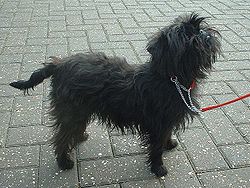
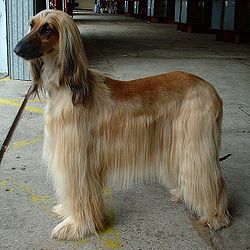

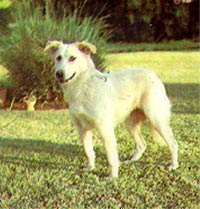
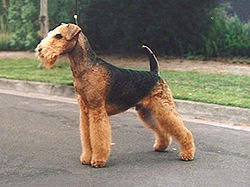
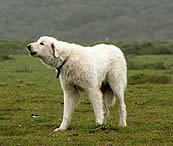
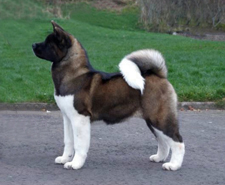
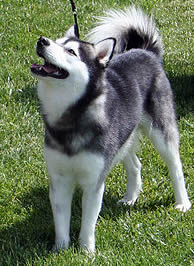
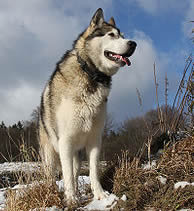
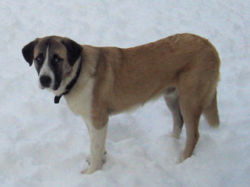
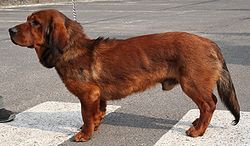
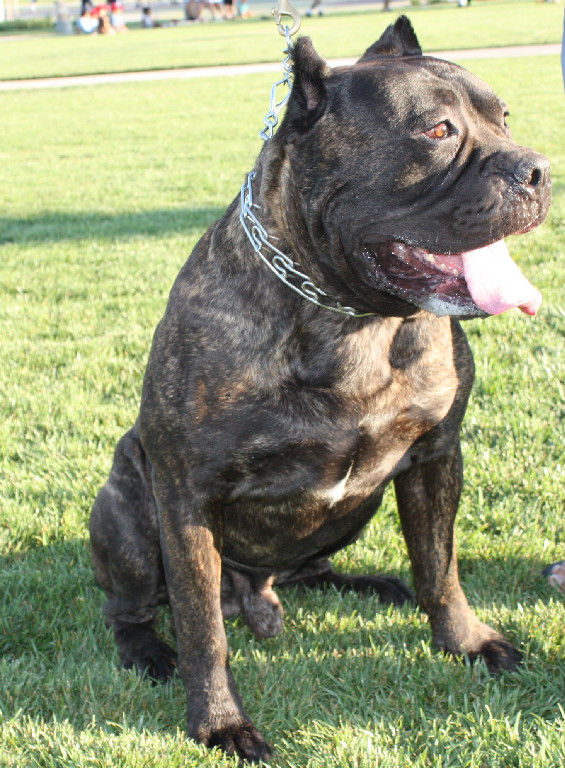
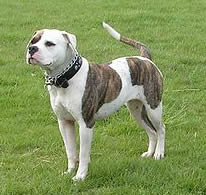
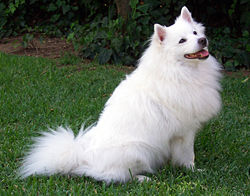
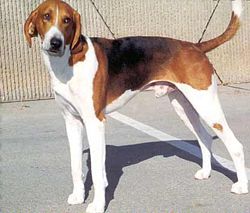
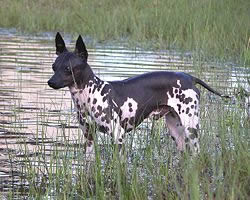
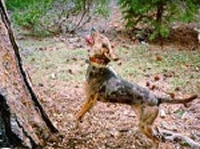

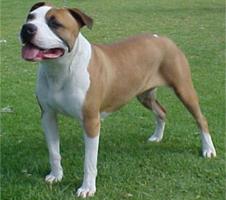
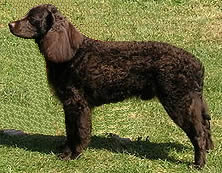
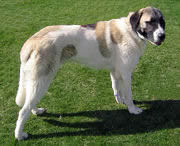
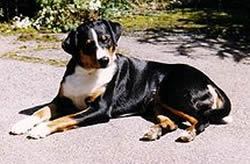
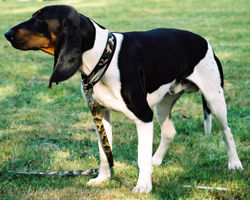
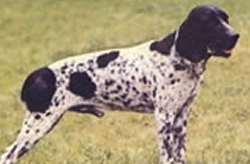
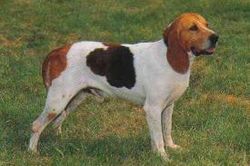
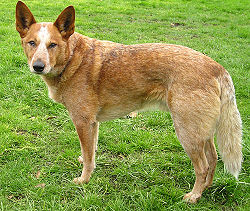
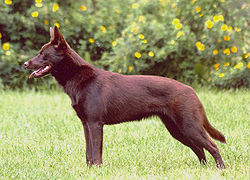
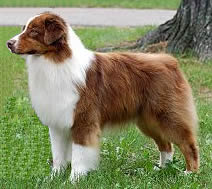
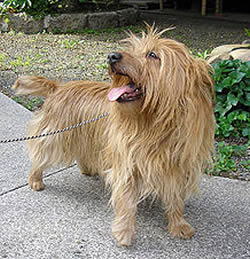
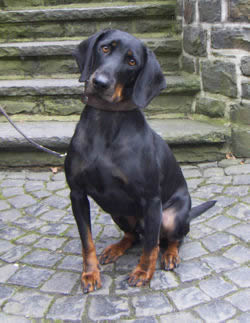
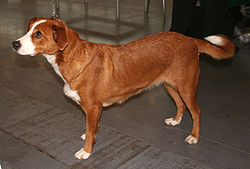
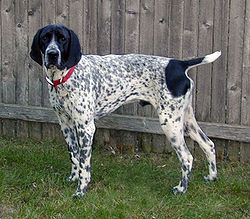
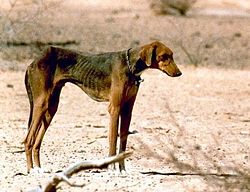
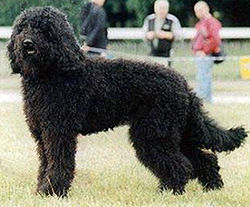

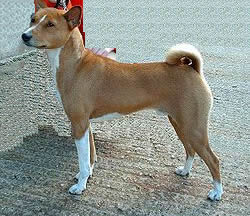
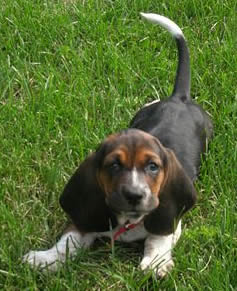

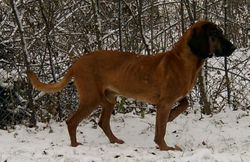
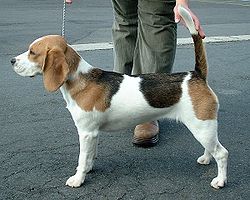
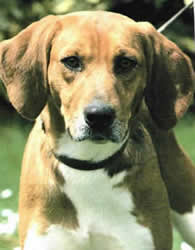
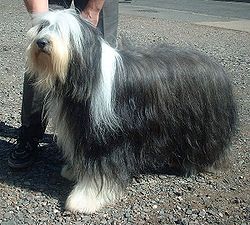
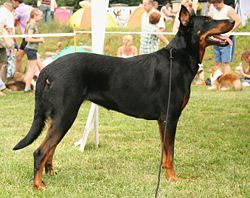
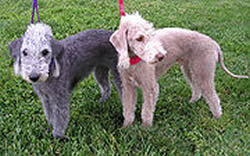
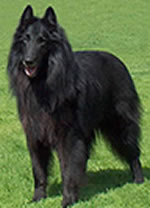
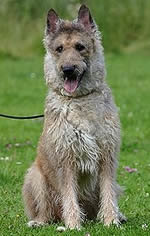
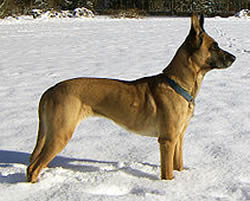
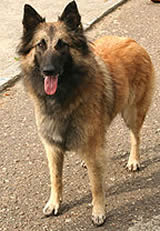
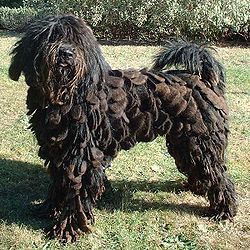
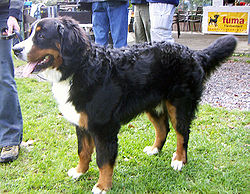
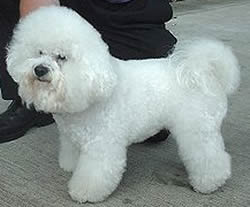

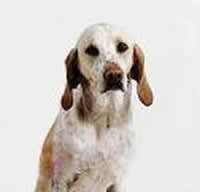
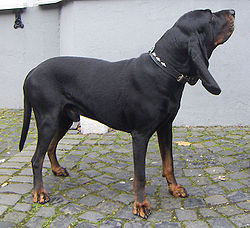
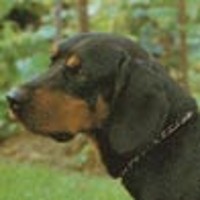
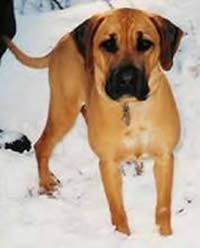
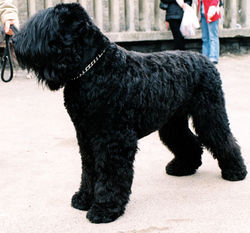
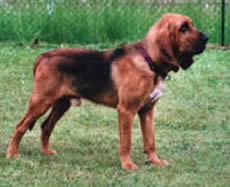
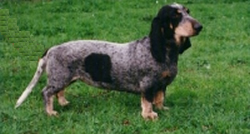

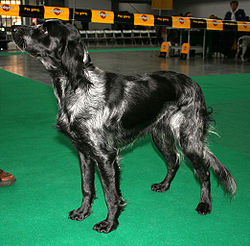
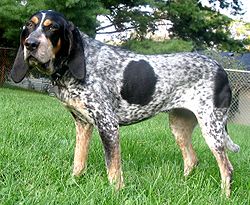
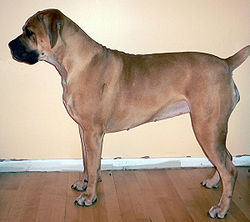
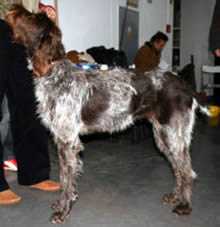
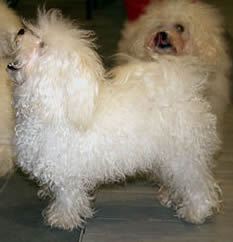
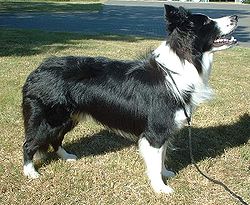
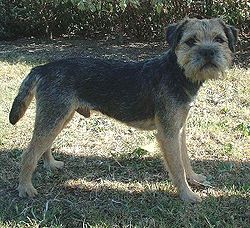
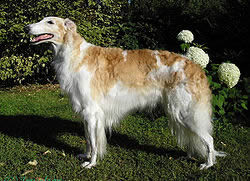
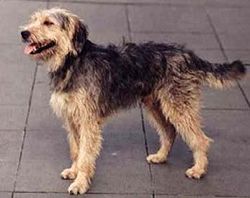
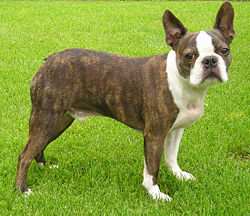
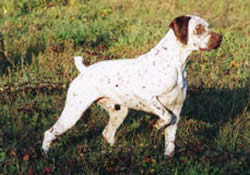
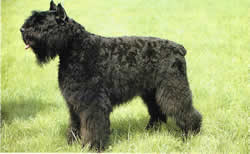
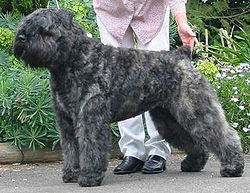
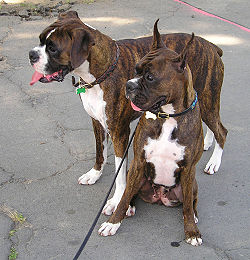
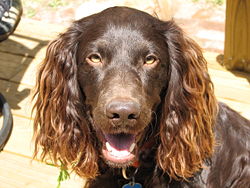
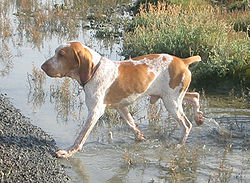
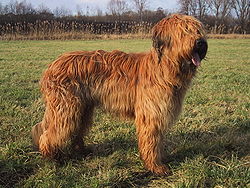
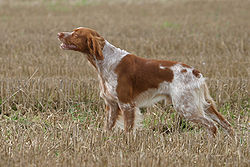
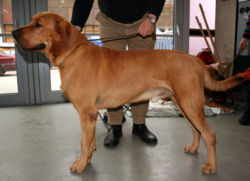
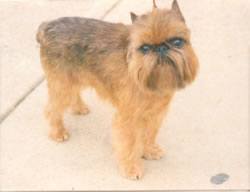
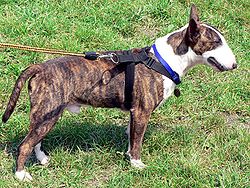
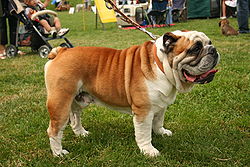
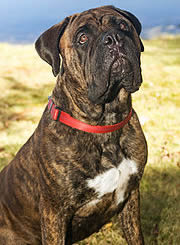
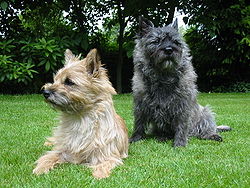
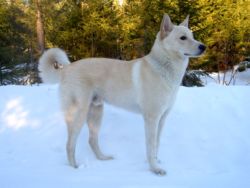
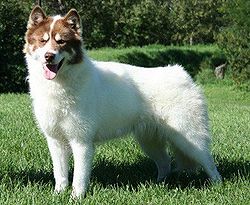
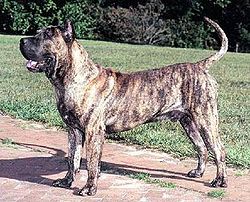
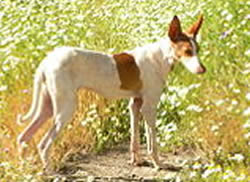
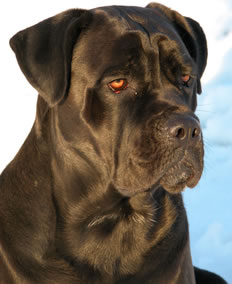
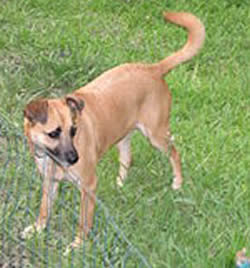
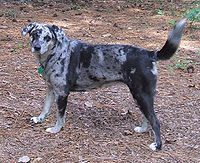
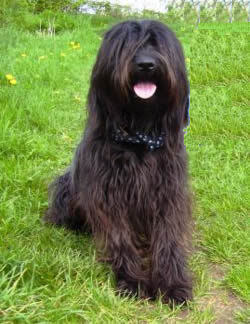
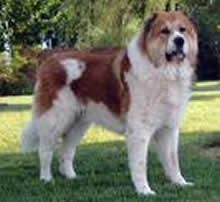
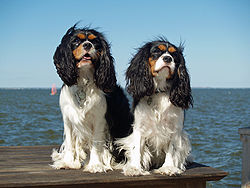
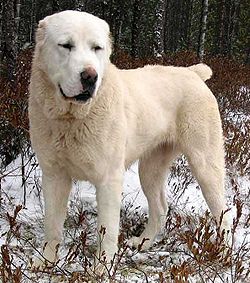
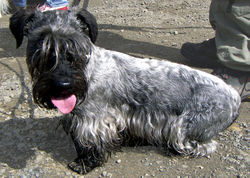
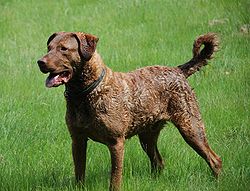
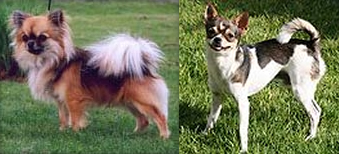
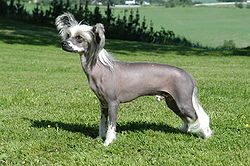
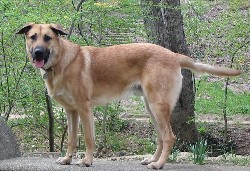
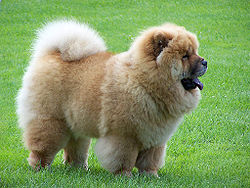
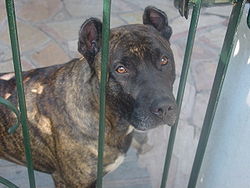
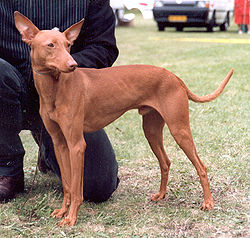
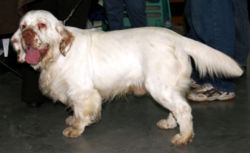
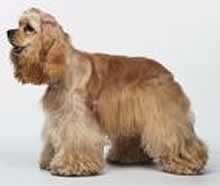
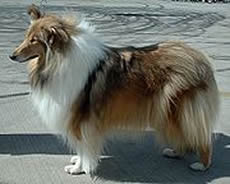
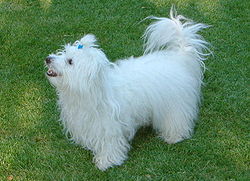
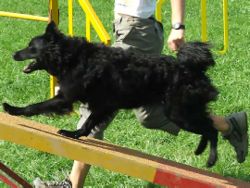
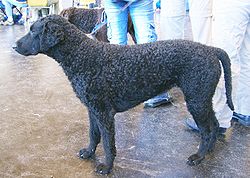
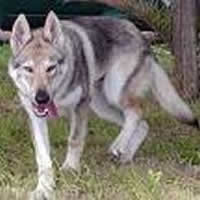
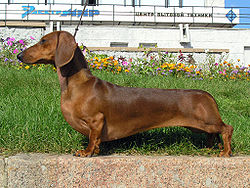
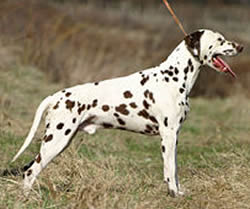
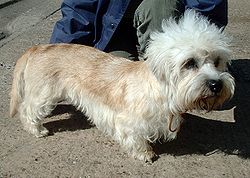
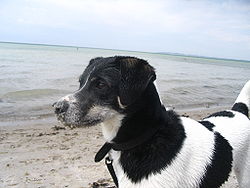
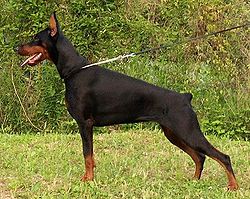
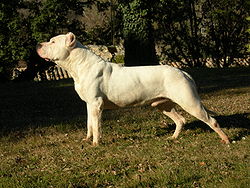
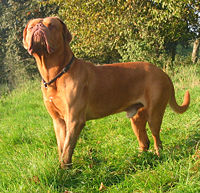
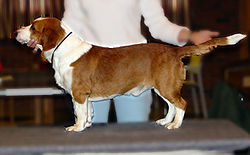
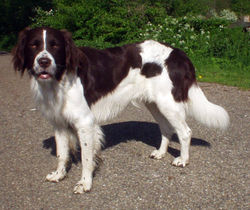
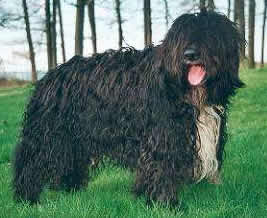
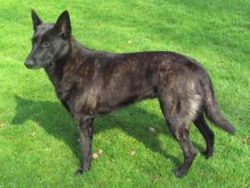
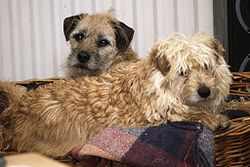
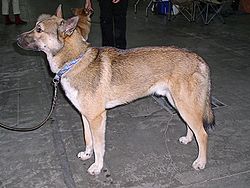
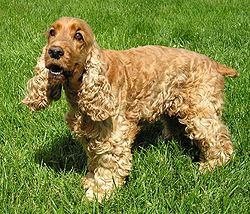
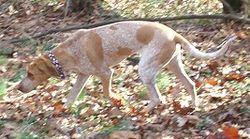
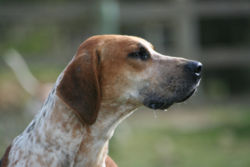
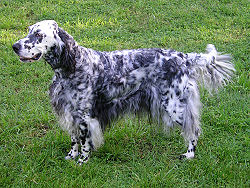
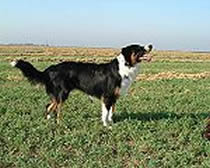
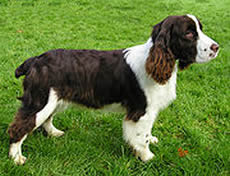
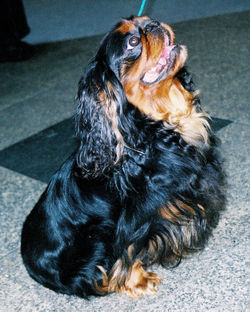
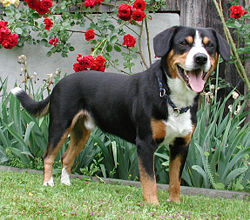
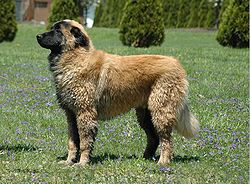
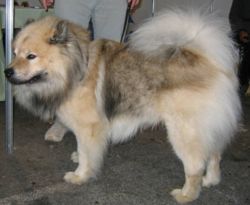
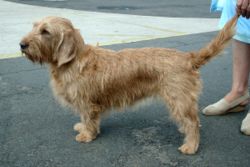
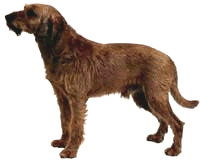
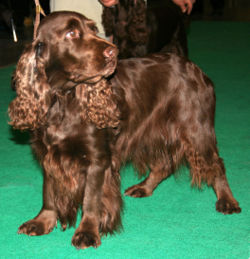

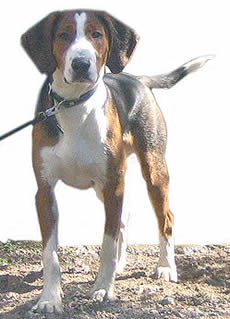
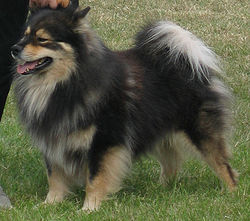
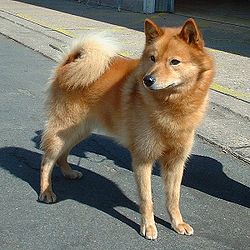
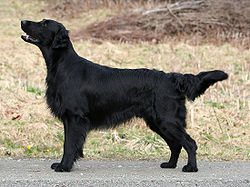
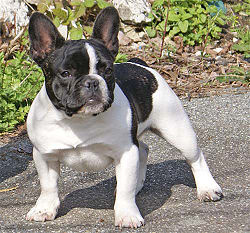
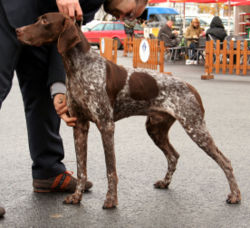
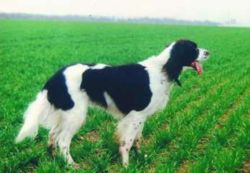
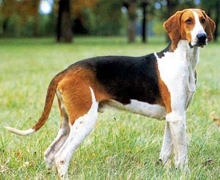
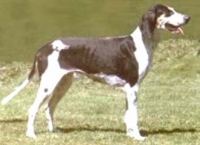
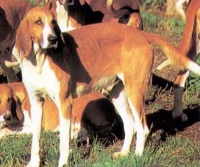
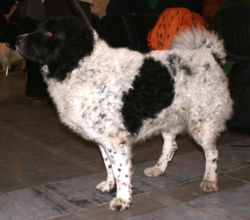
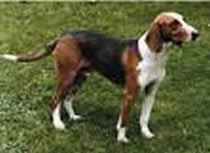
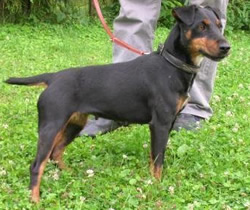
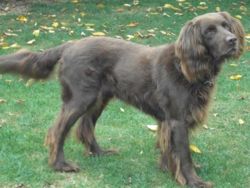
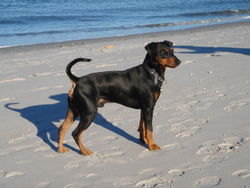
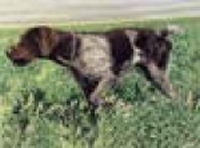
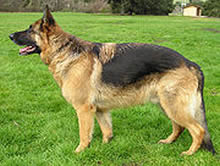
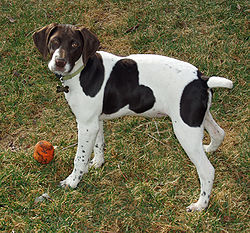
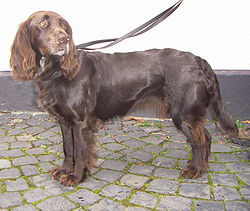
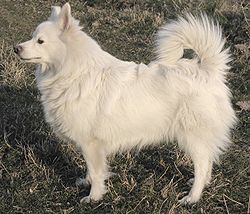
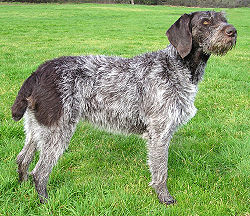
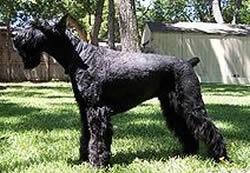
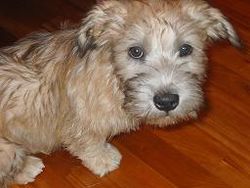
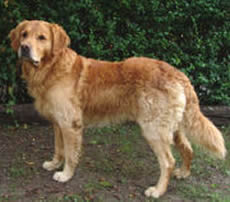
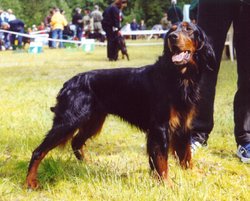
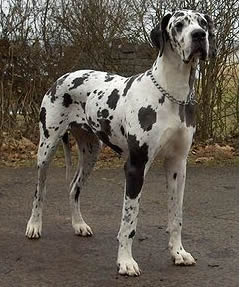
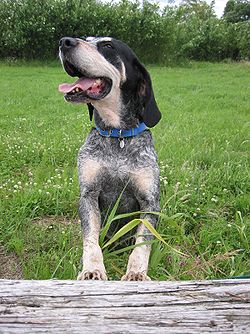
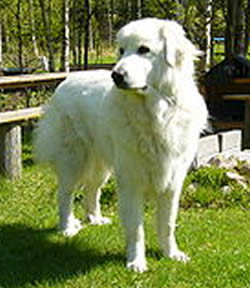
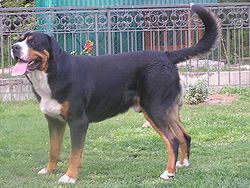
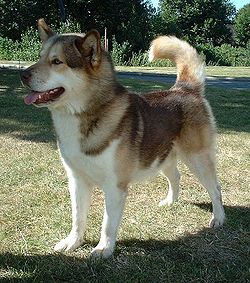
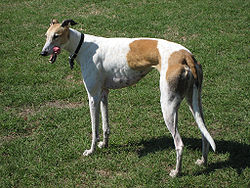
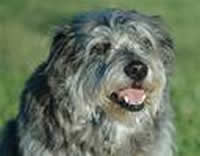
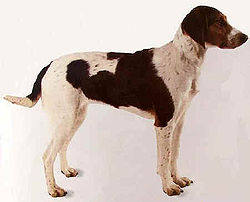
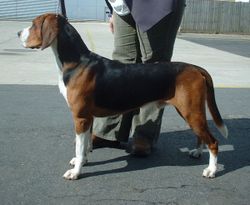
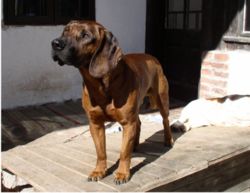
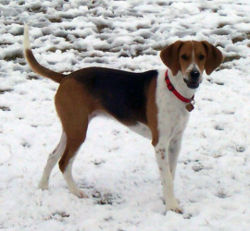
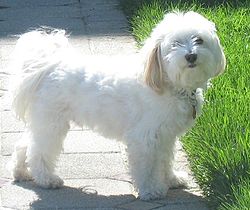
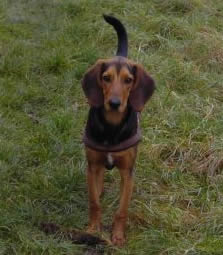
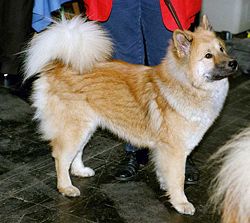
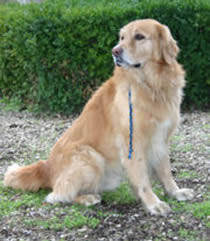
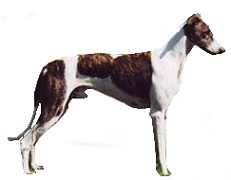
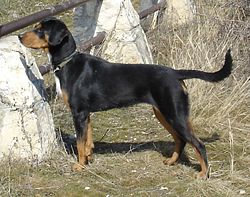
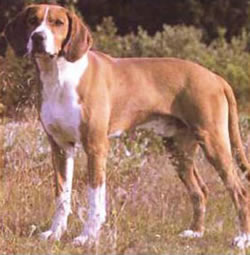
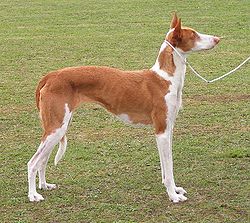
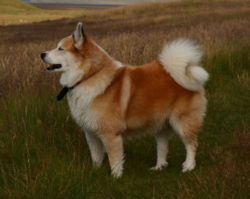
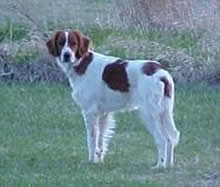
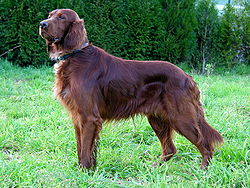
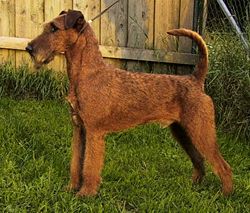
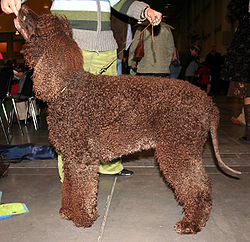
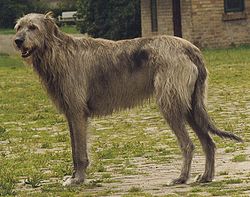
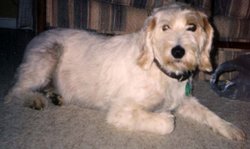
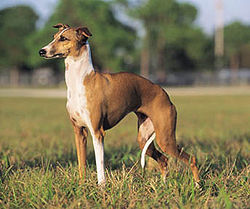
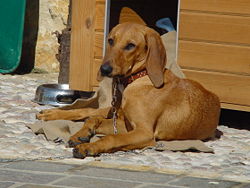
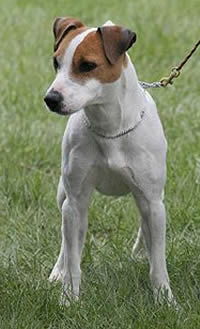
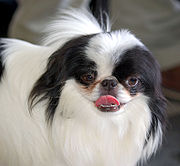
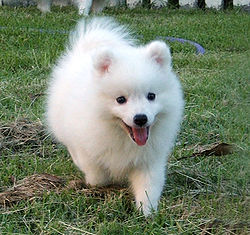
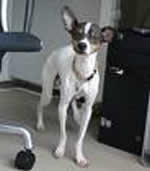
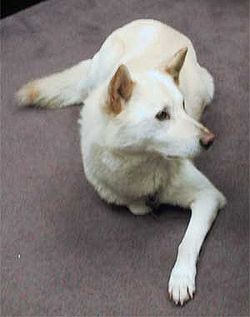
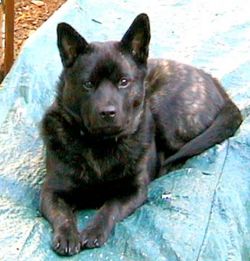

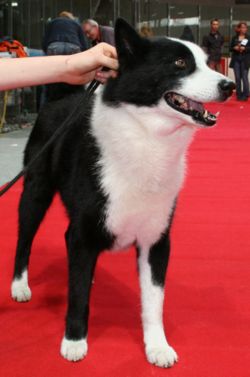
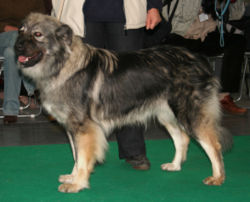
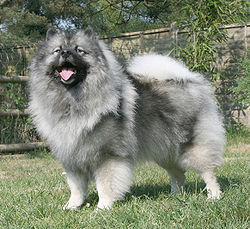
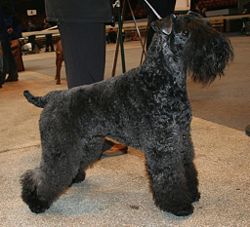
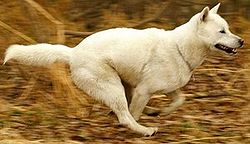
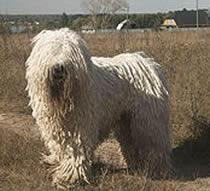
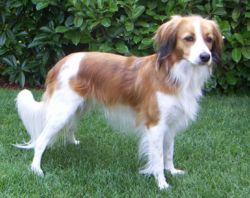
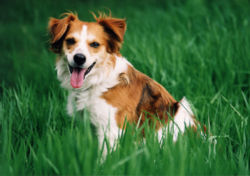
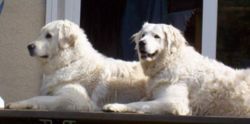

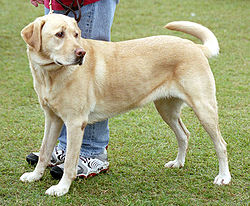
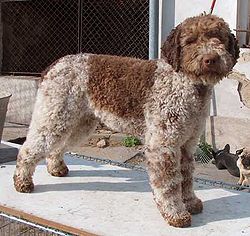
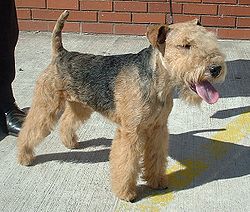
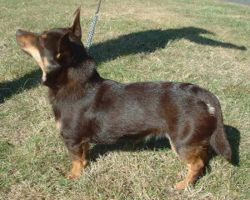
.jpg)
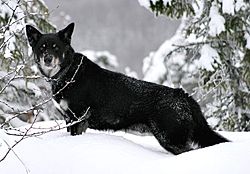
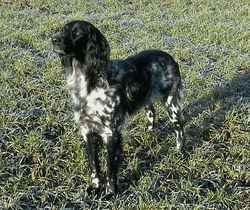
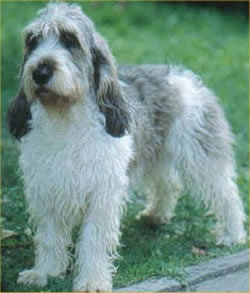
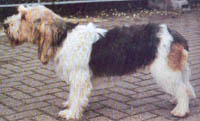
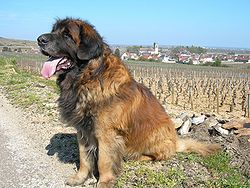
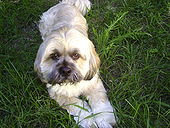
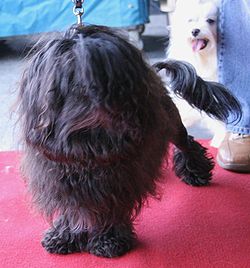

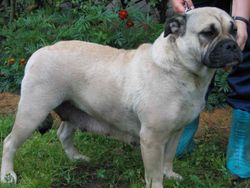
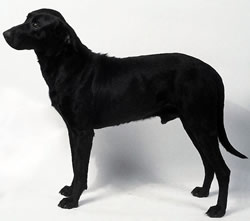
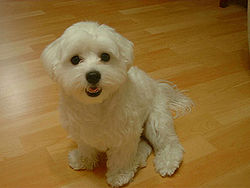
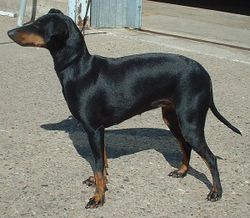
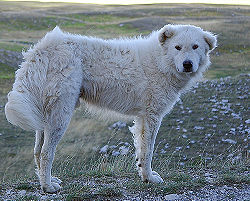
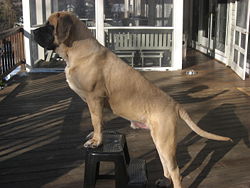
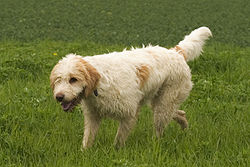
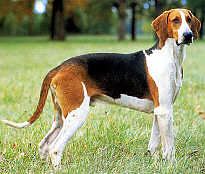

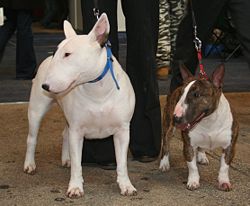
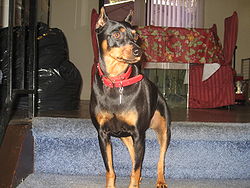
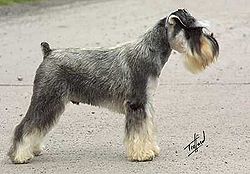
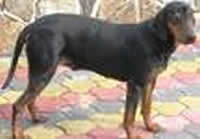
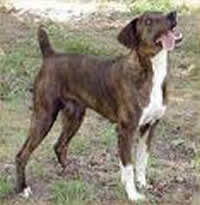
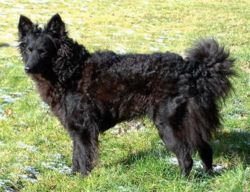

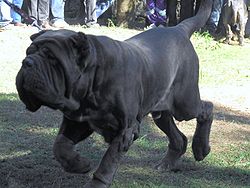
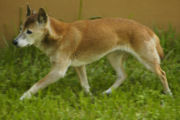
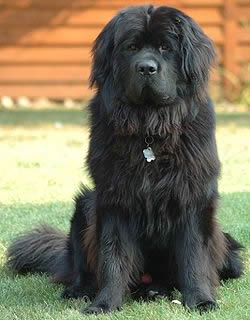
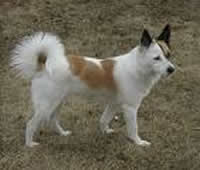
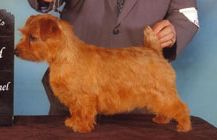
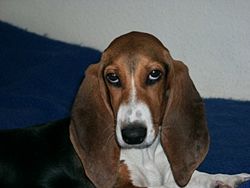
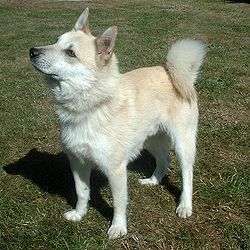
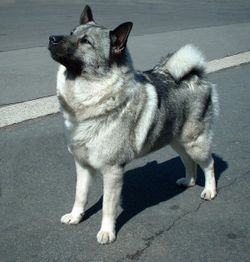
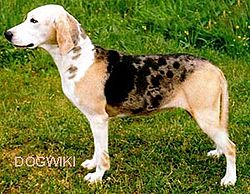
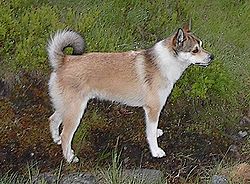
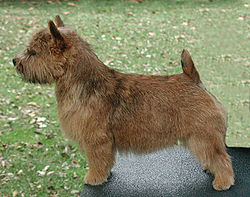
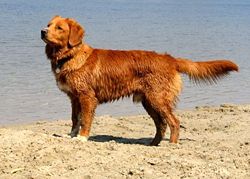
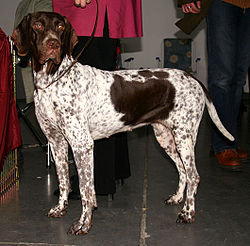

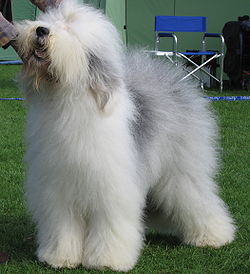
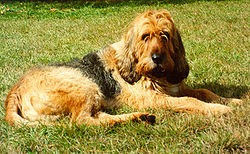
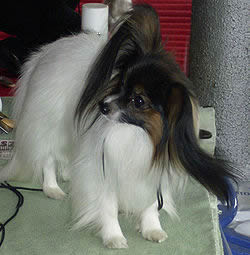
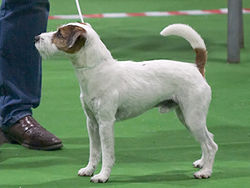
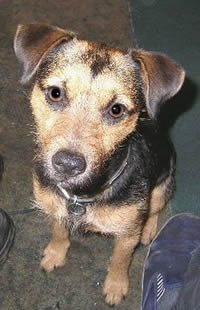
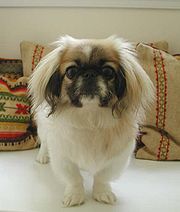
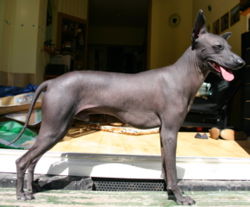
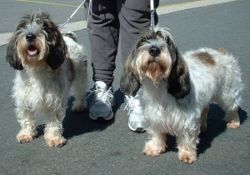
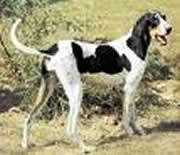
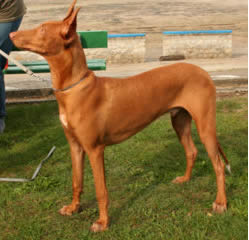
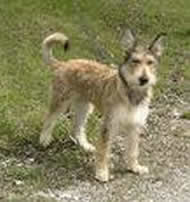
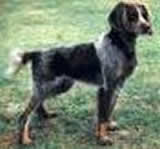
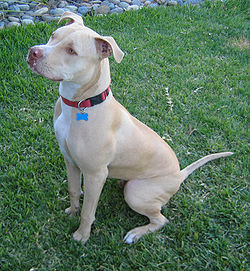
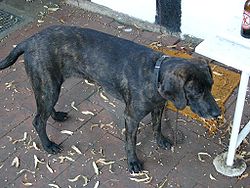
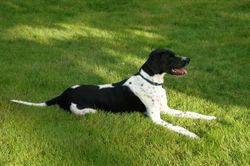
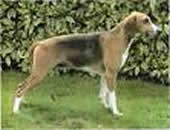
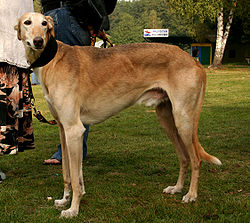
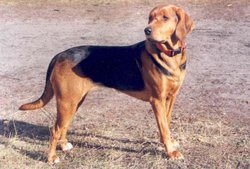
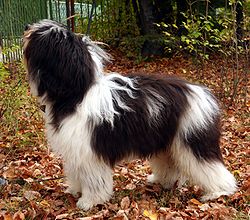
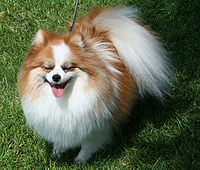
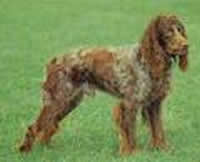
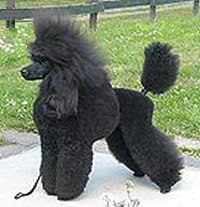
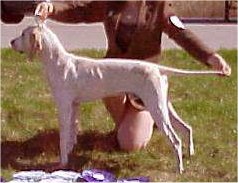
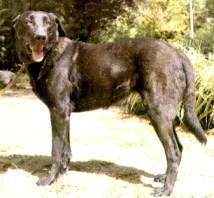
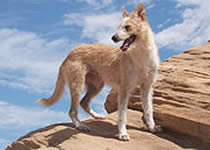
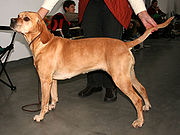
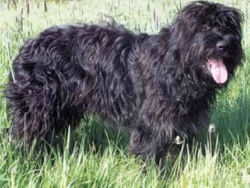
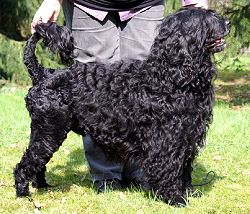
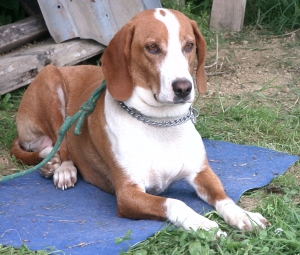

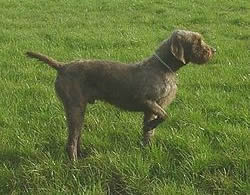
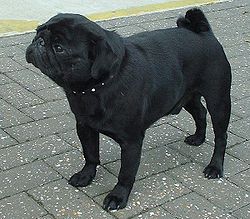
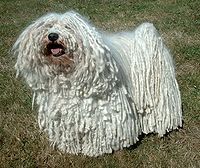
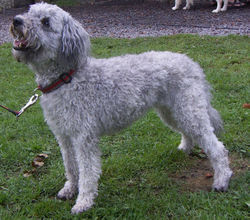
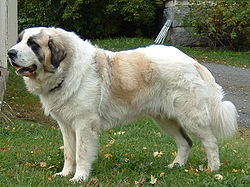
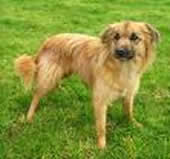
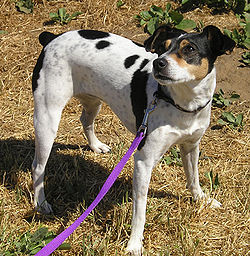
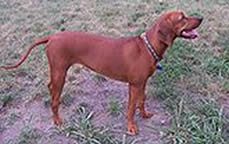
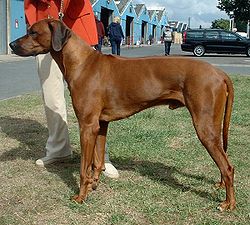
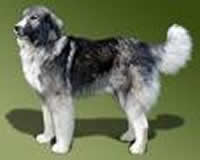
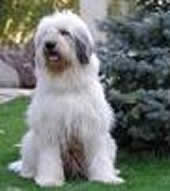
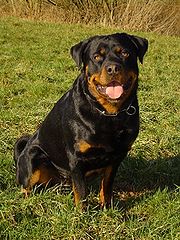
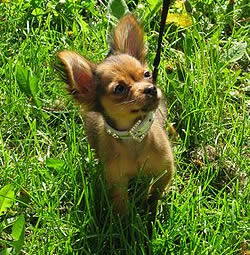
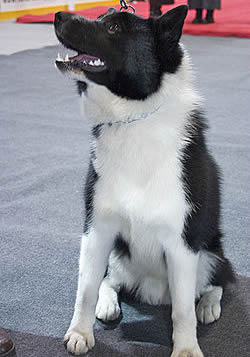
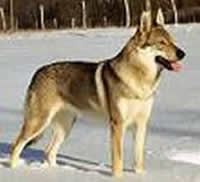
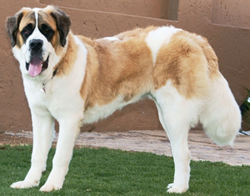
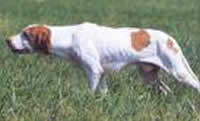
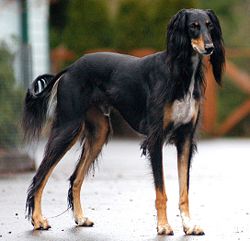
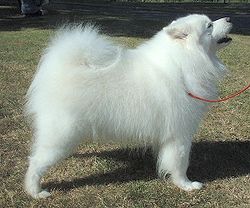
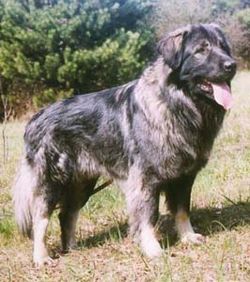
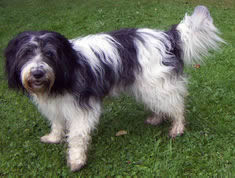
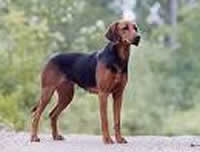
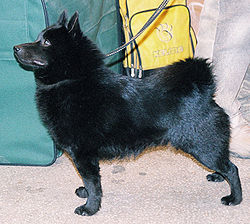
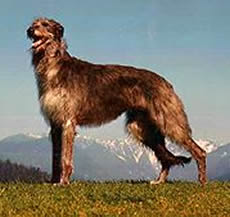
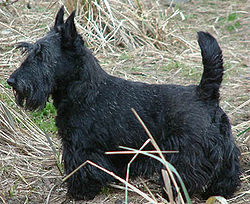
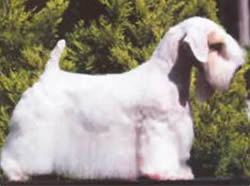
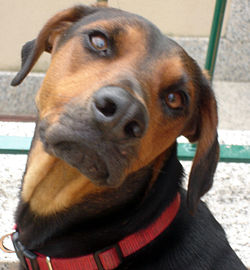
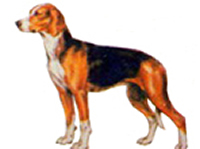
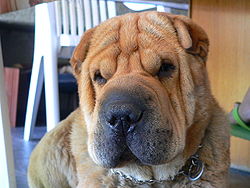
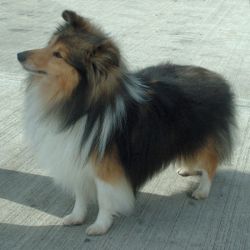
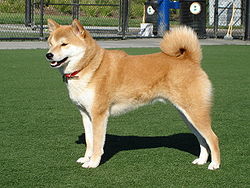
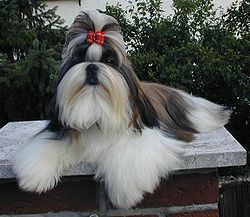
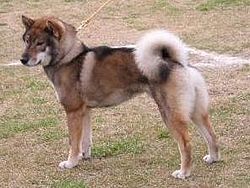

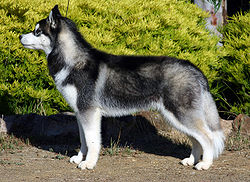
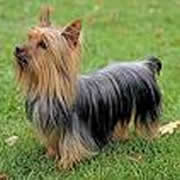
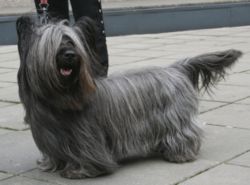
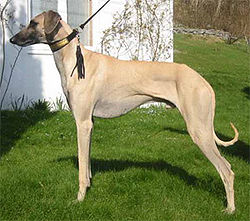
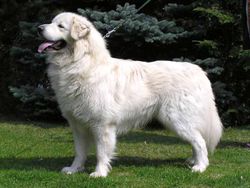
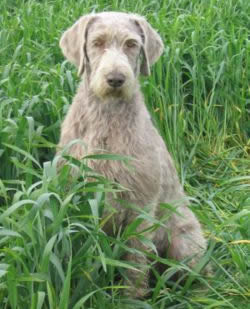
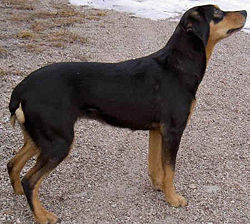
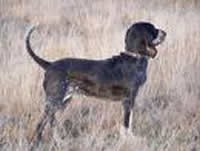
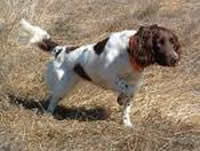
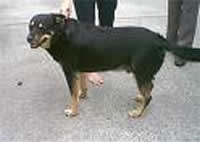
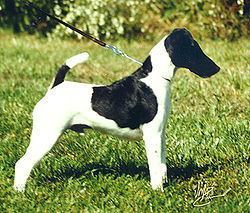
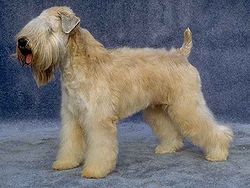
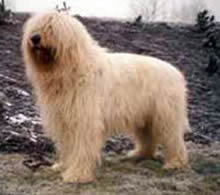
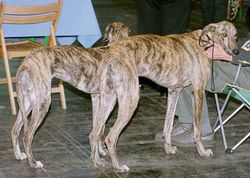
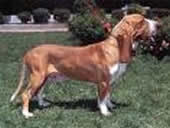
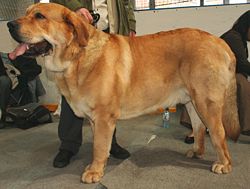
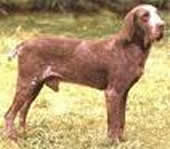
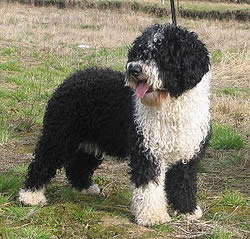
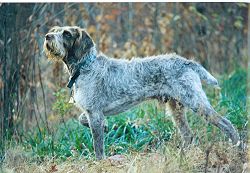
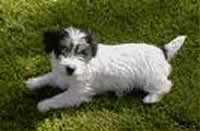
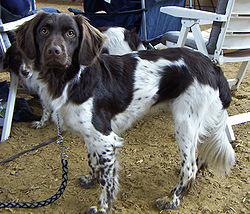
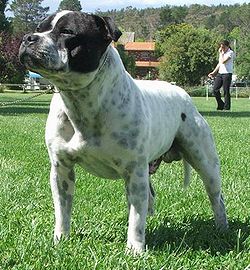
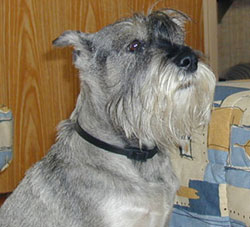
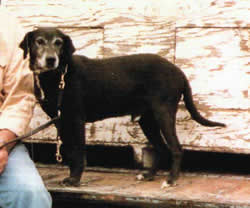
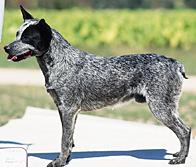
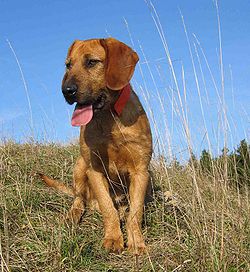
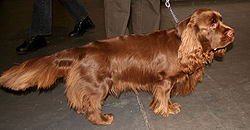
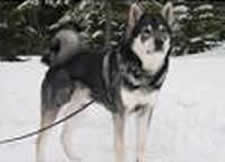
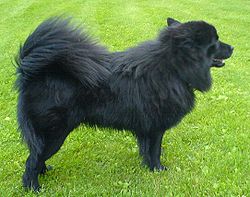
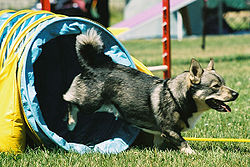
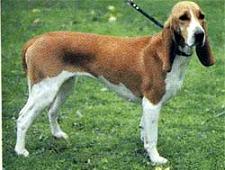
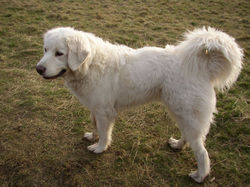
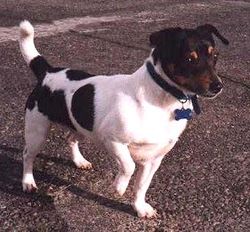

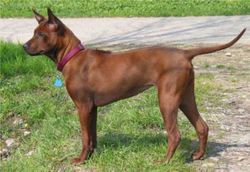
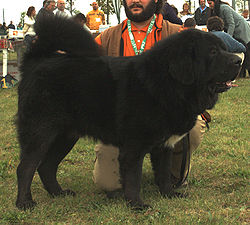
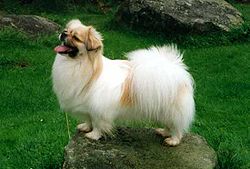
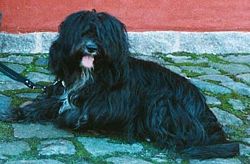
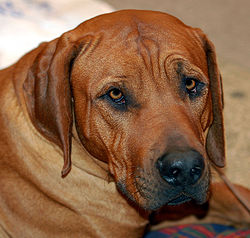
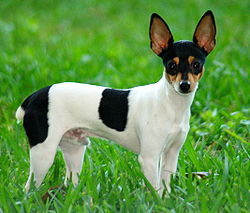
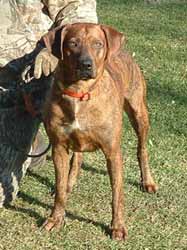
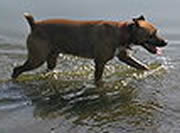
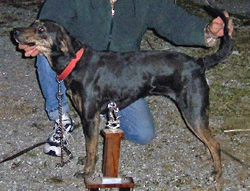
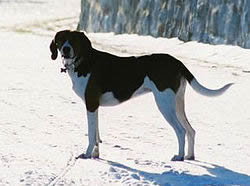
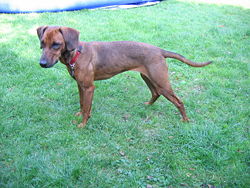
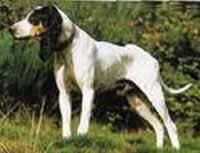
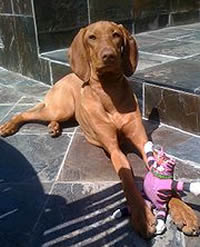
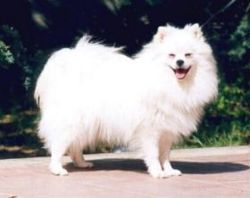
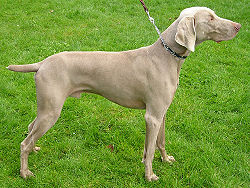
.jpg)
.jpg)
